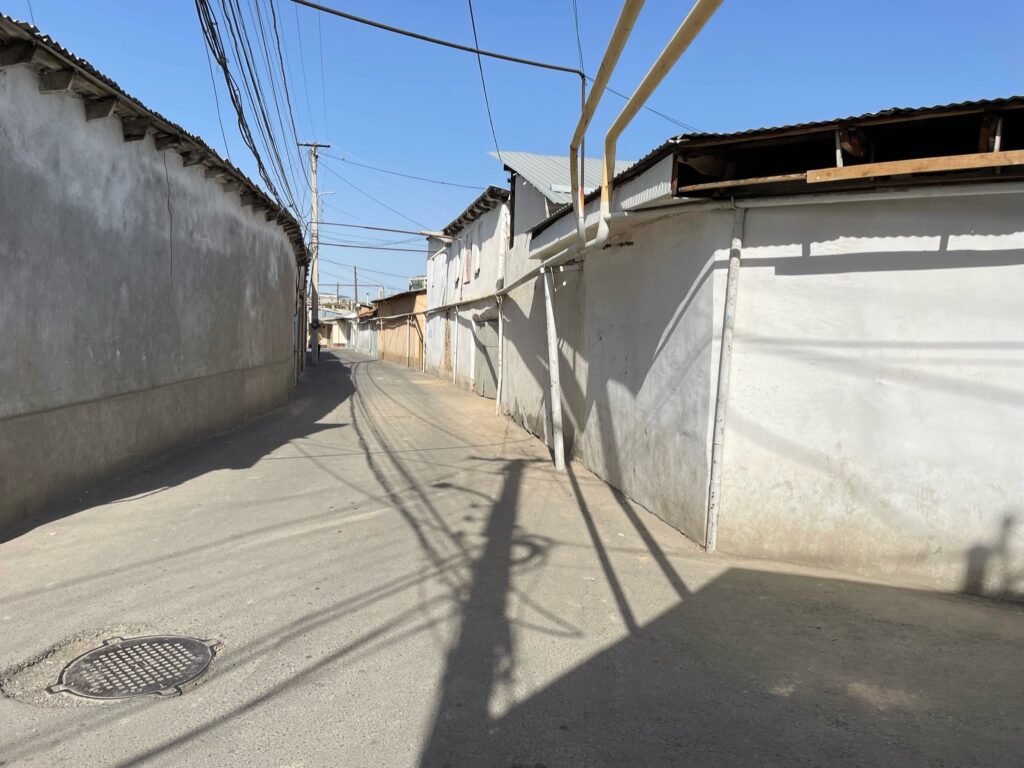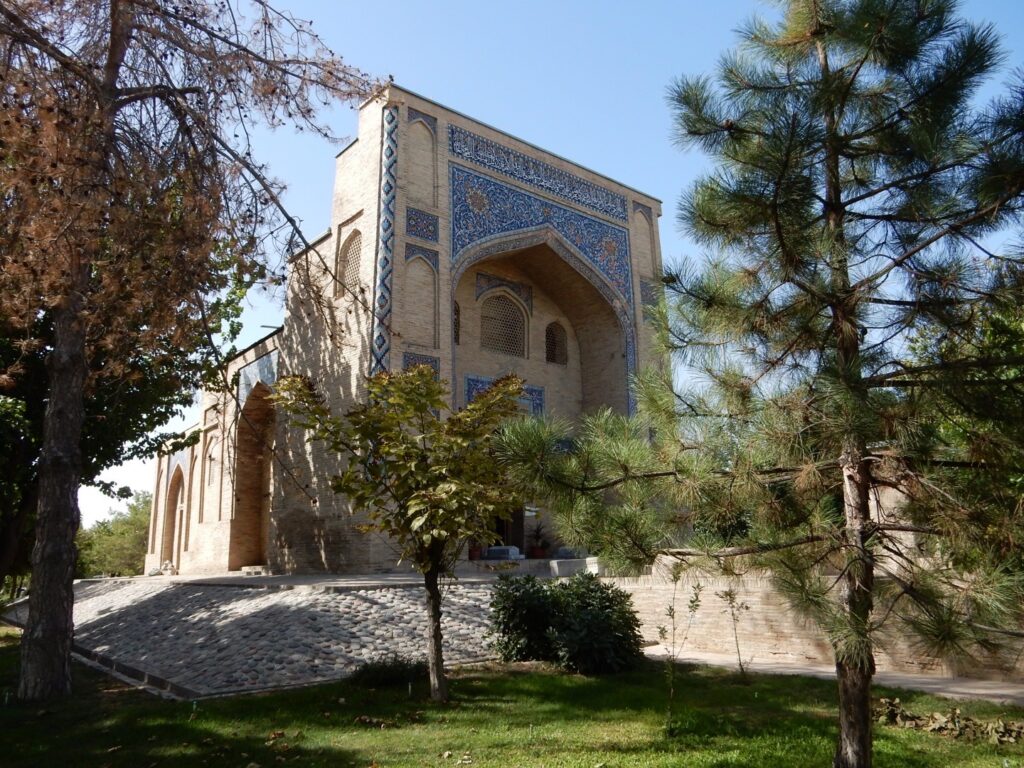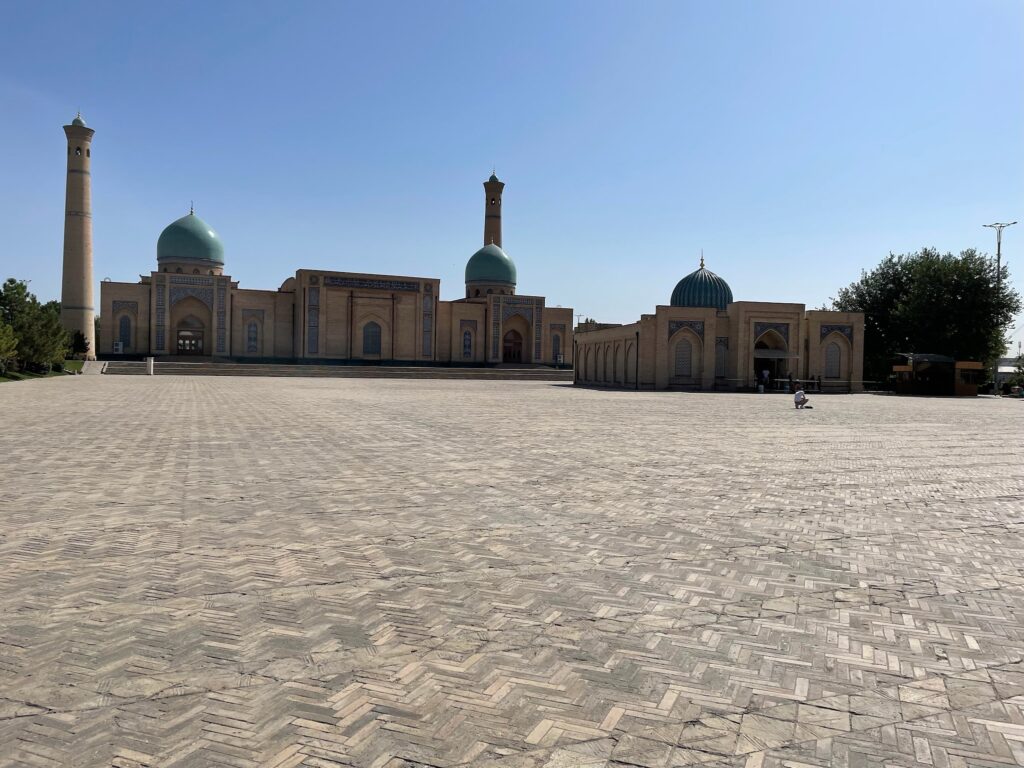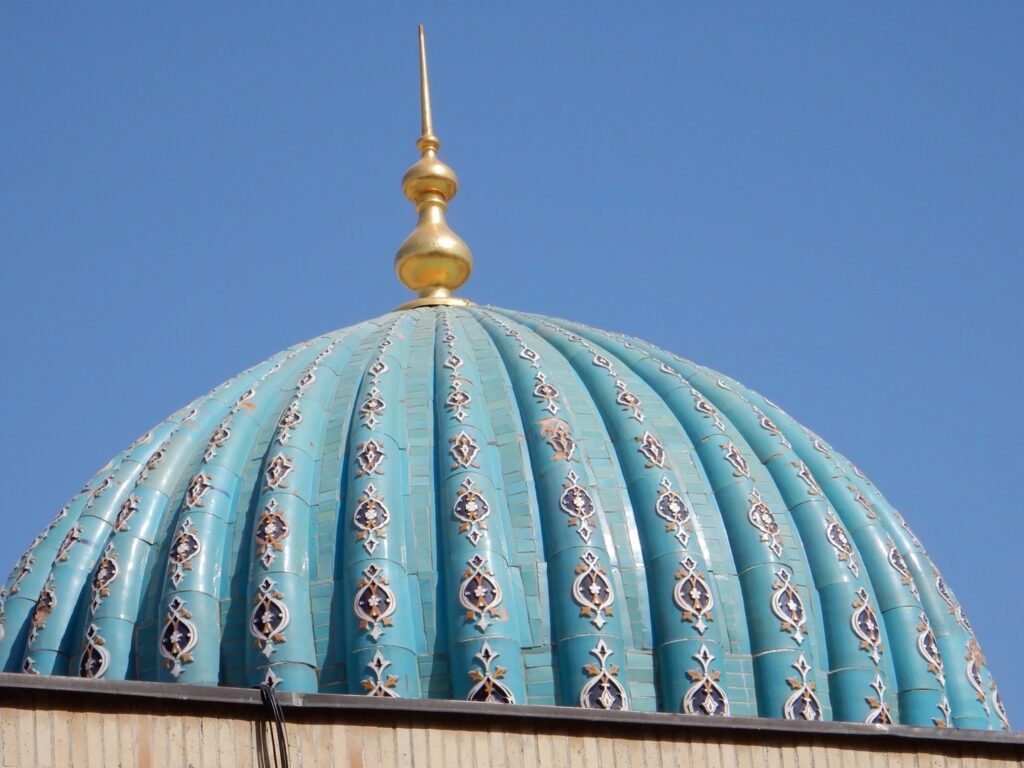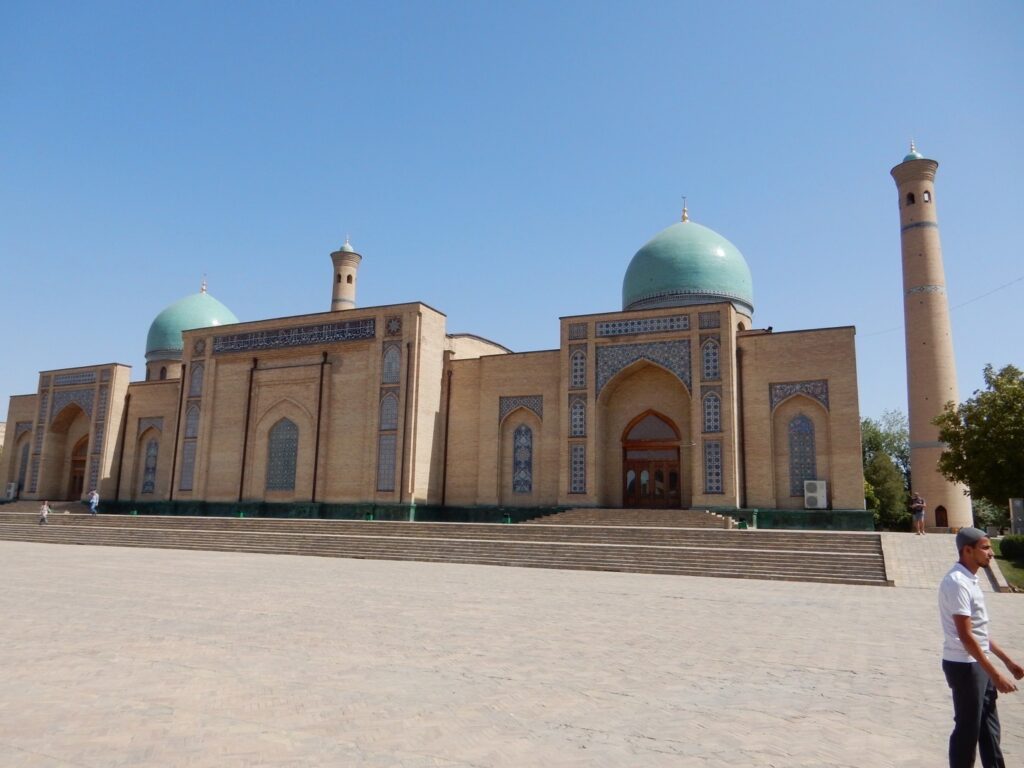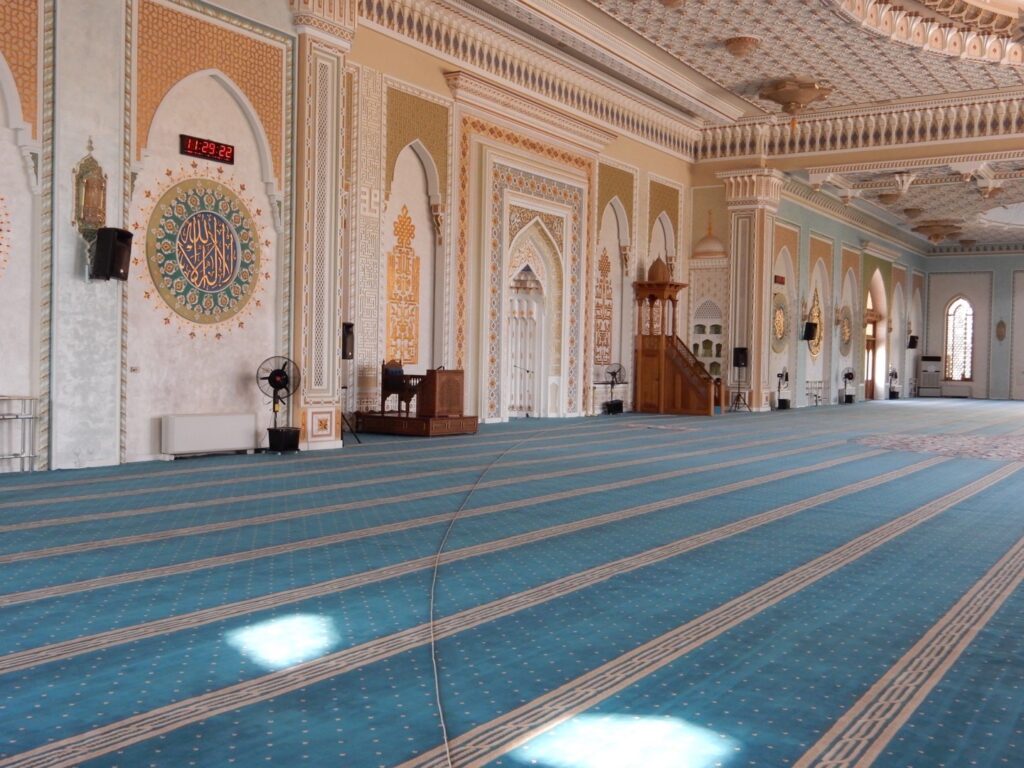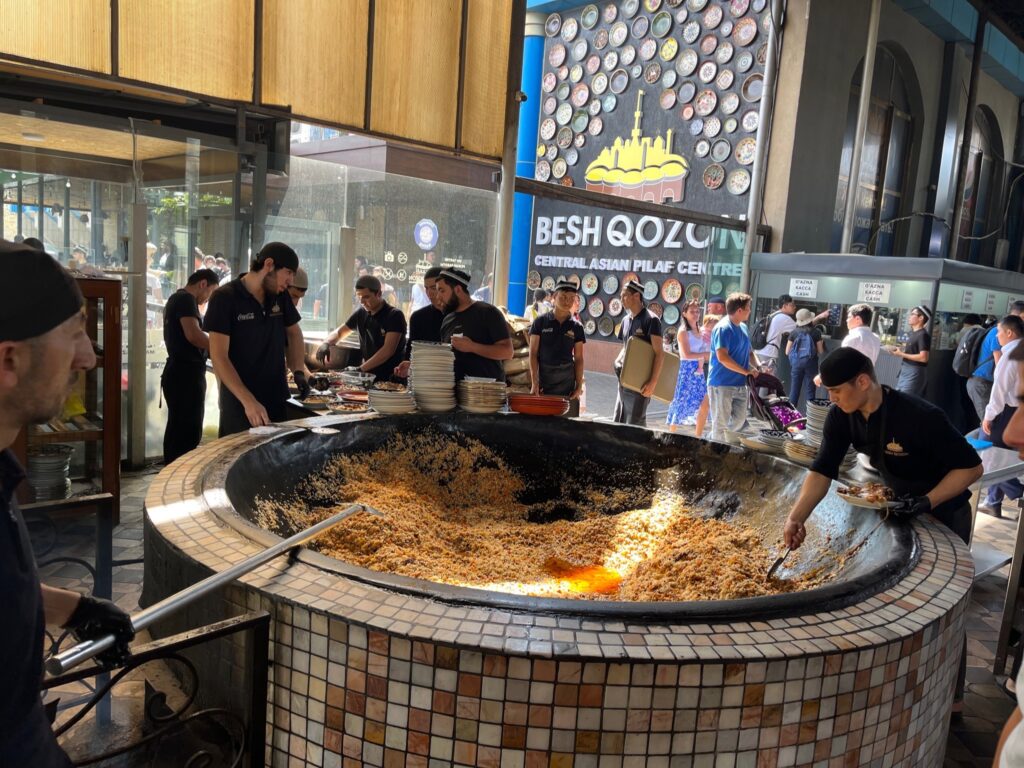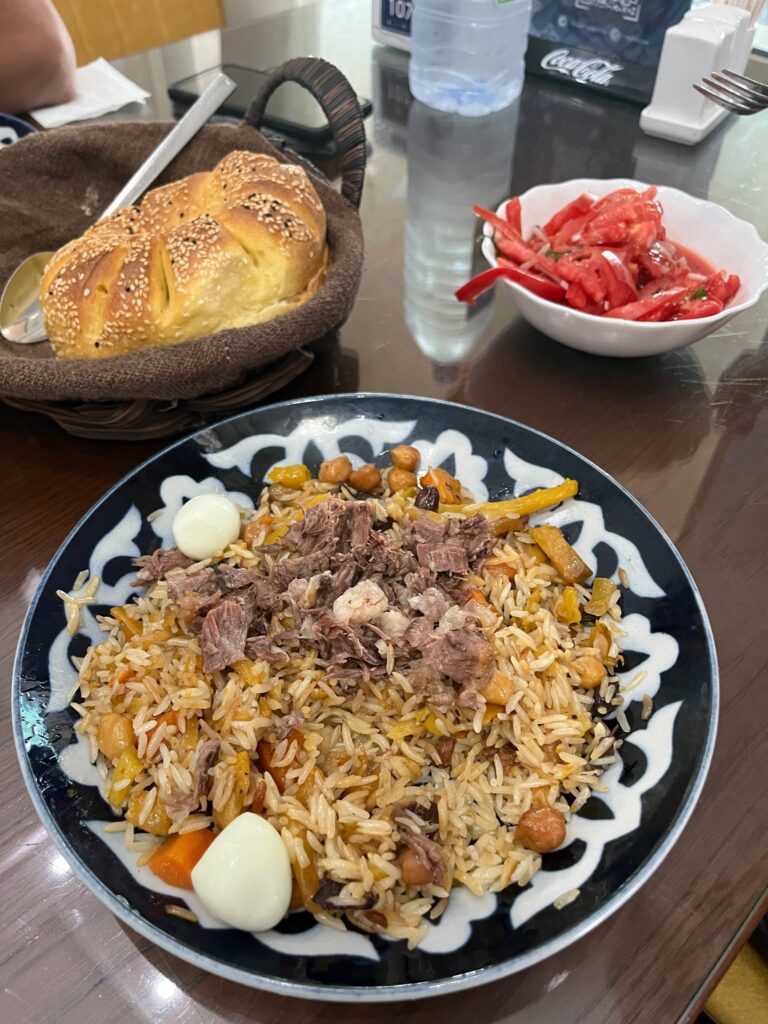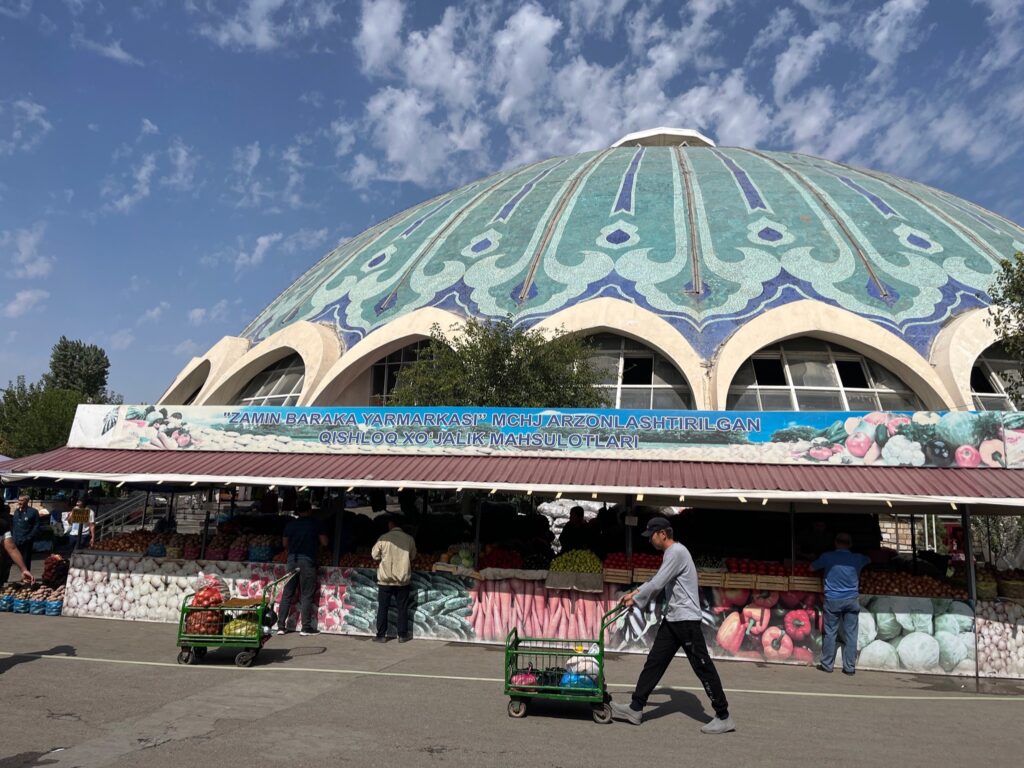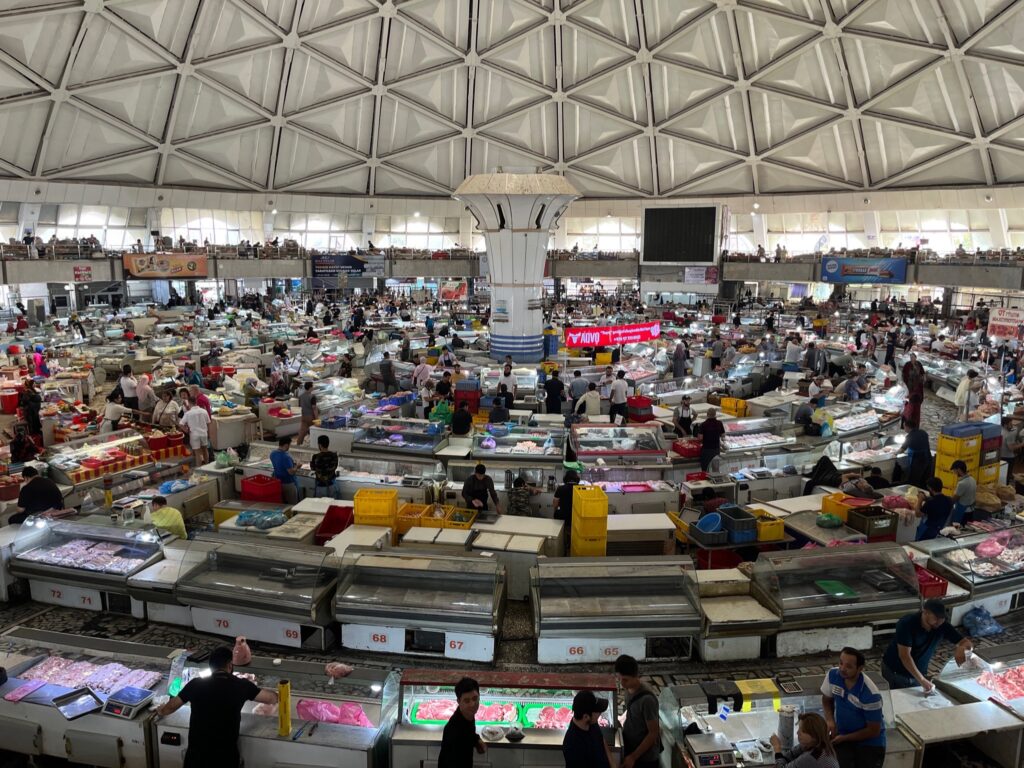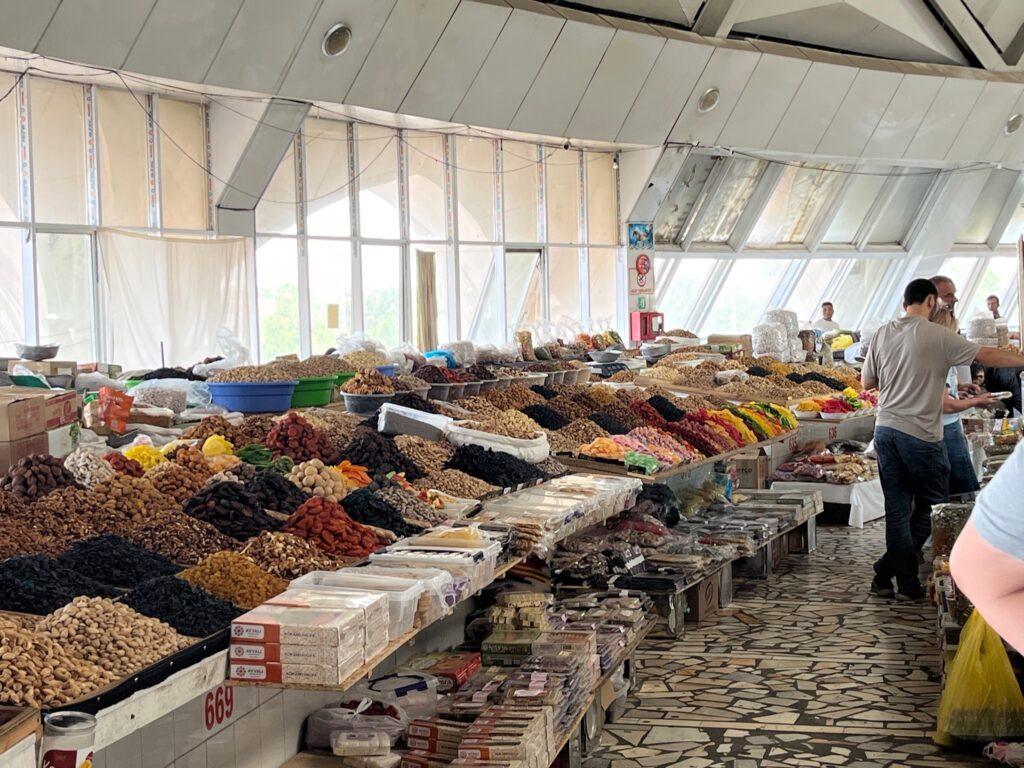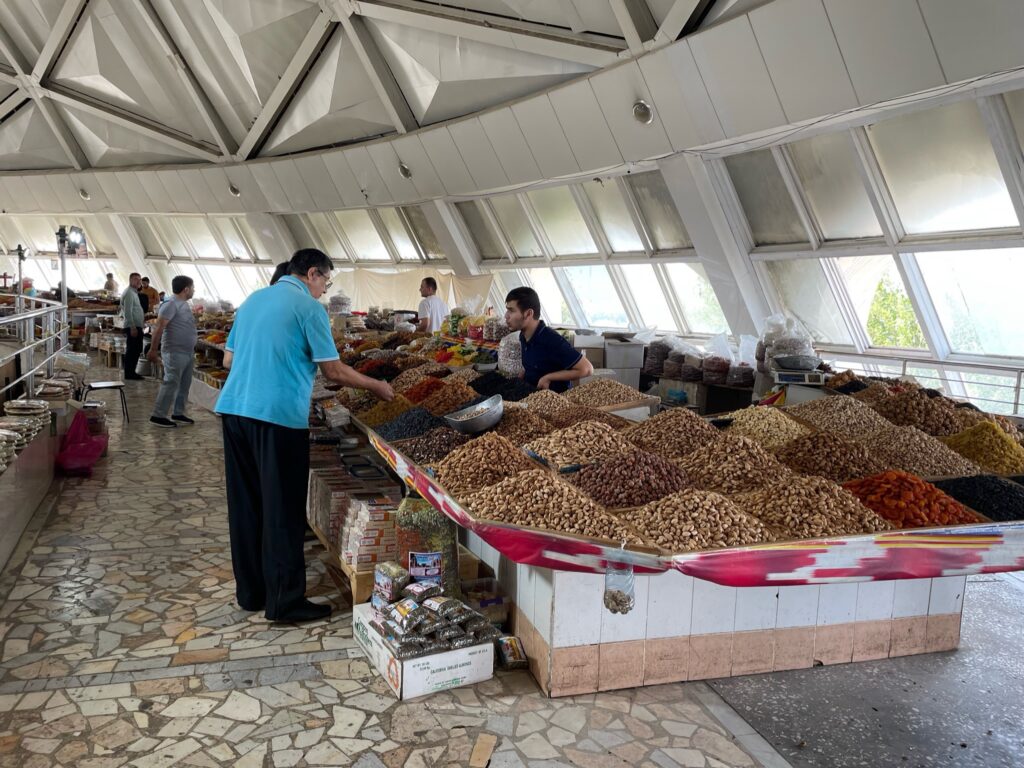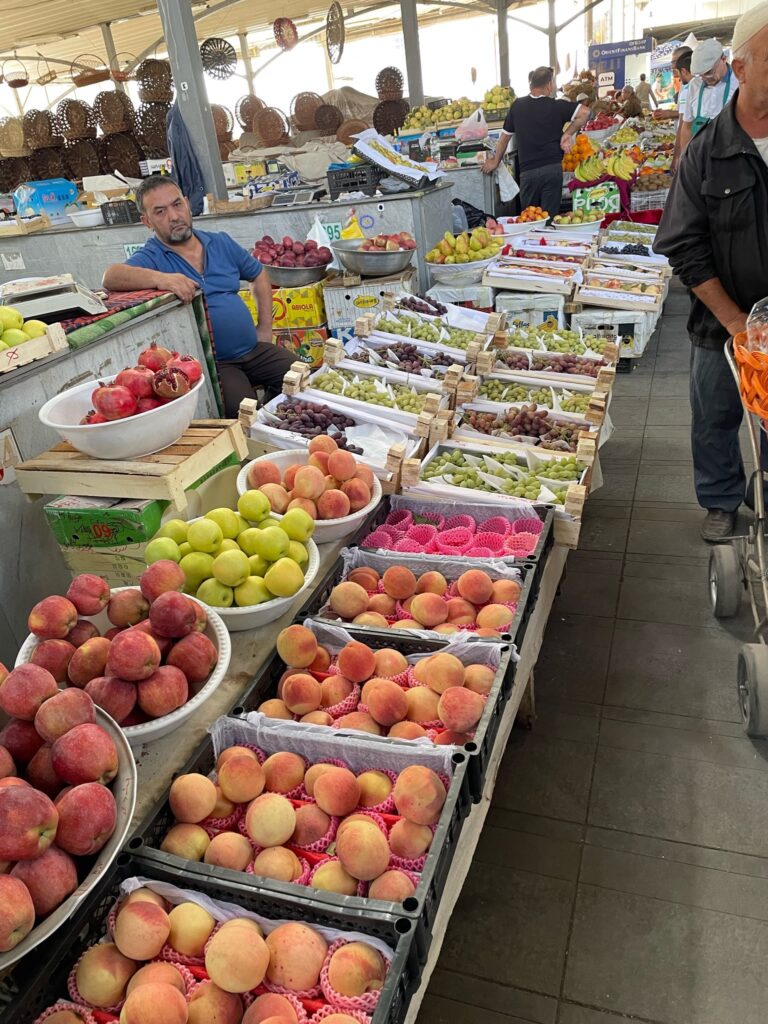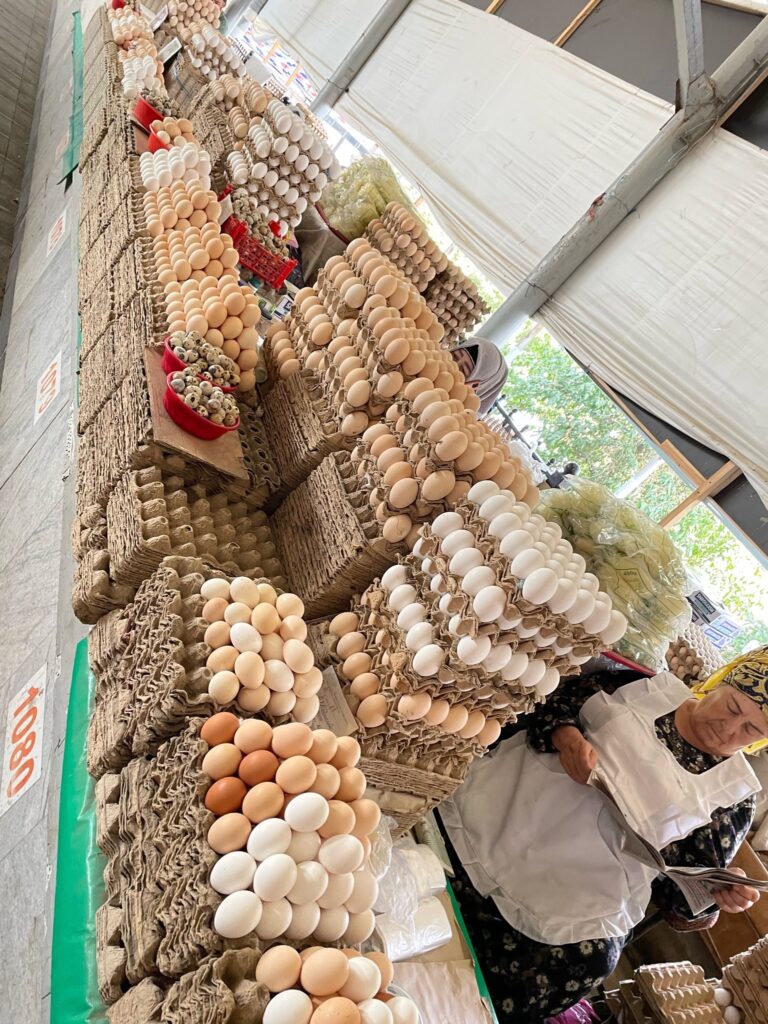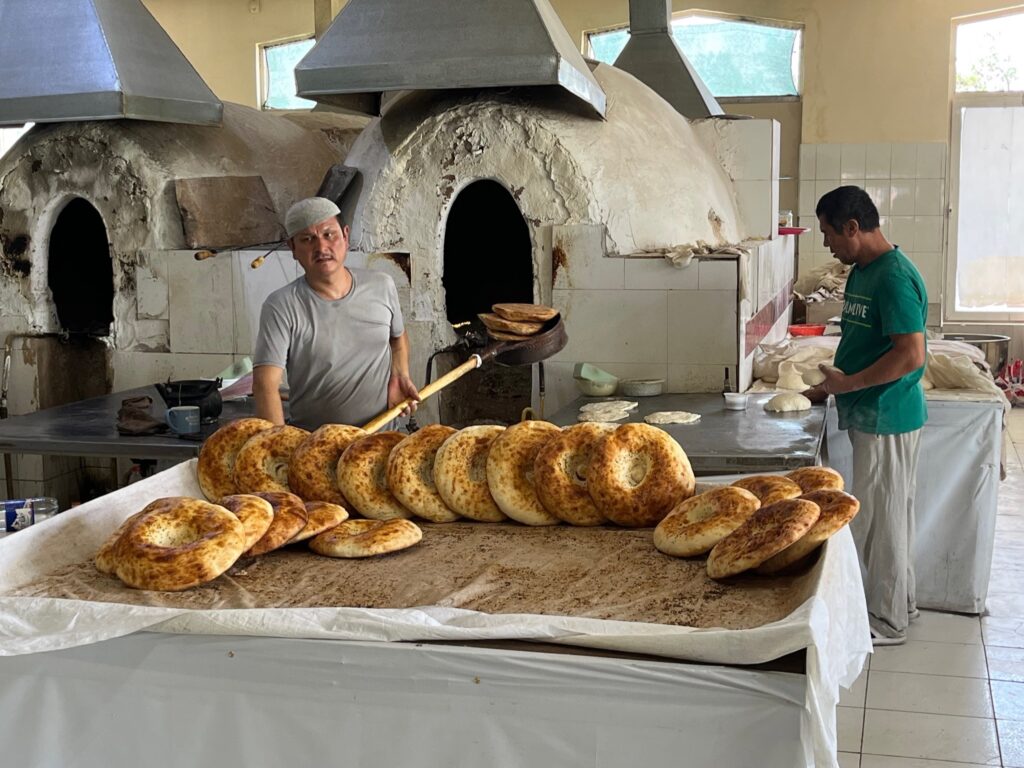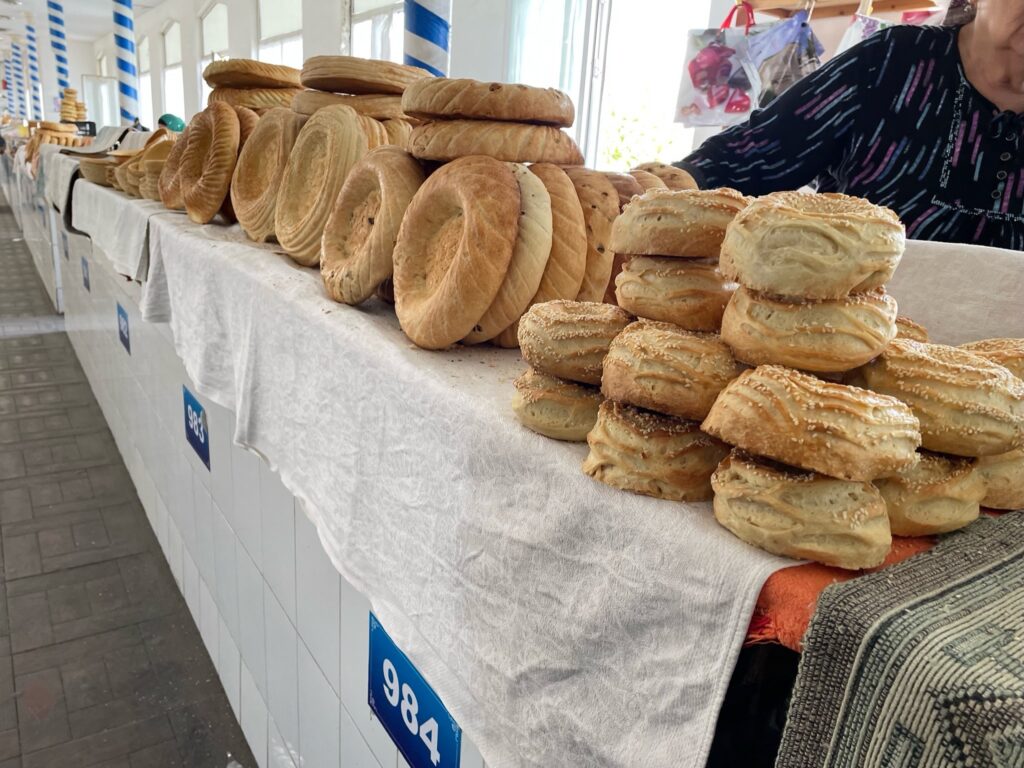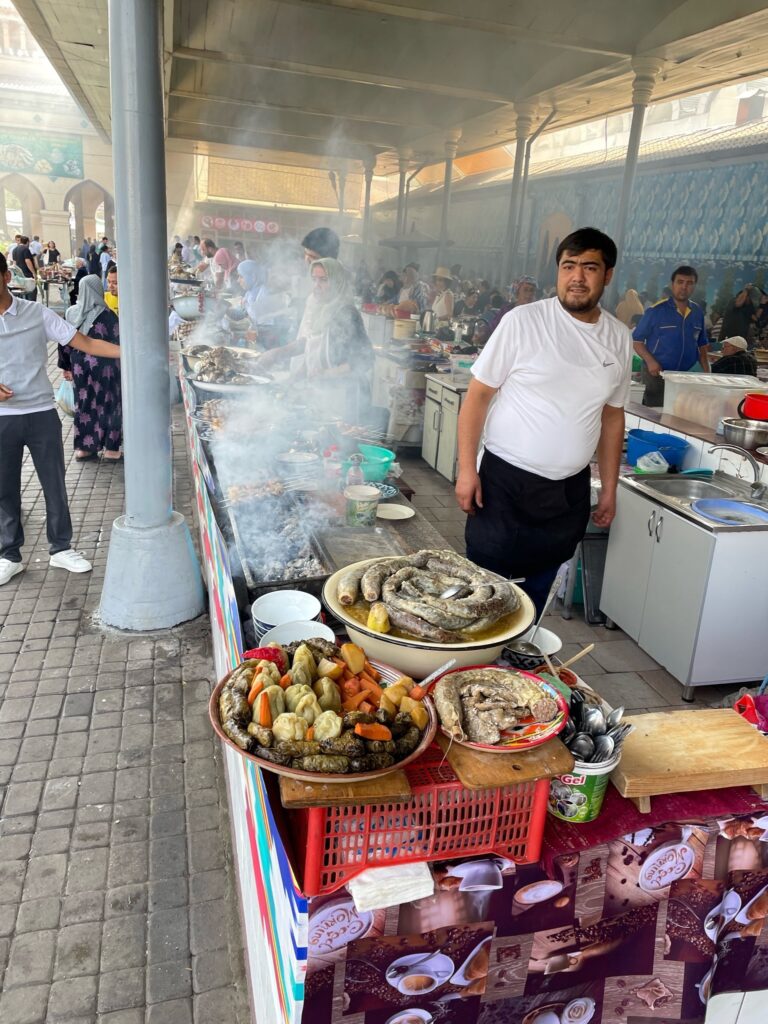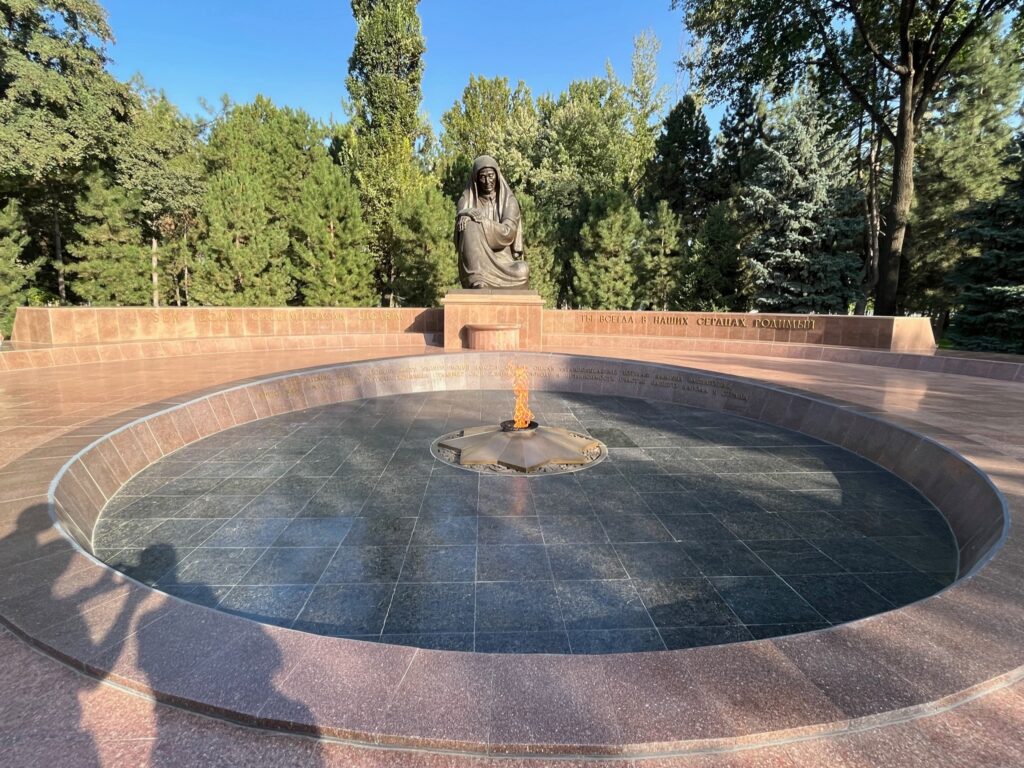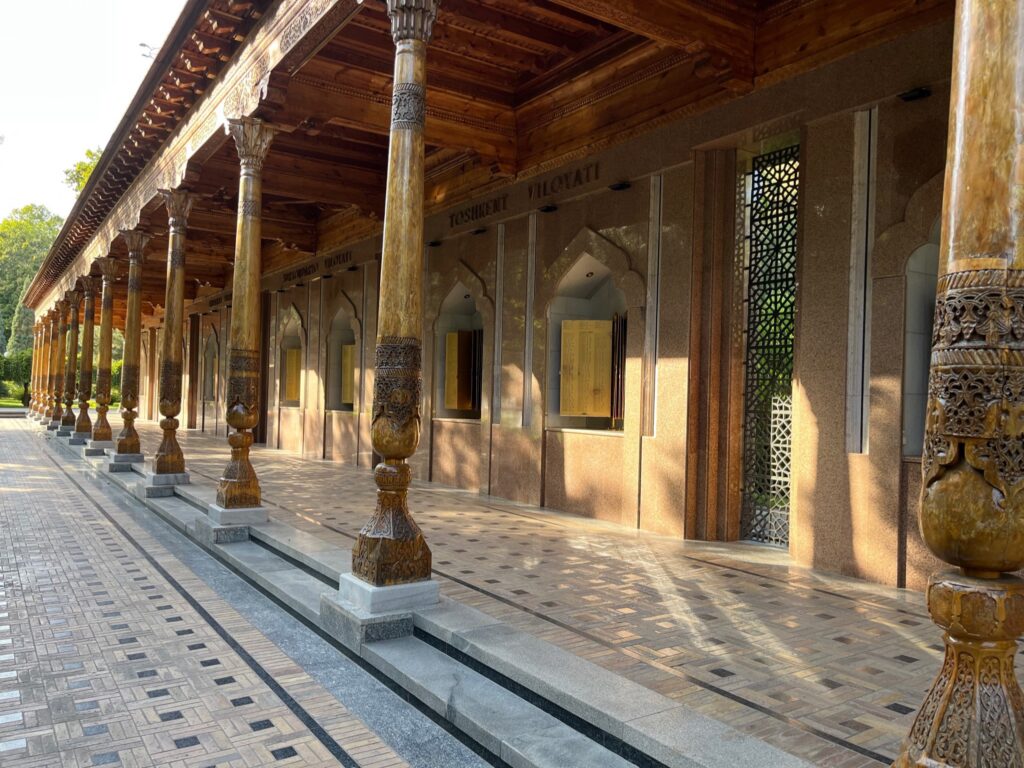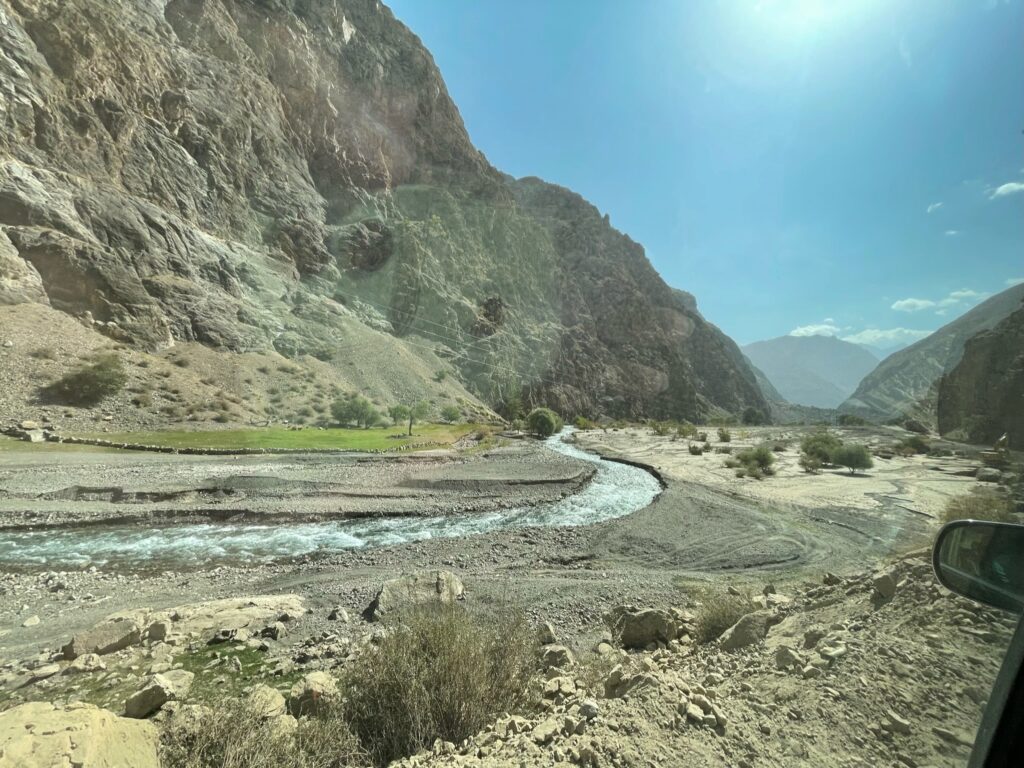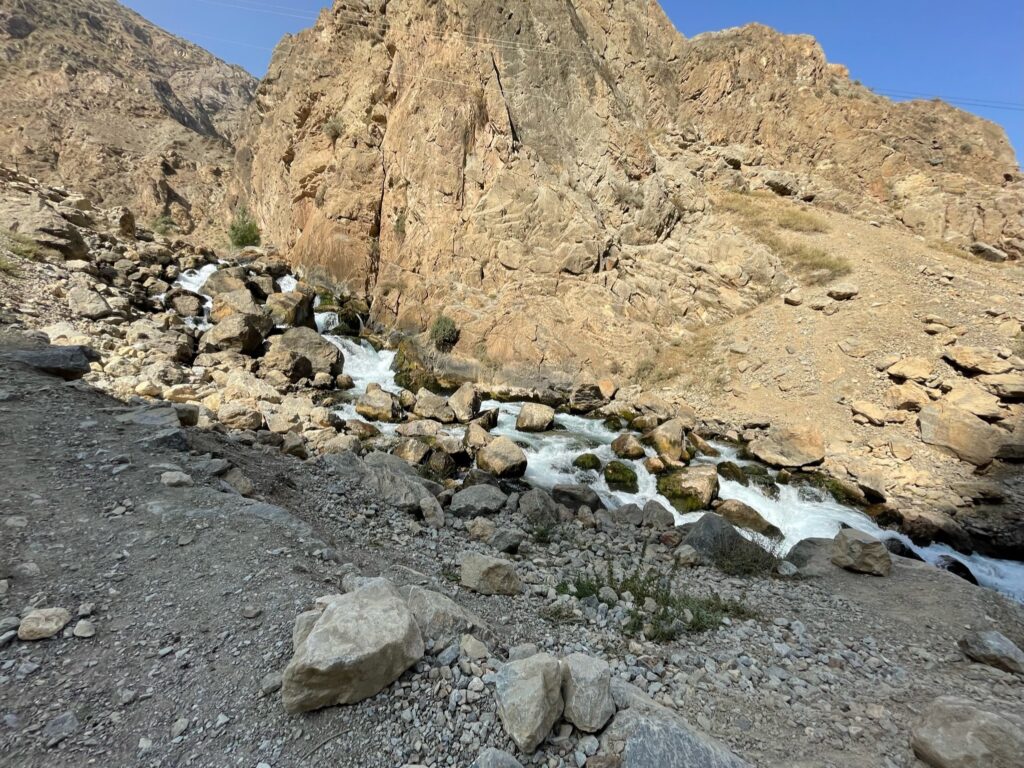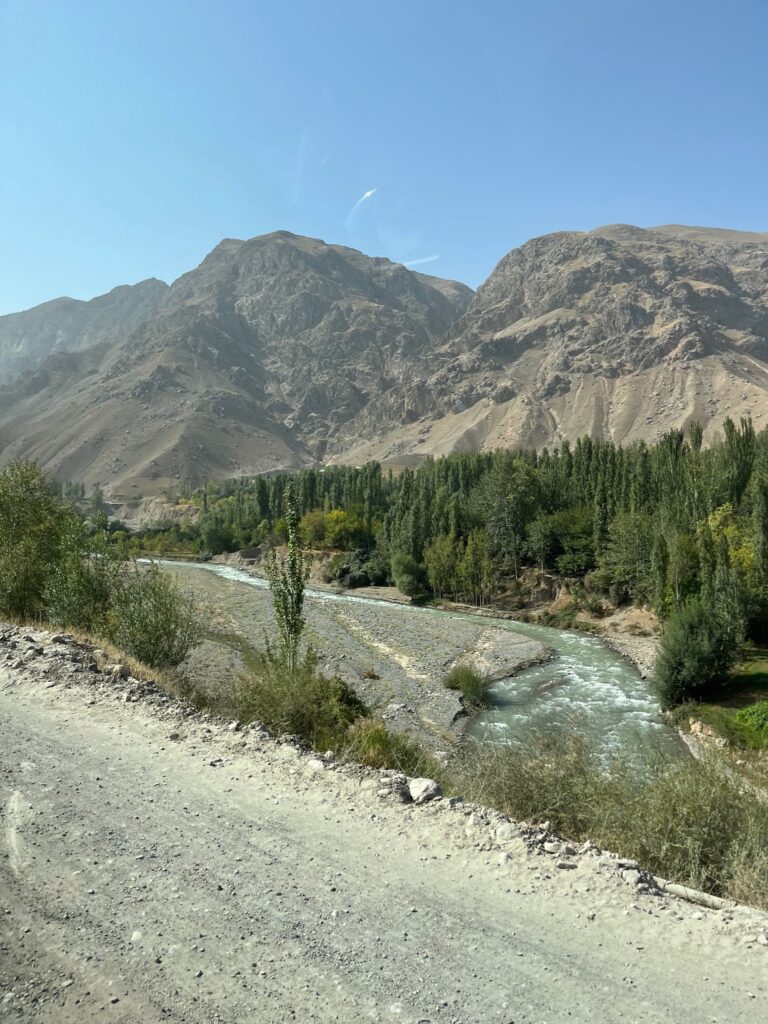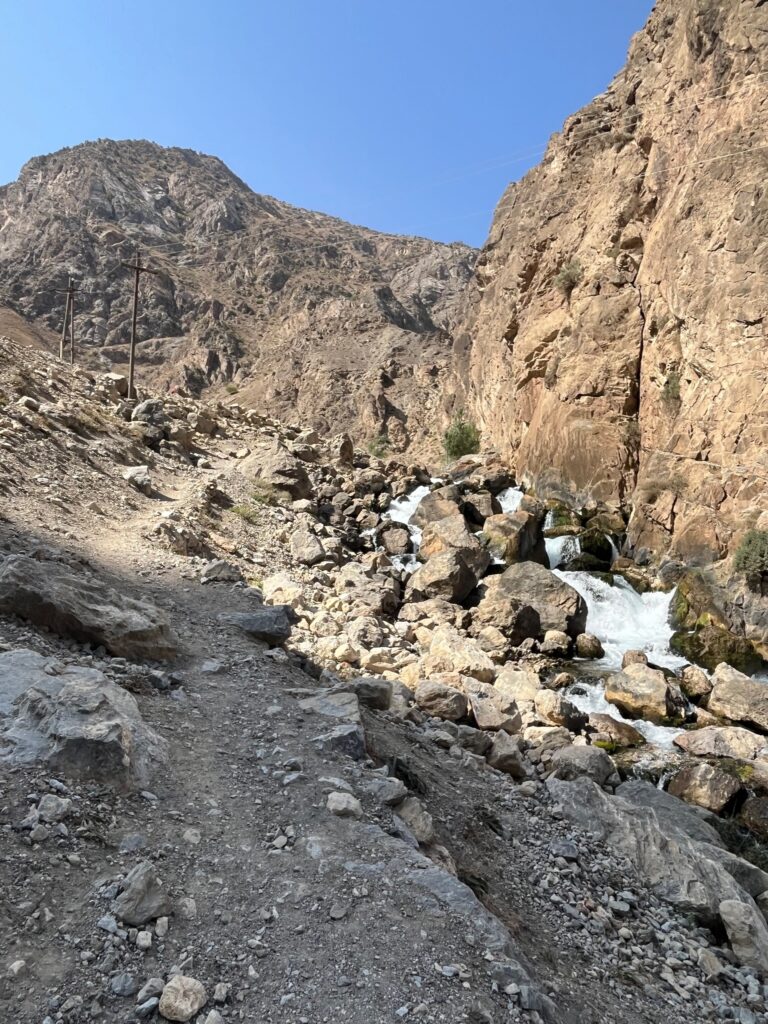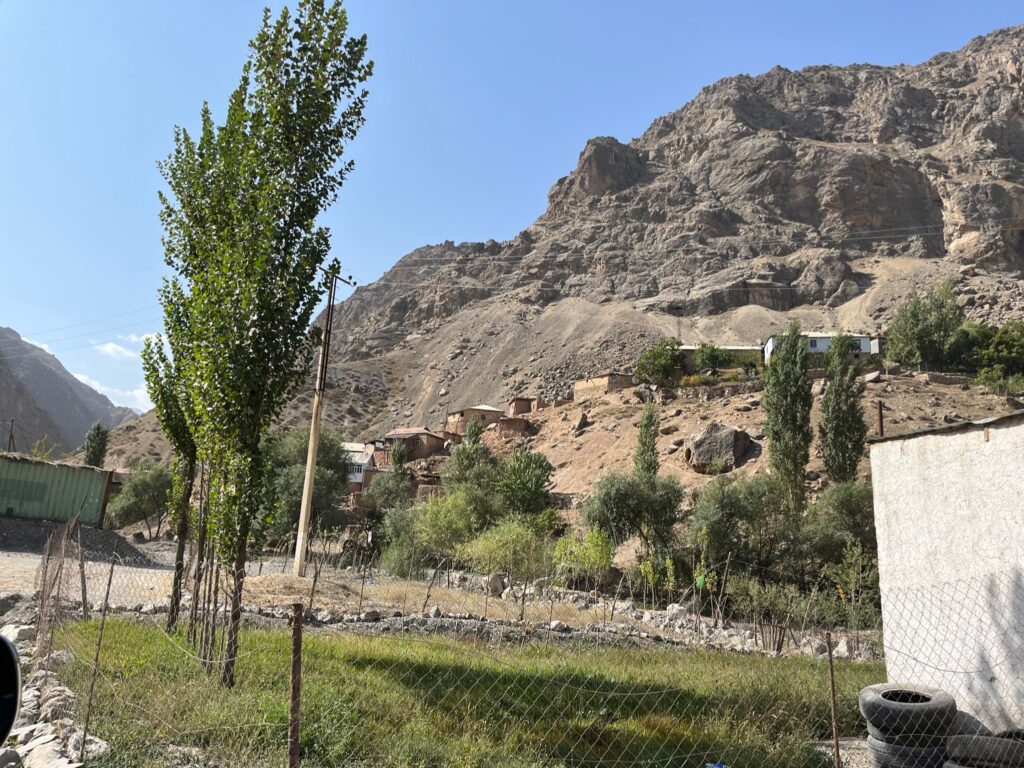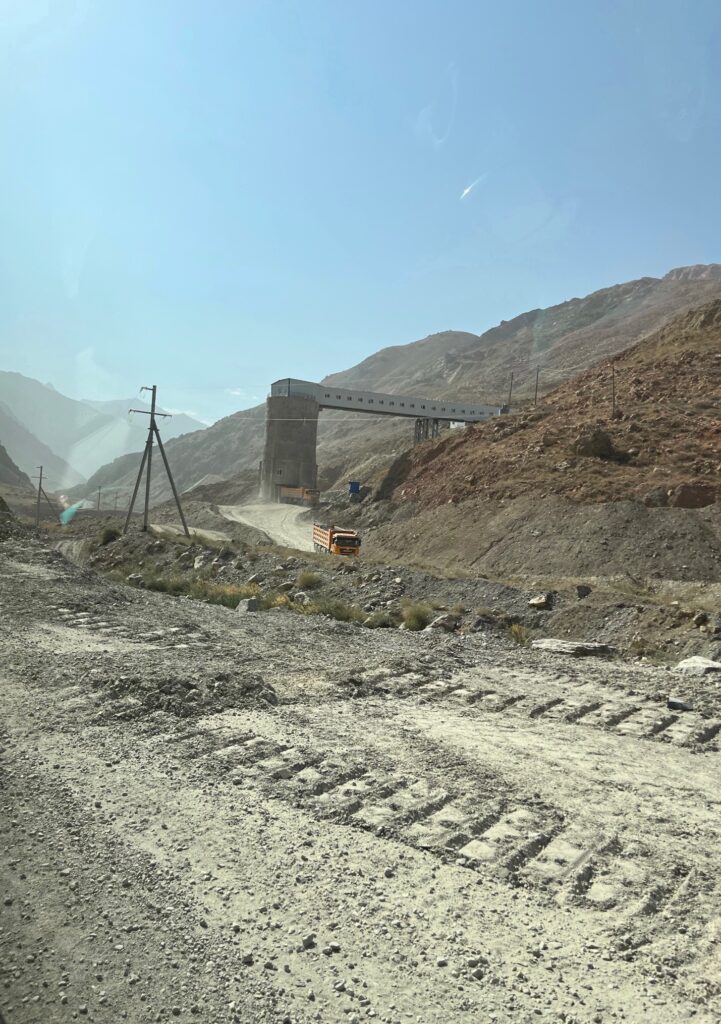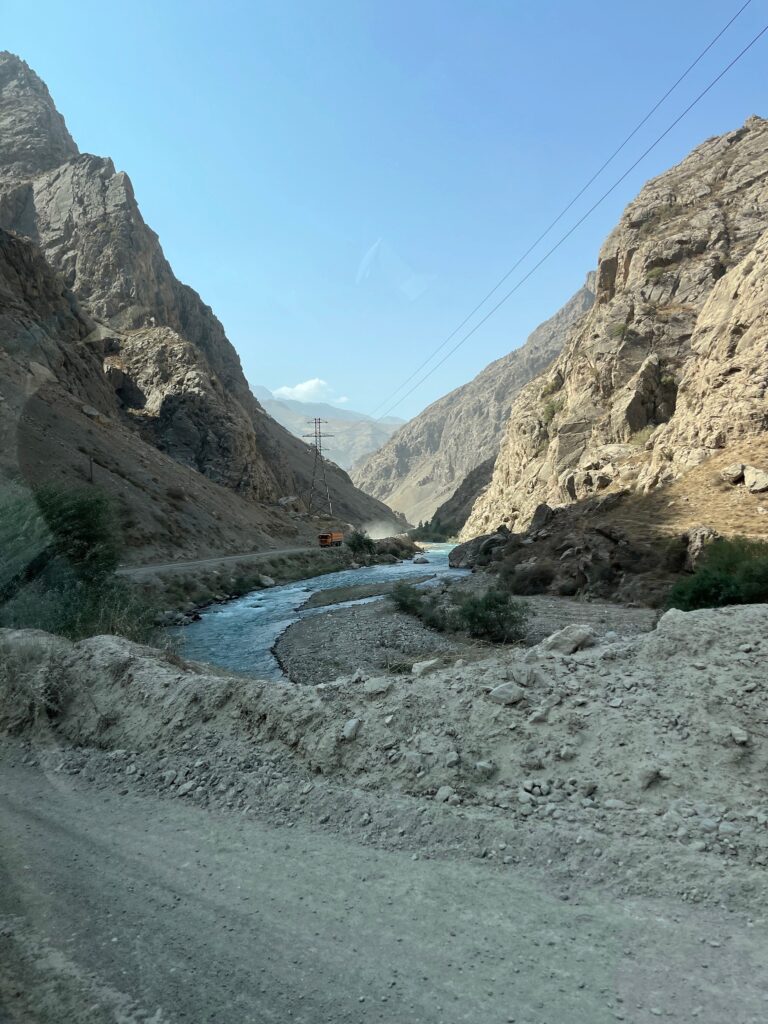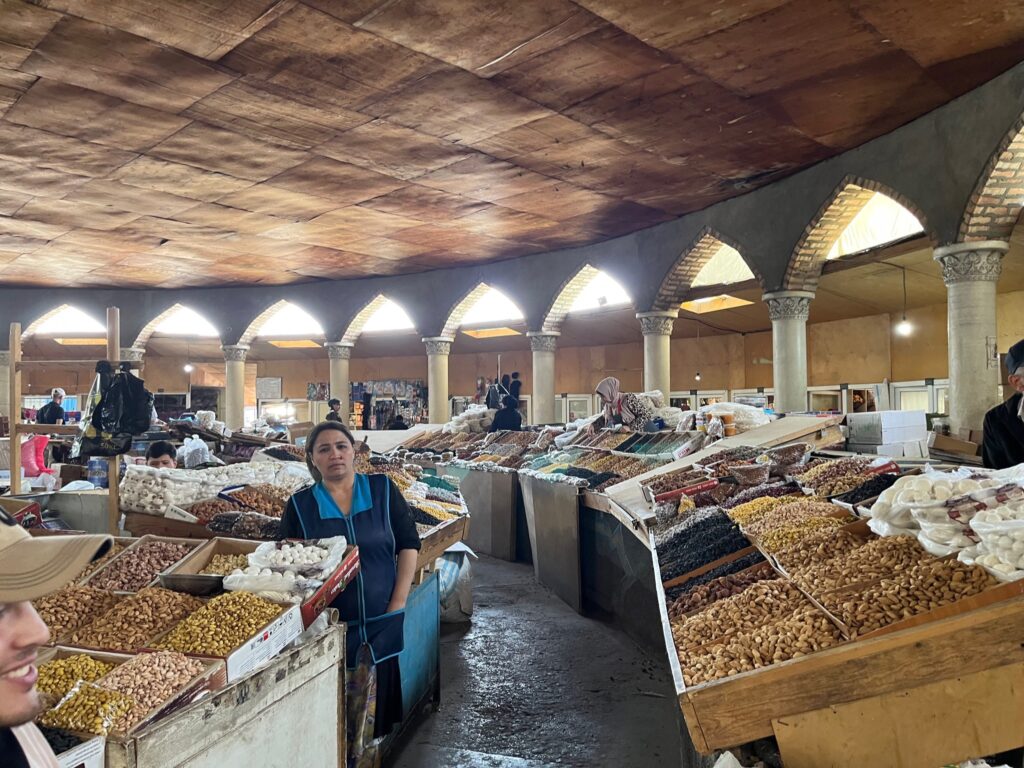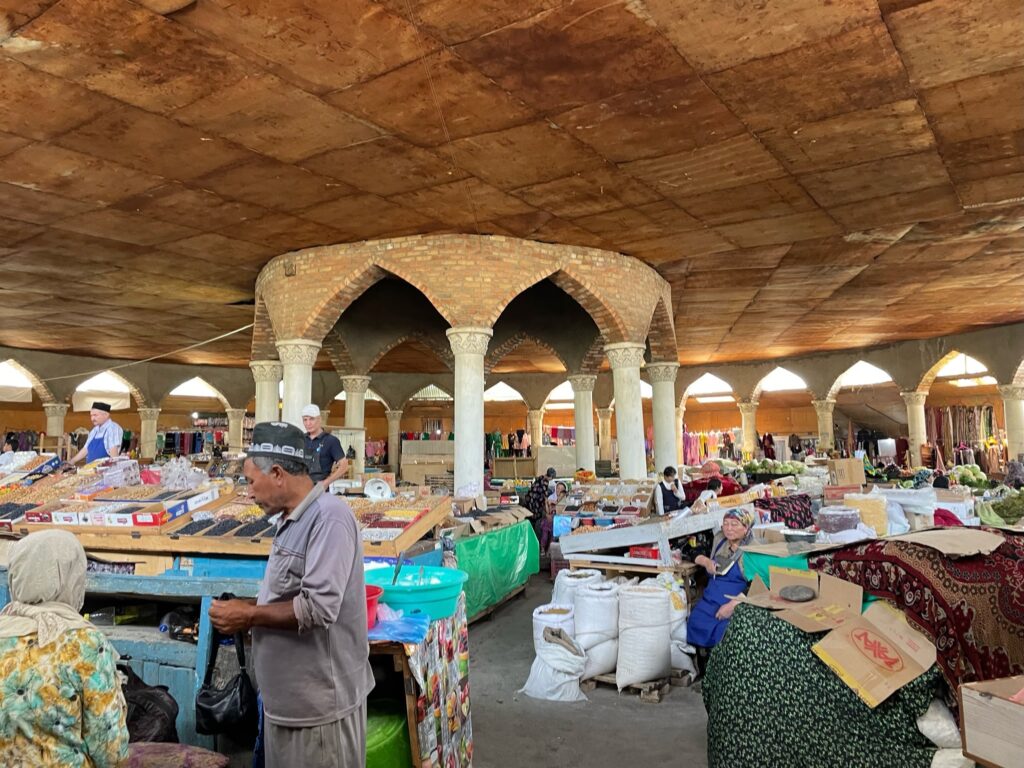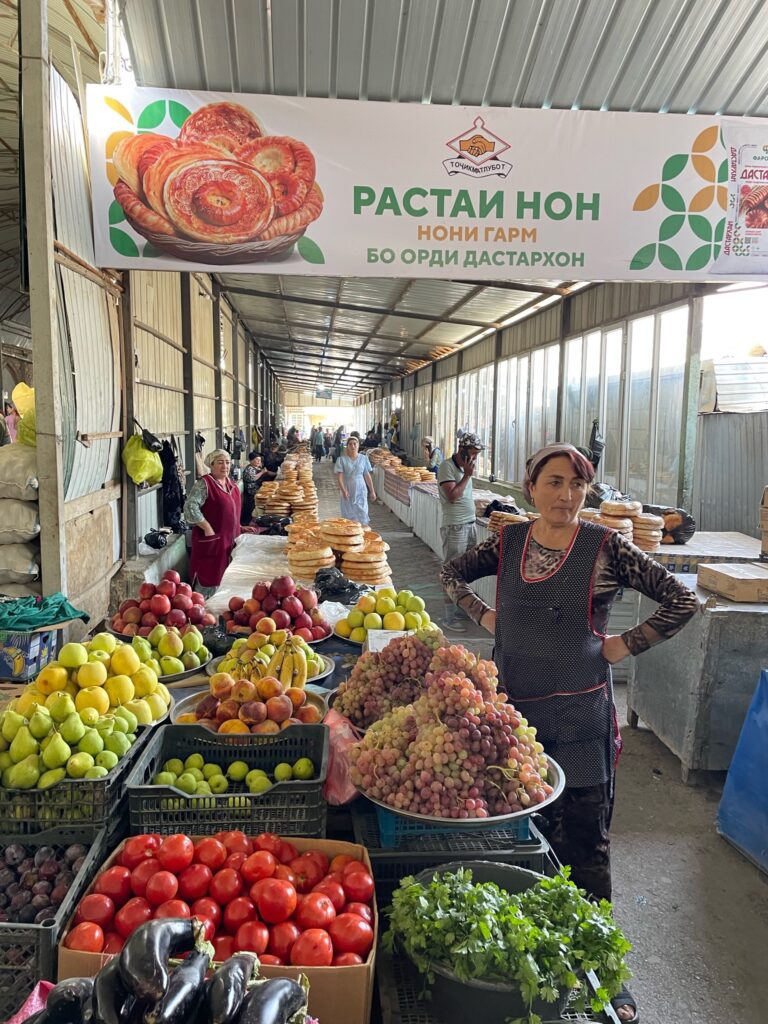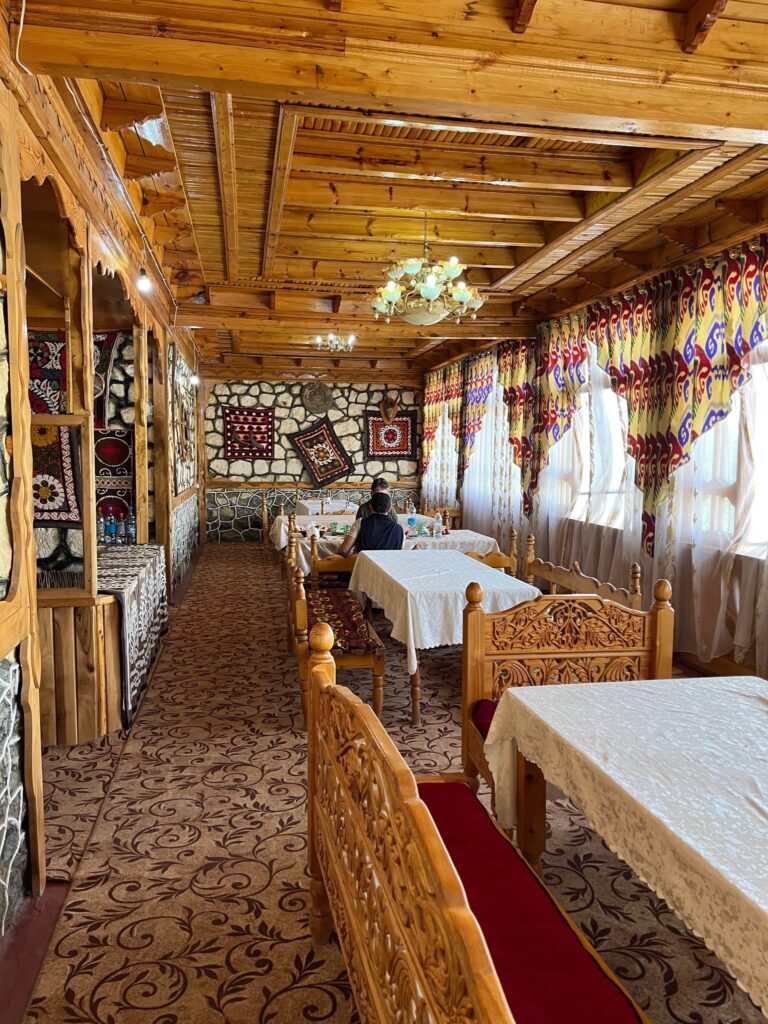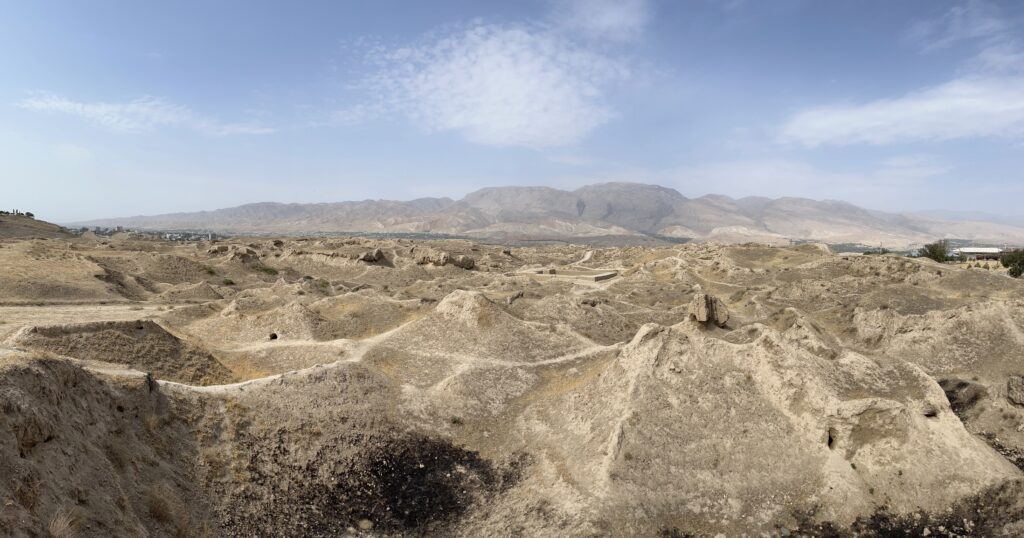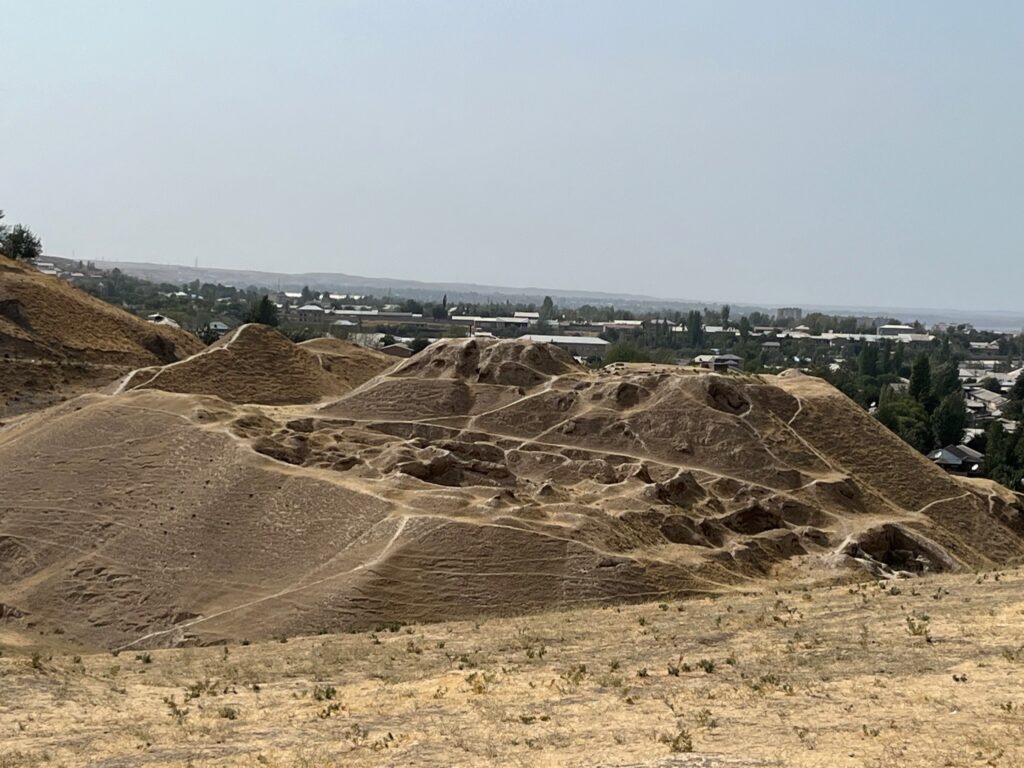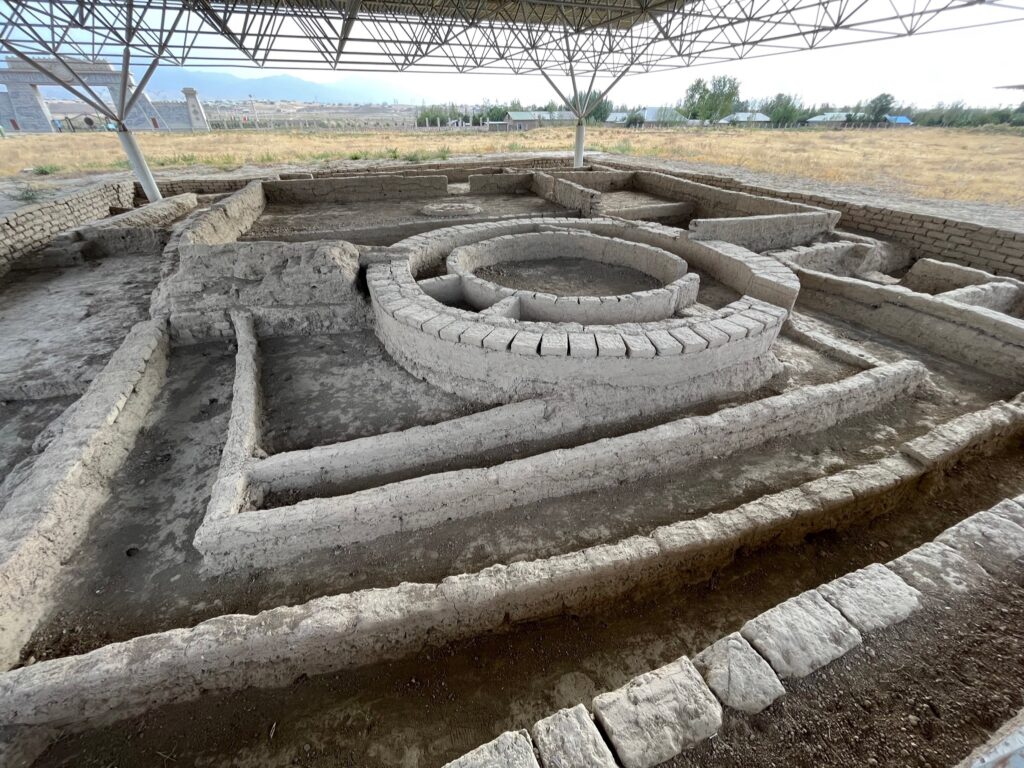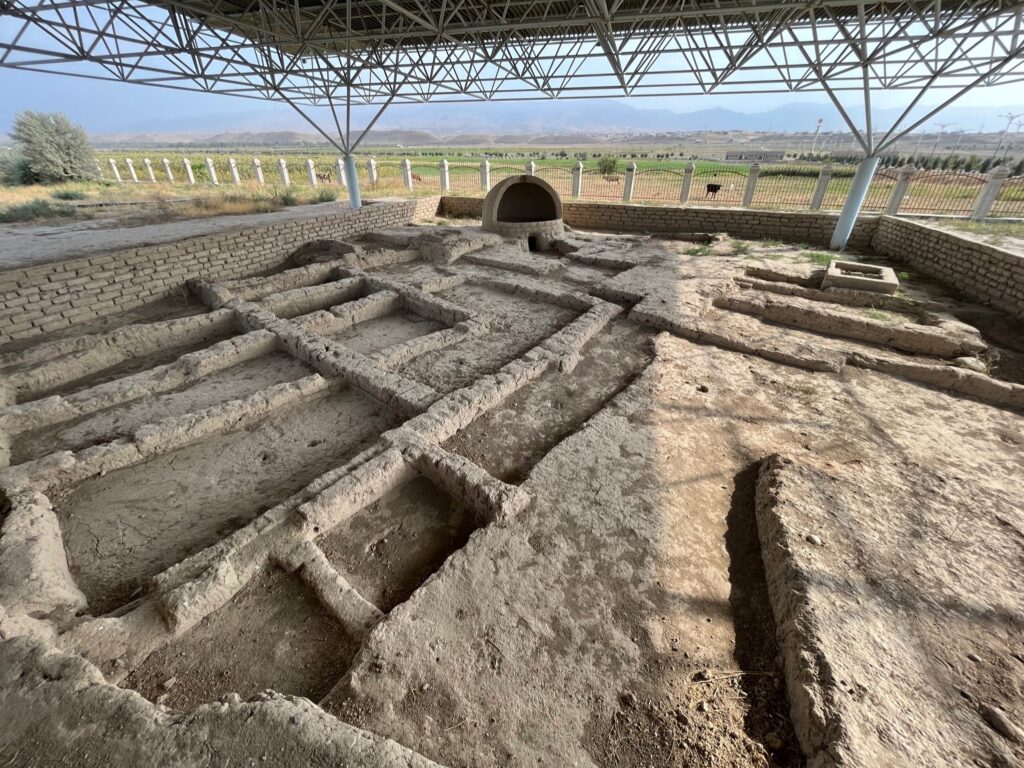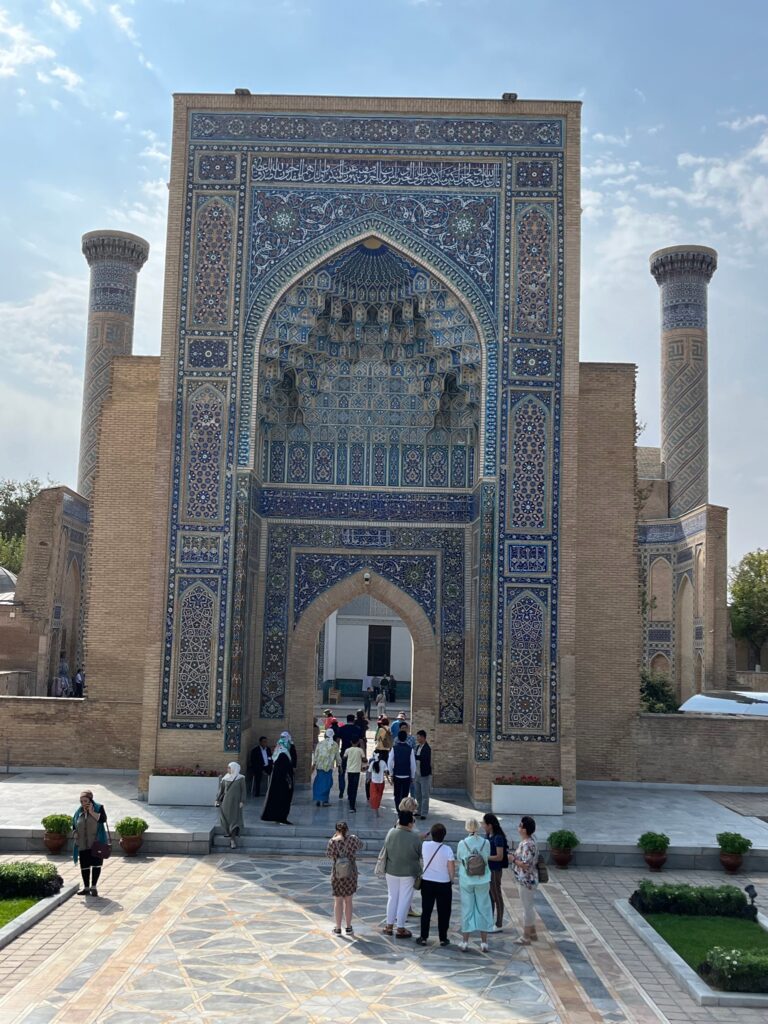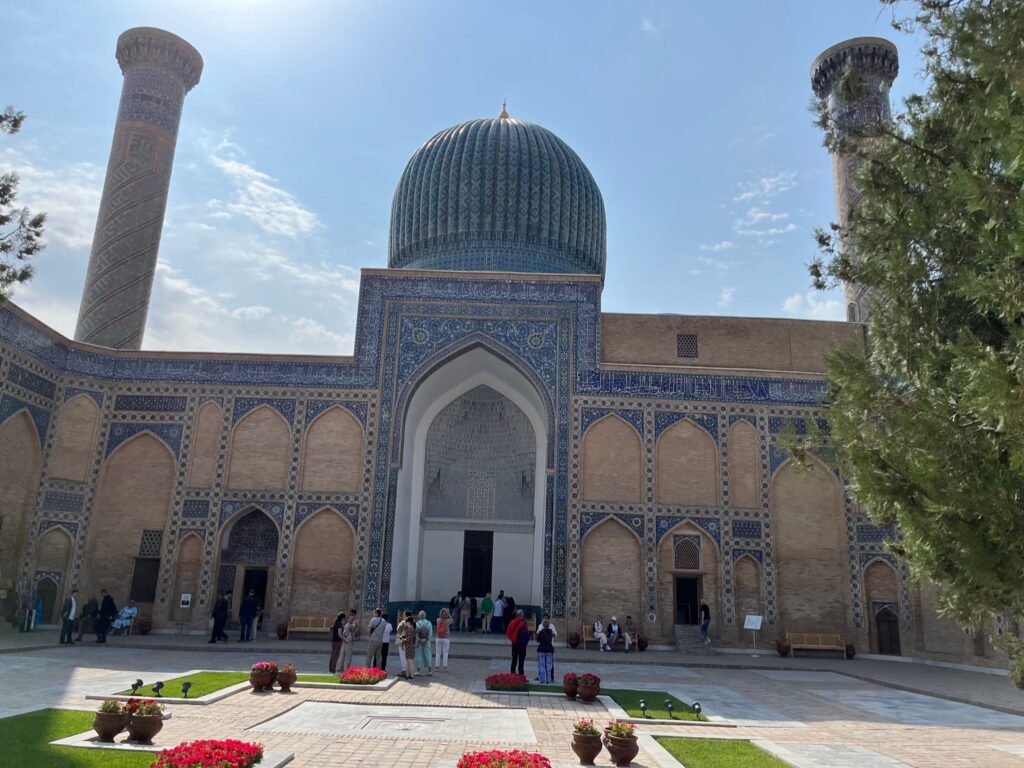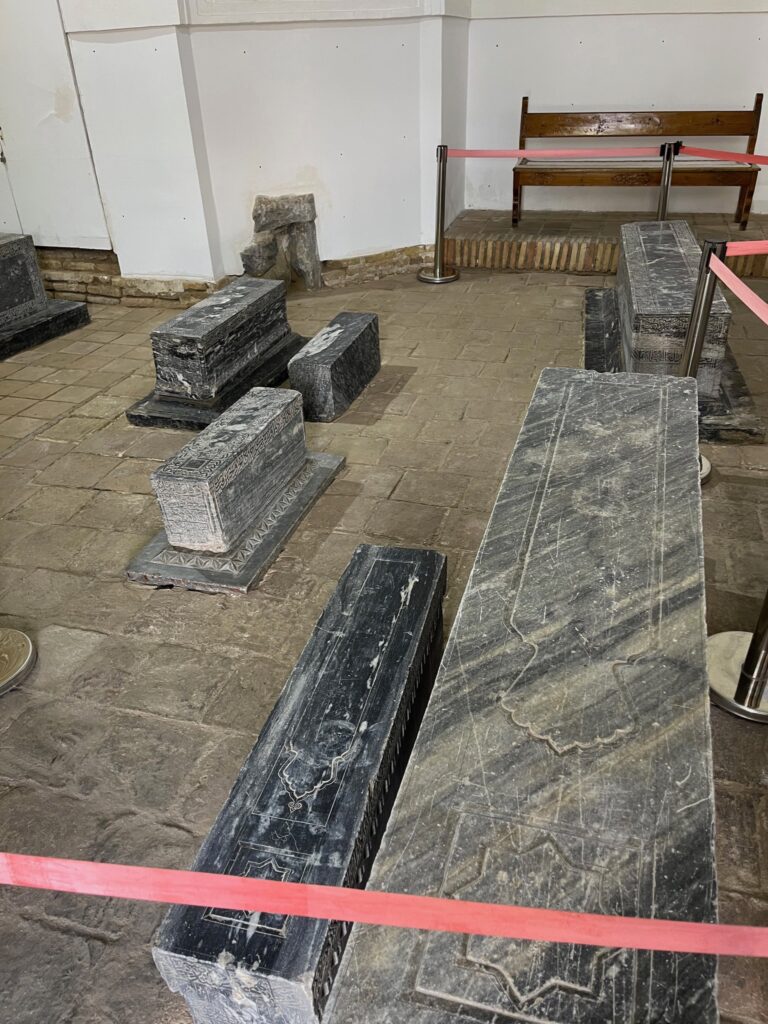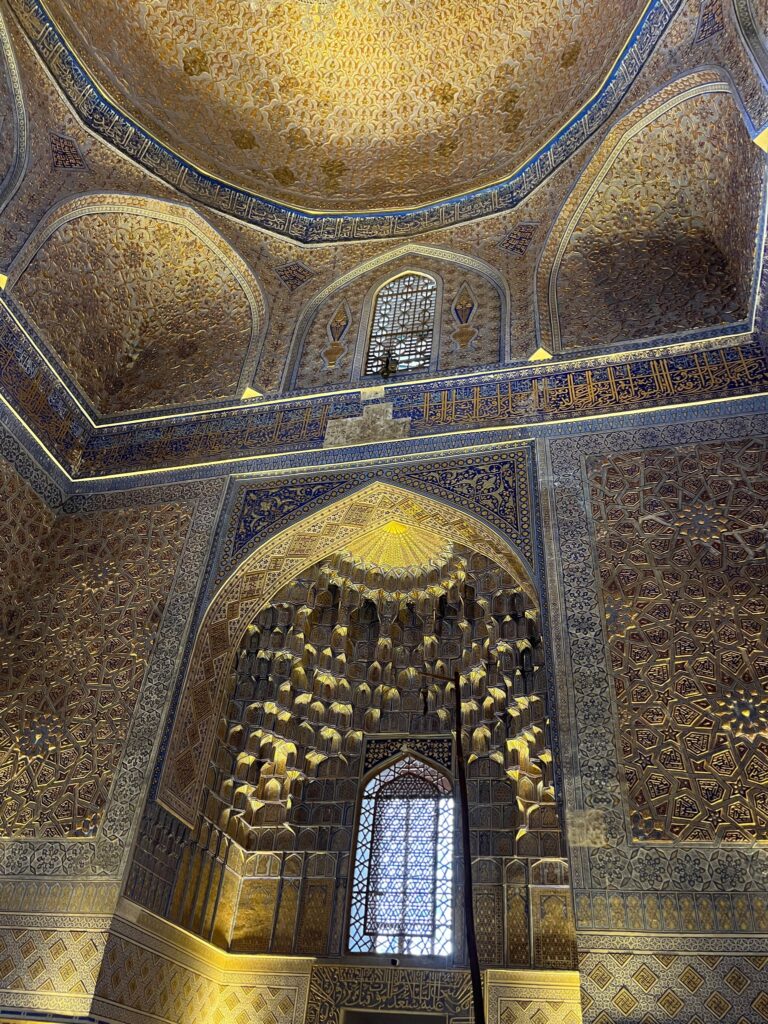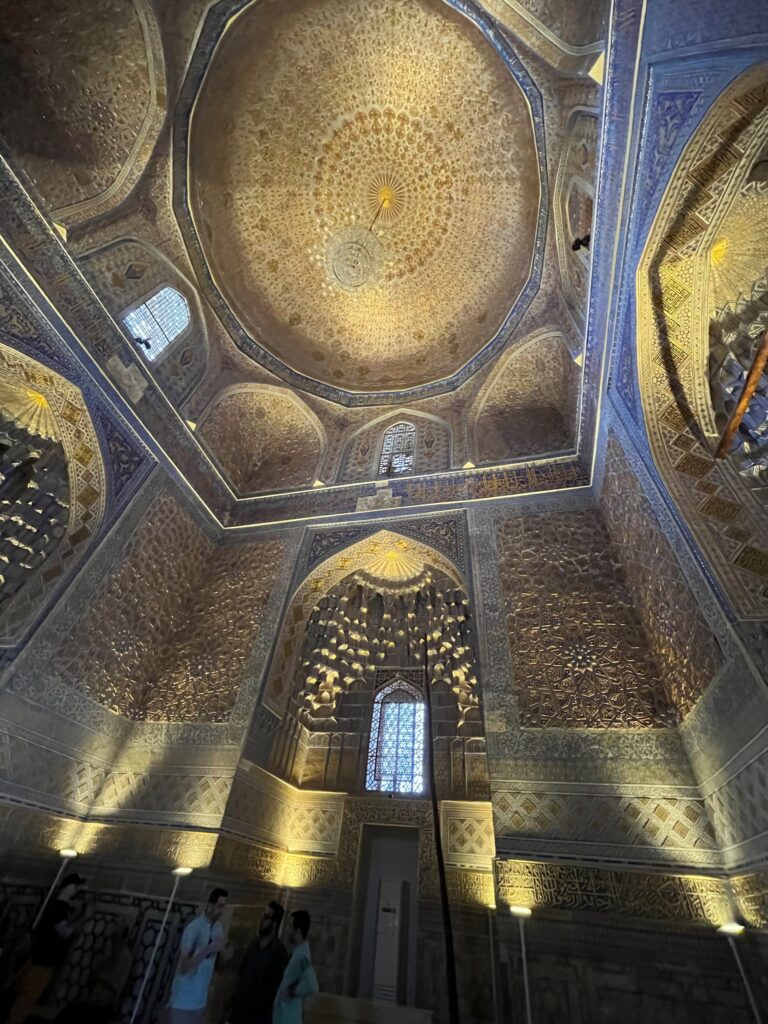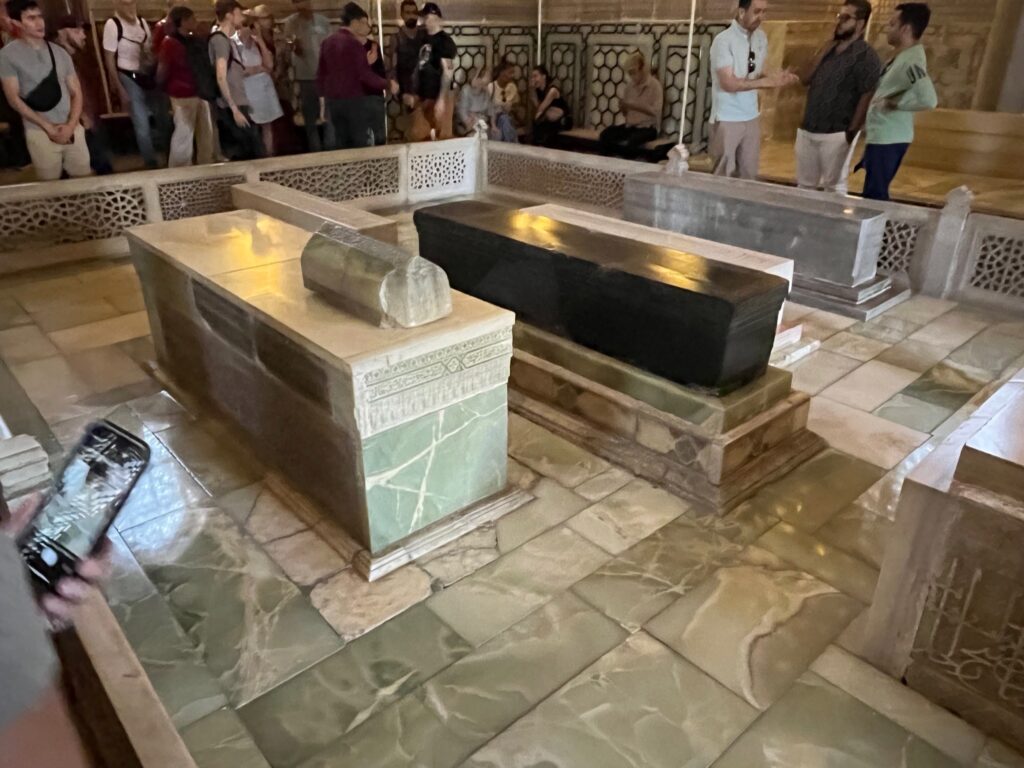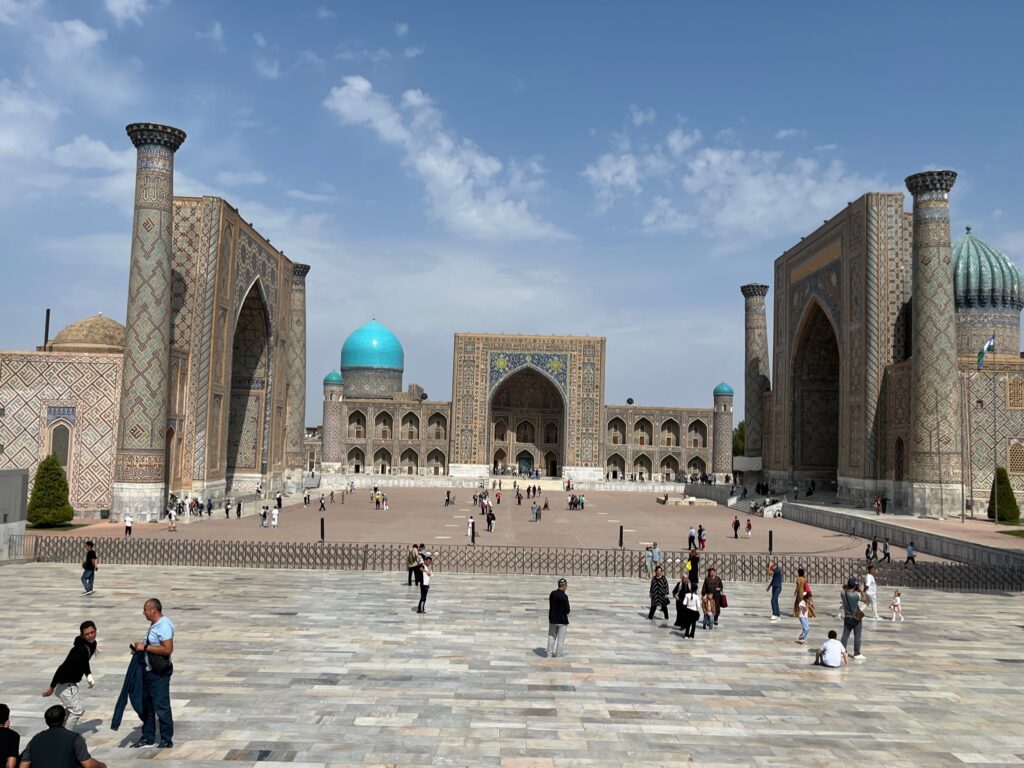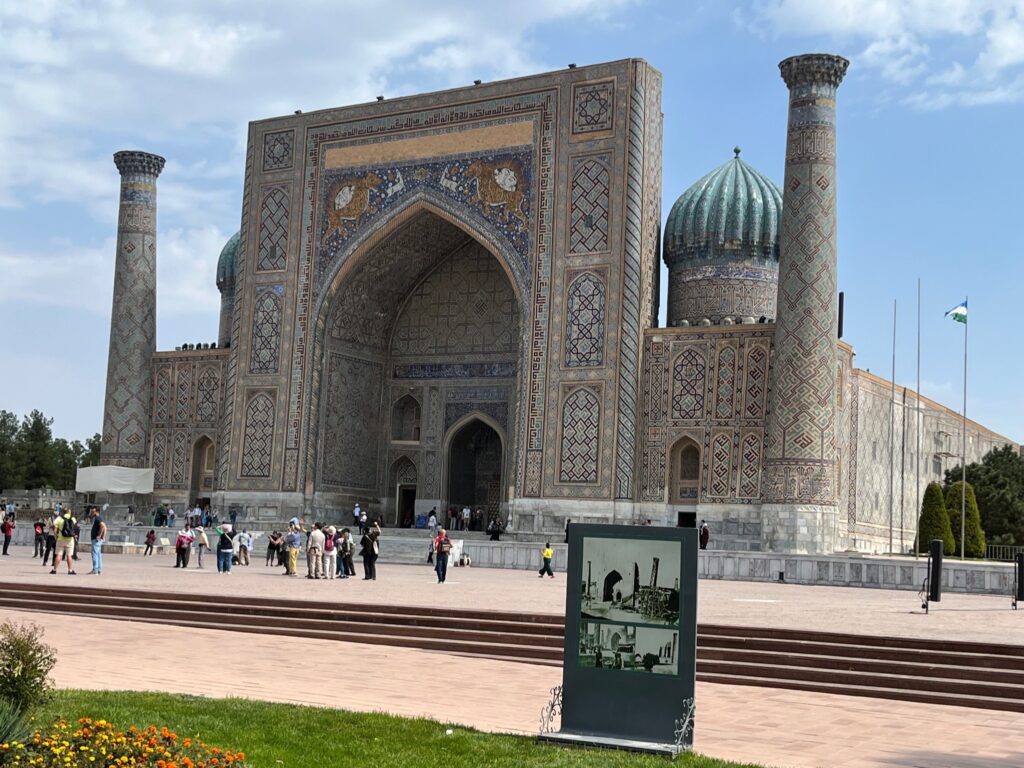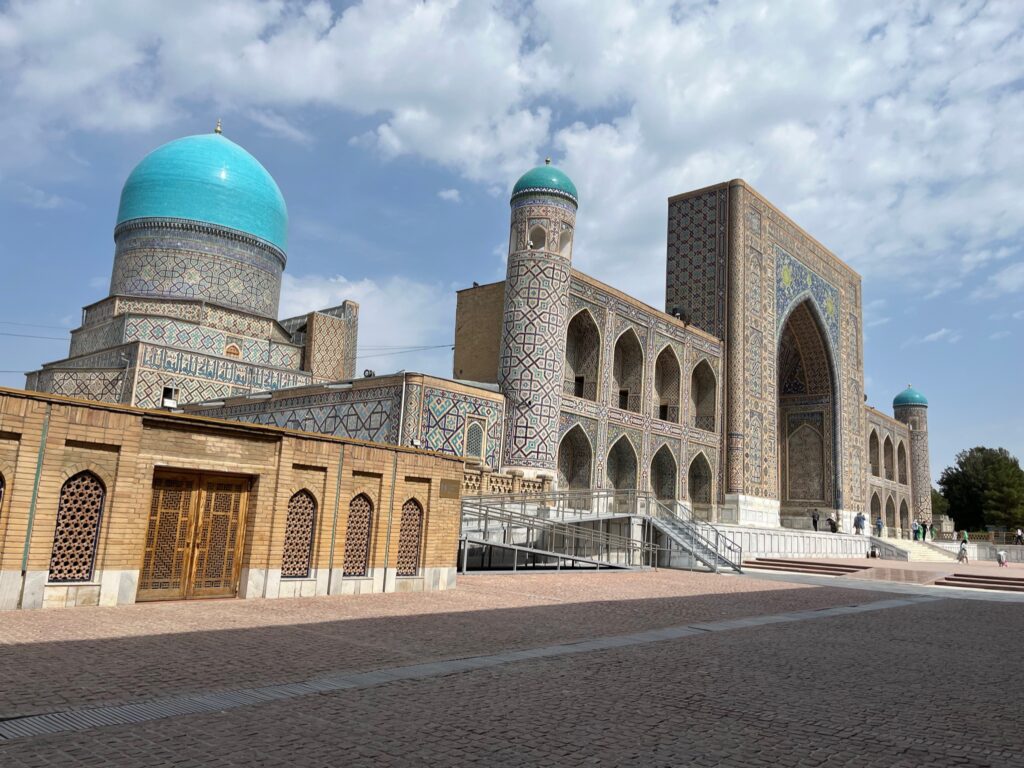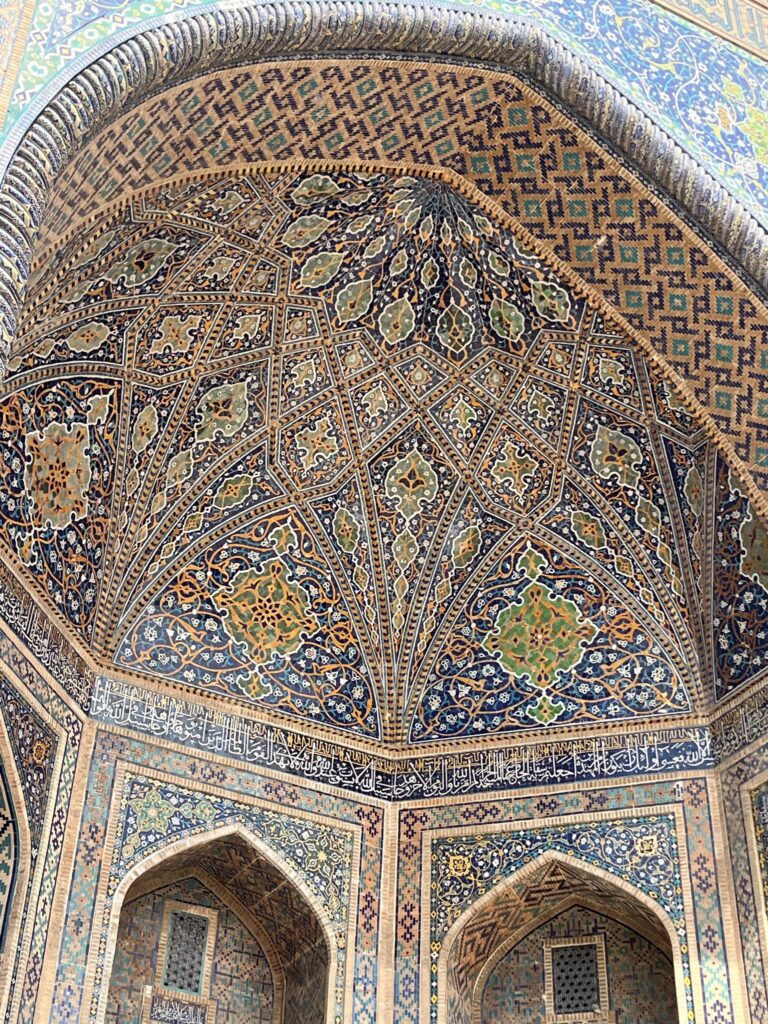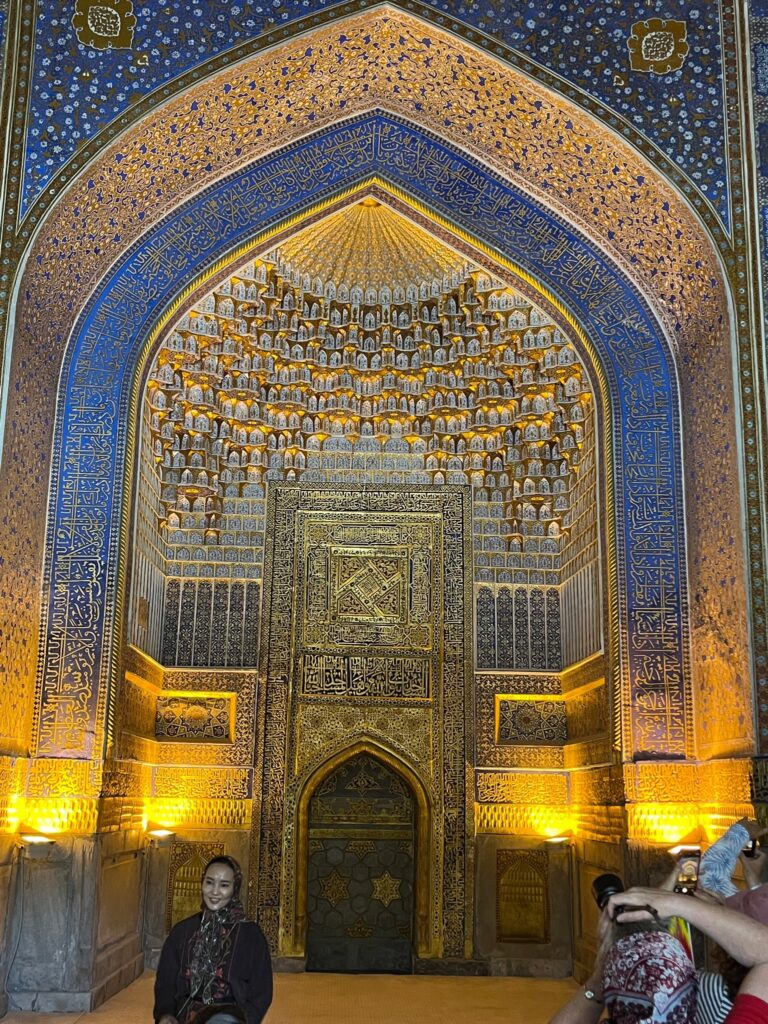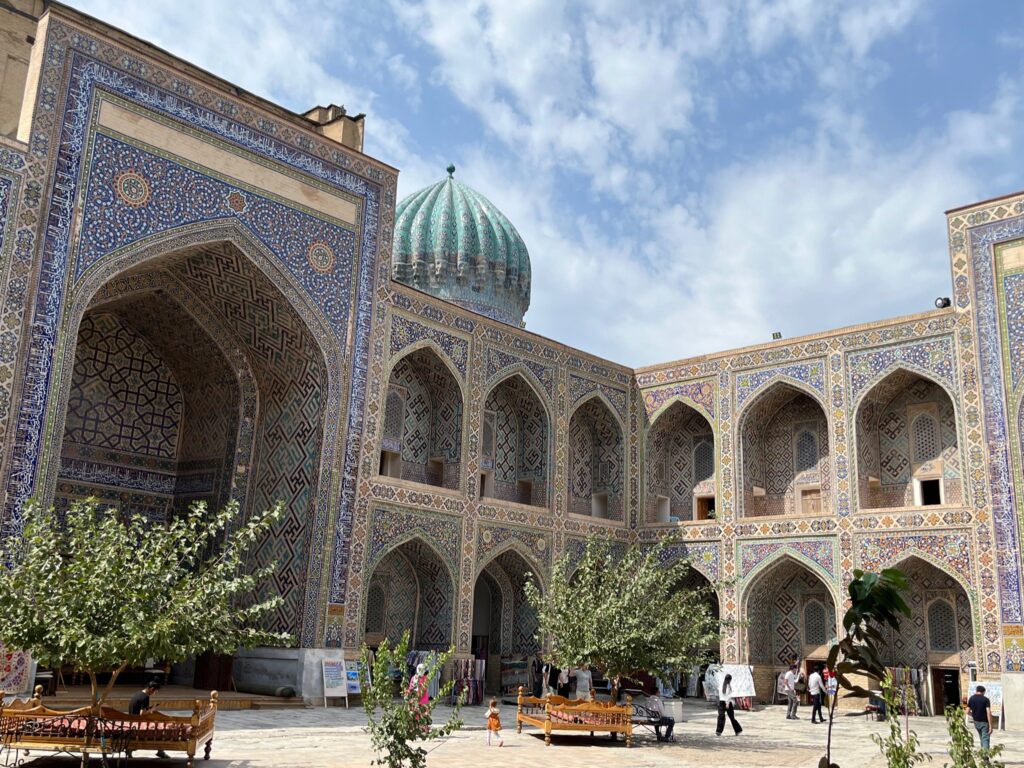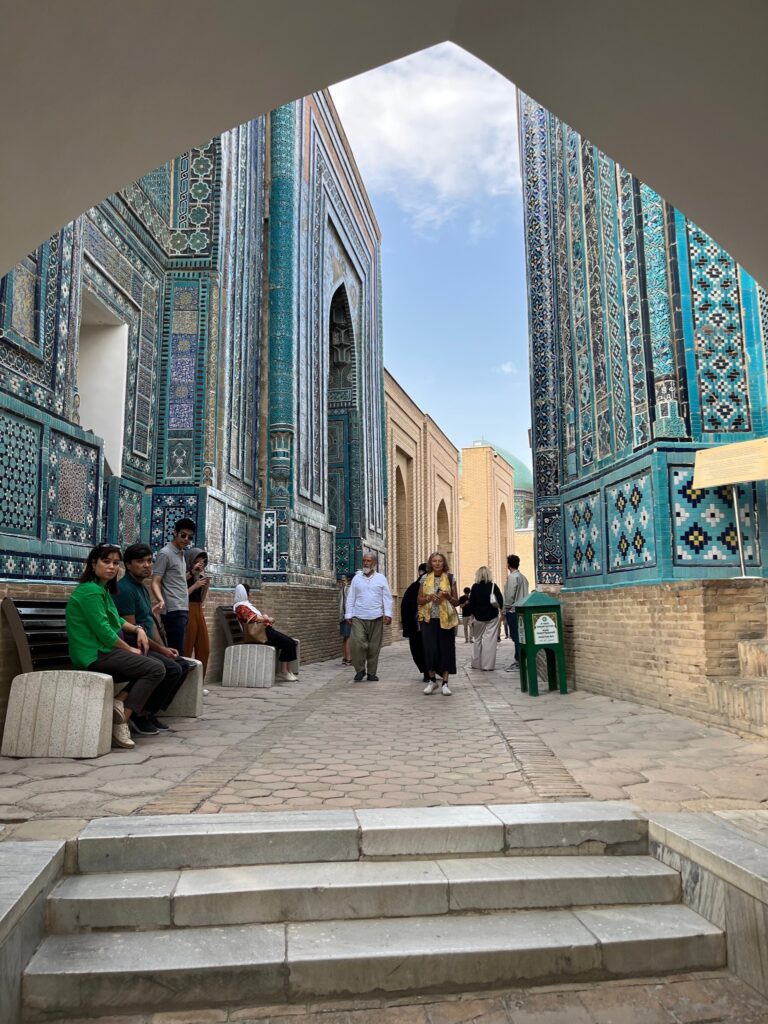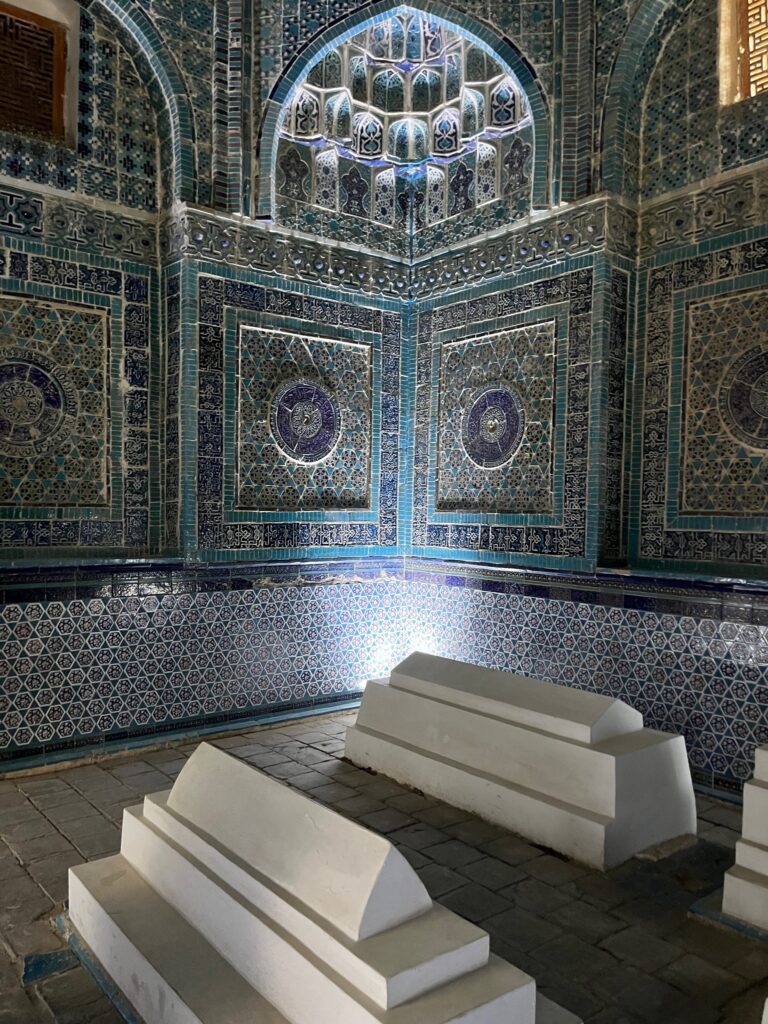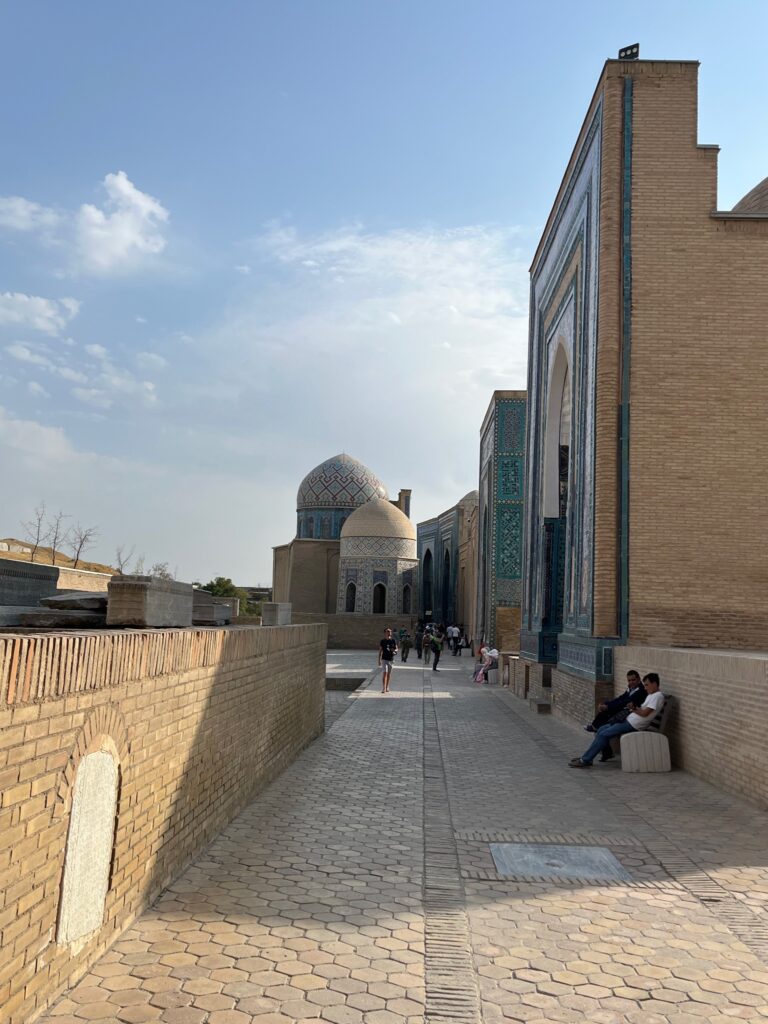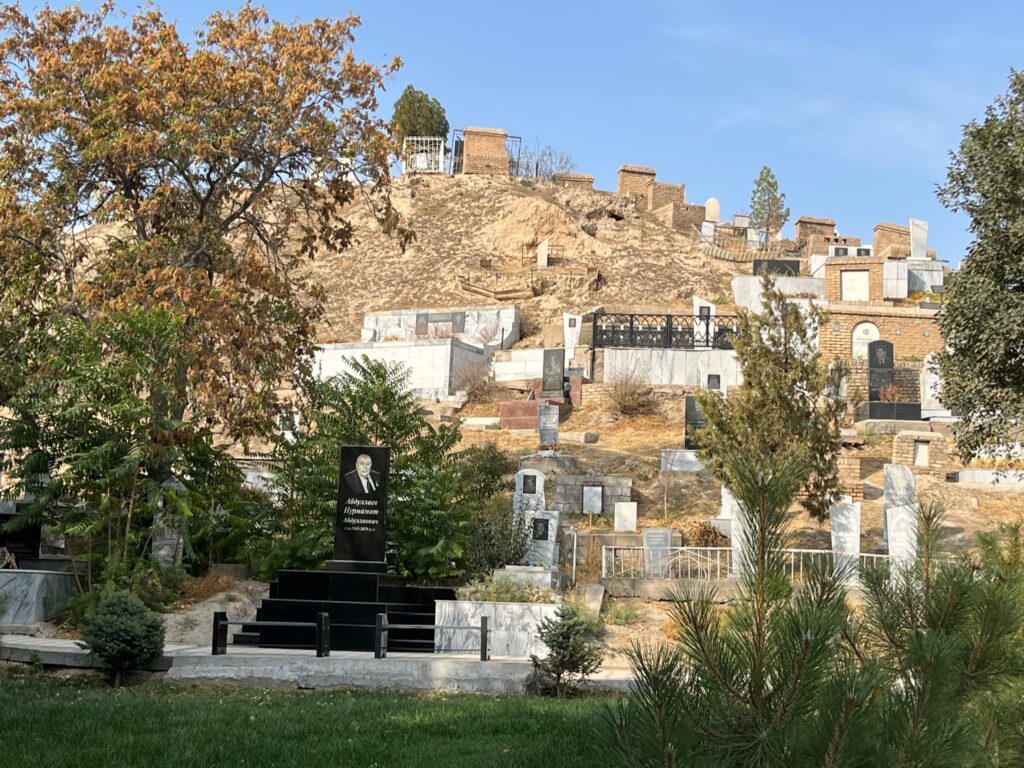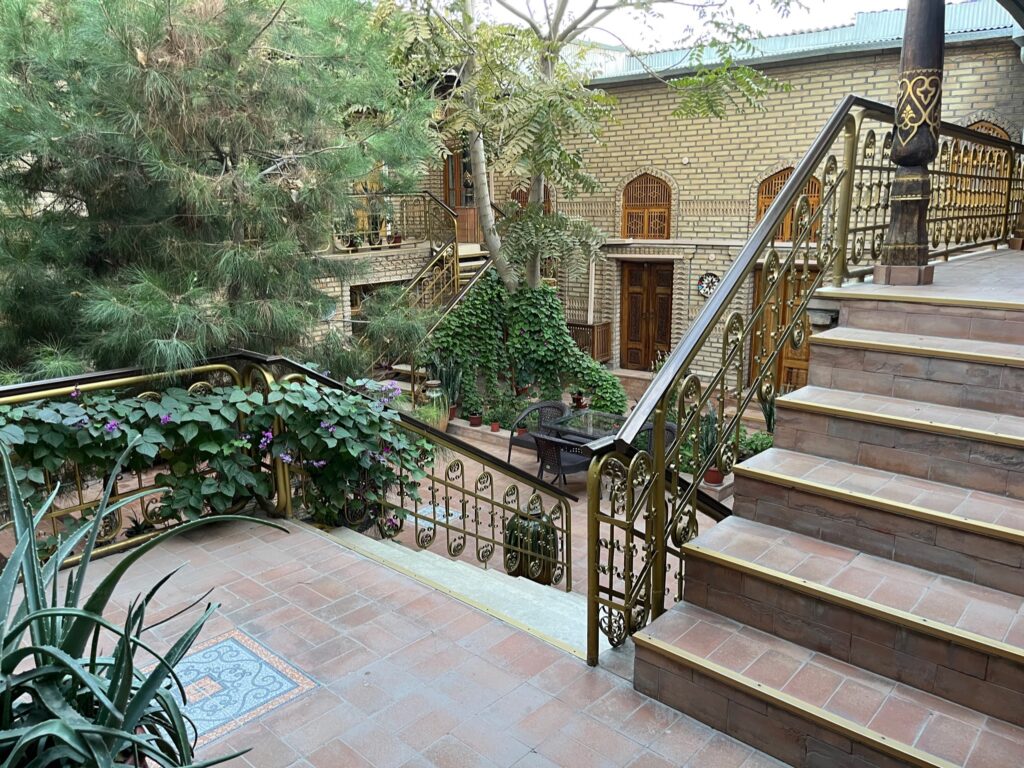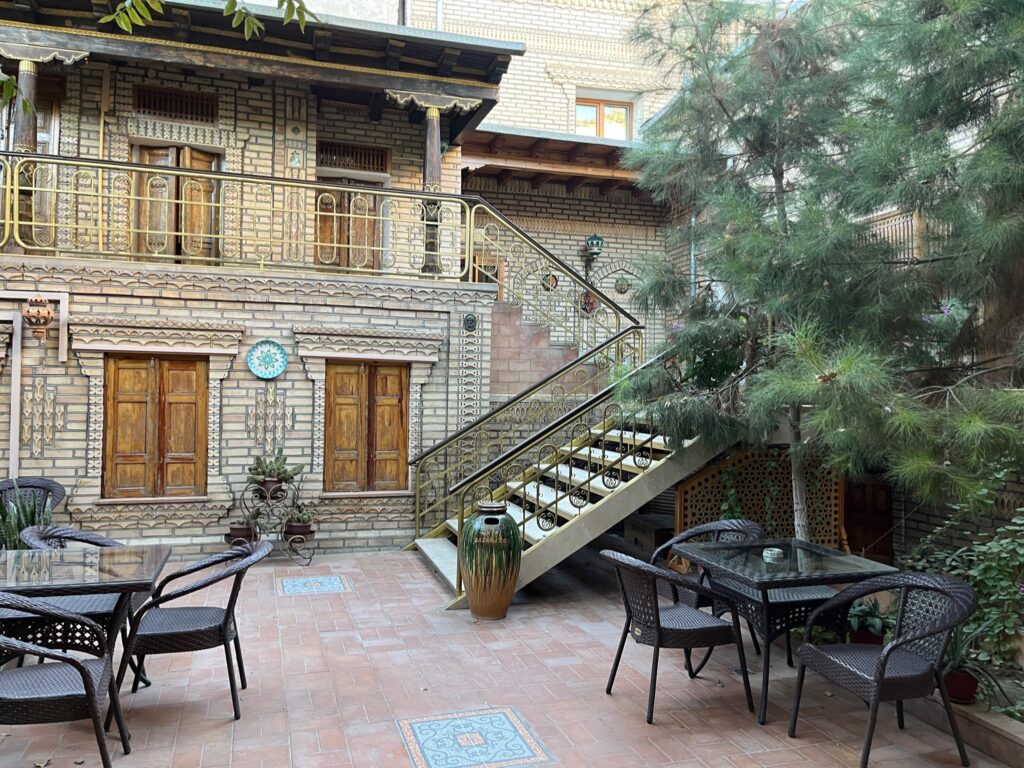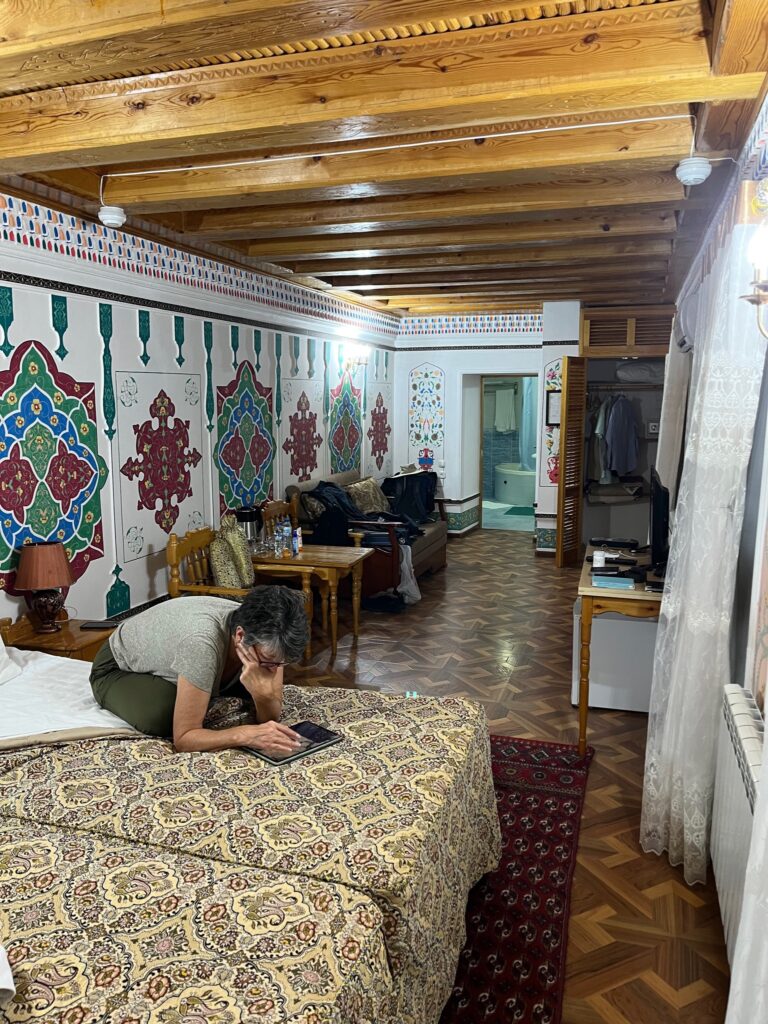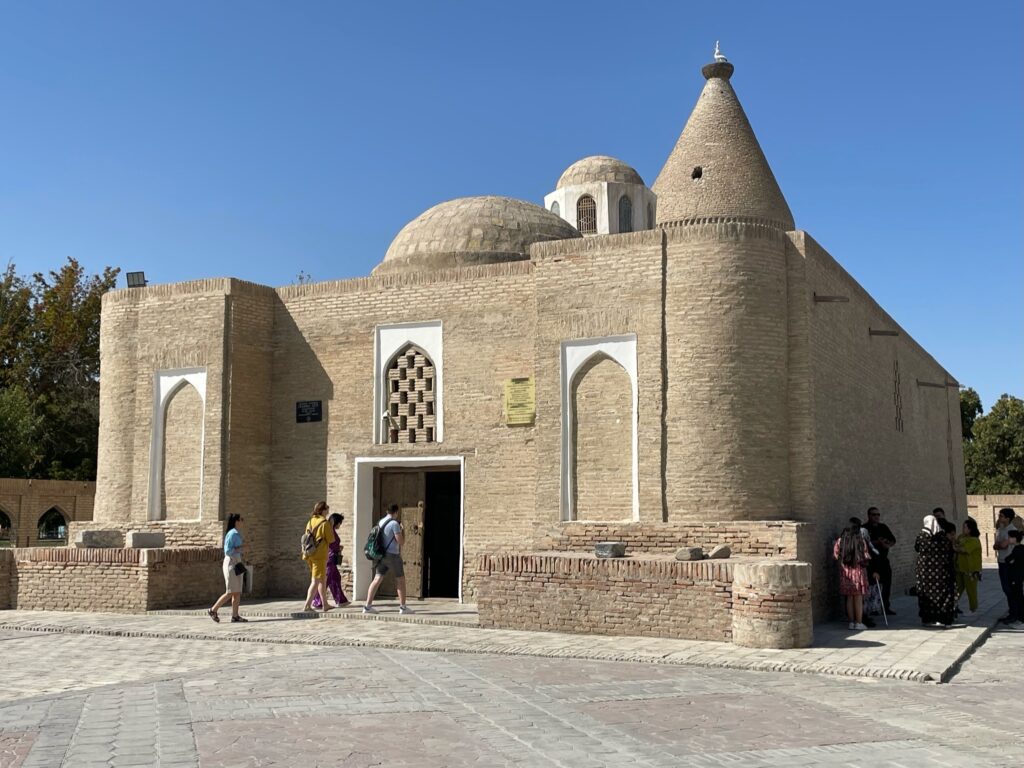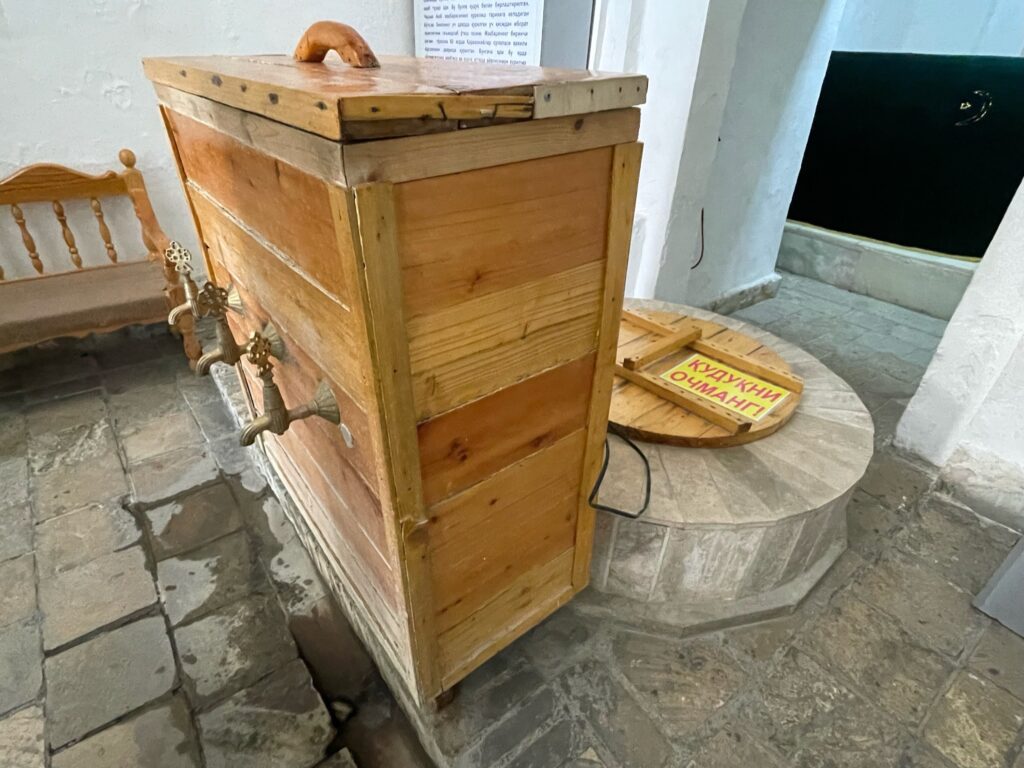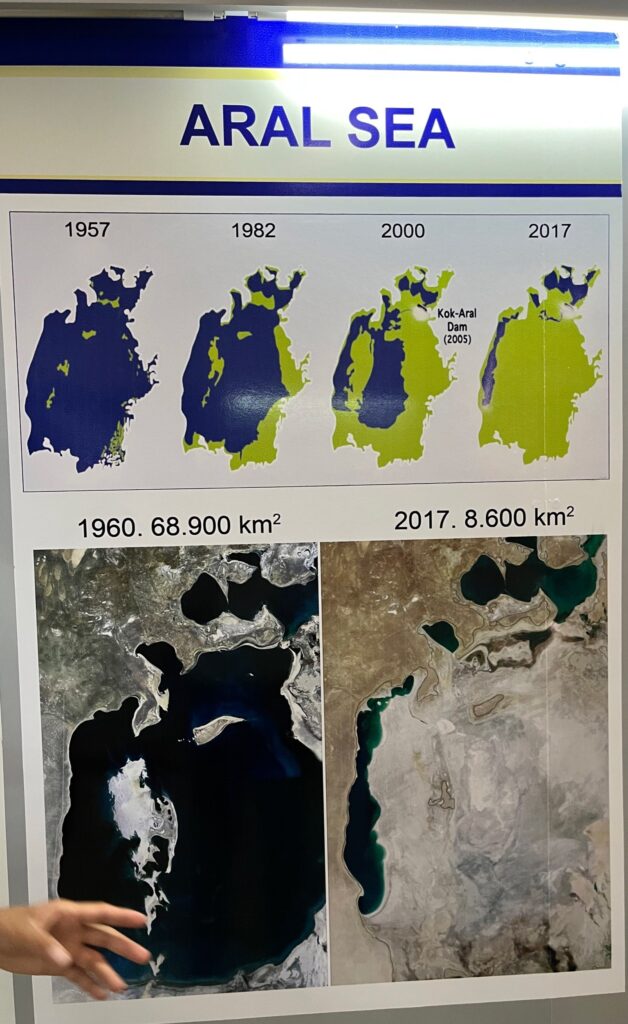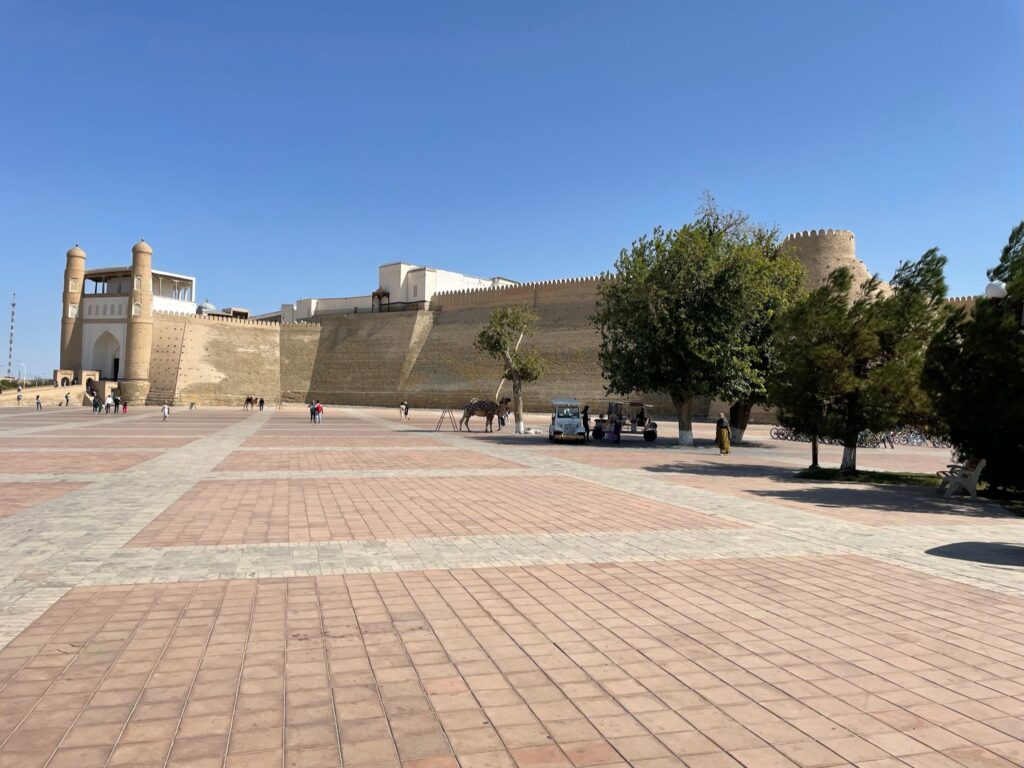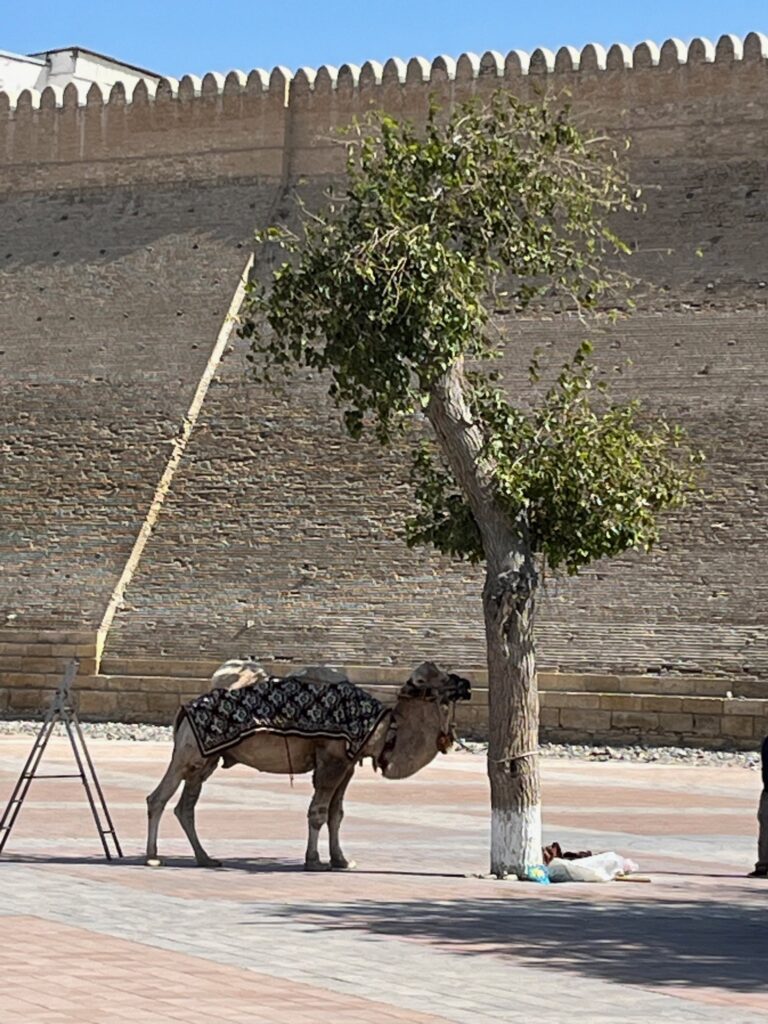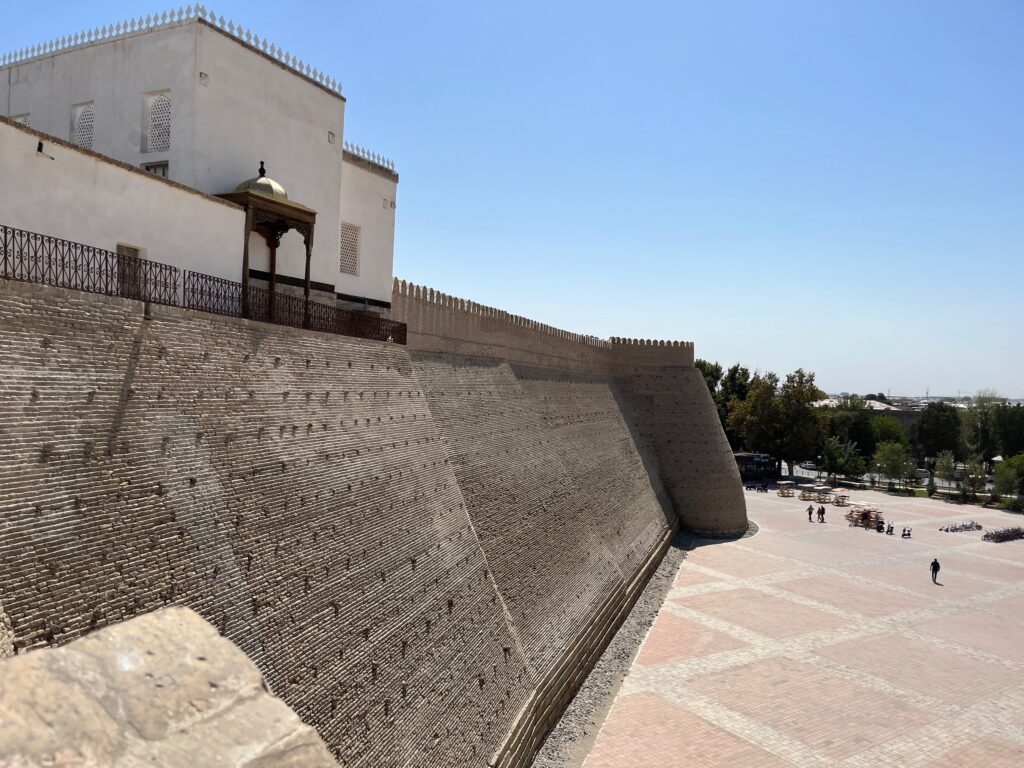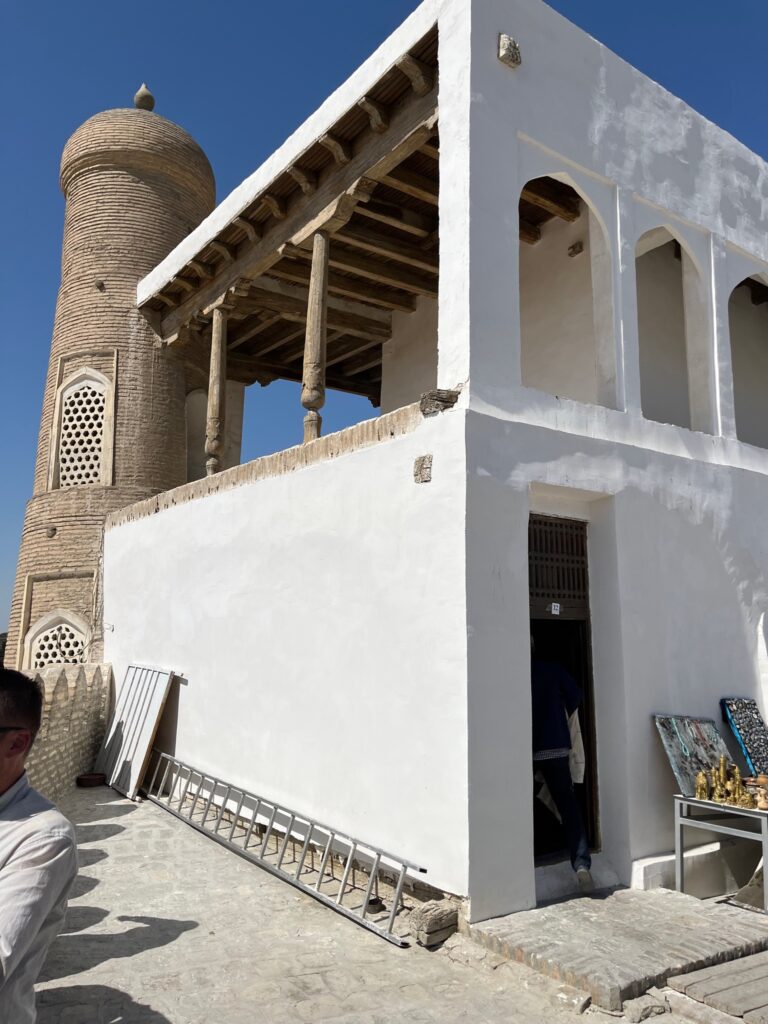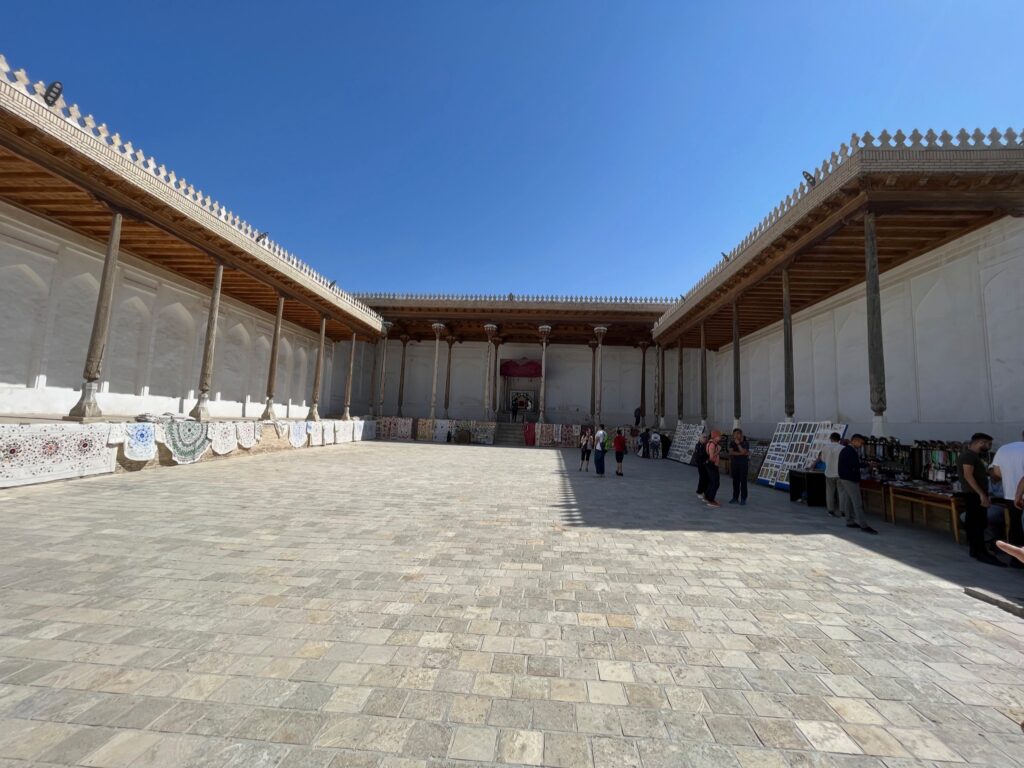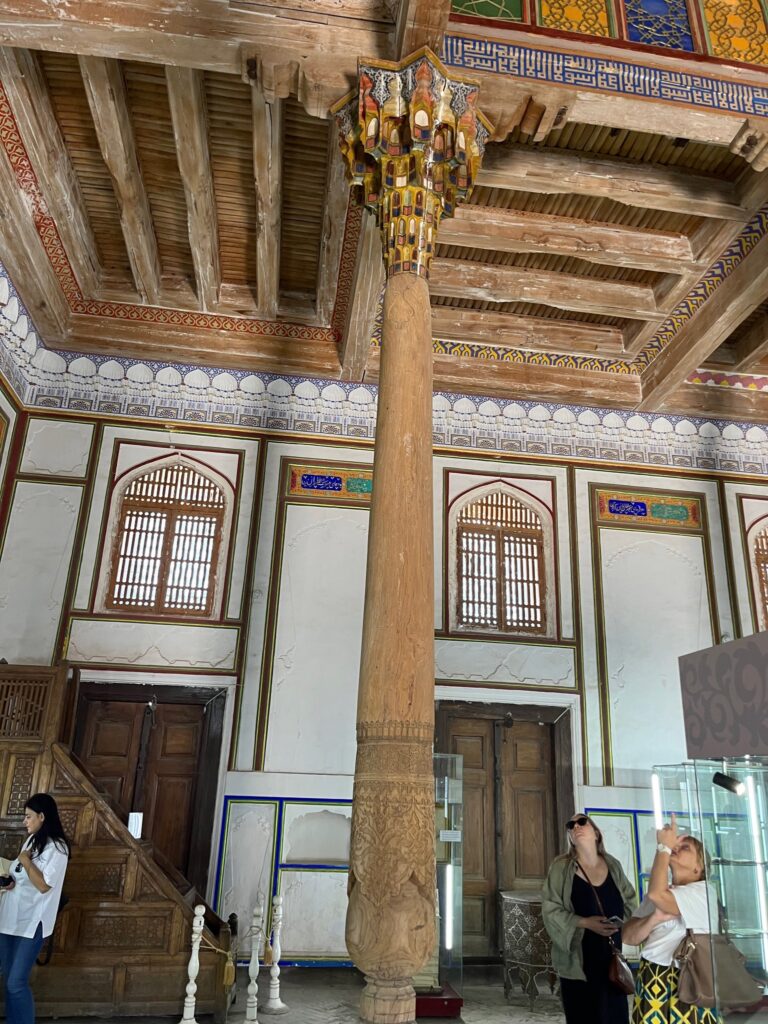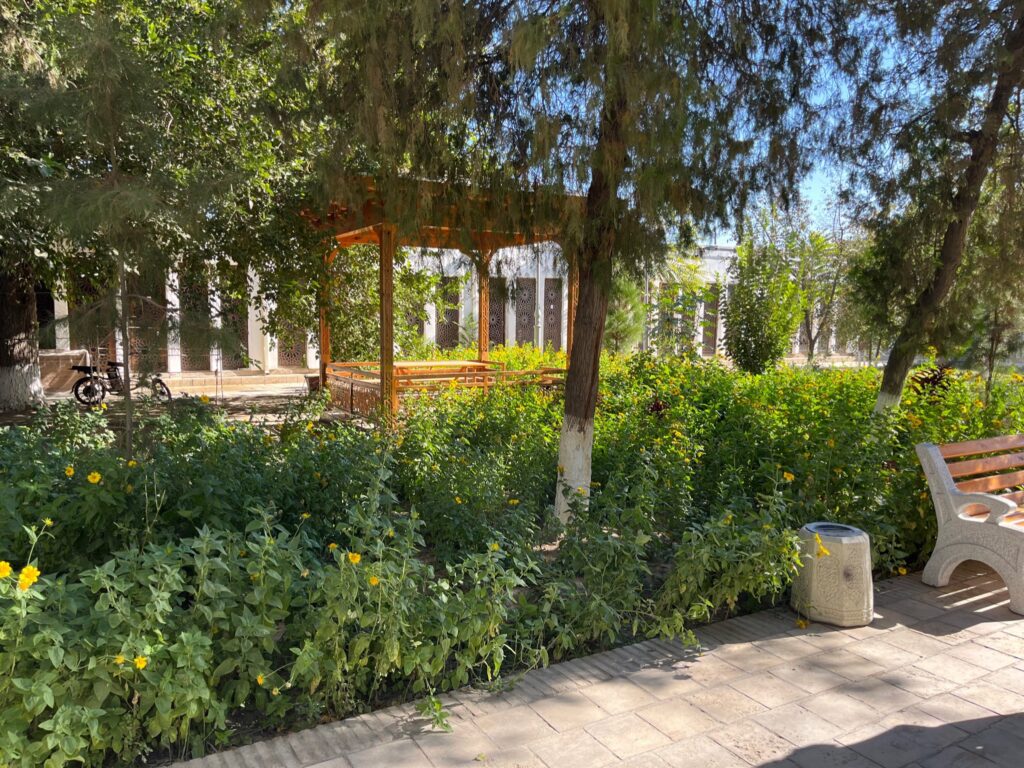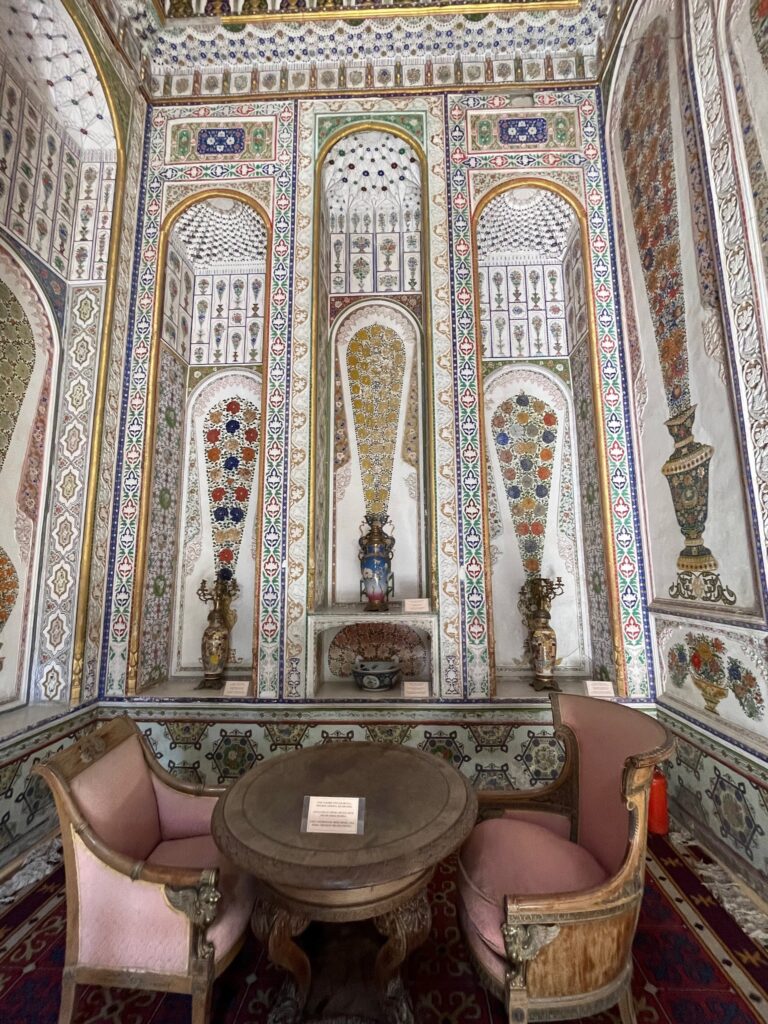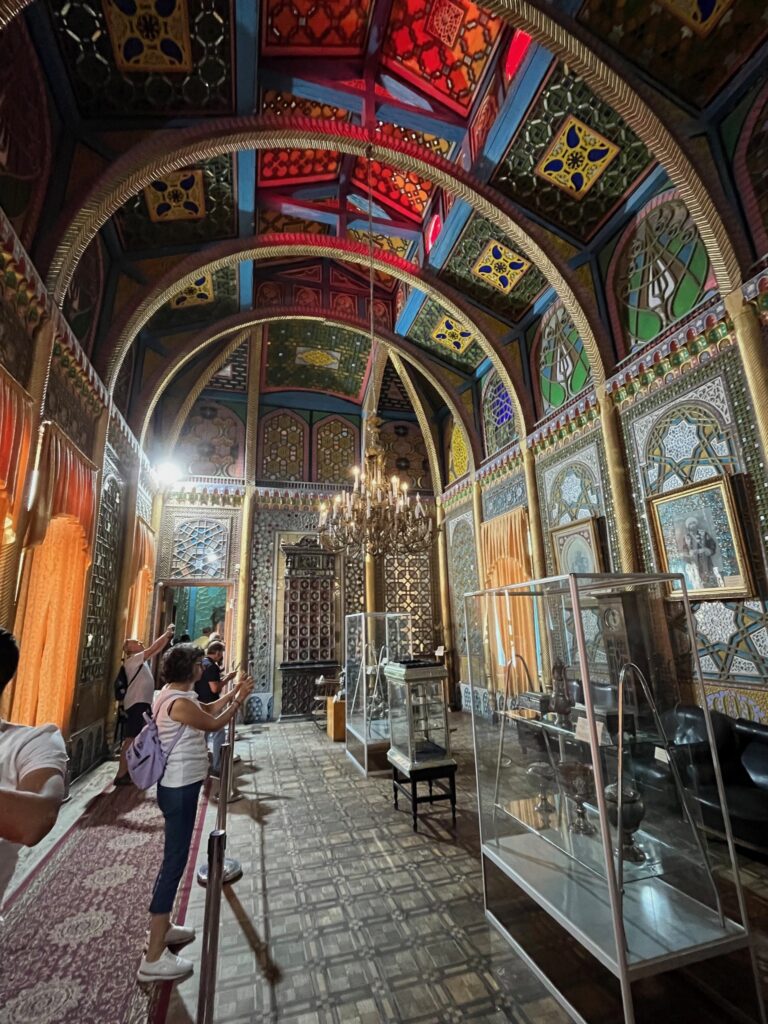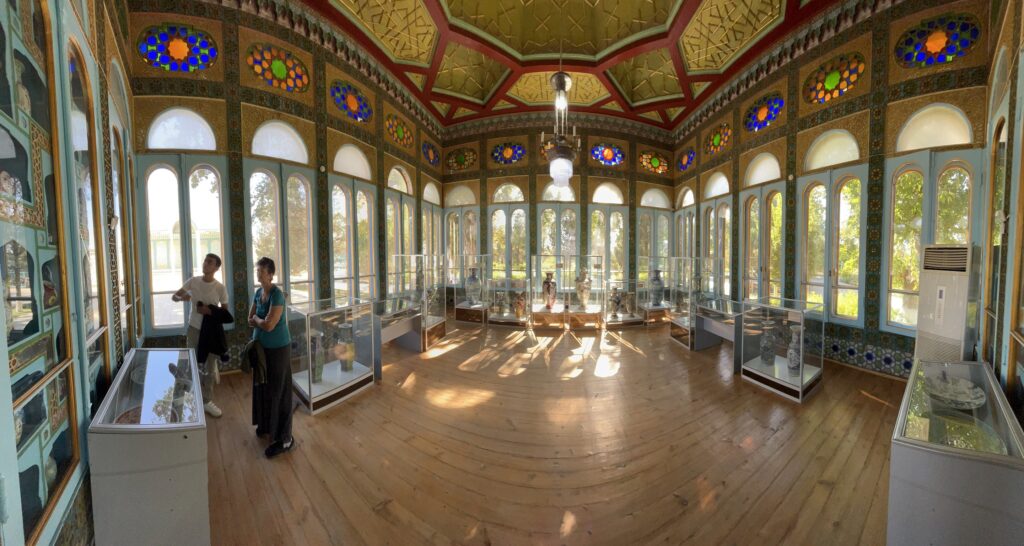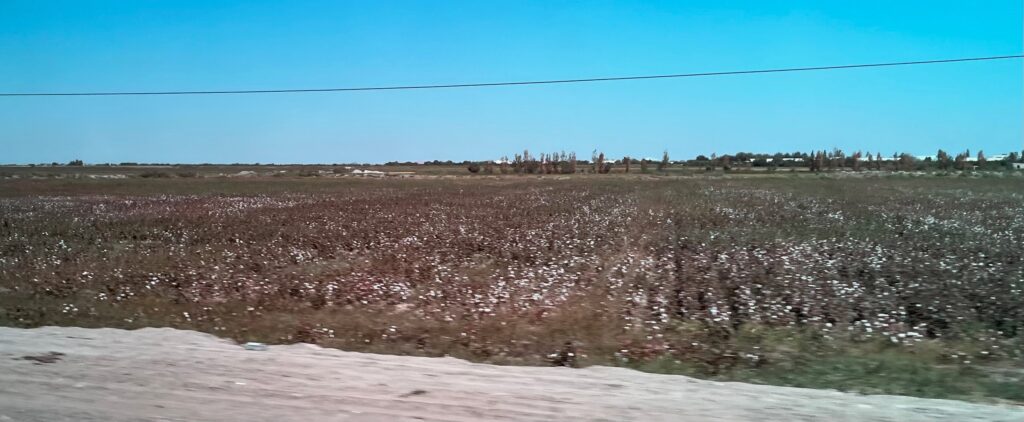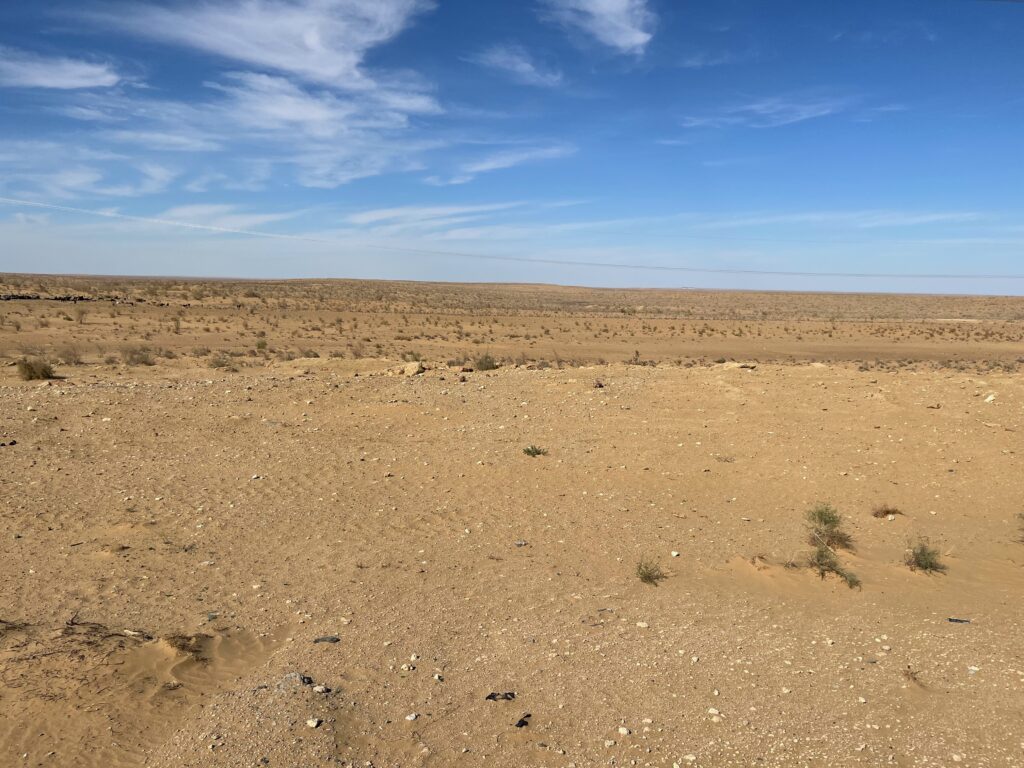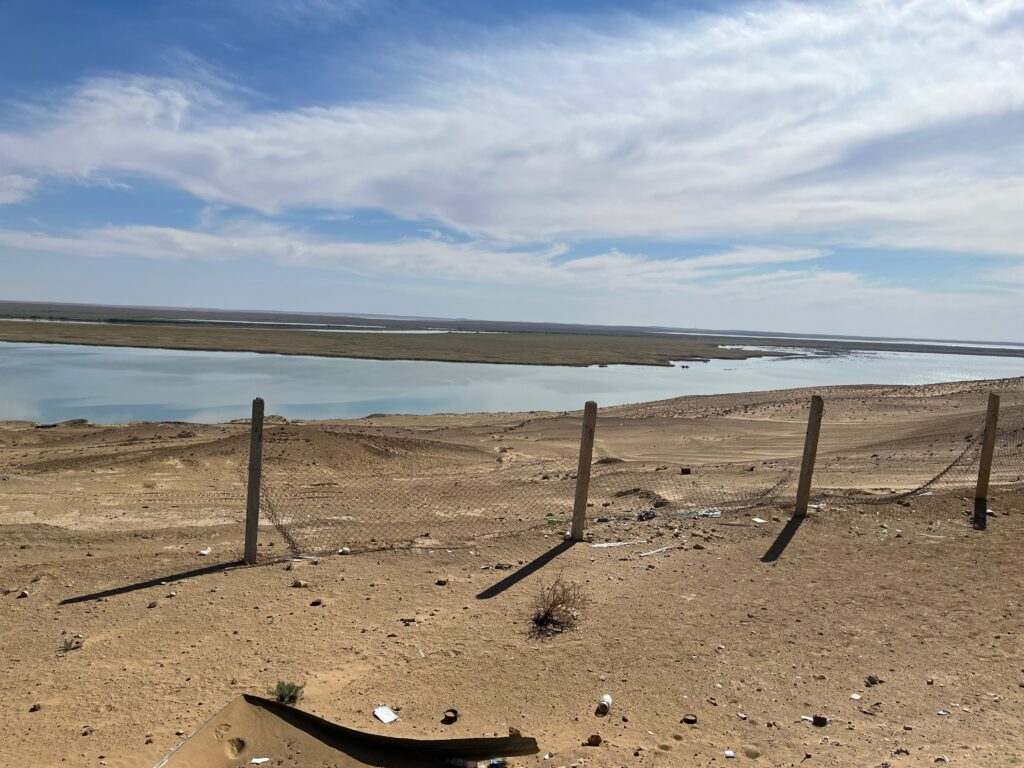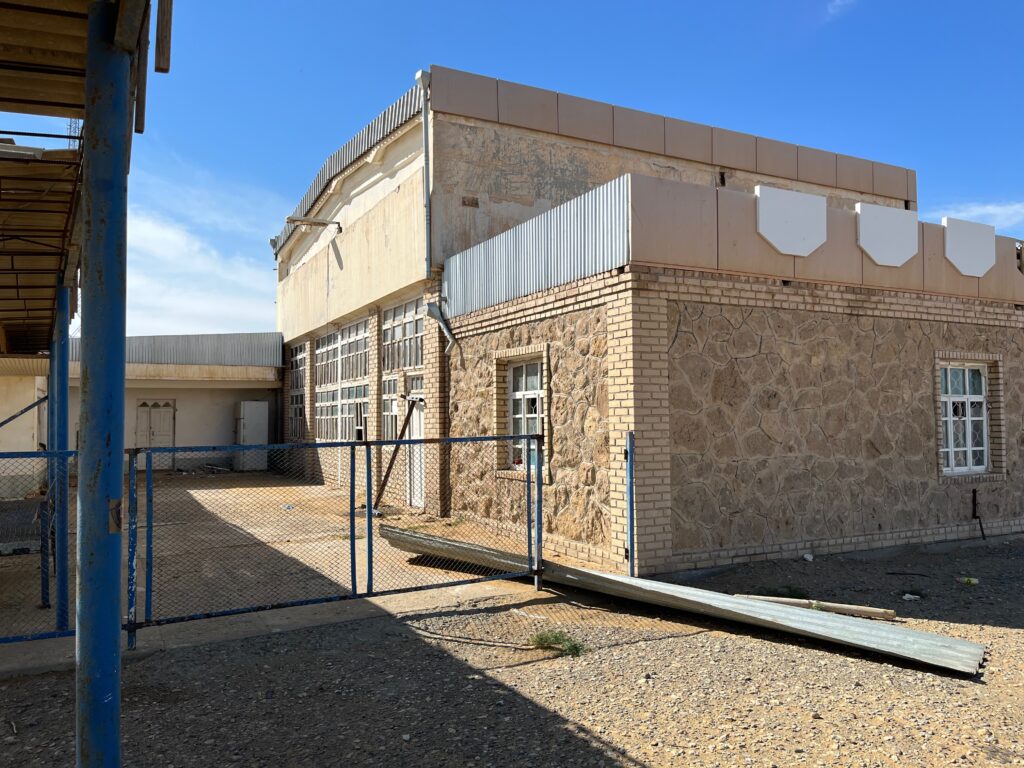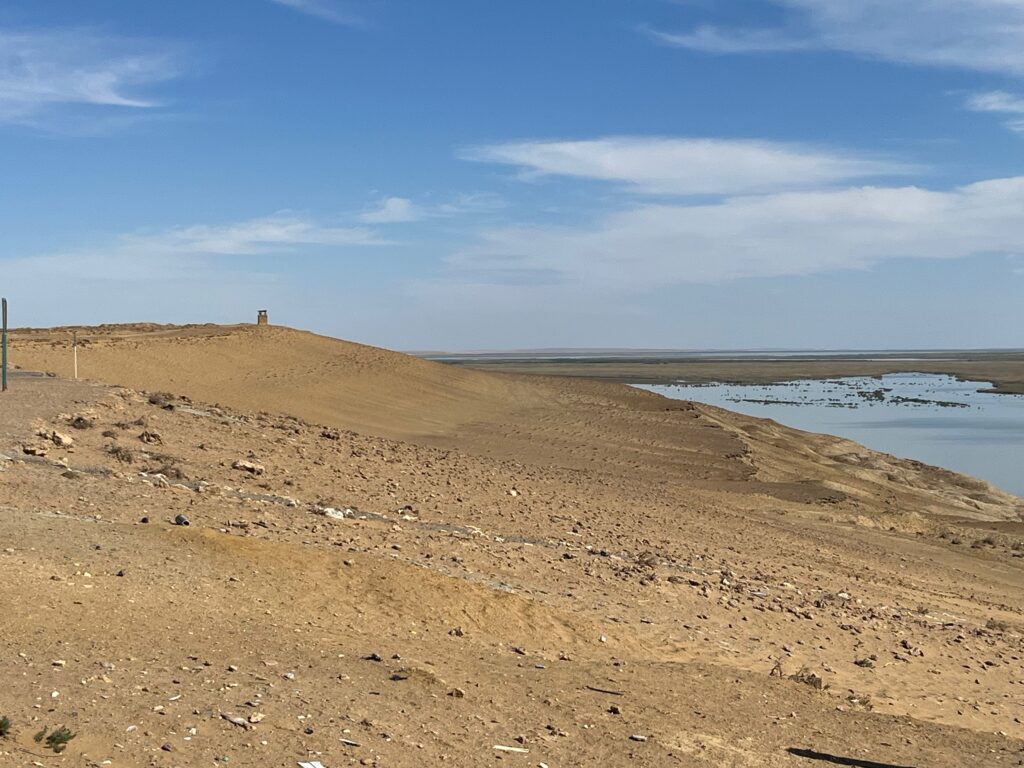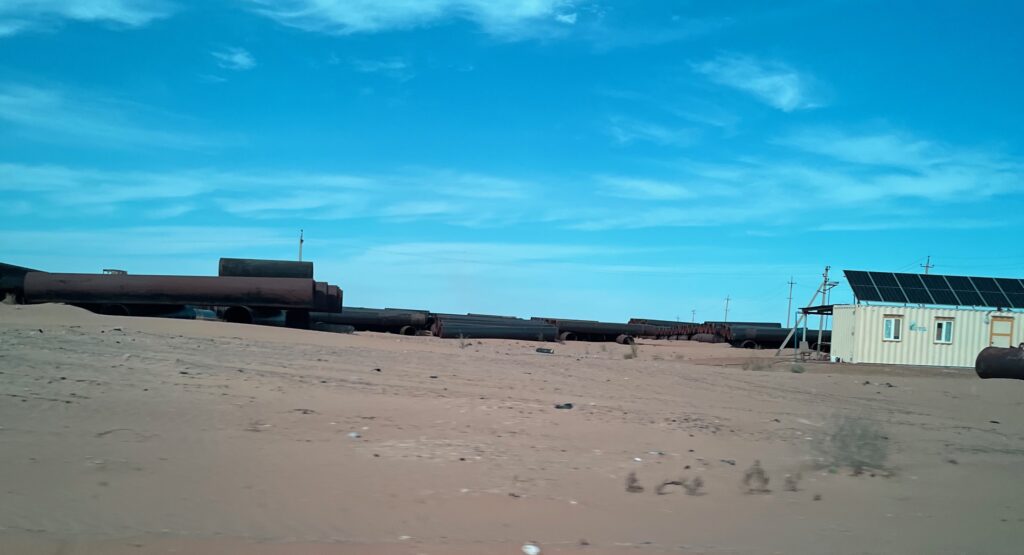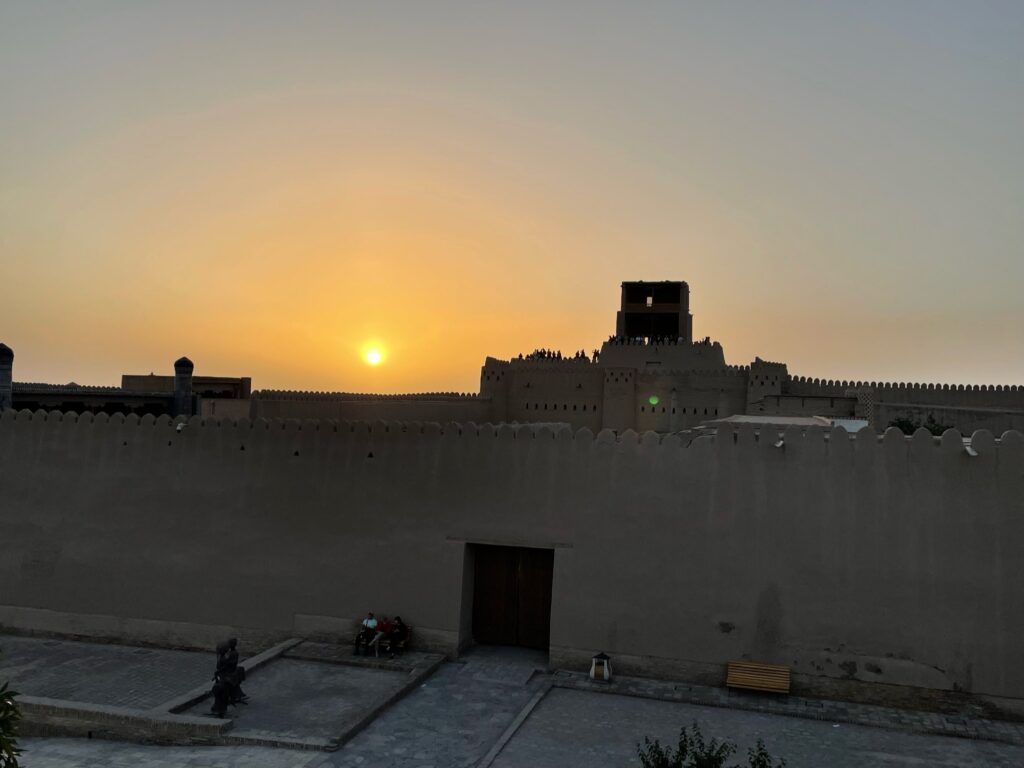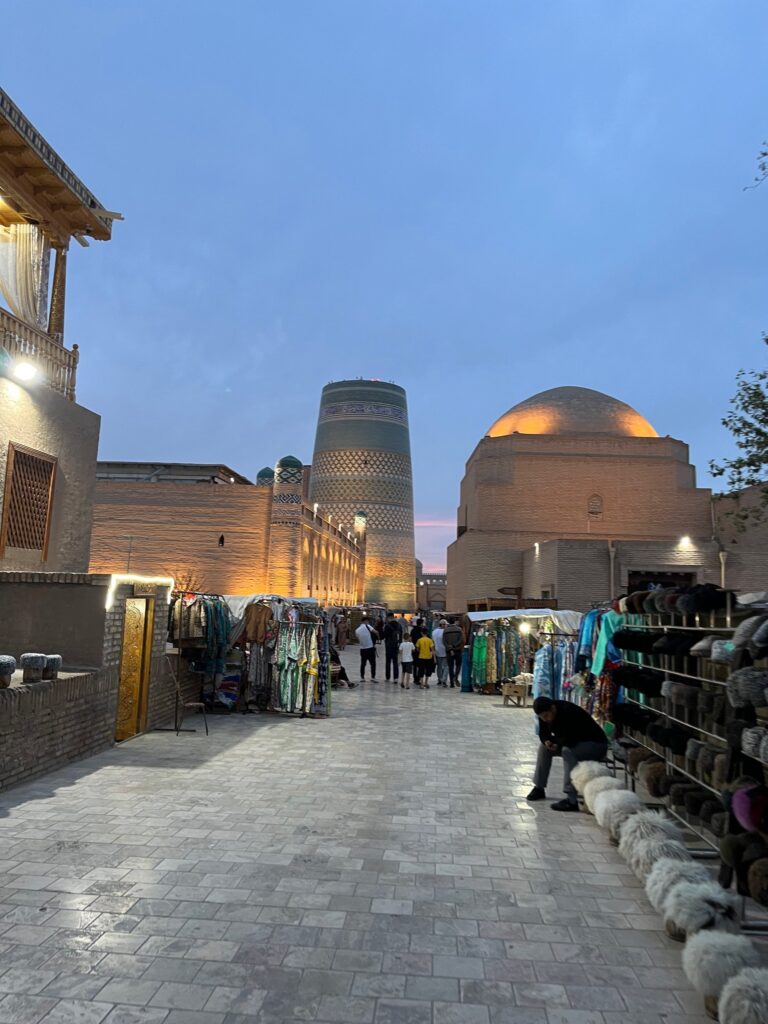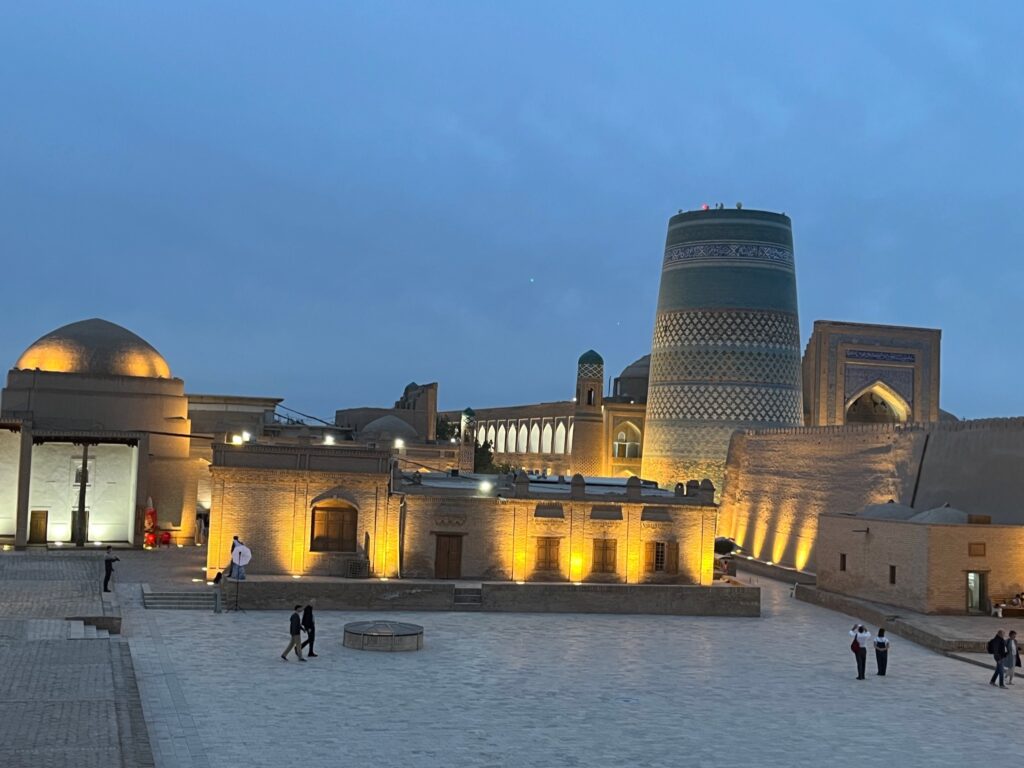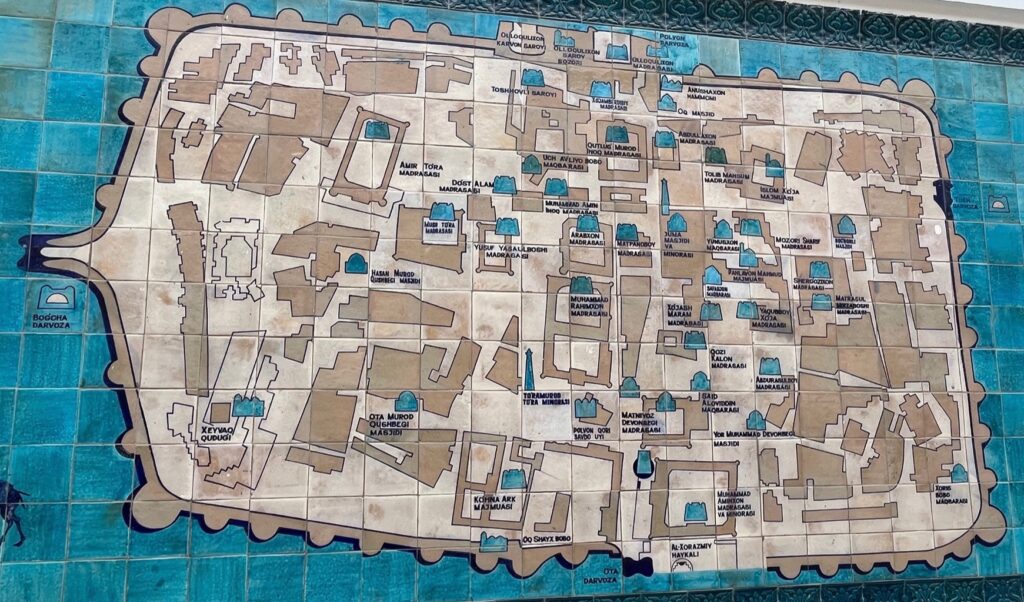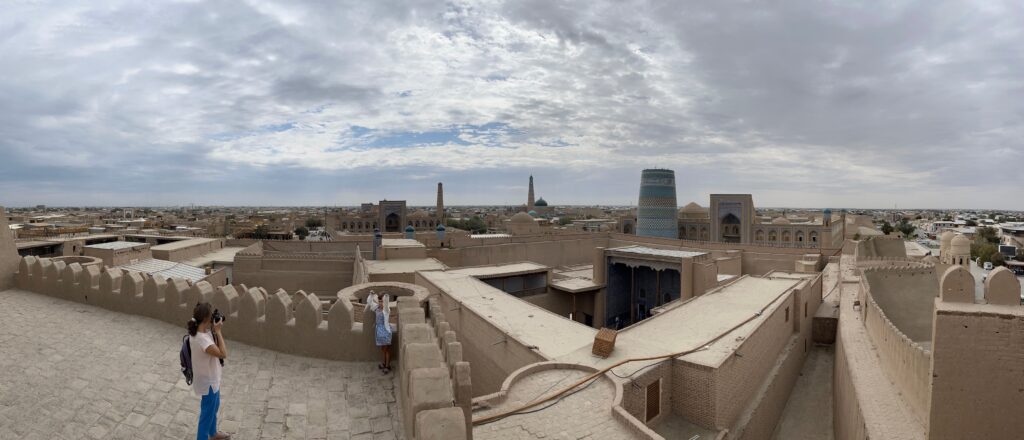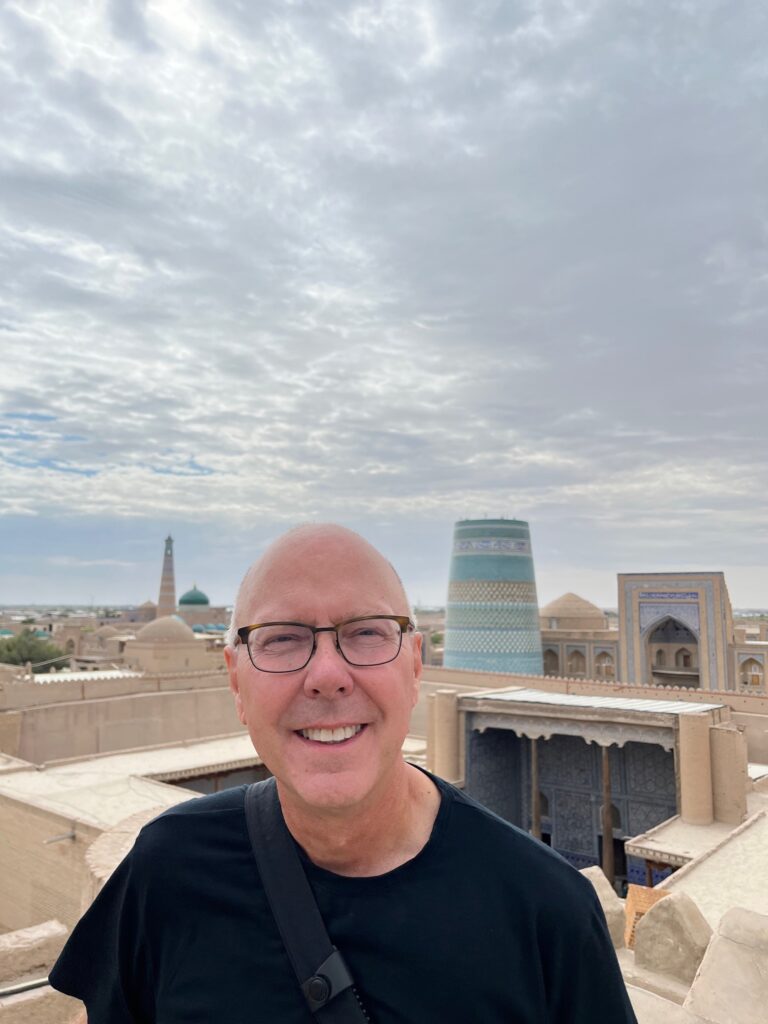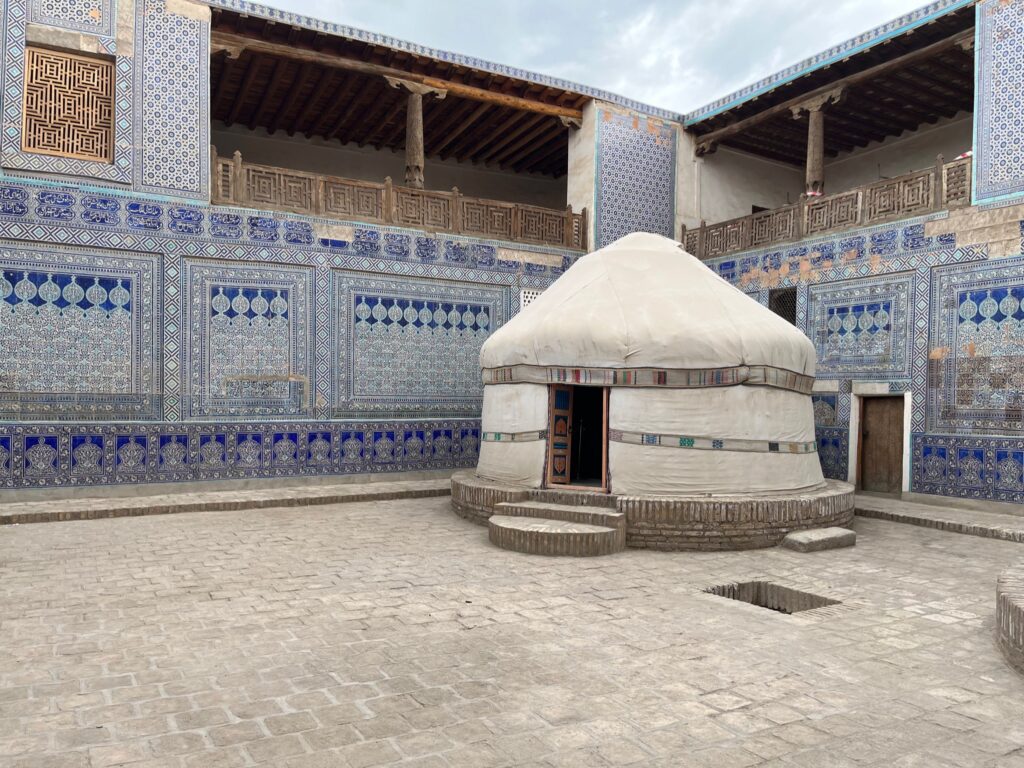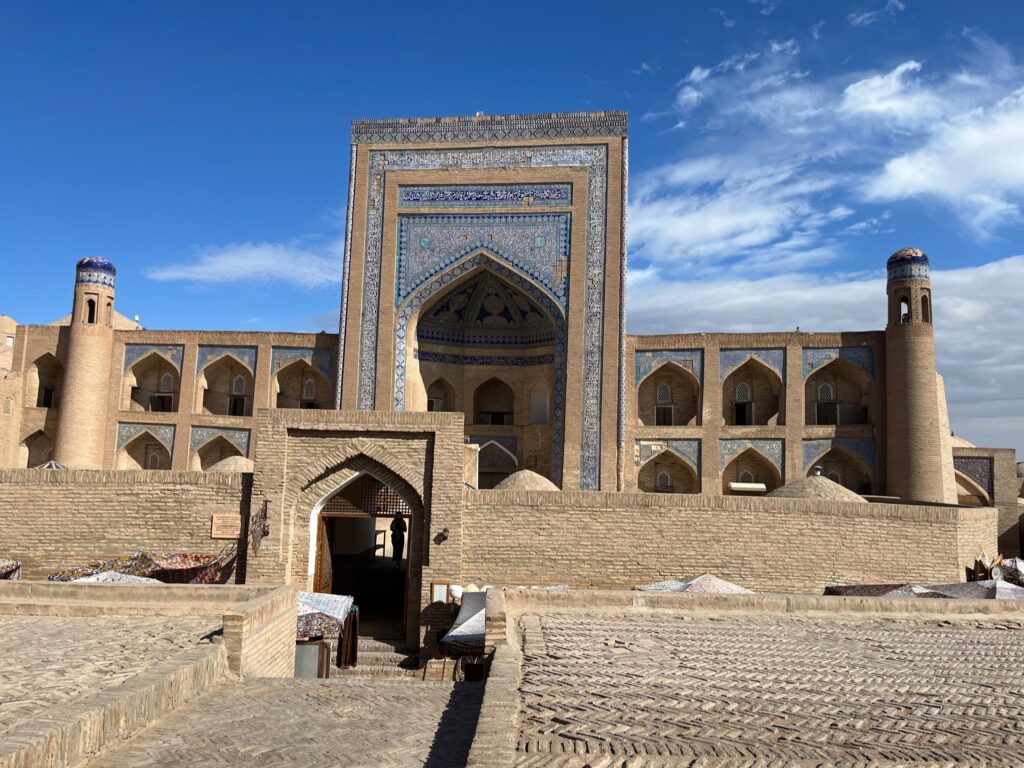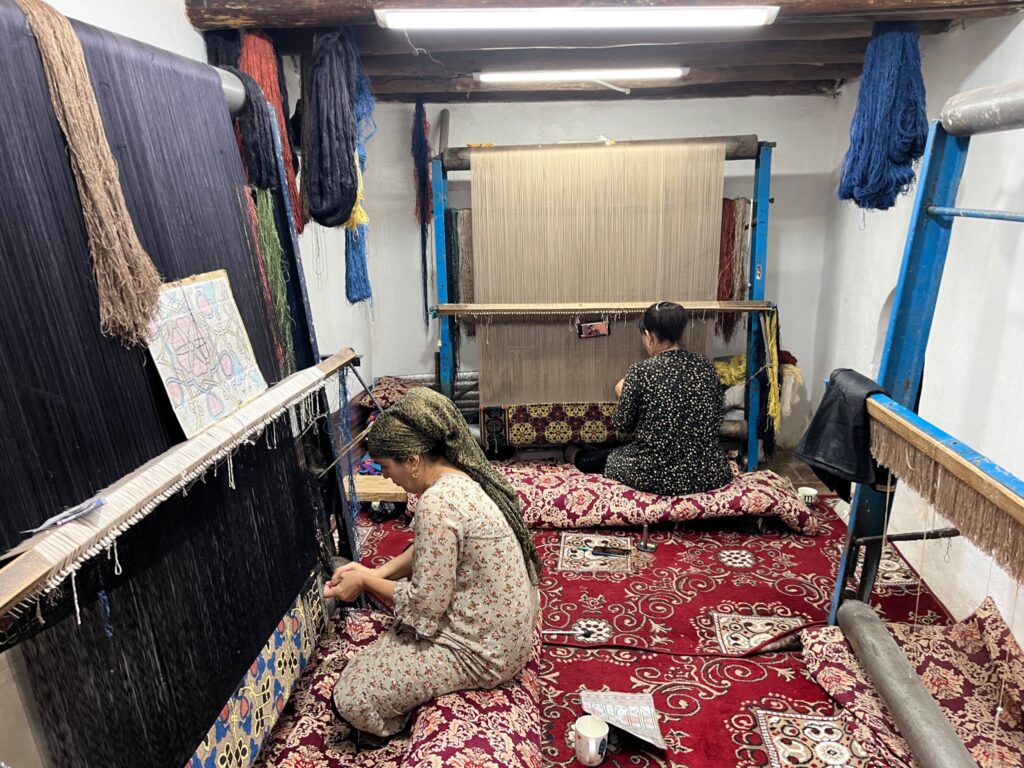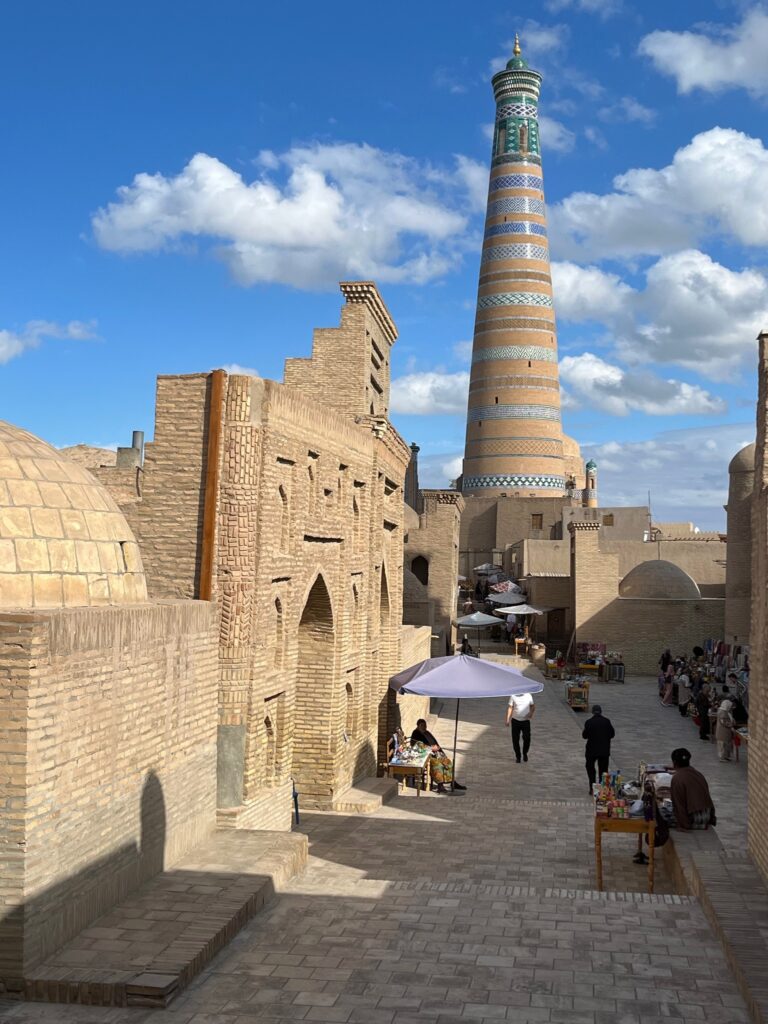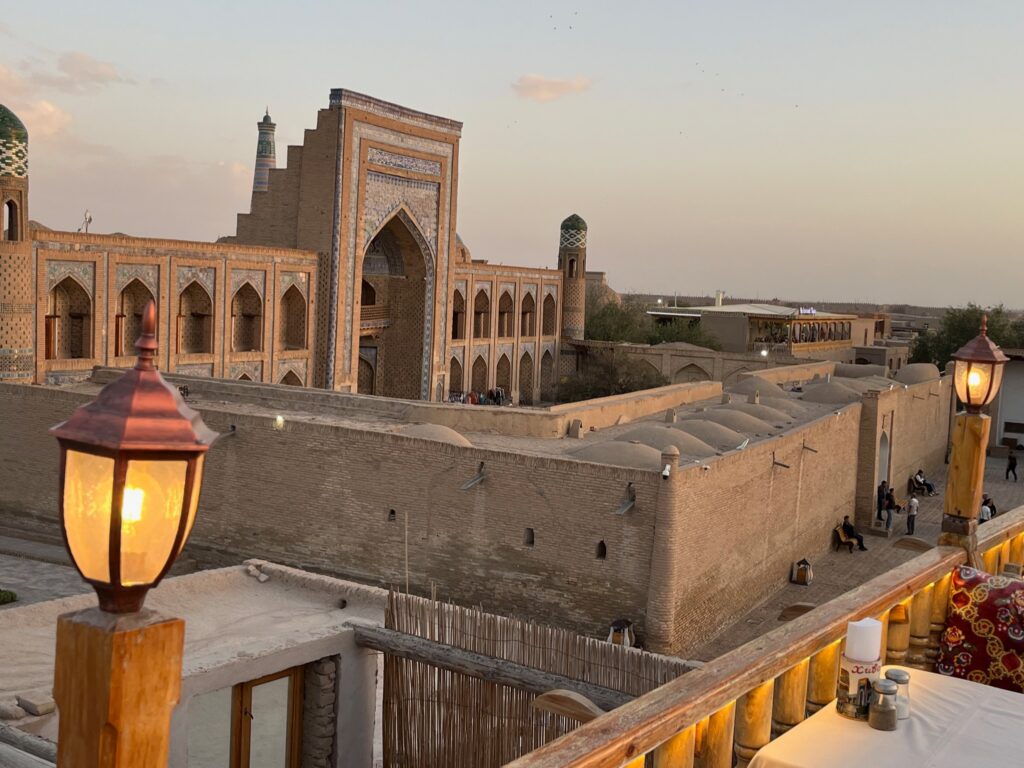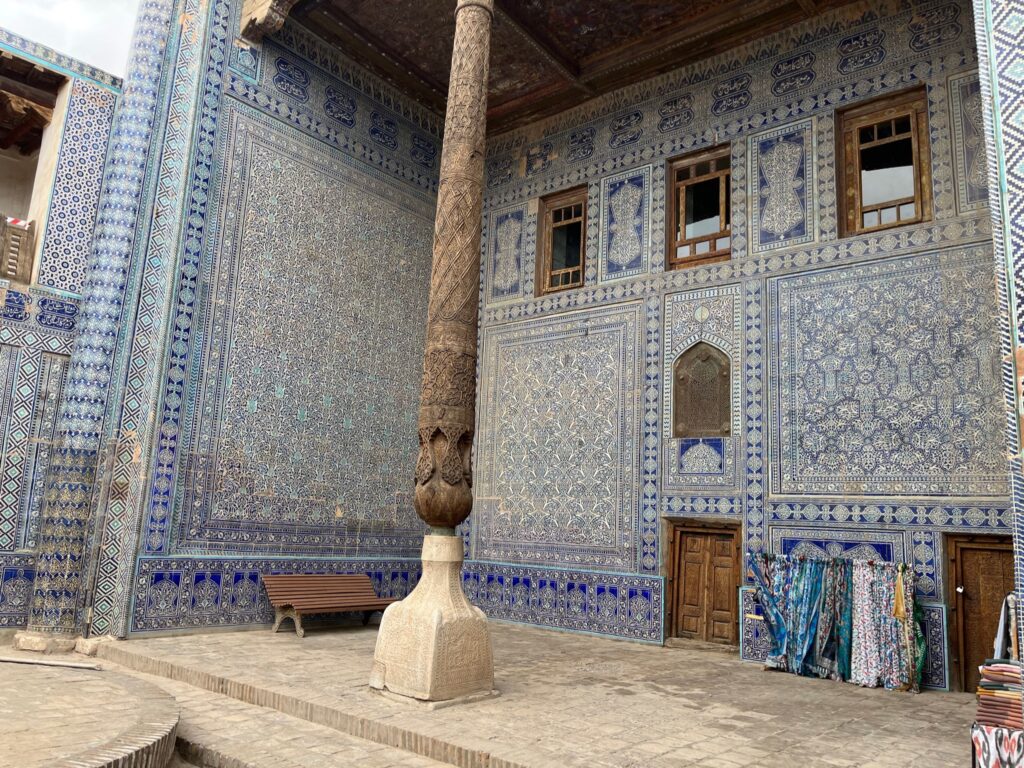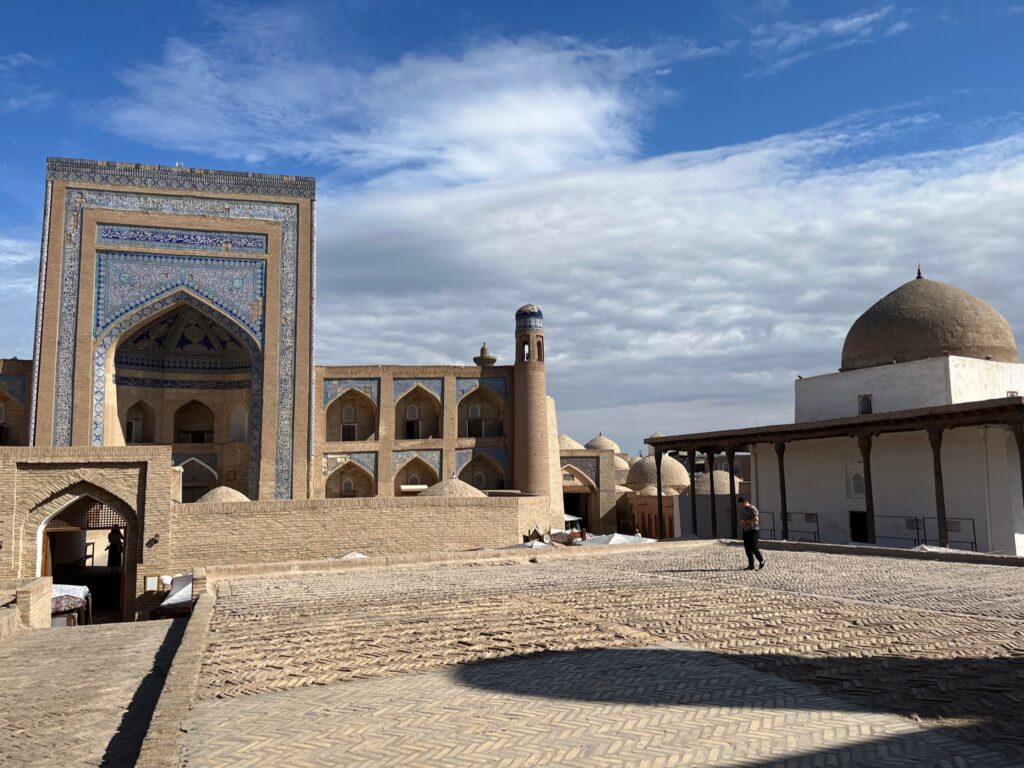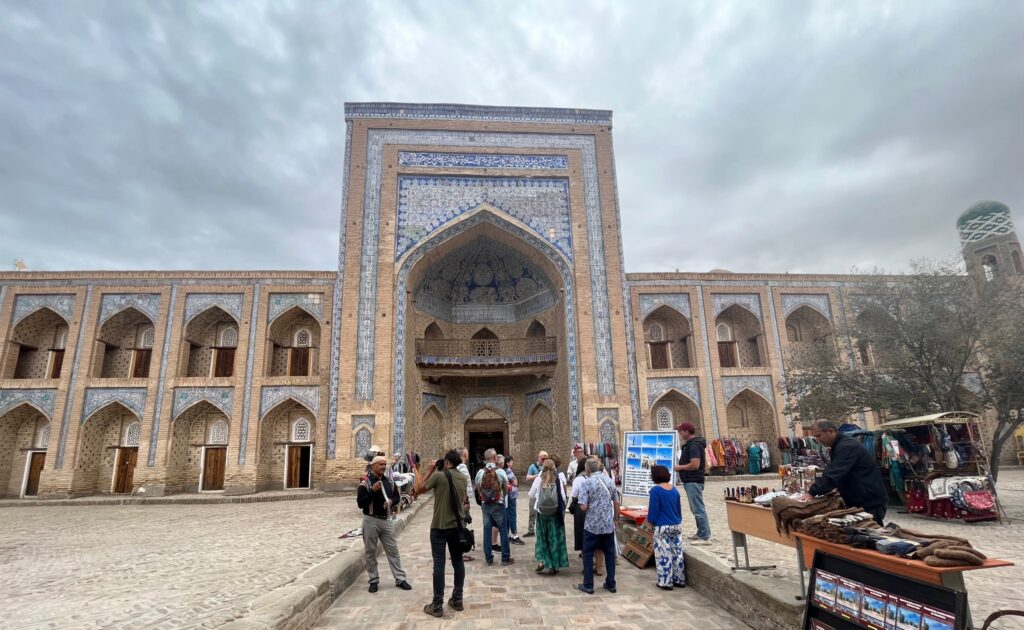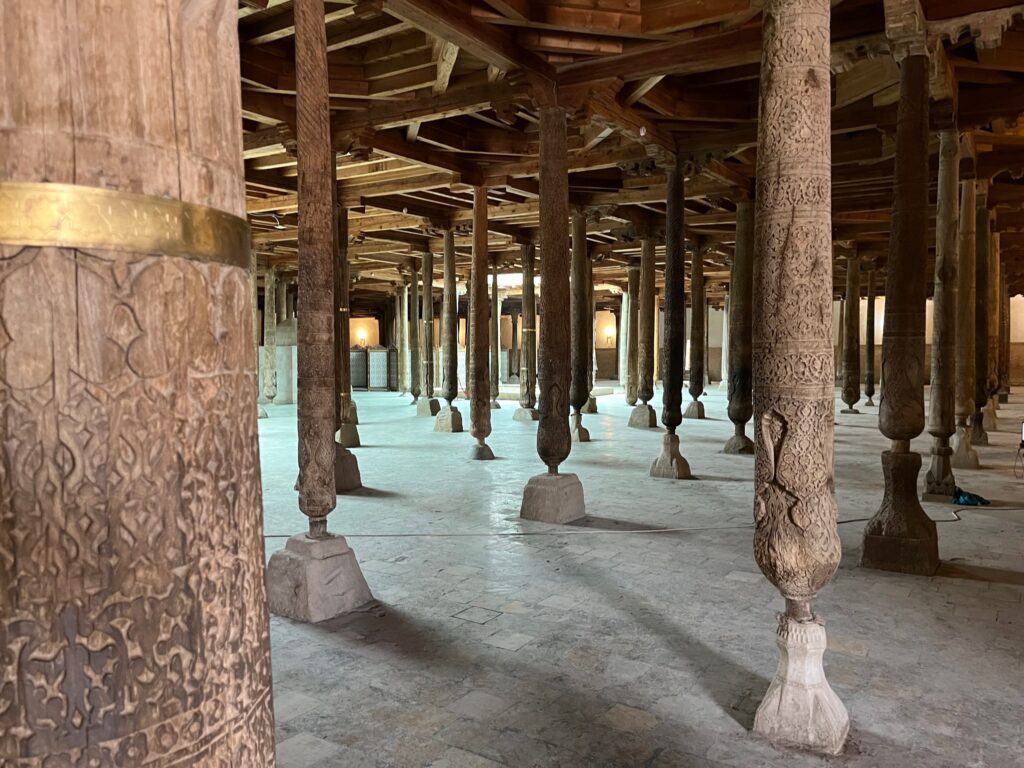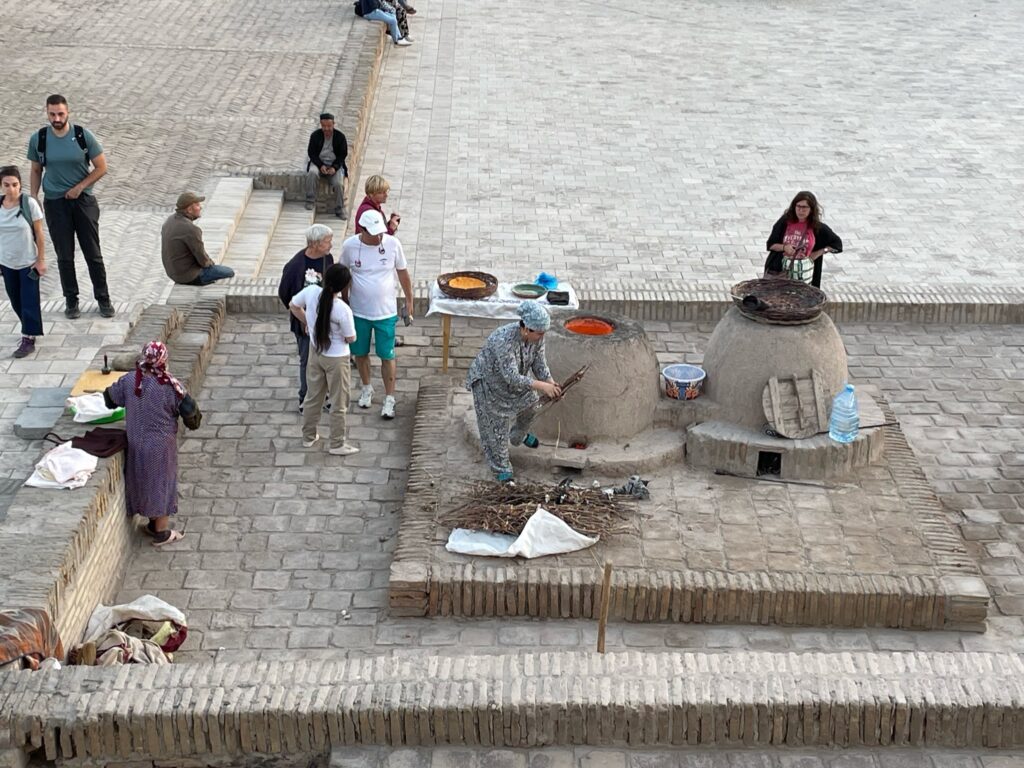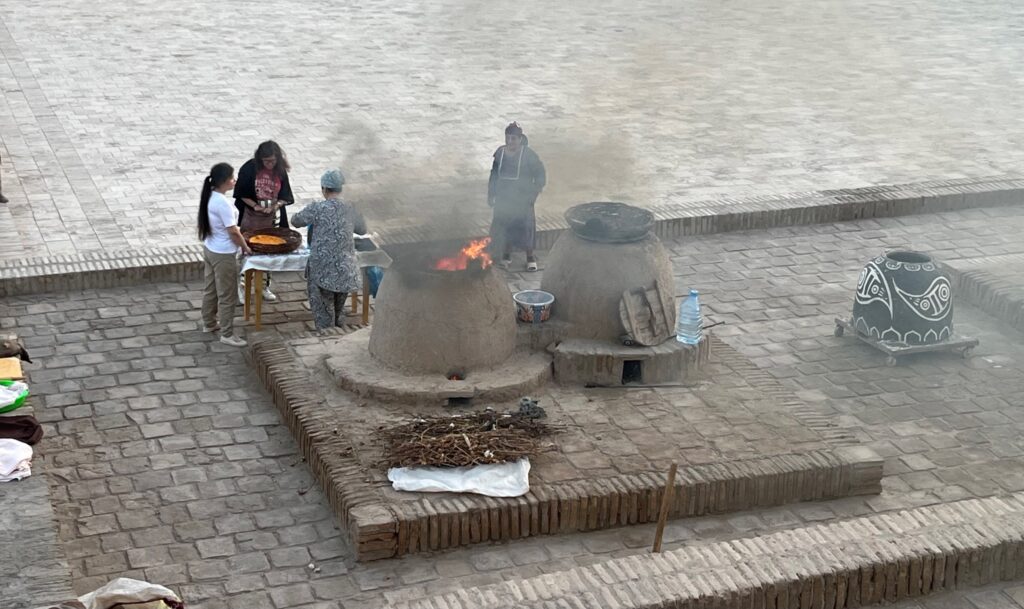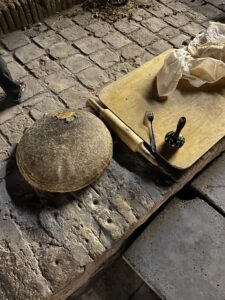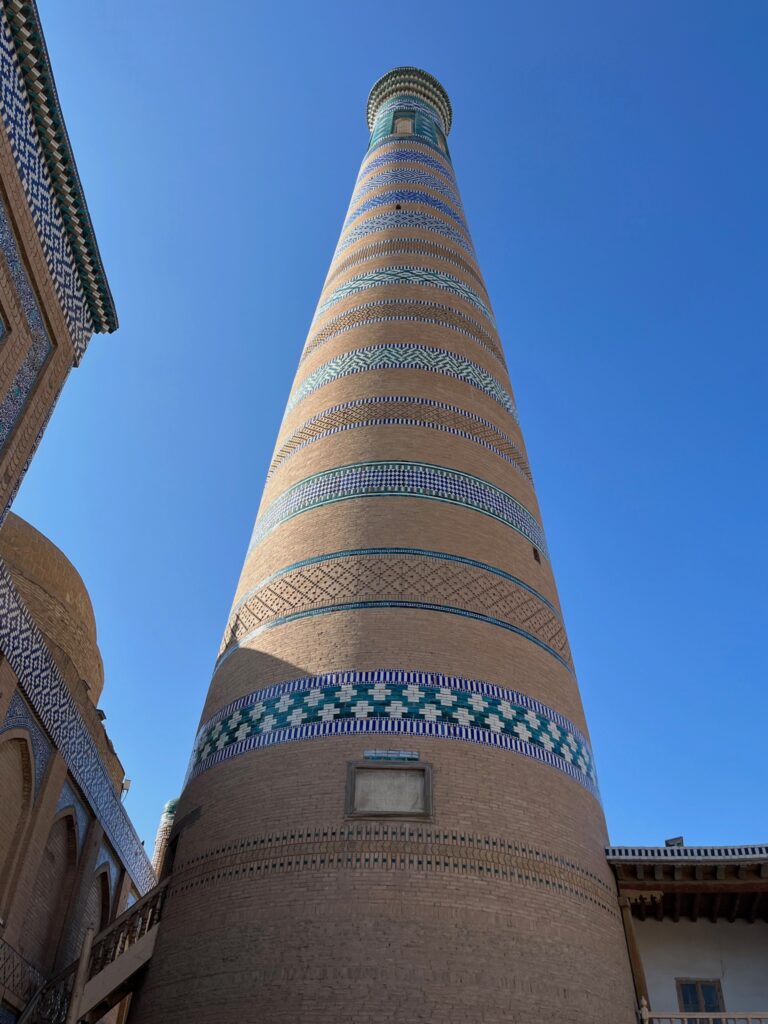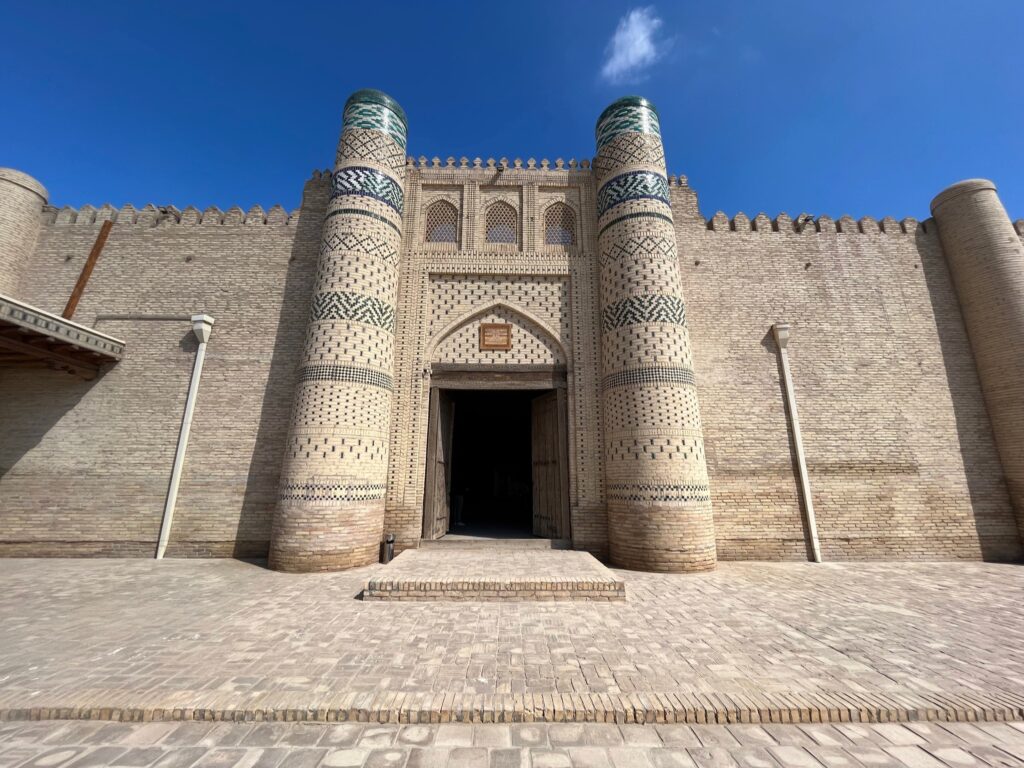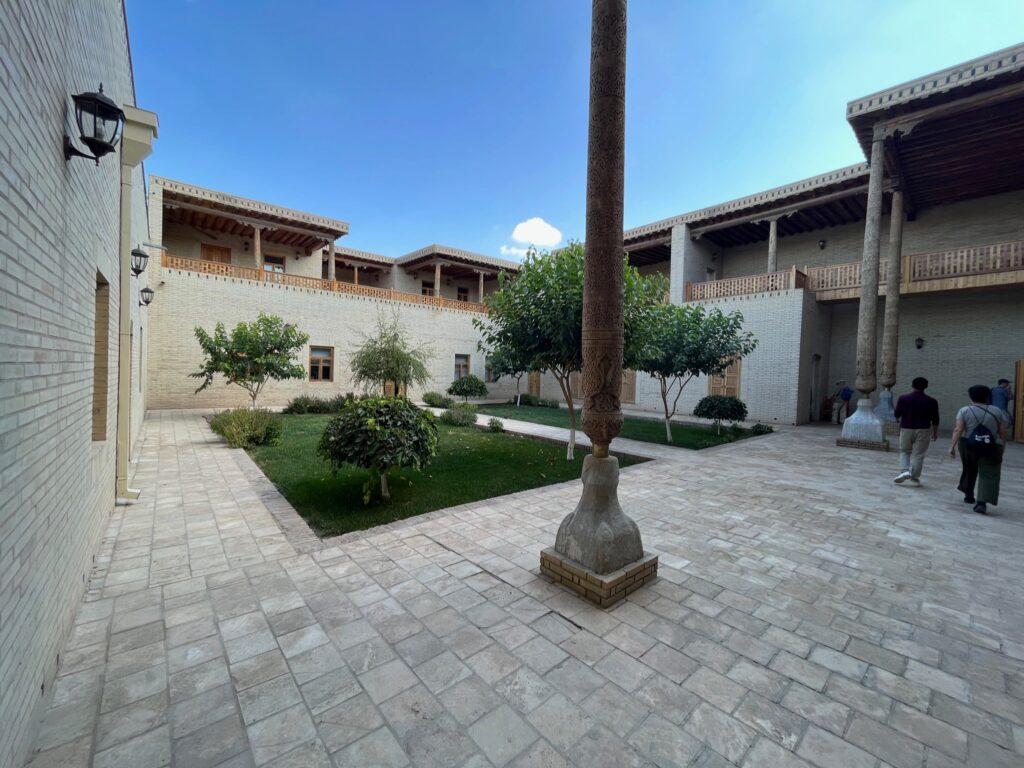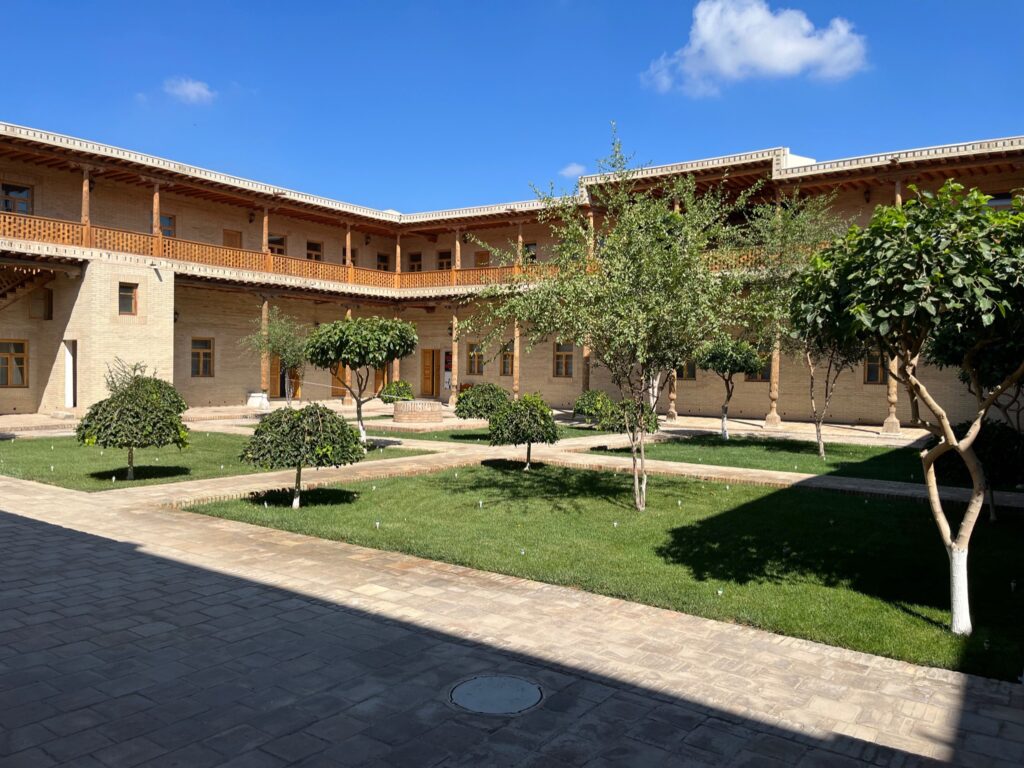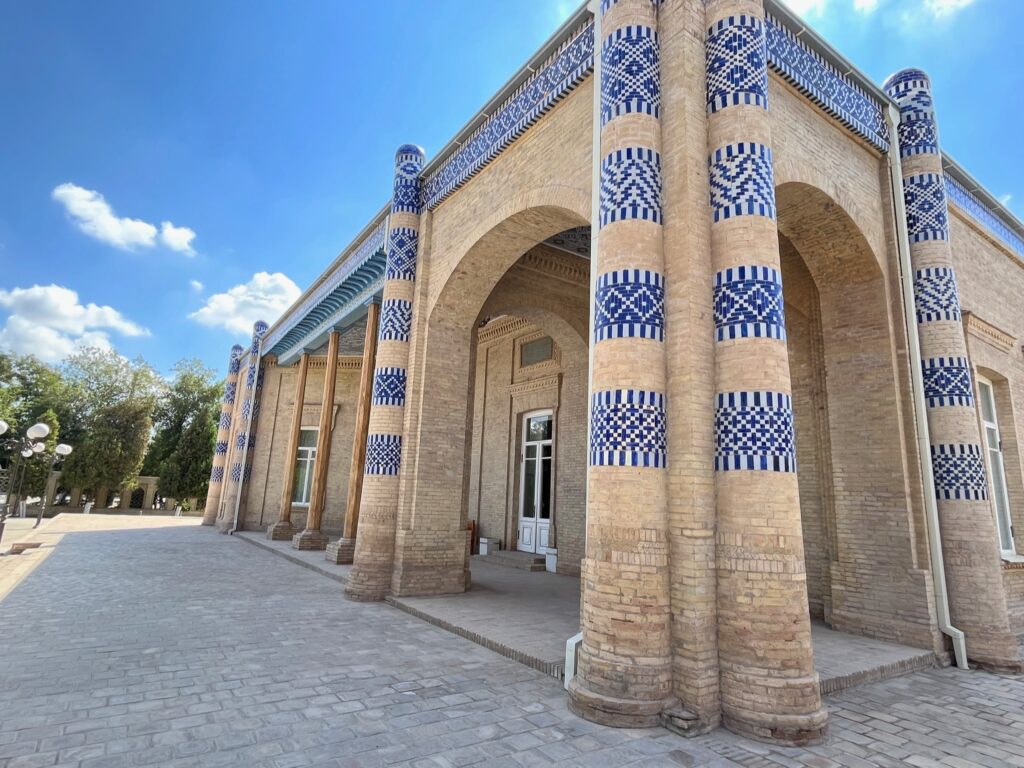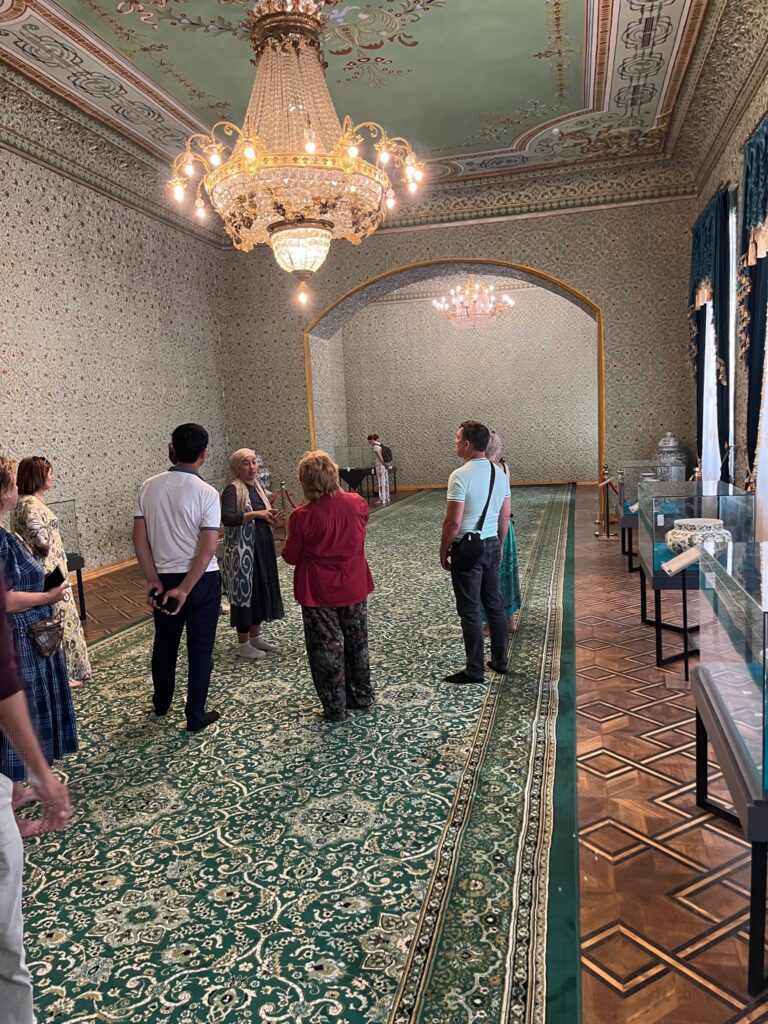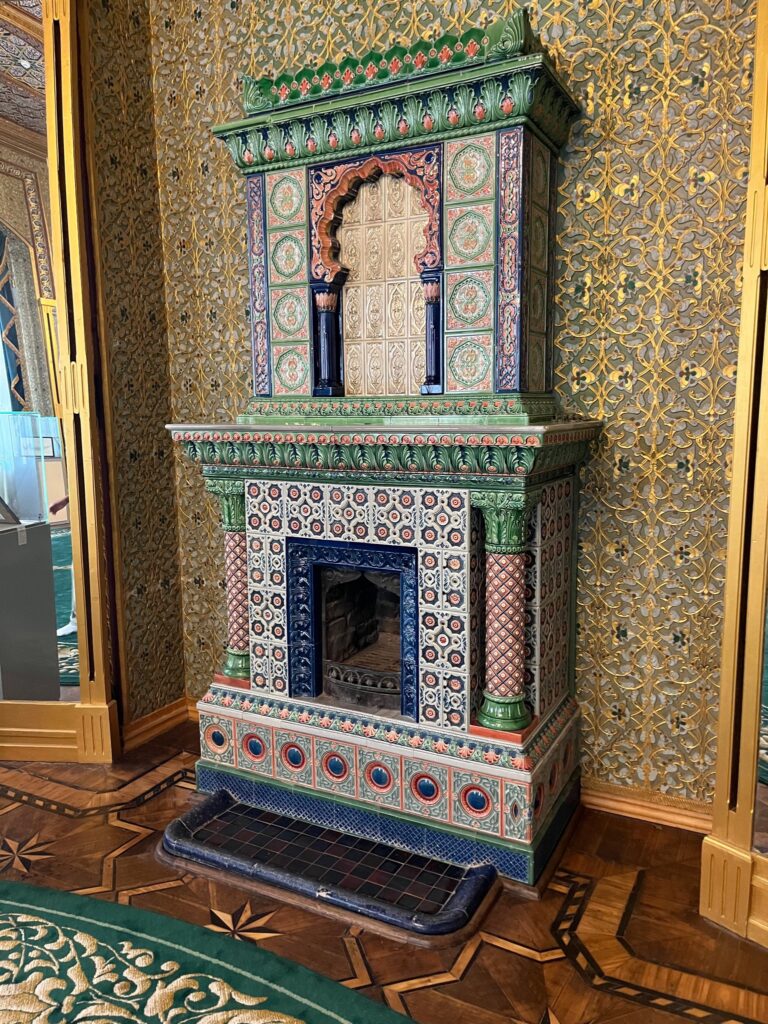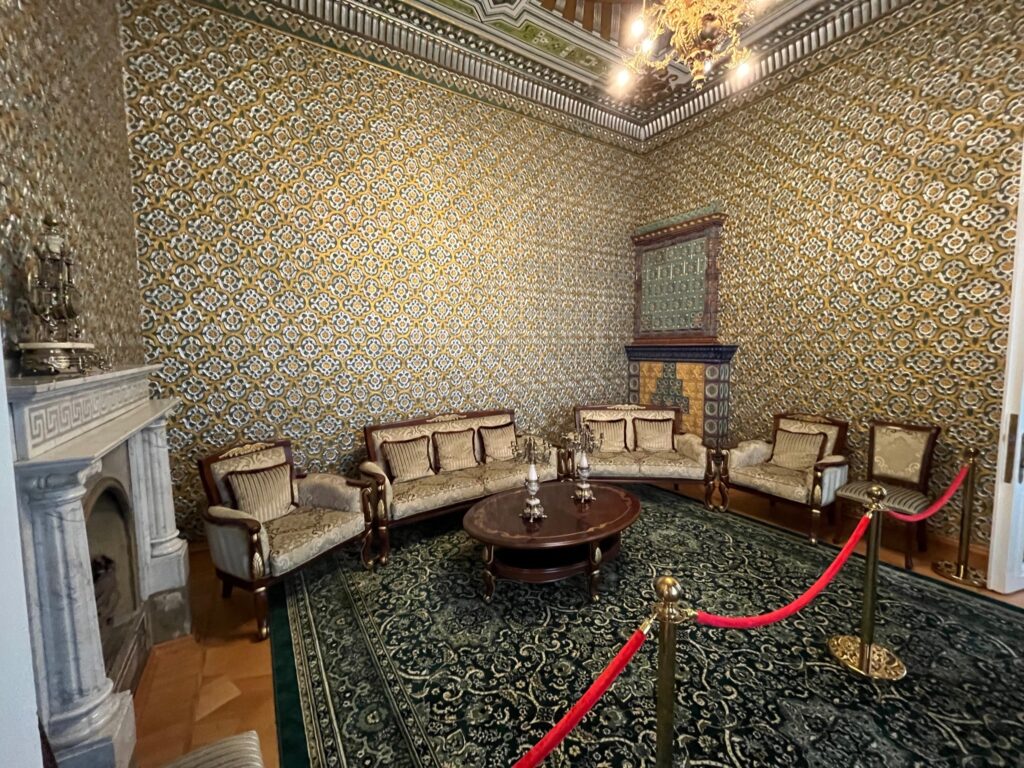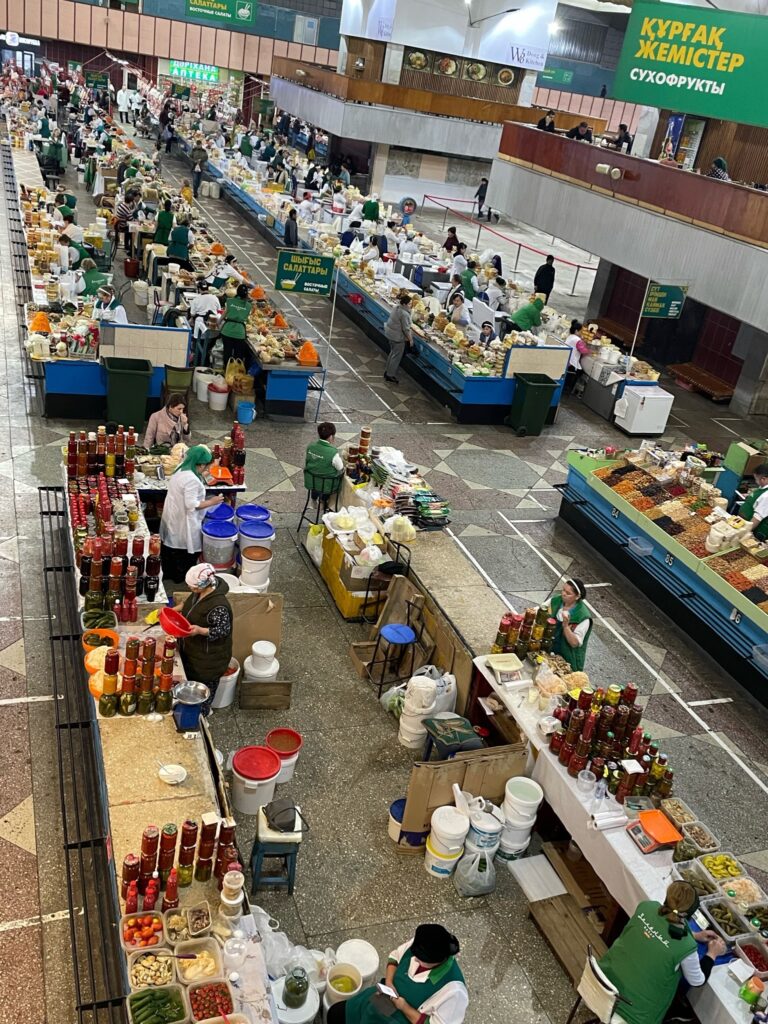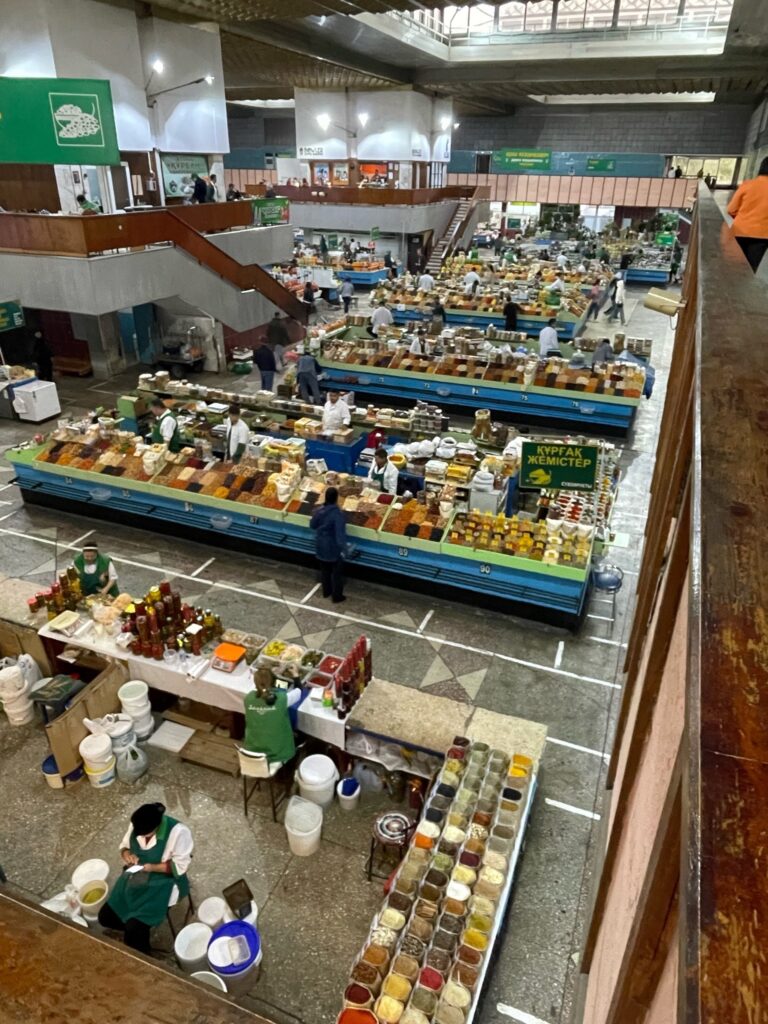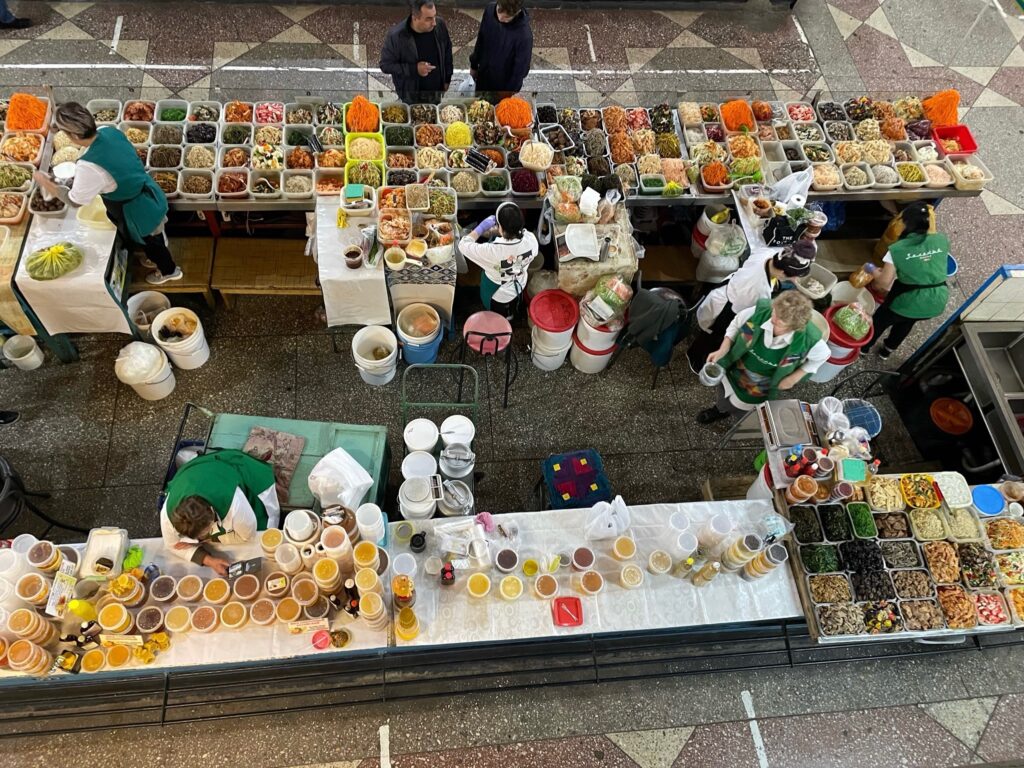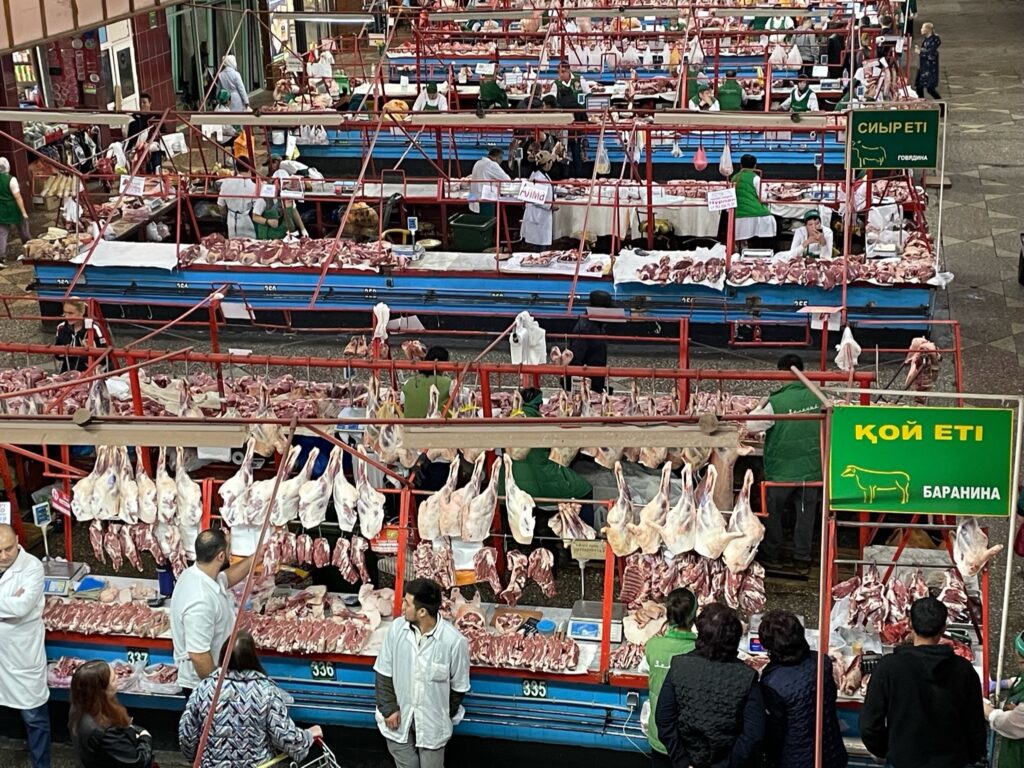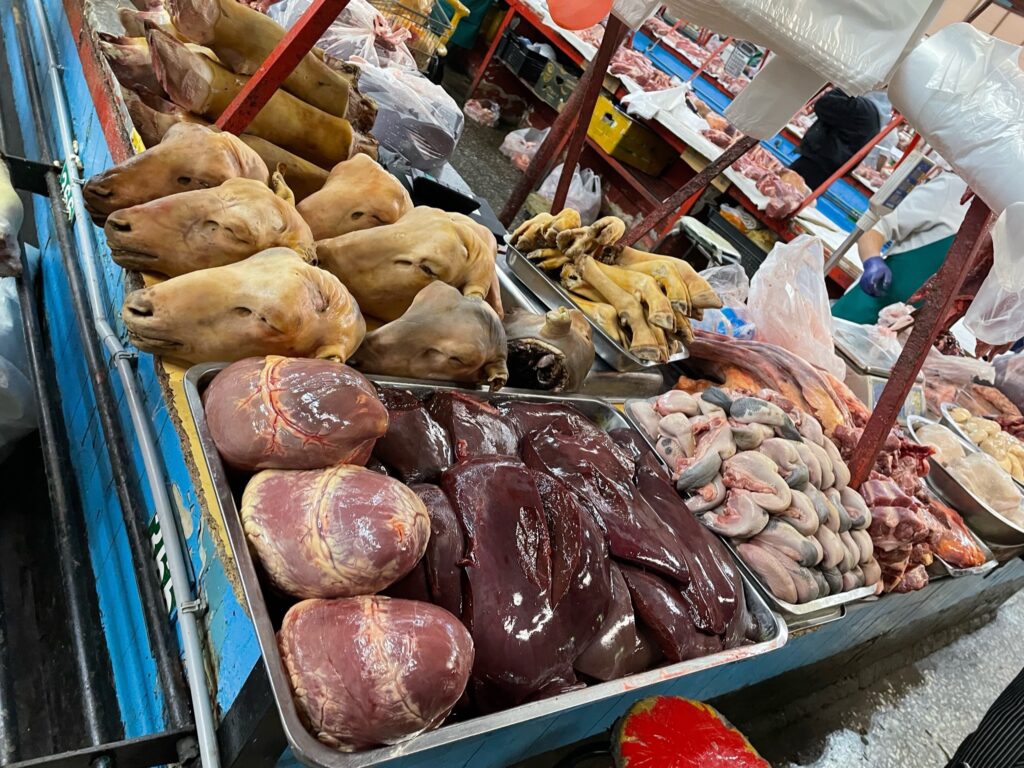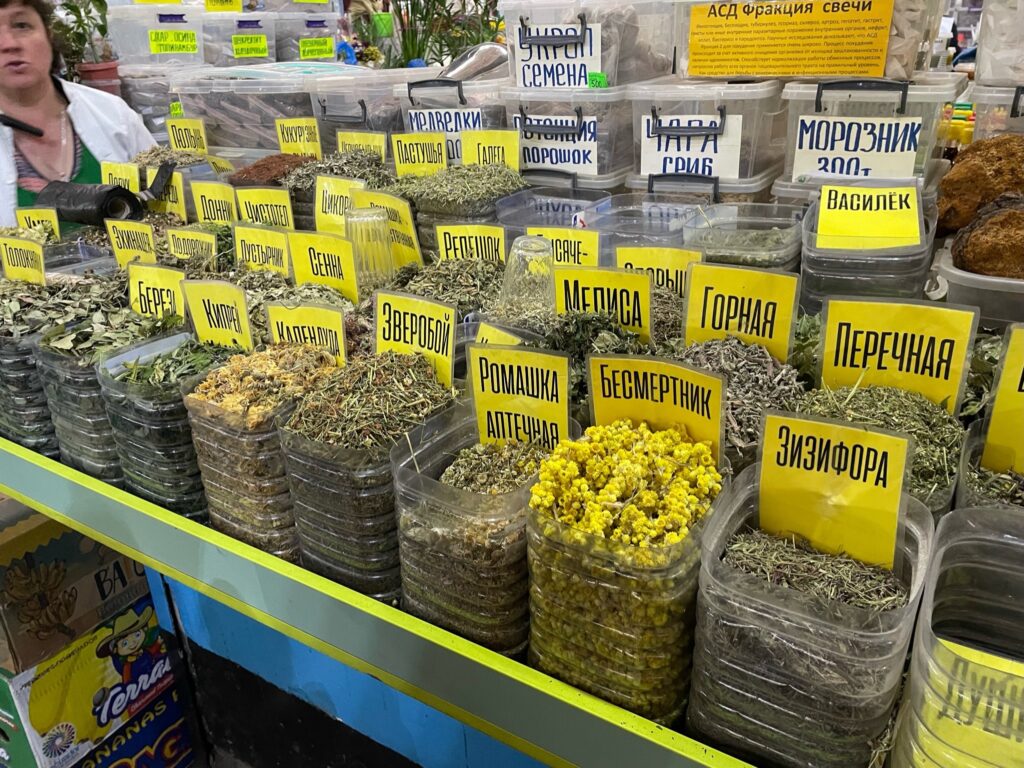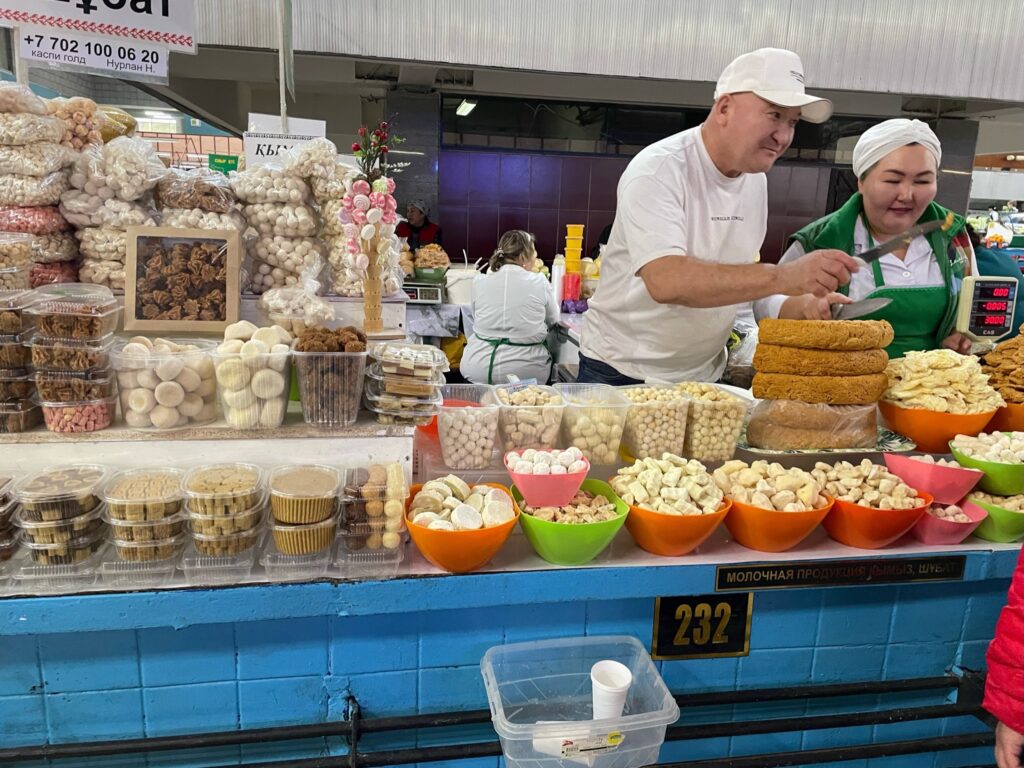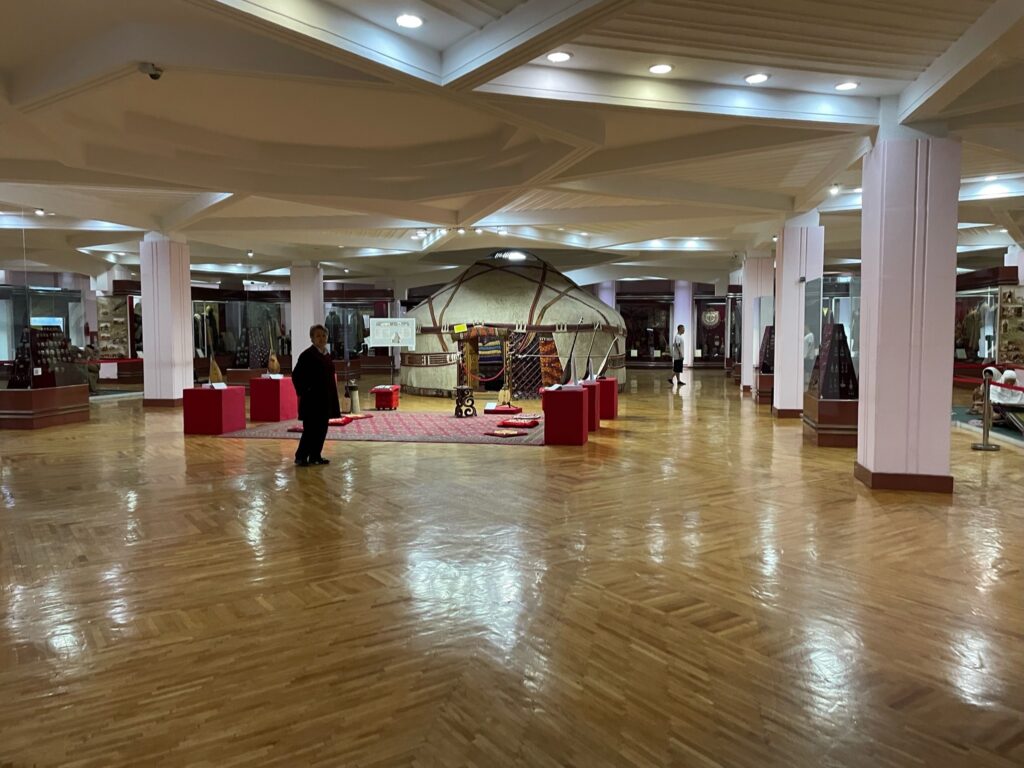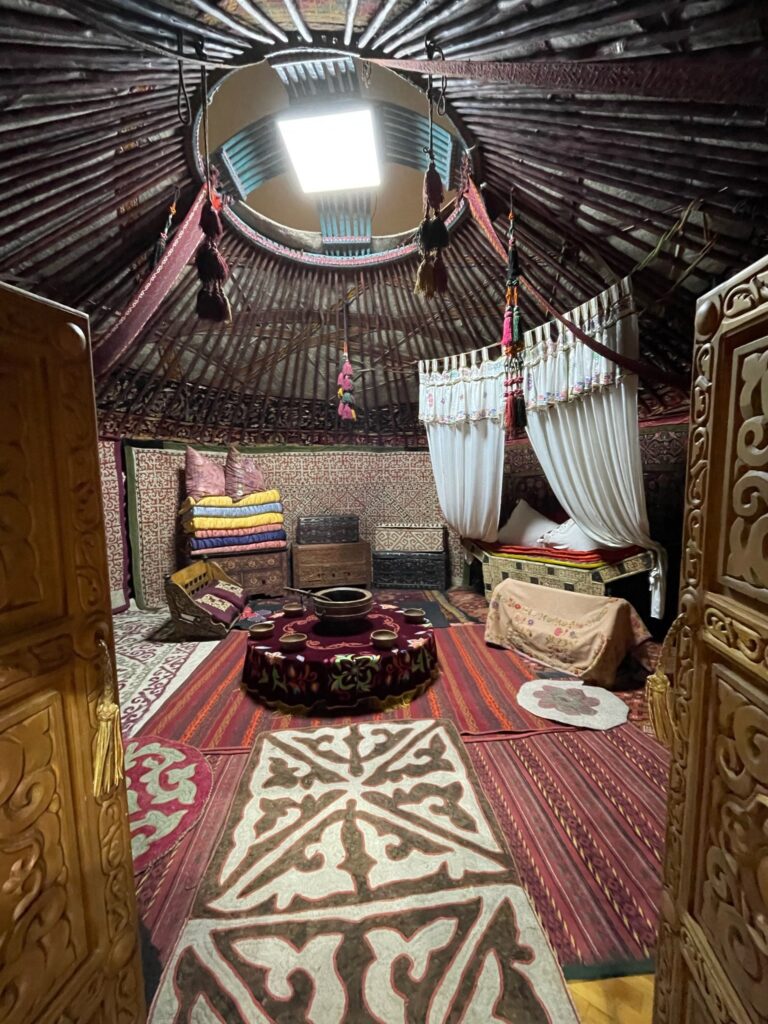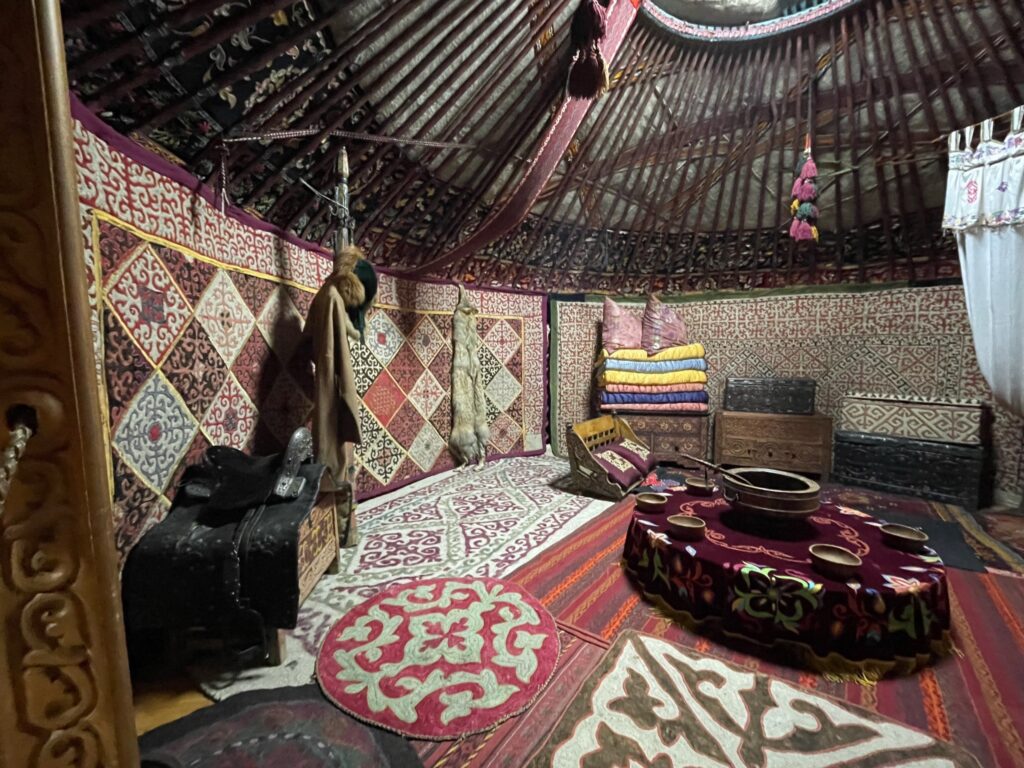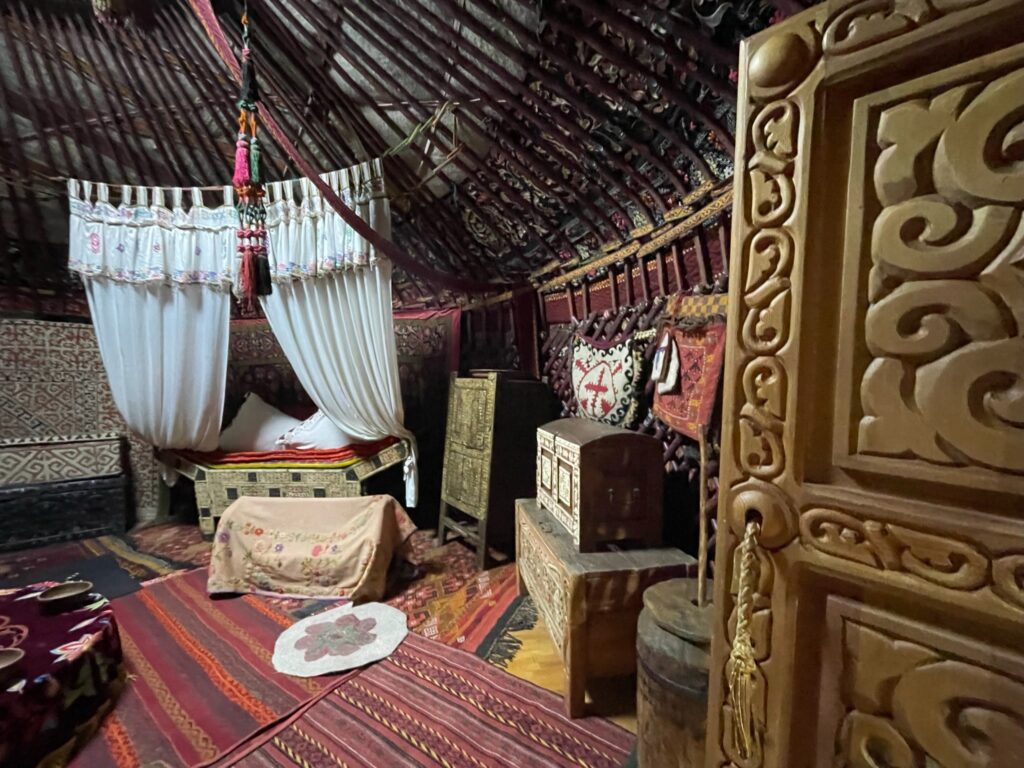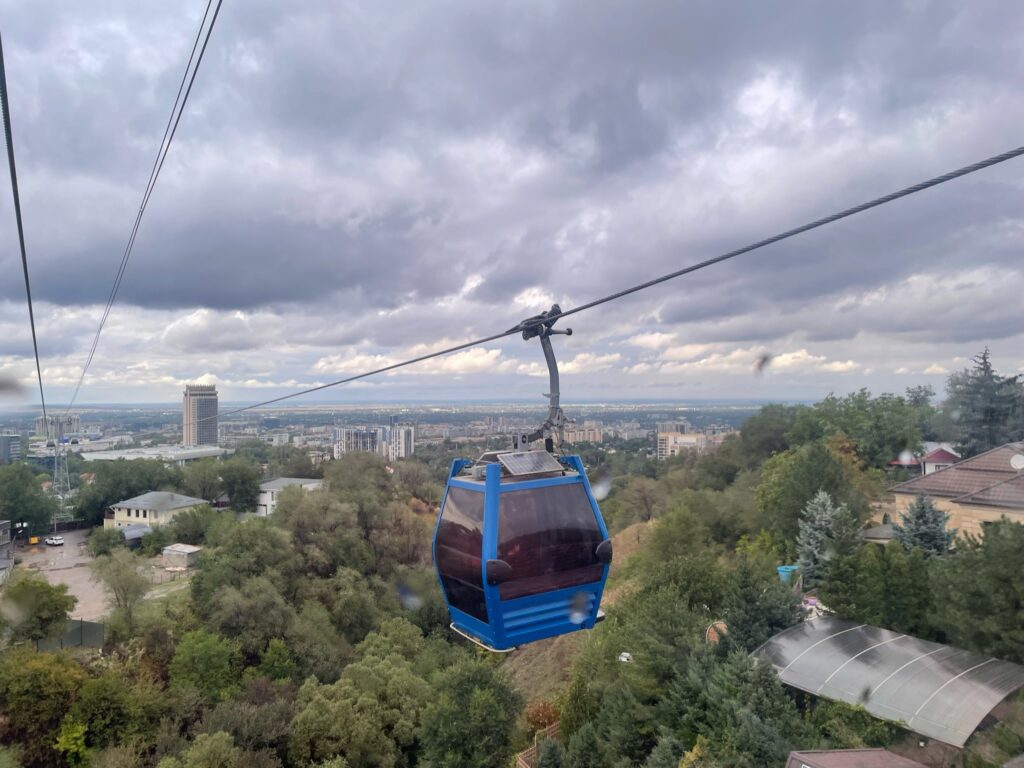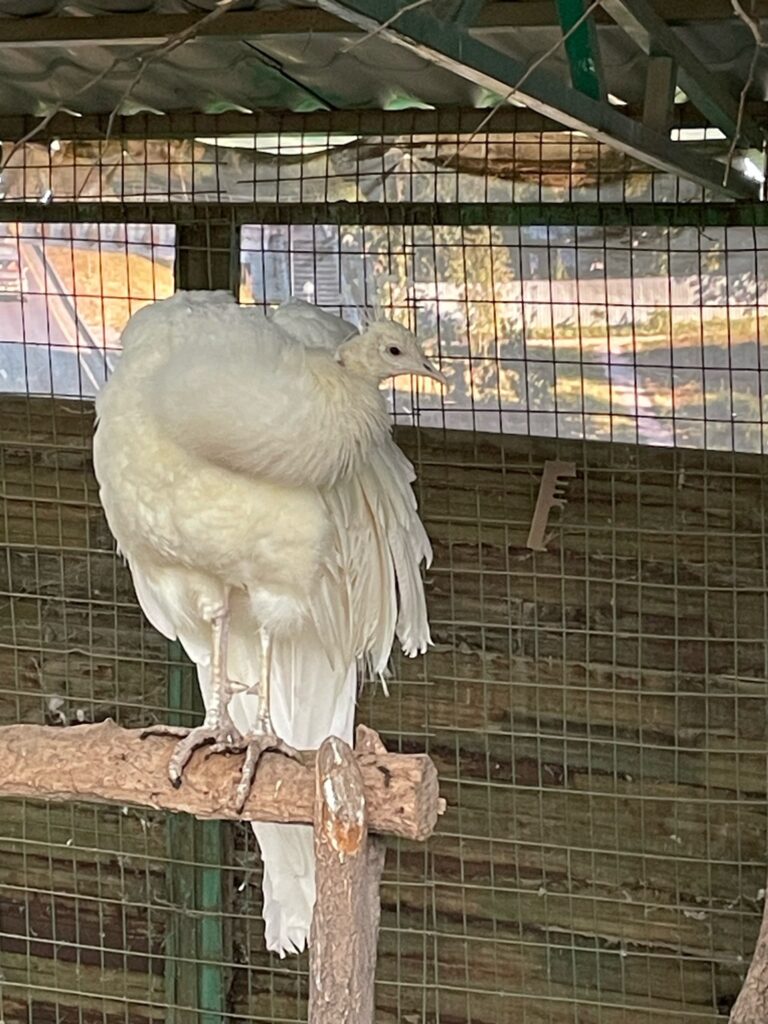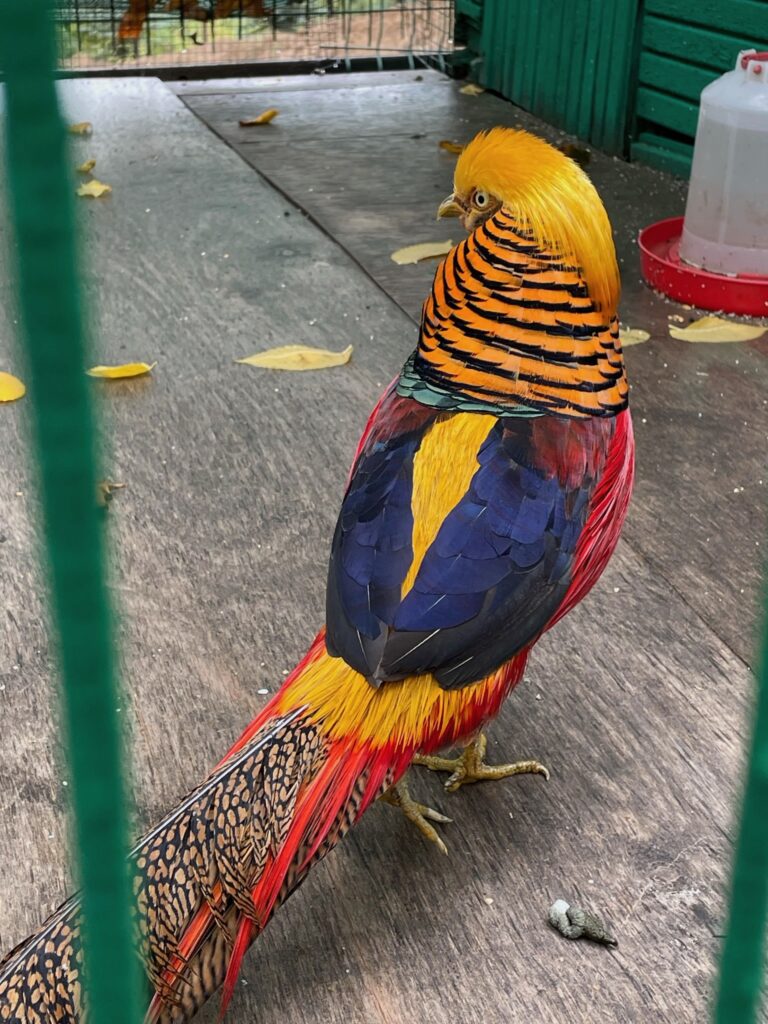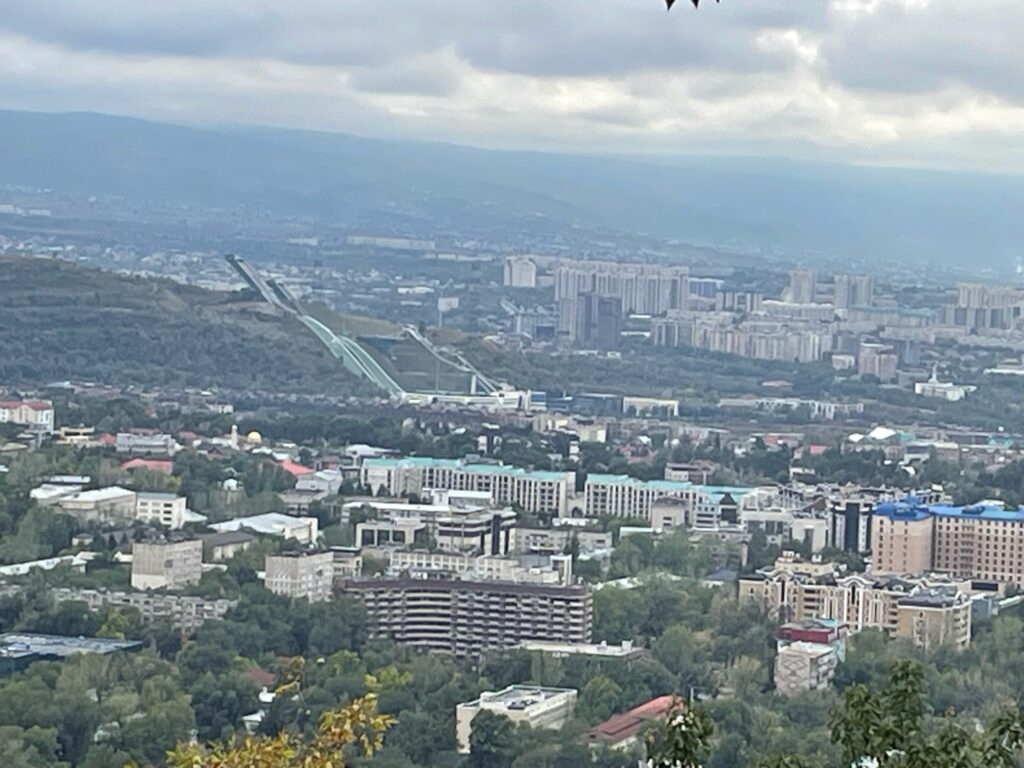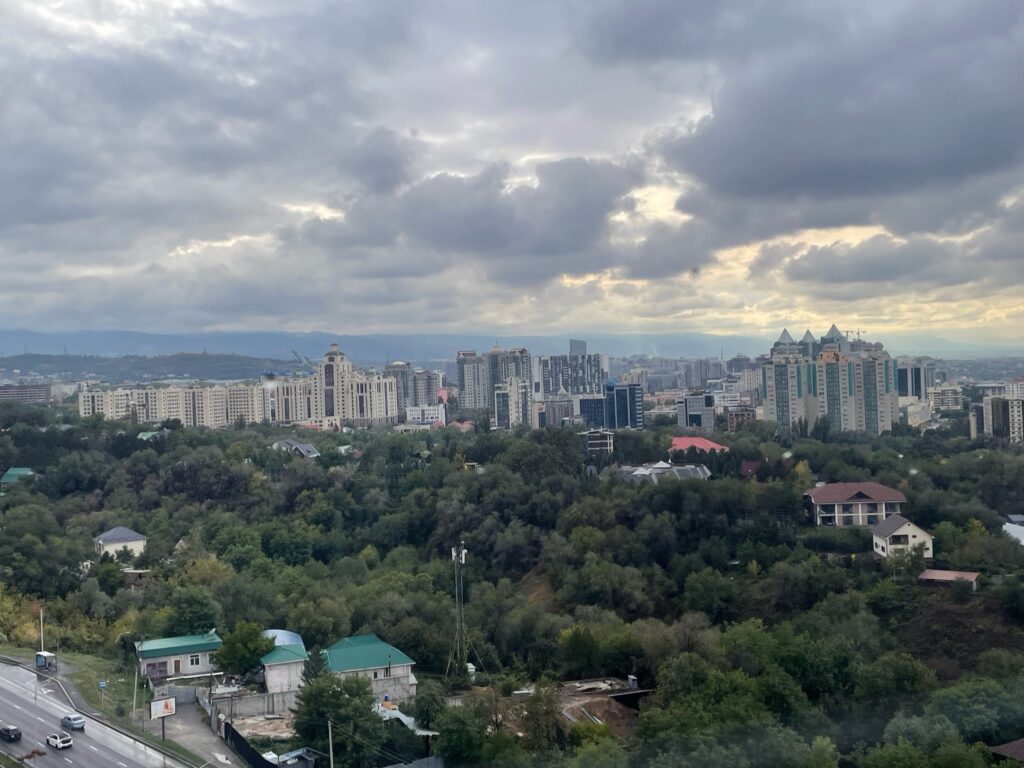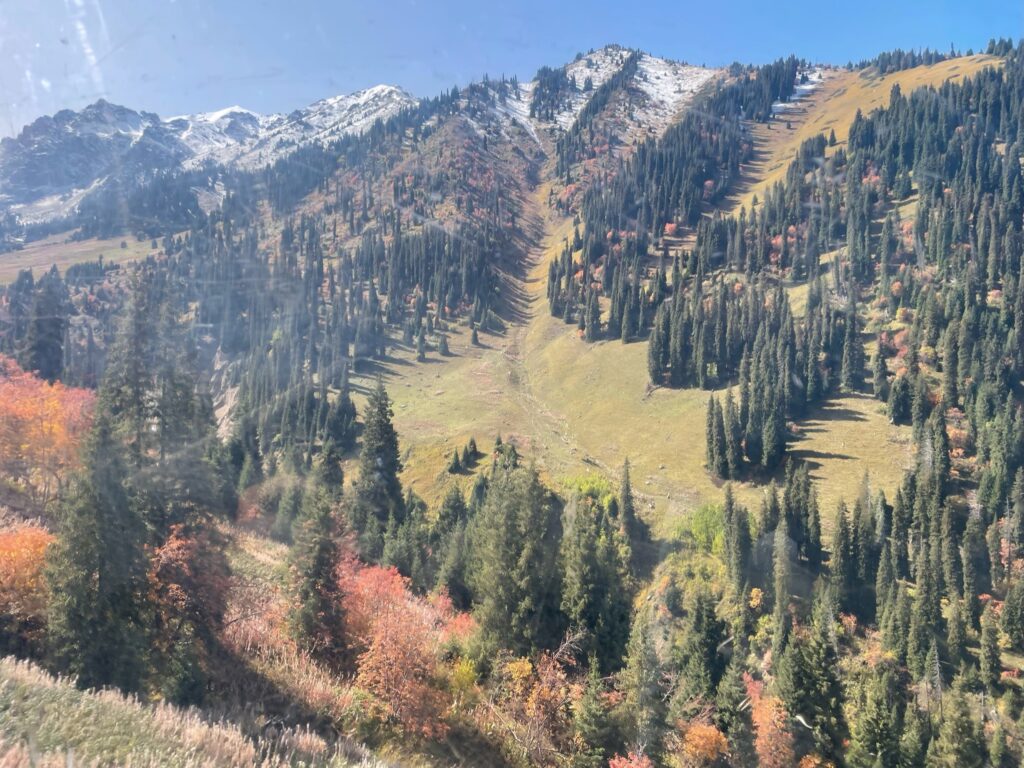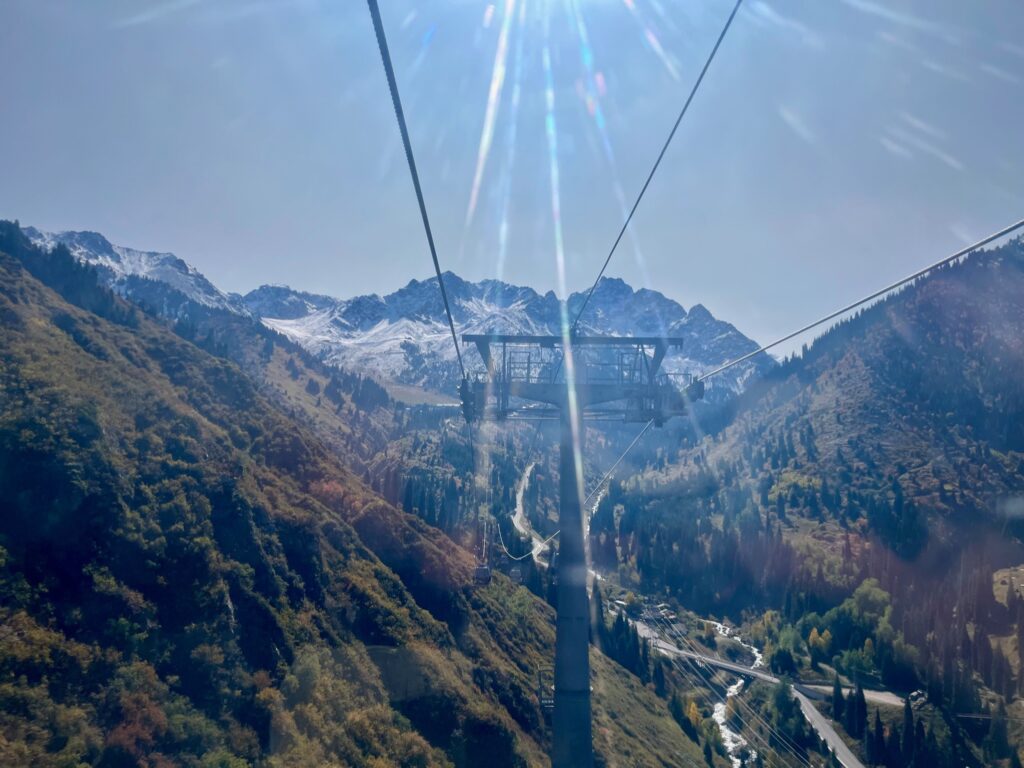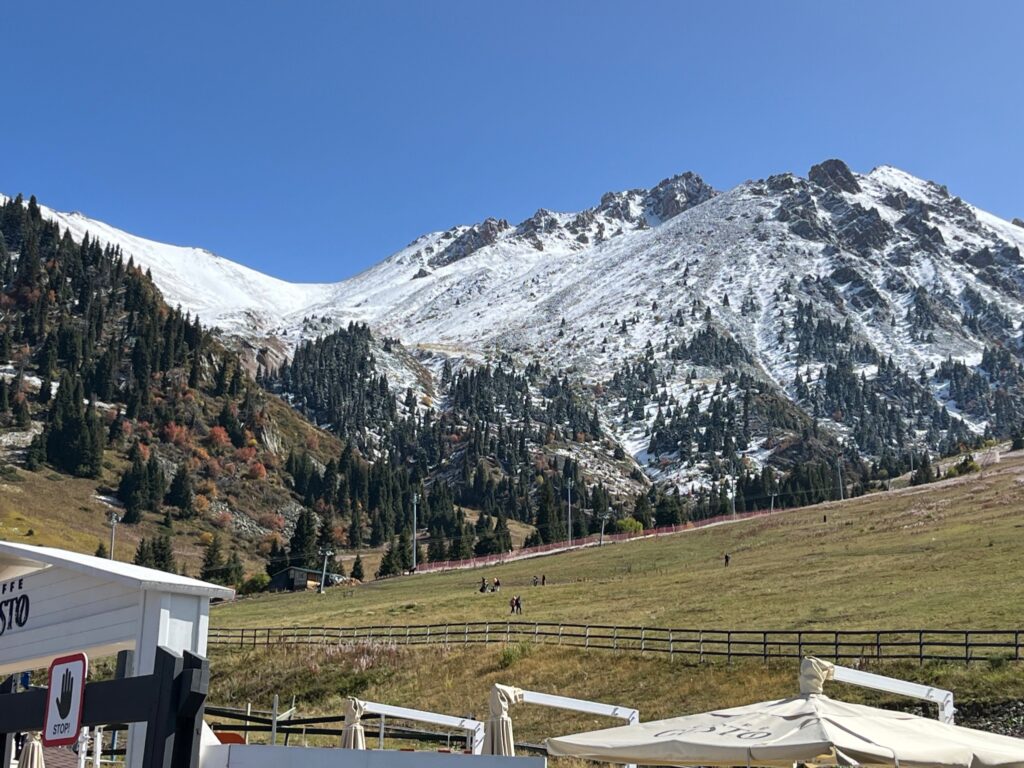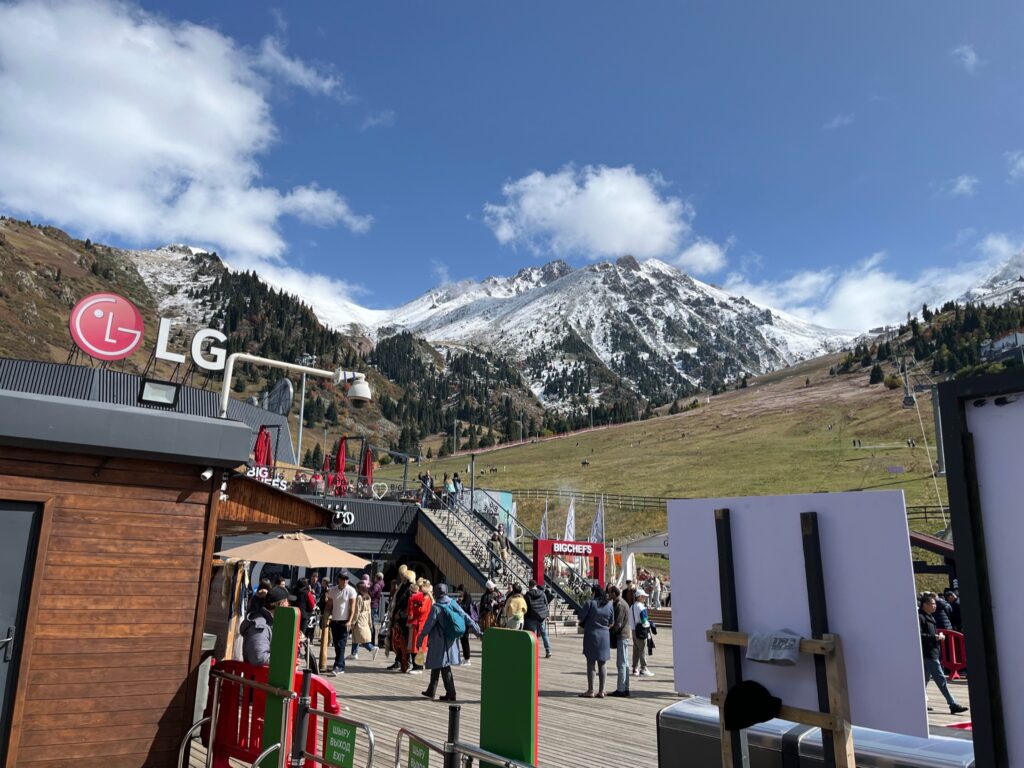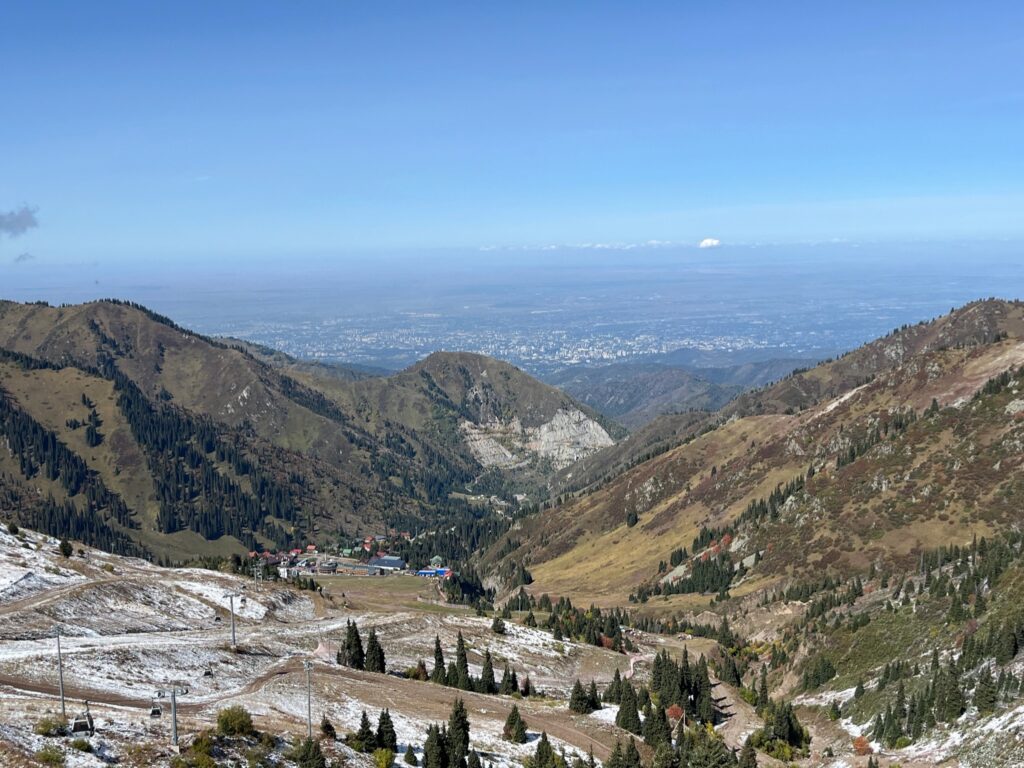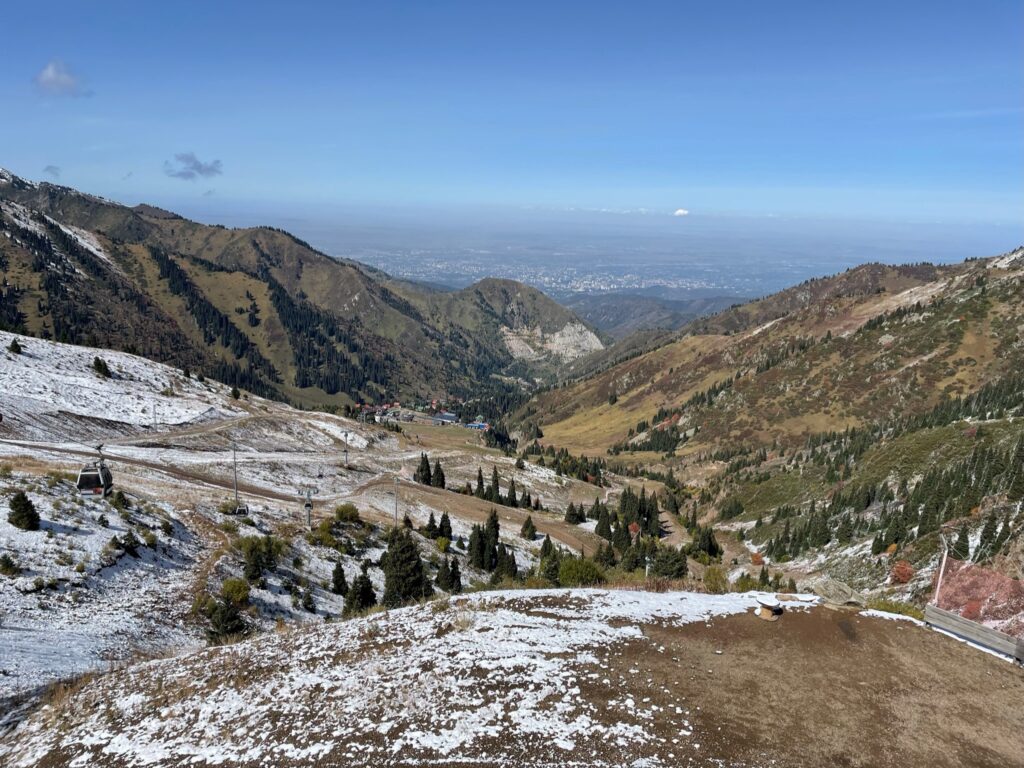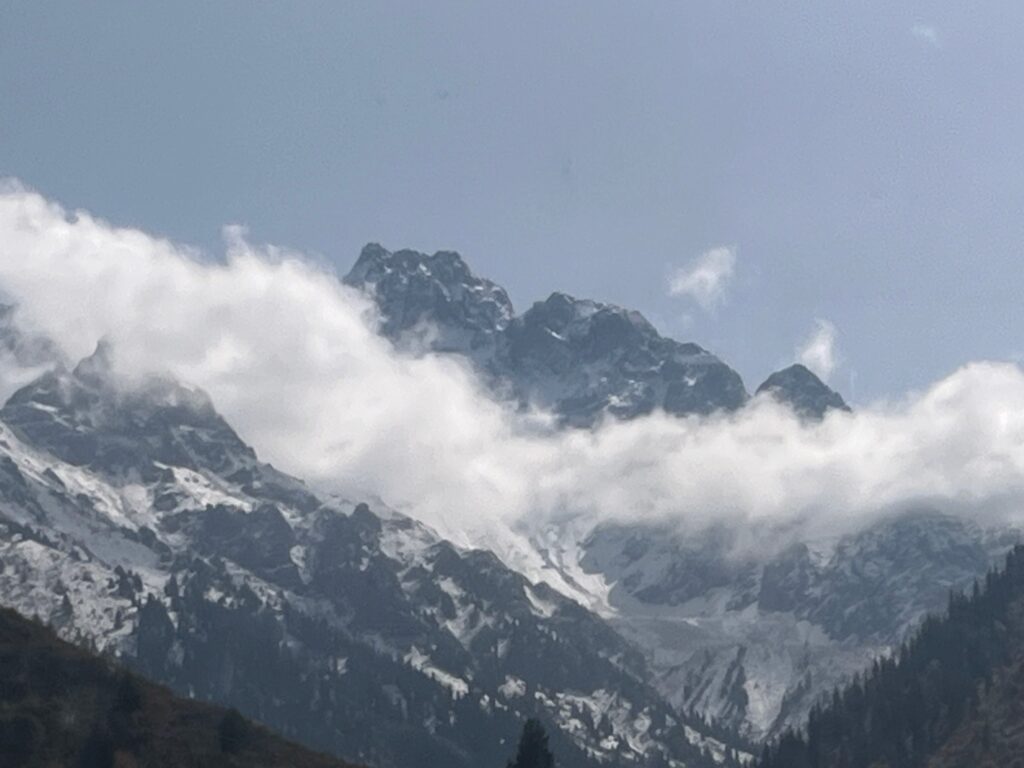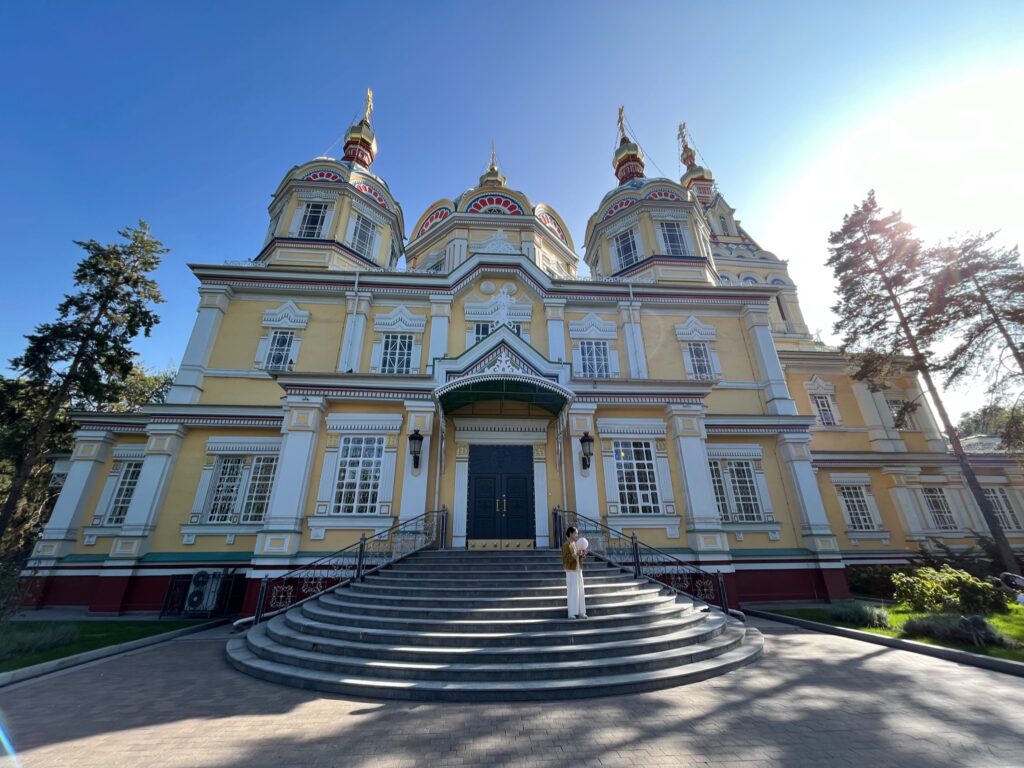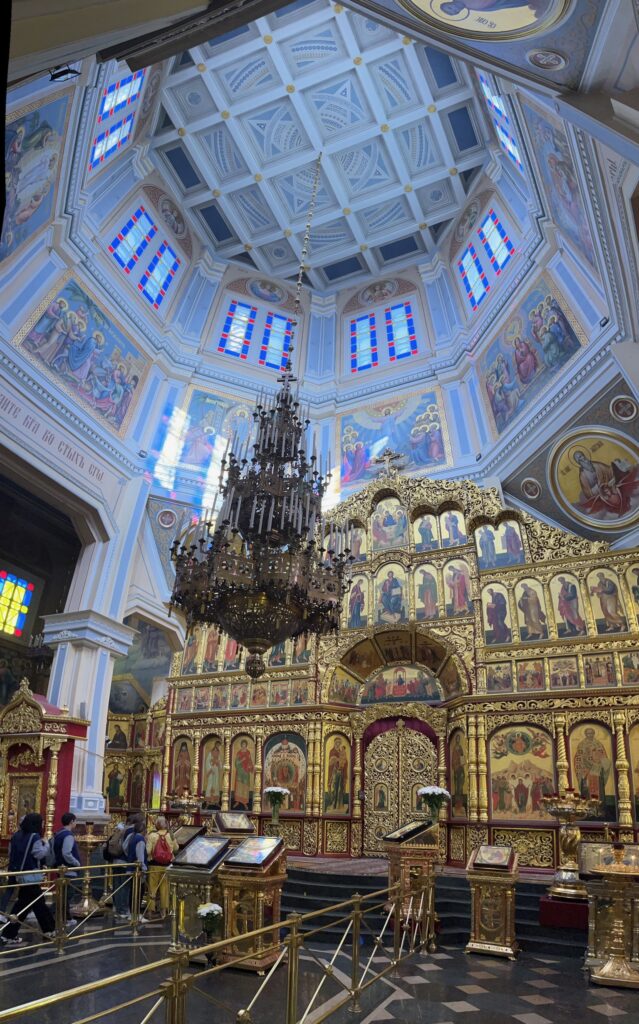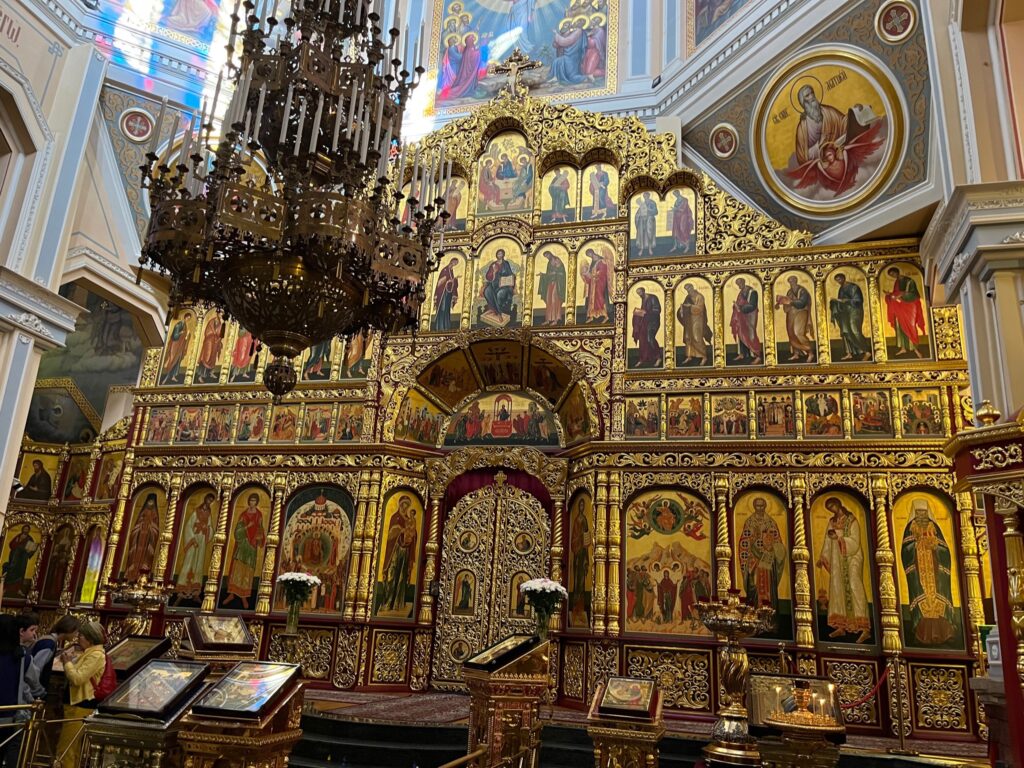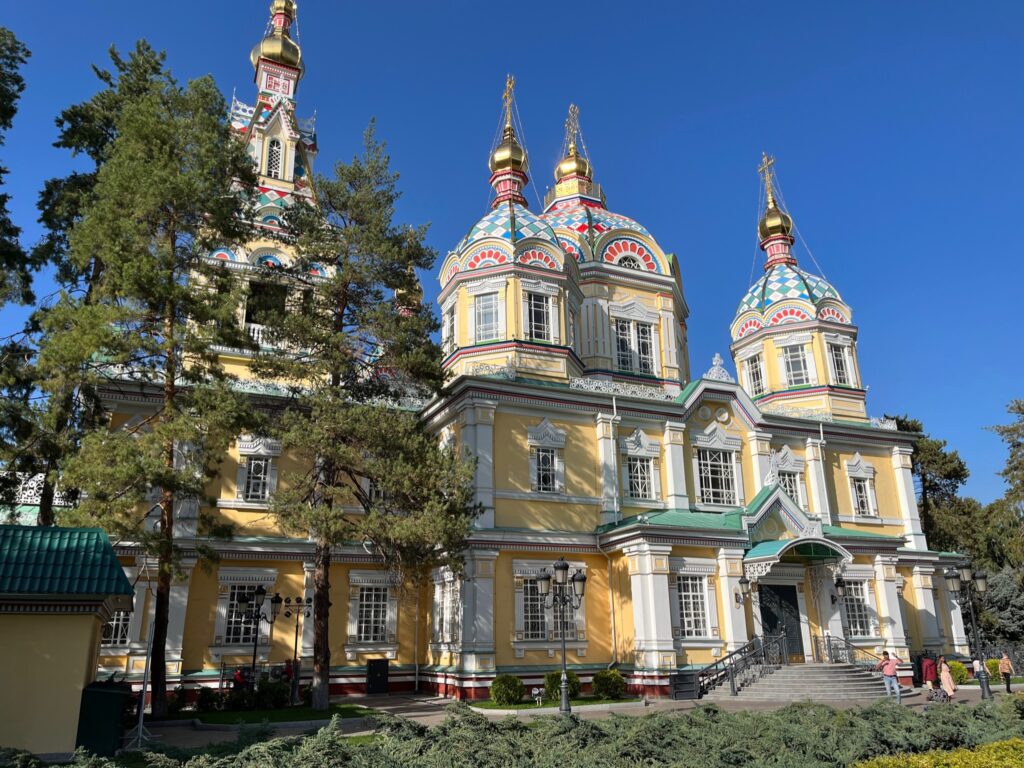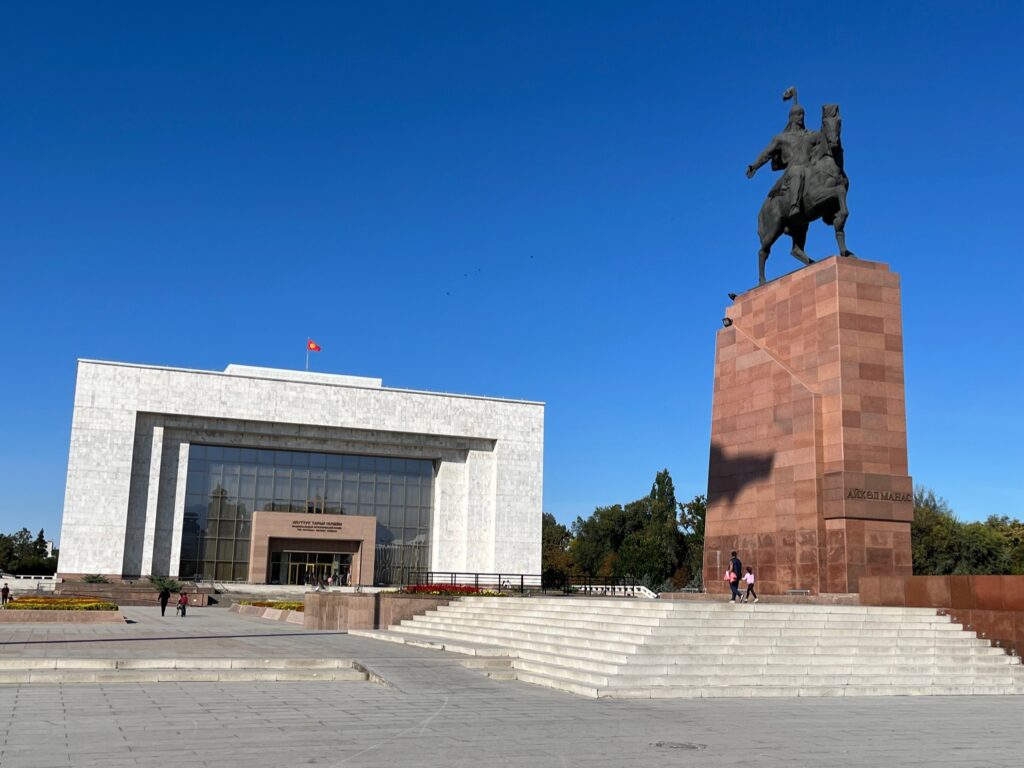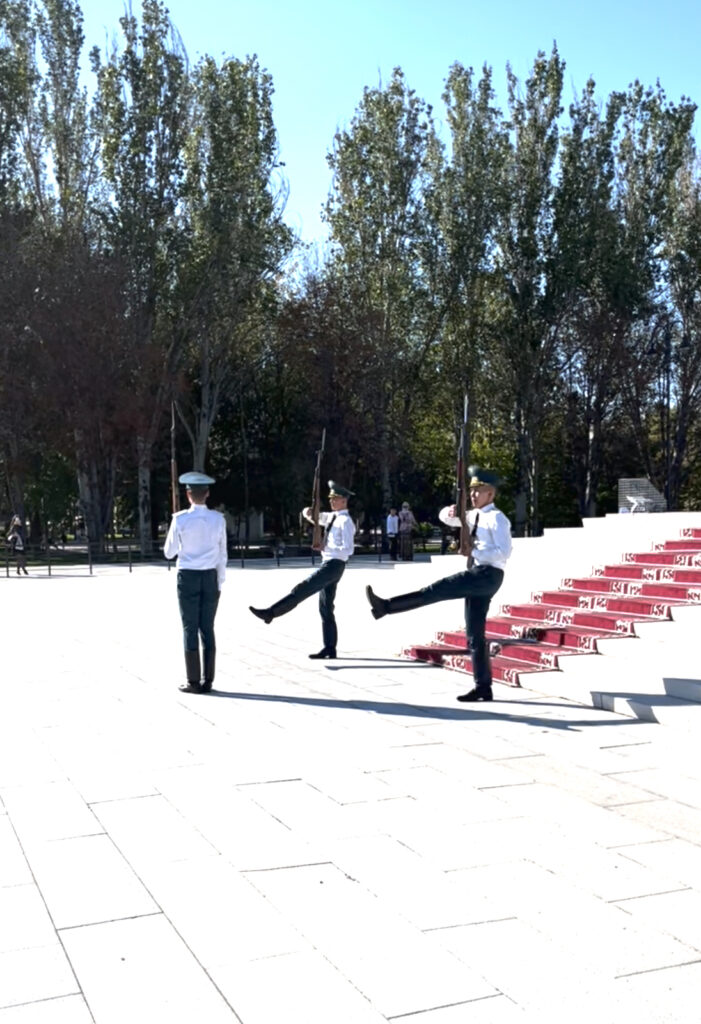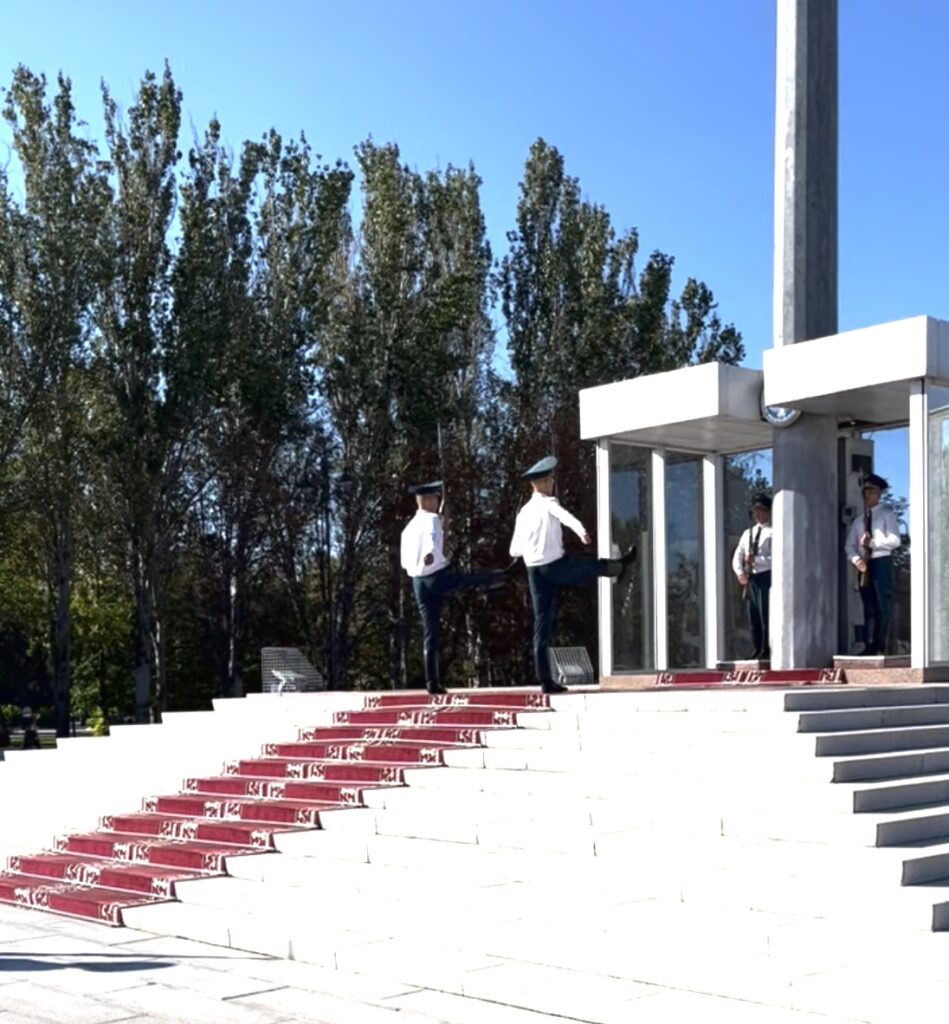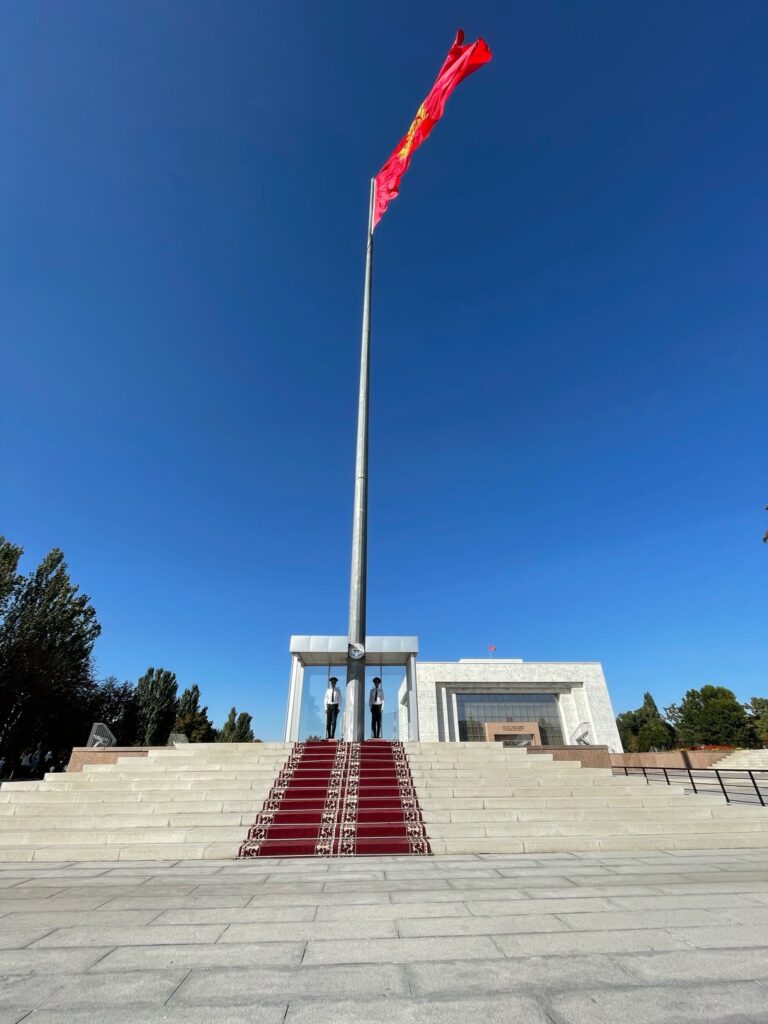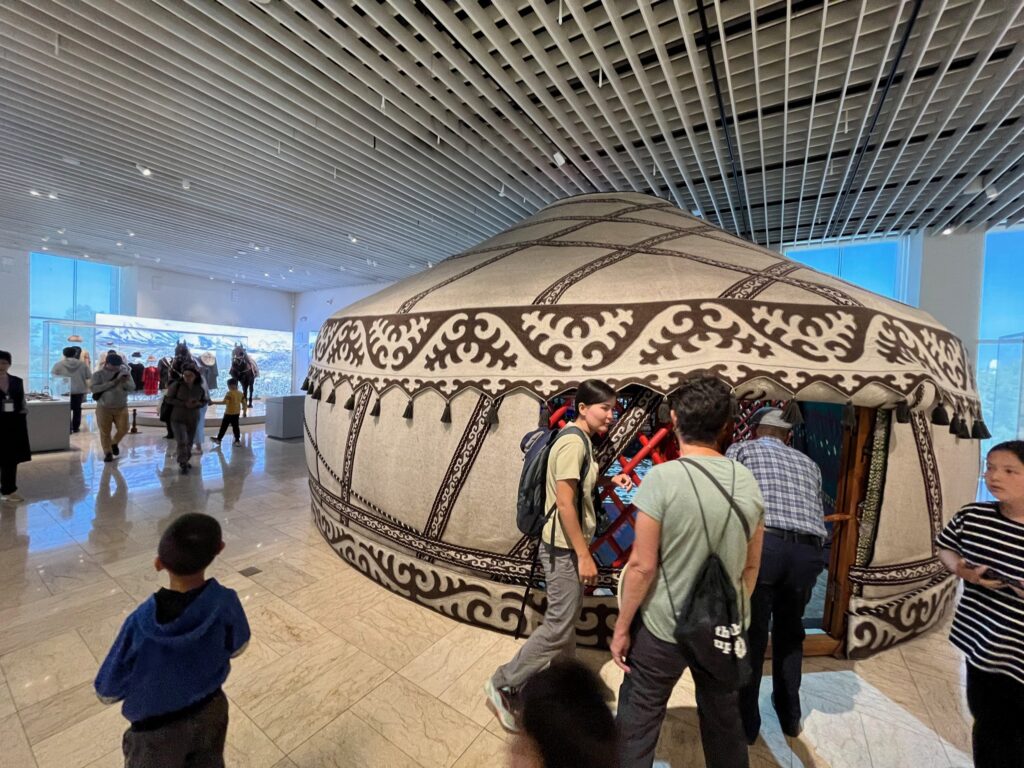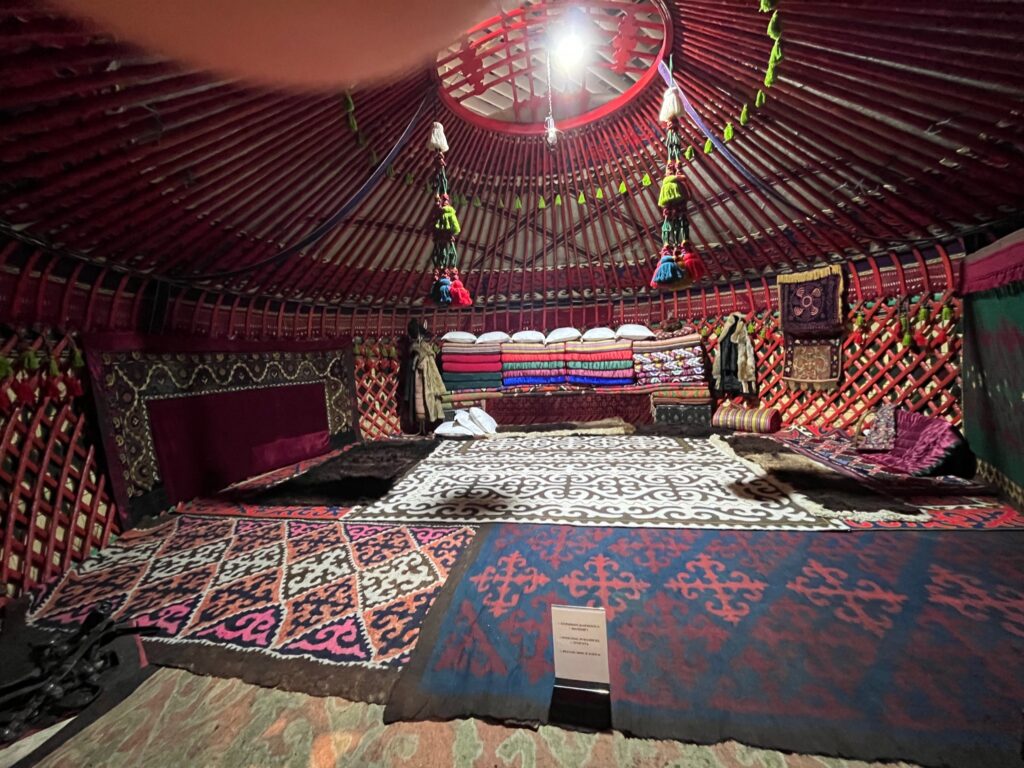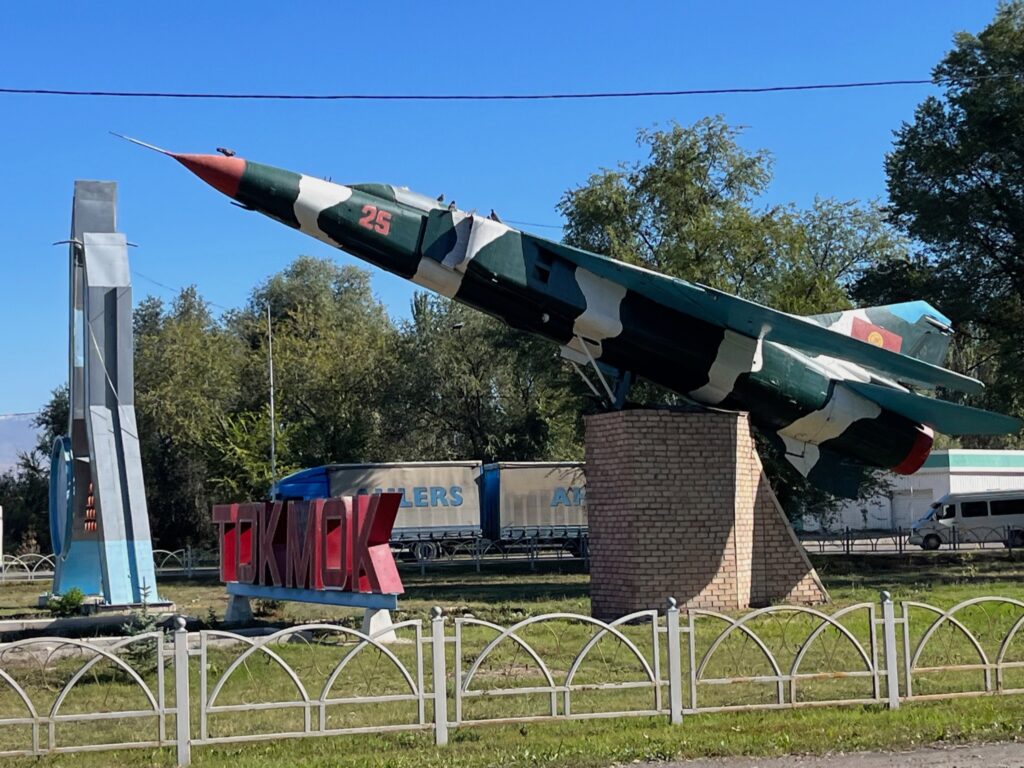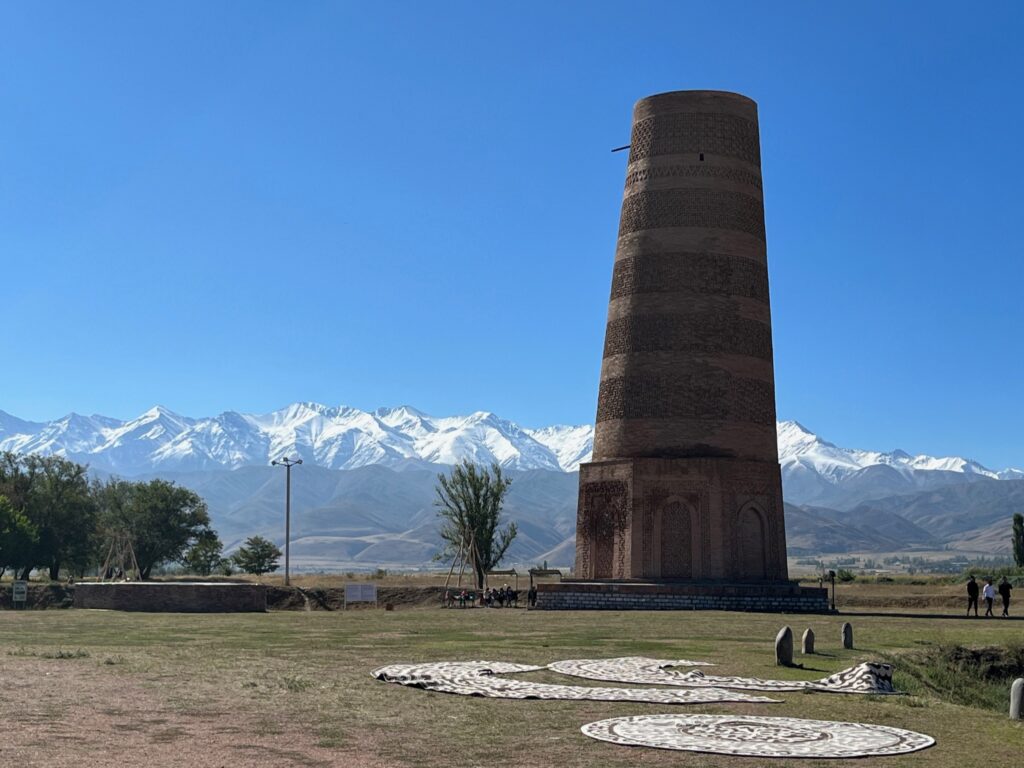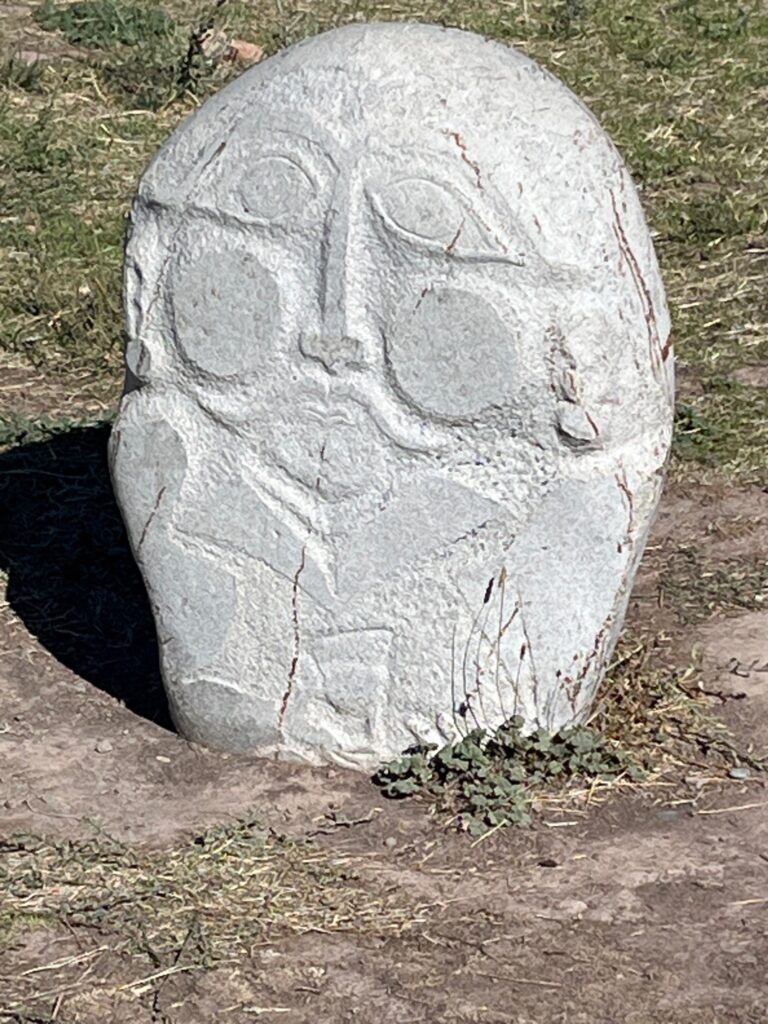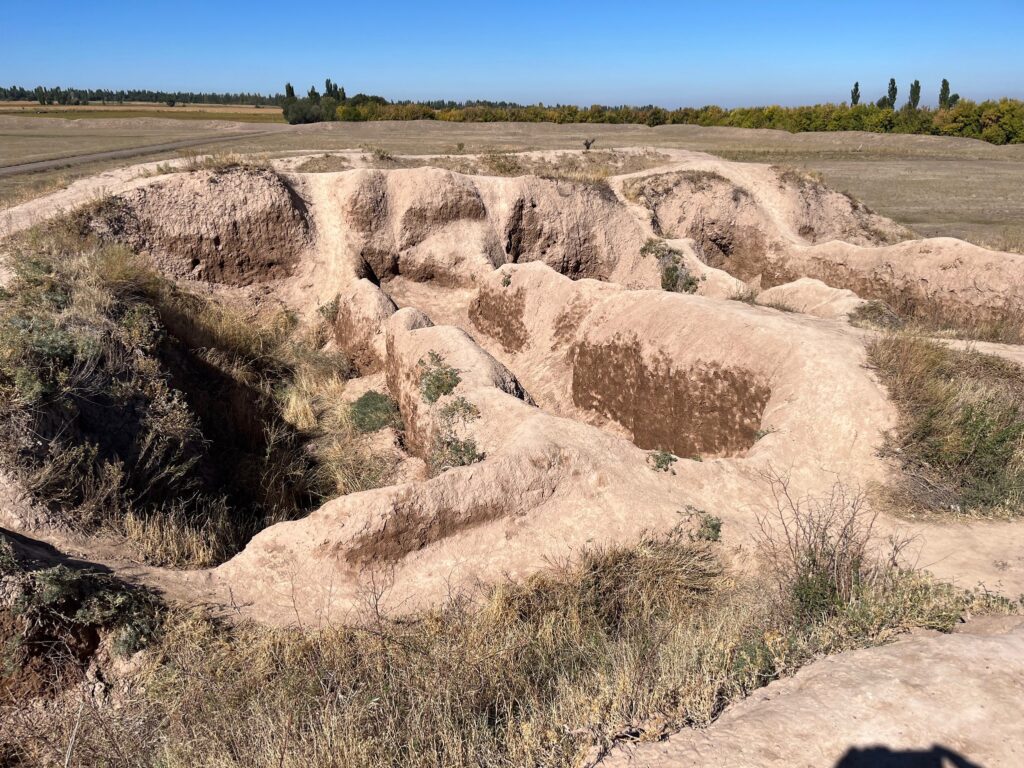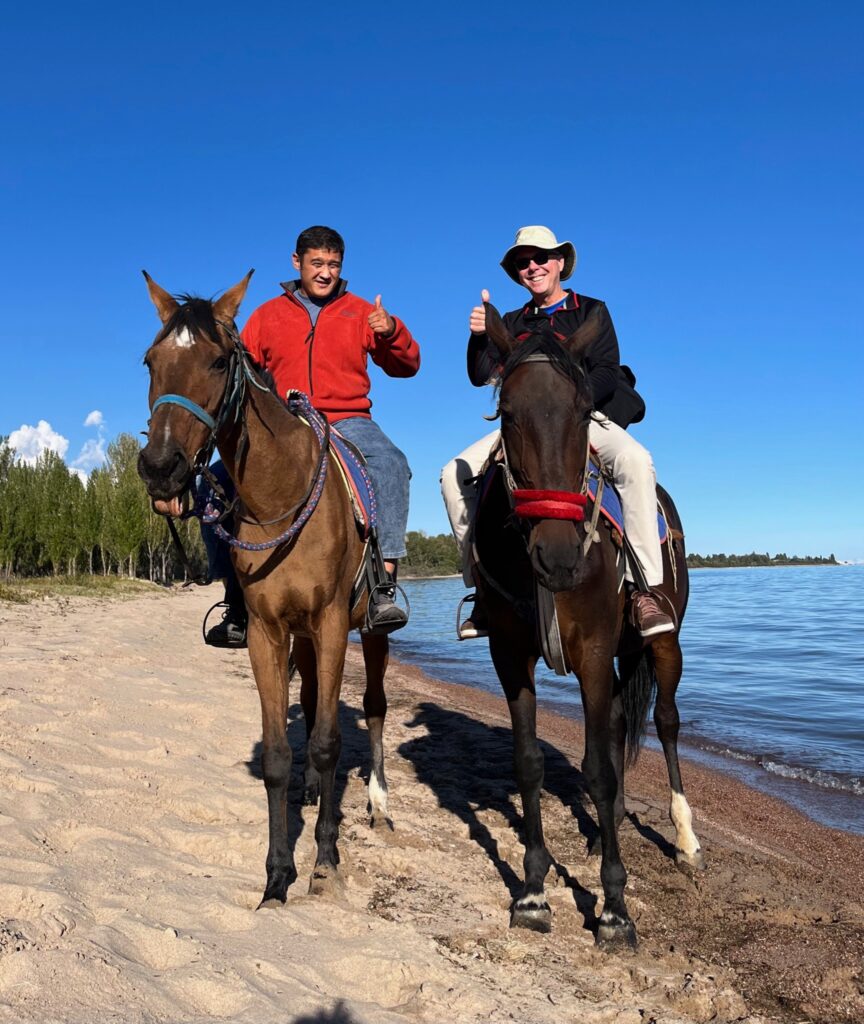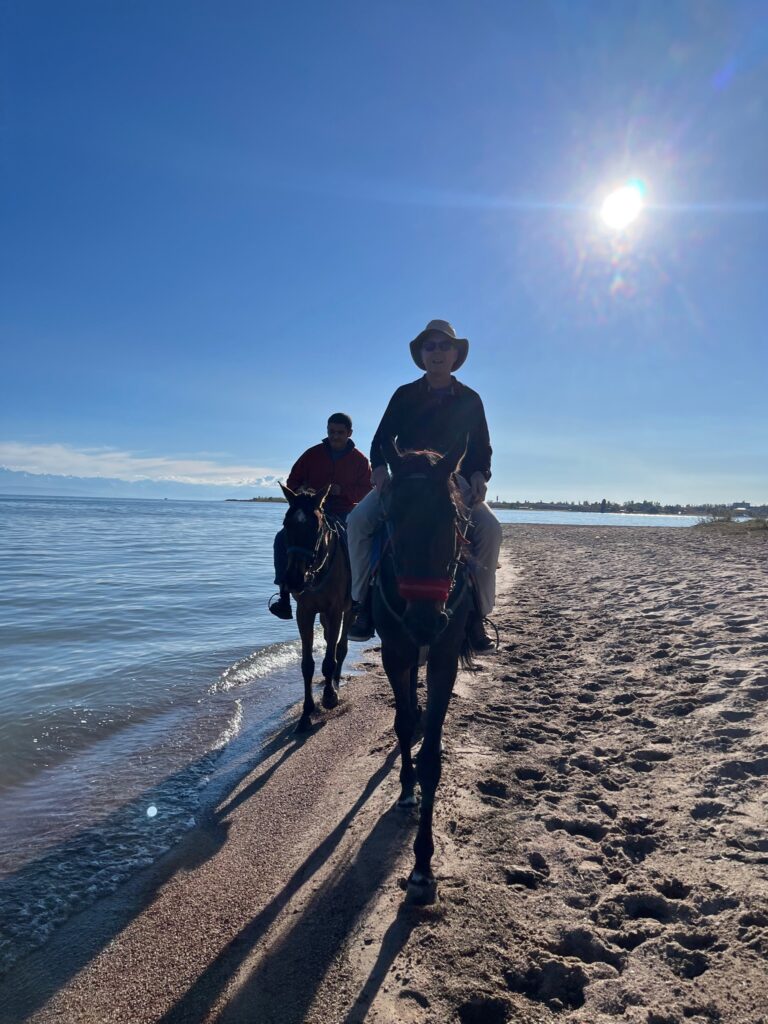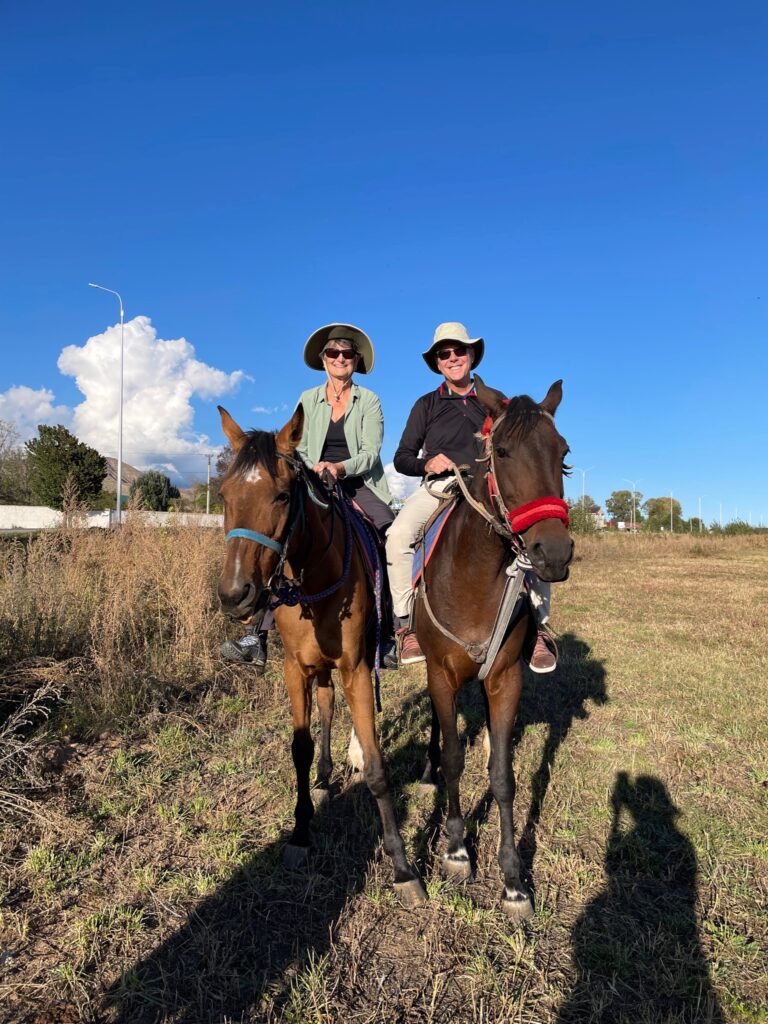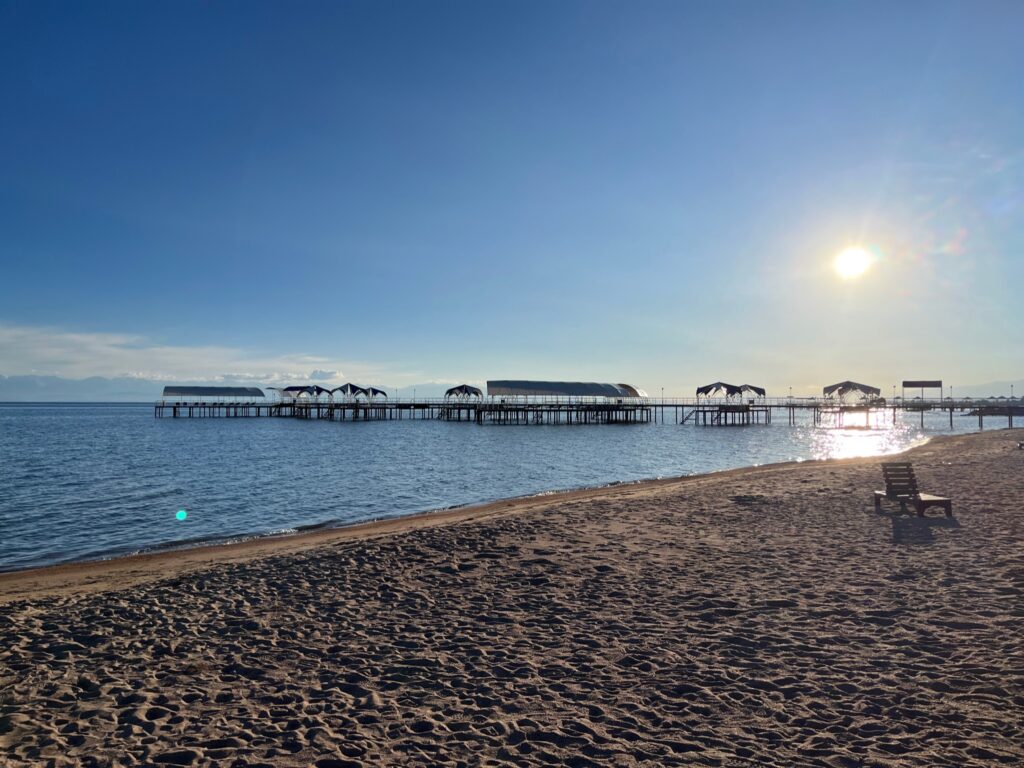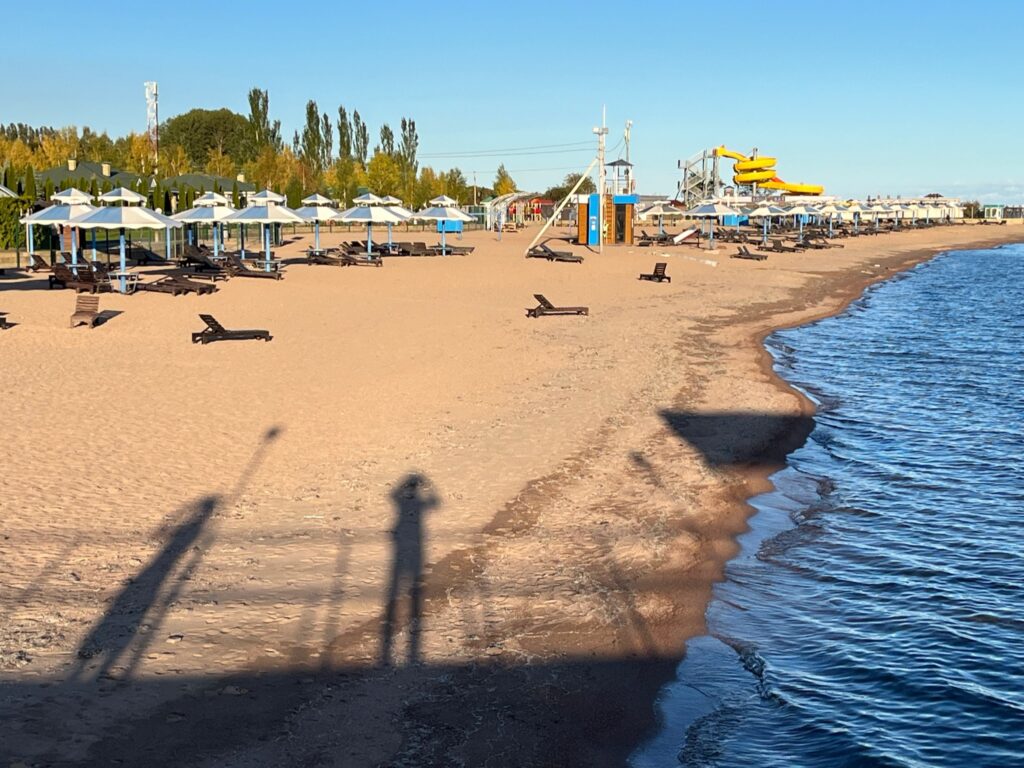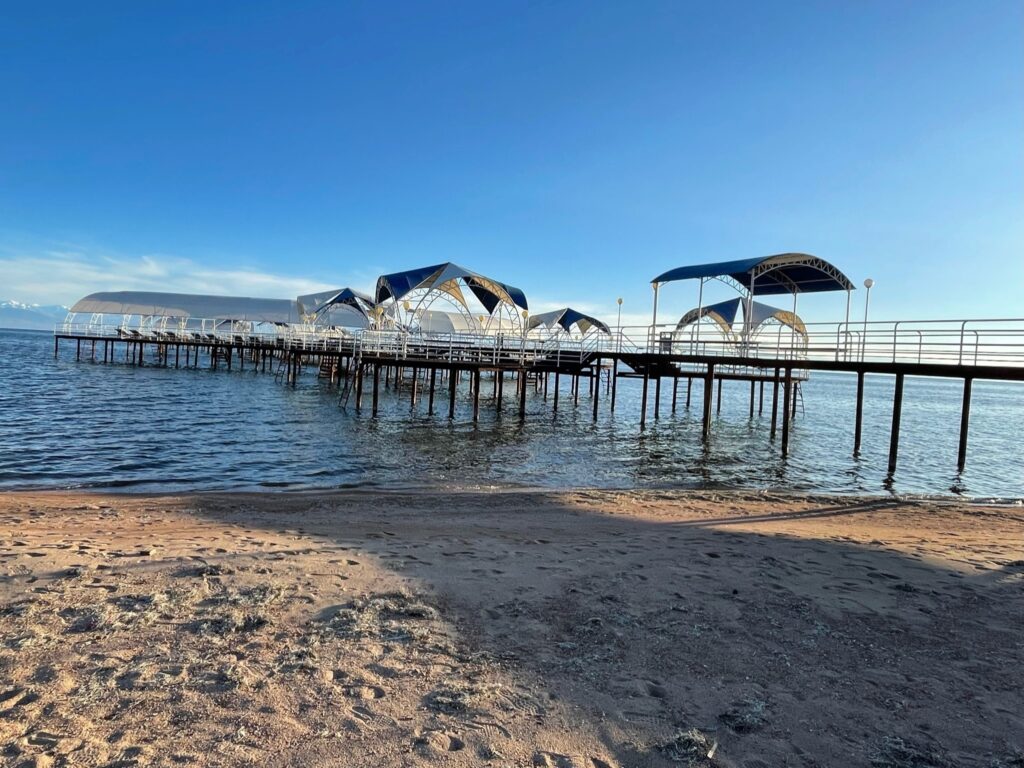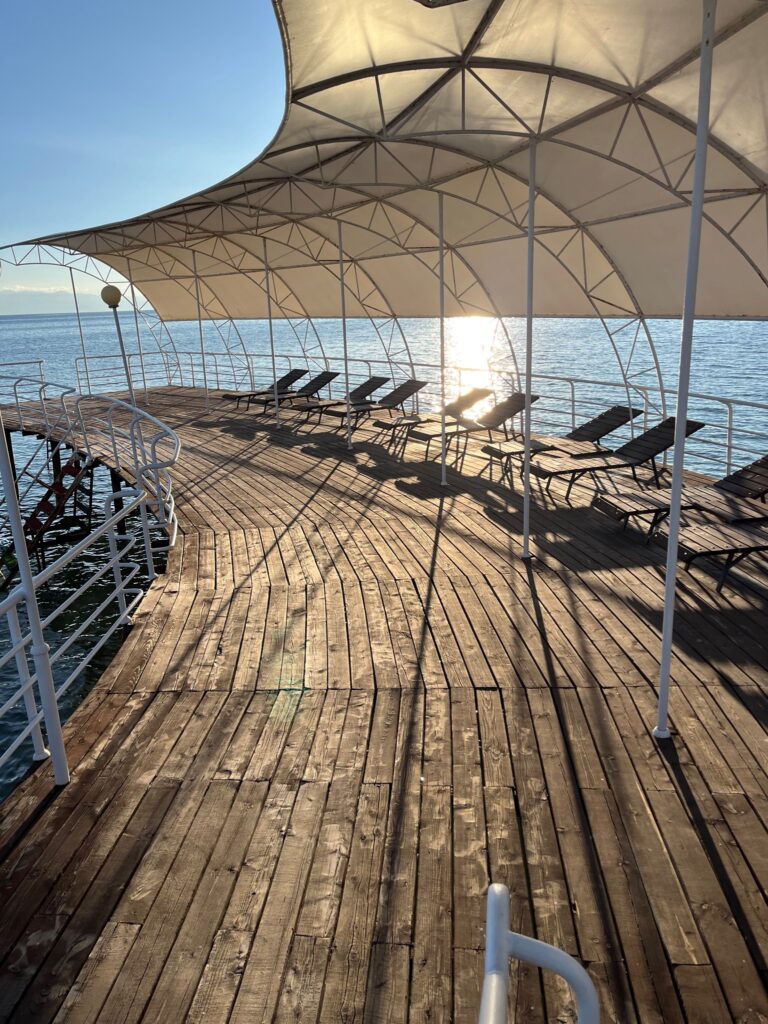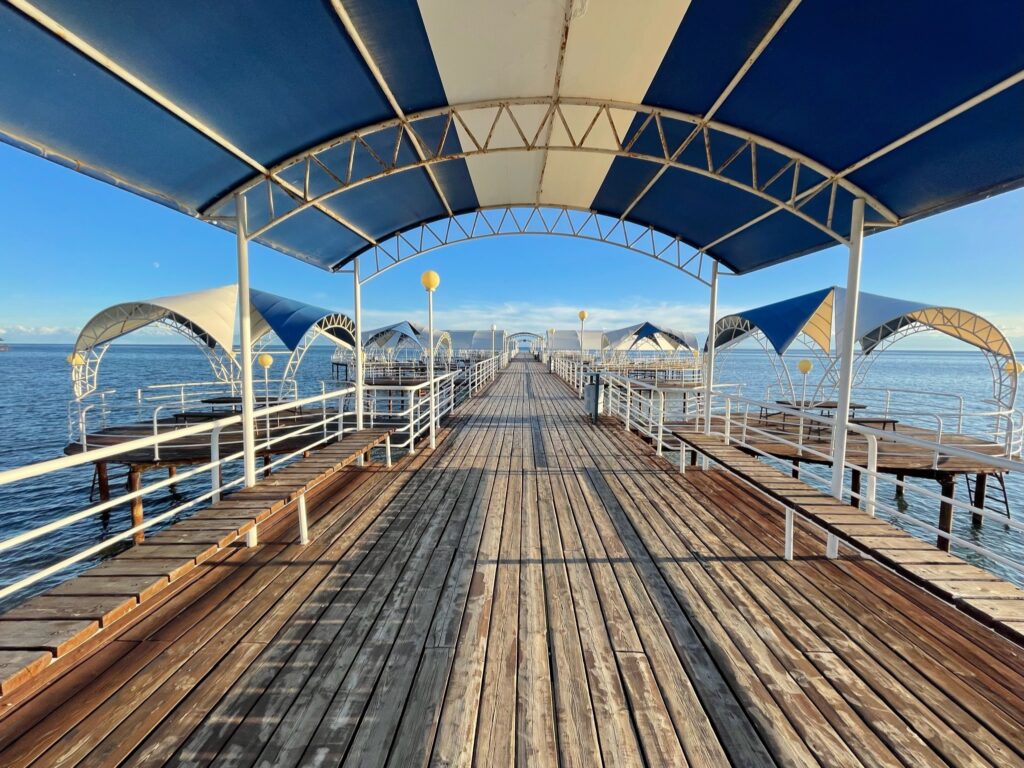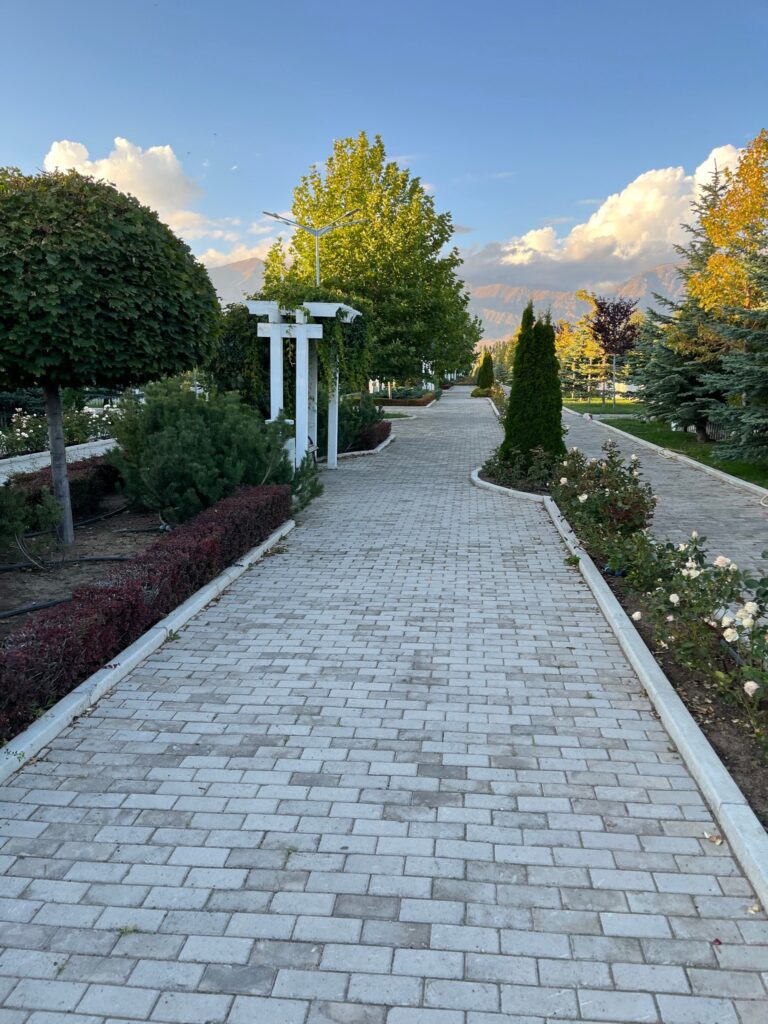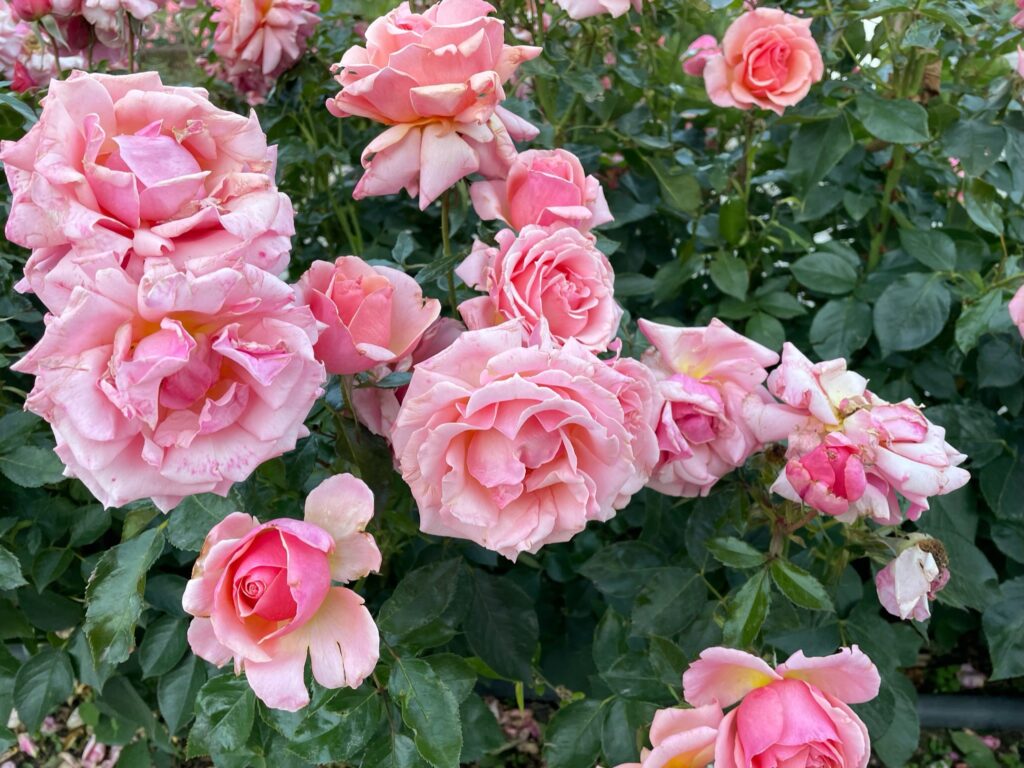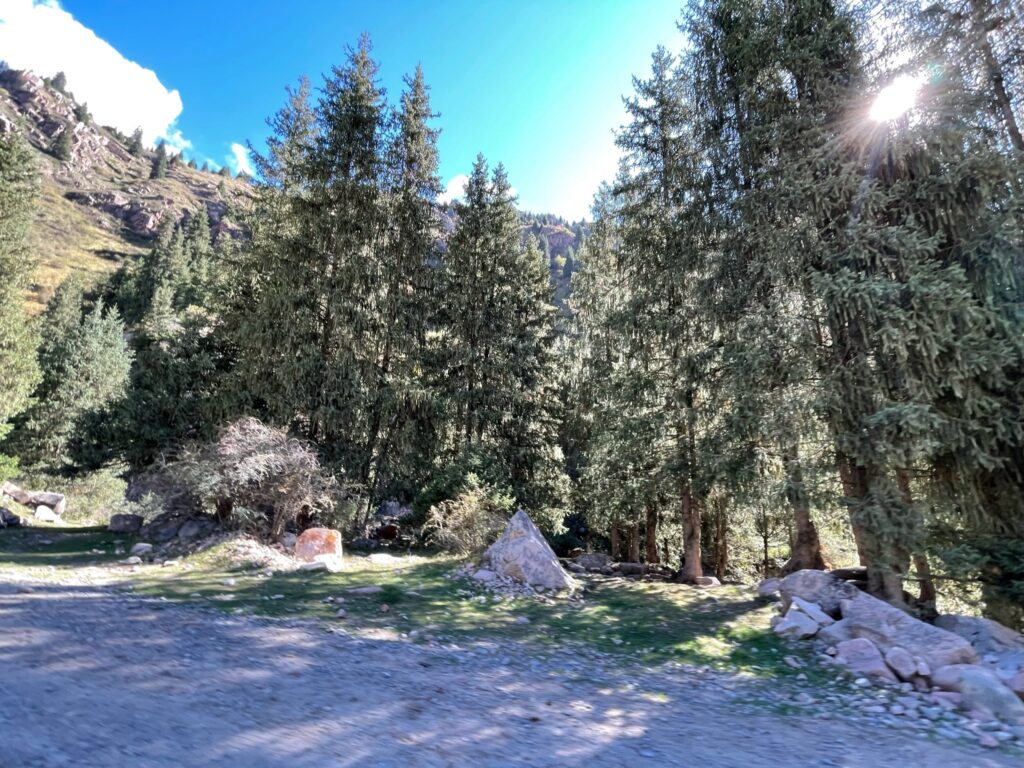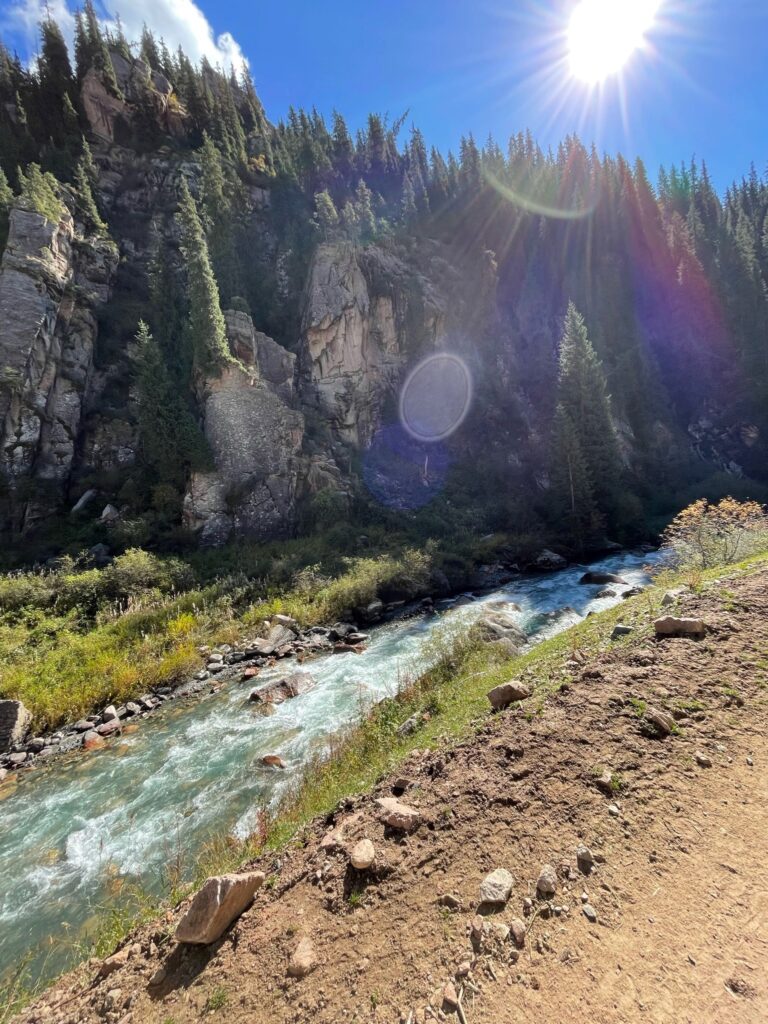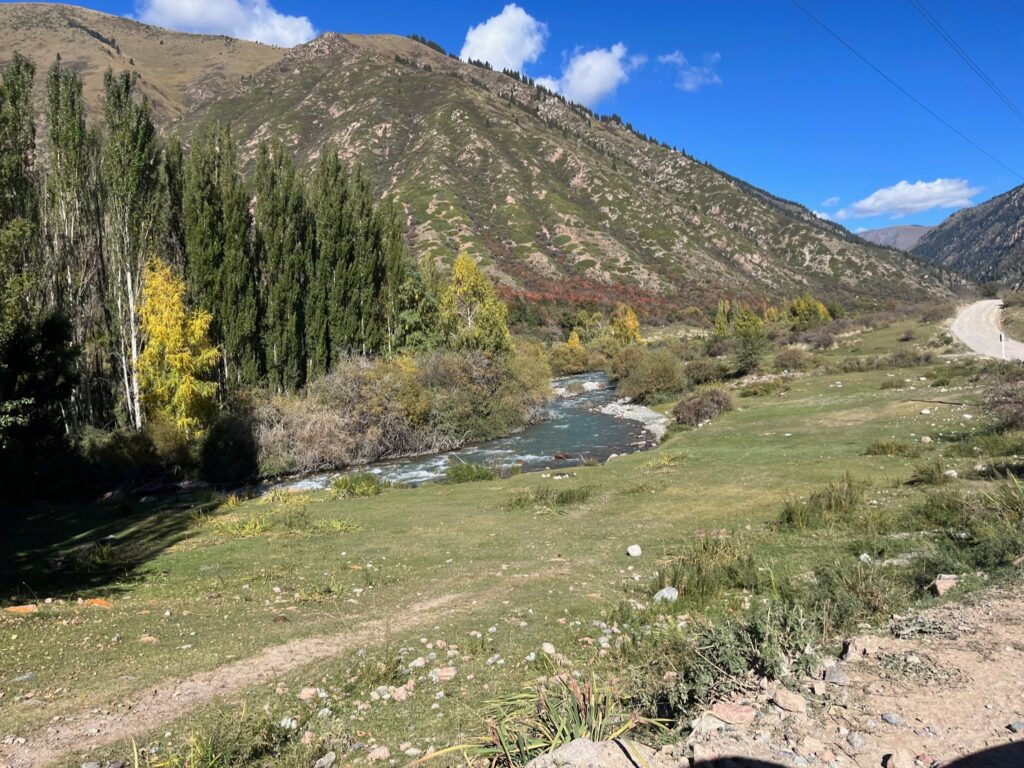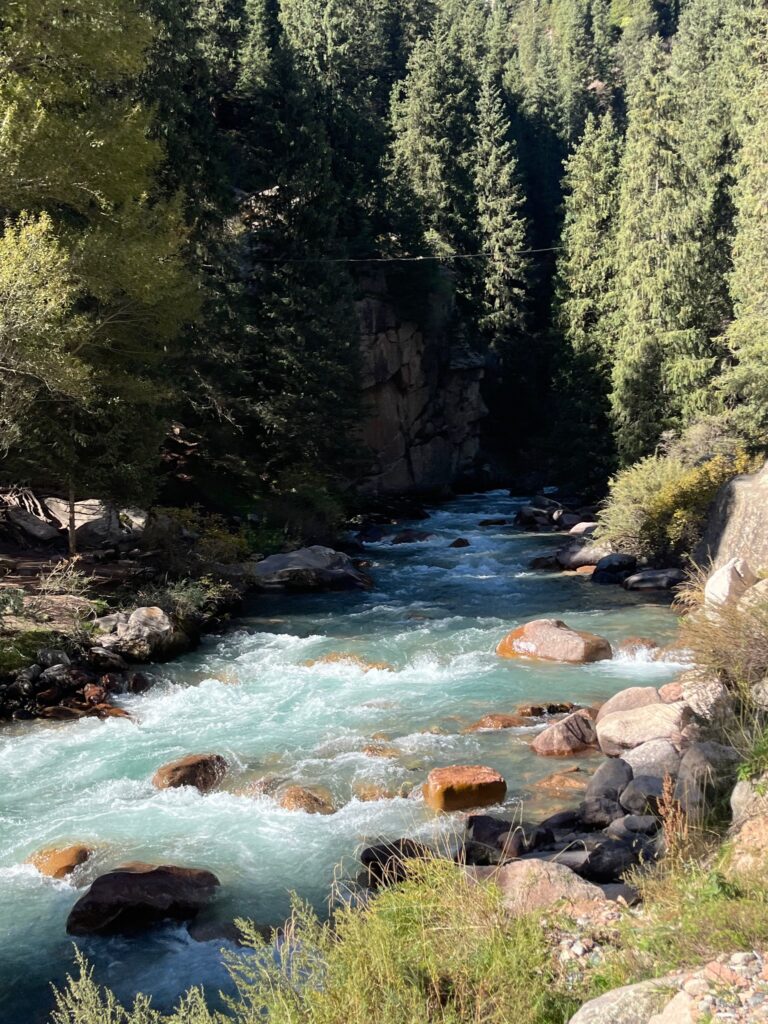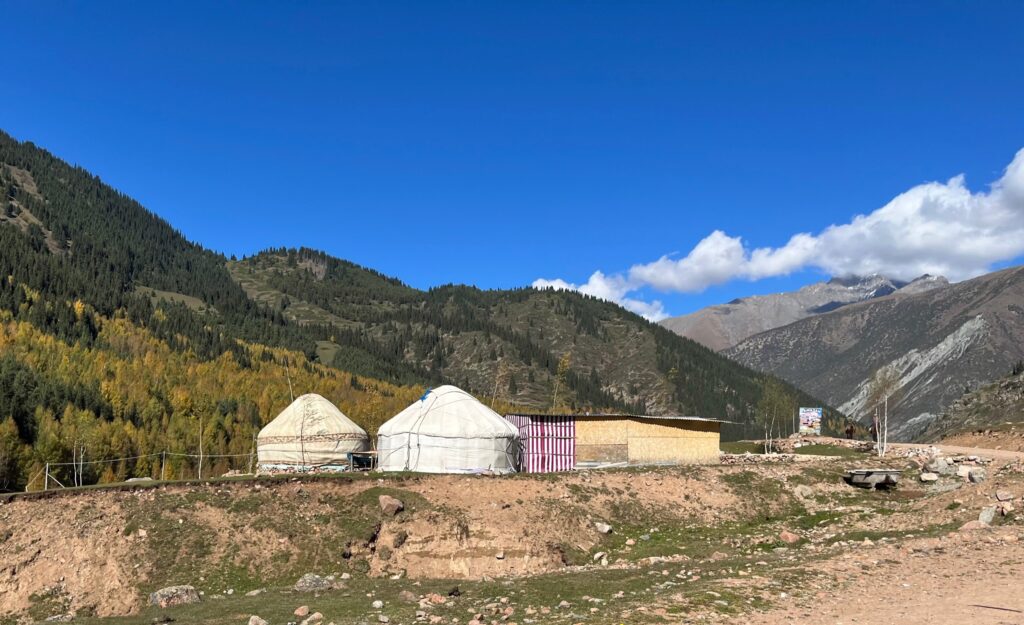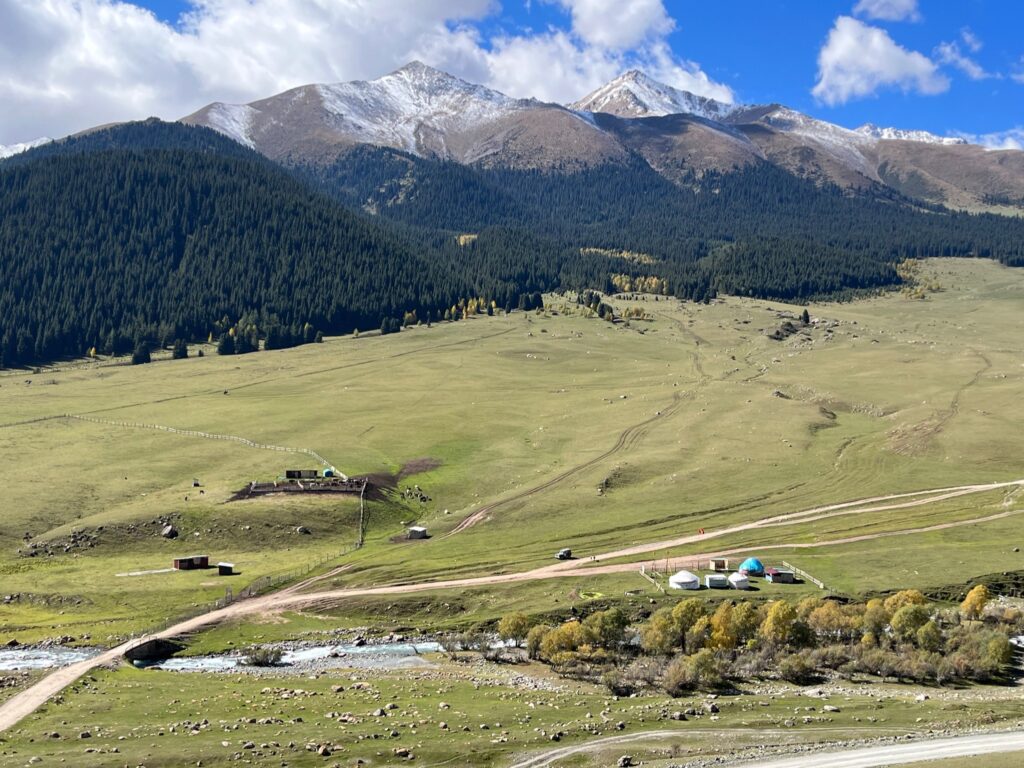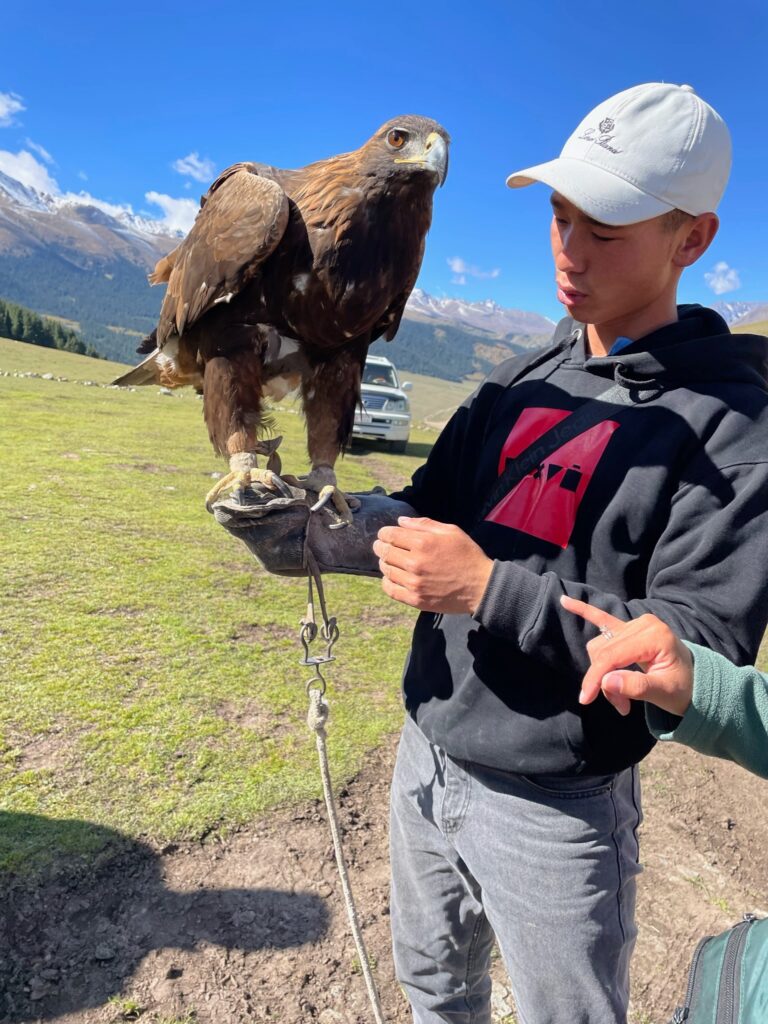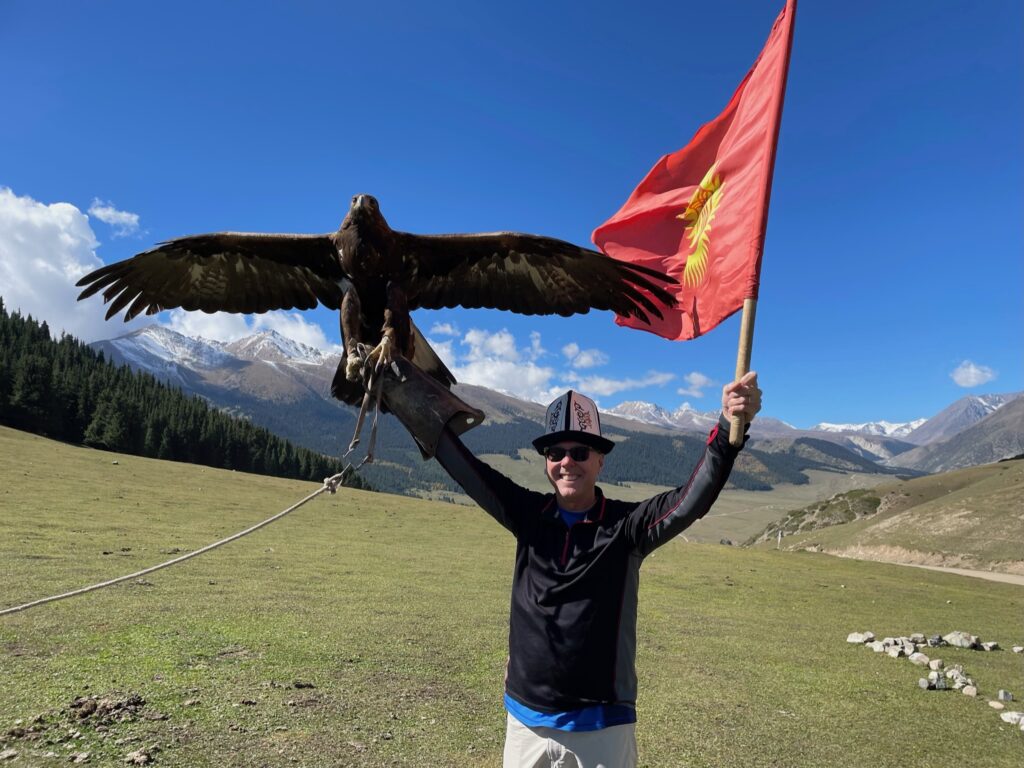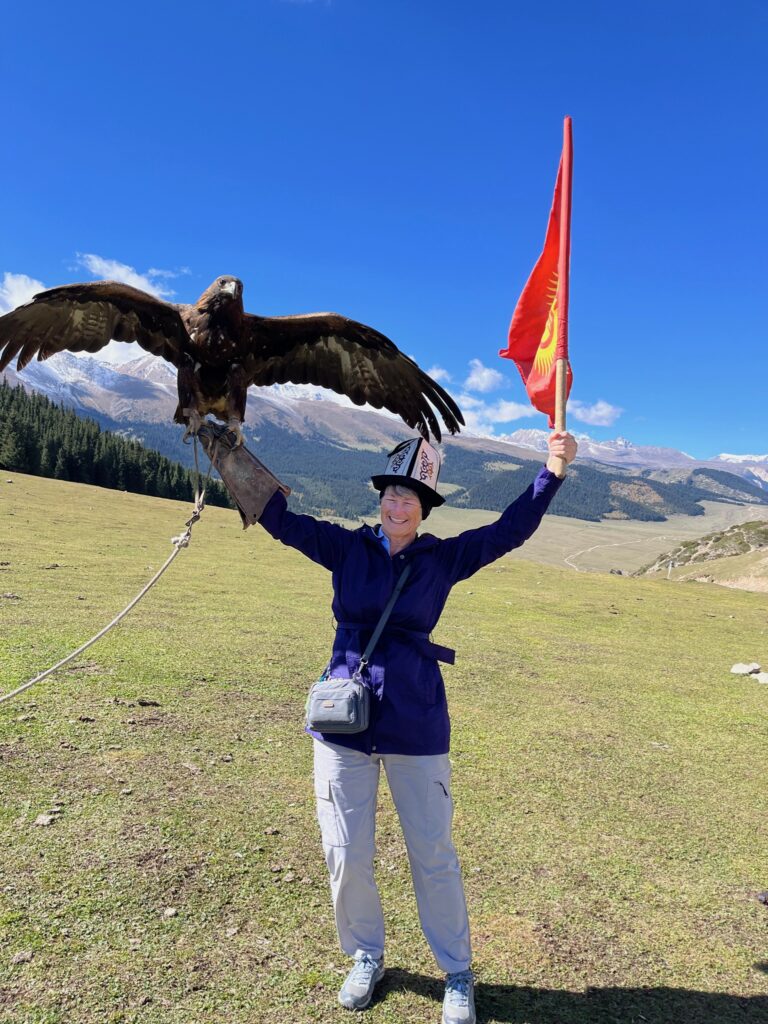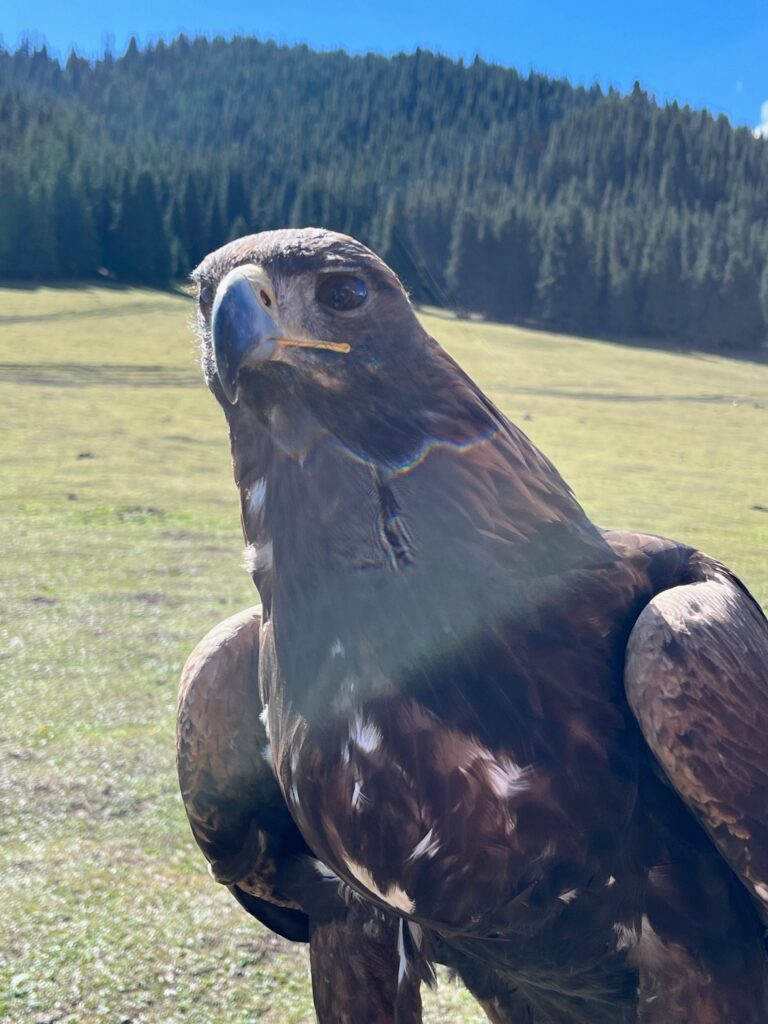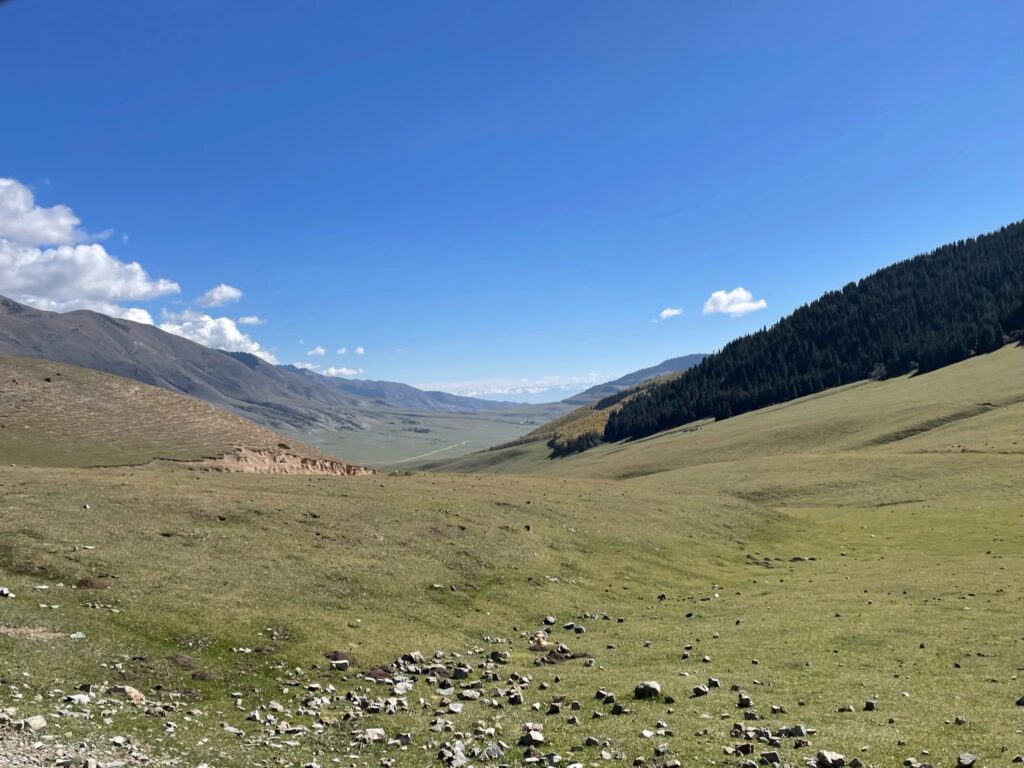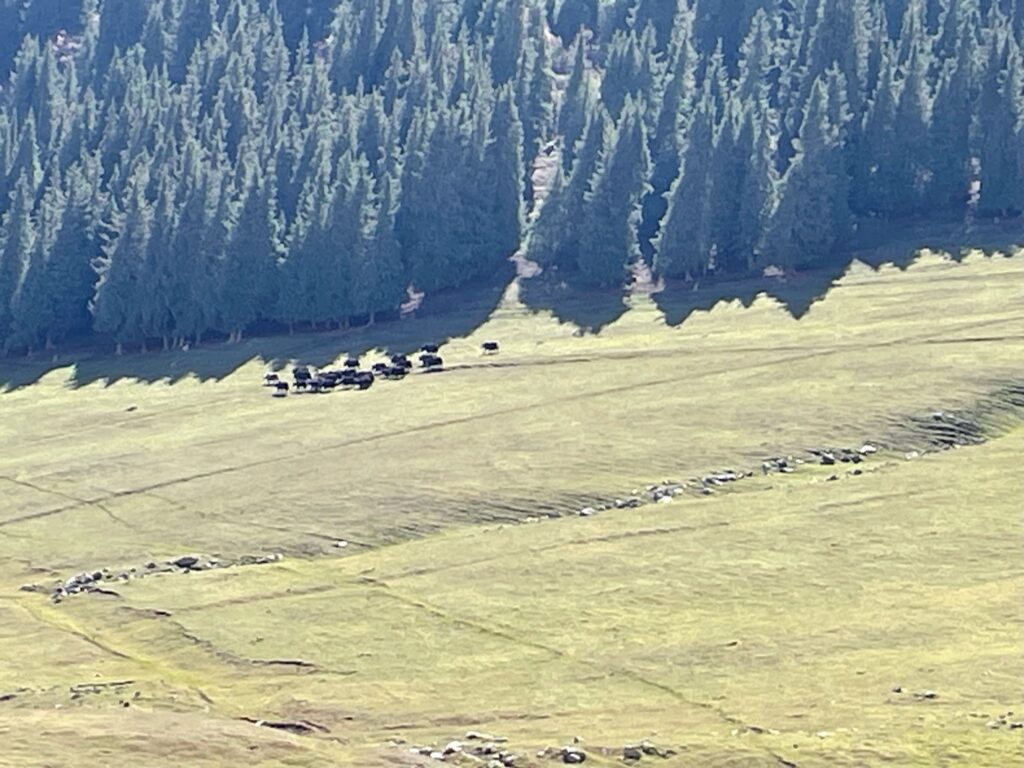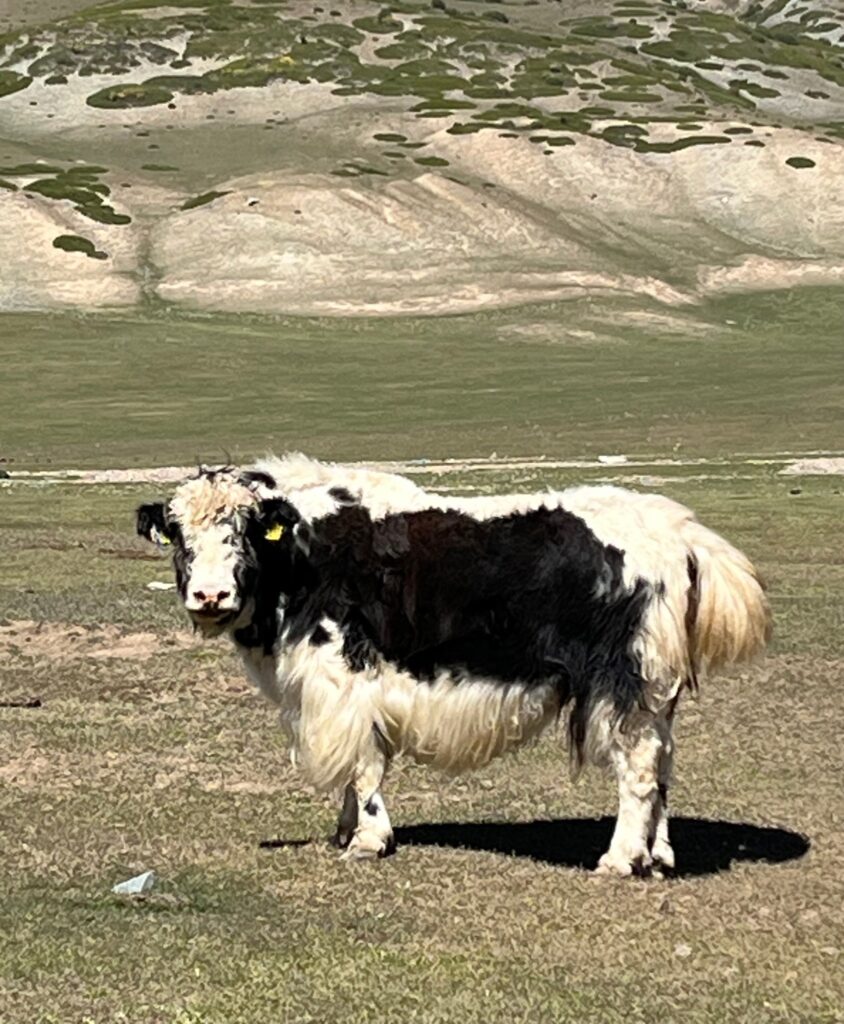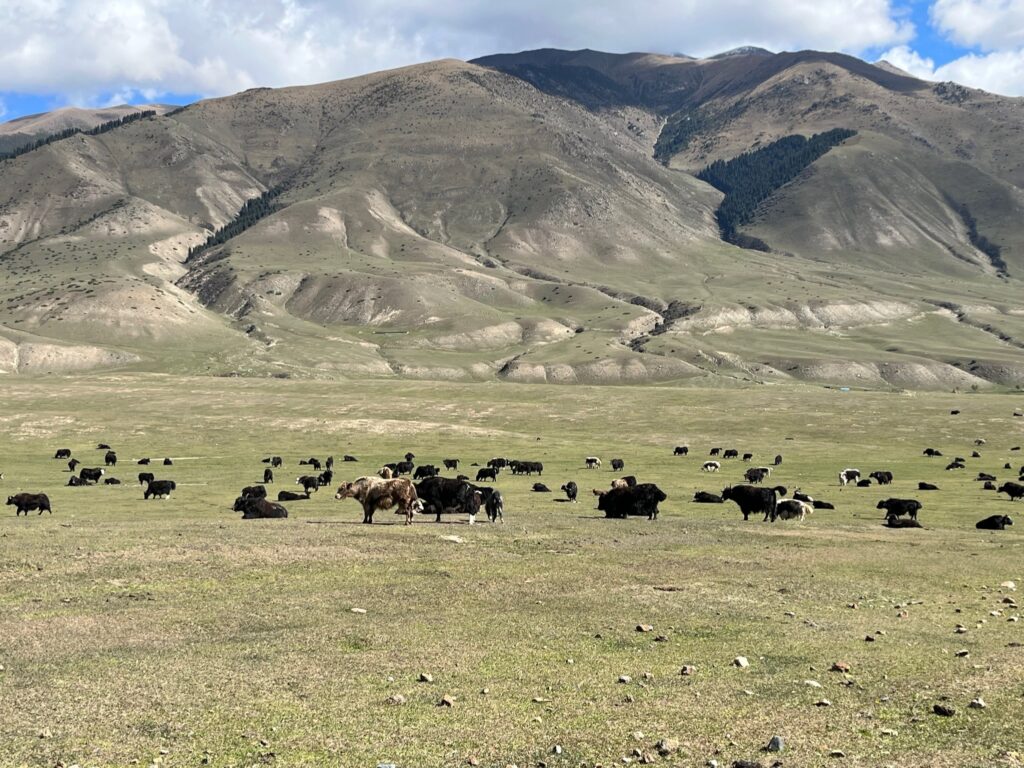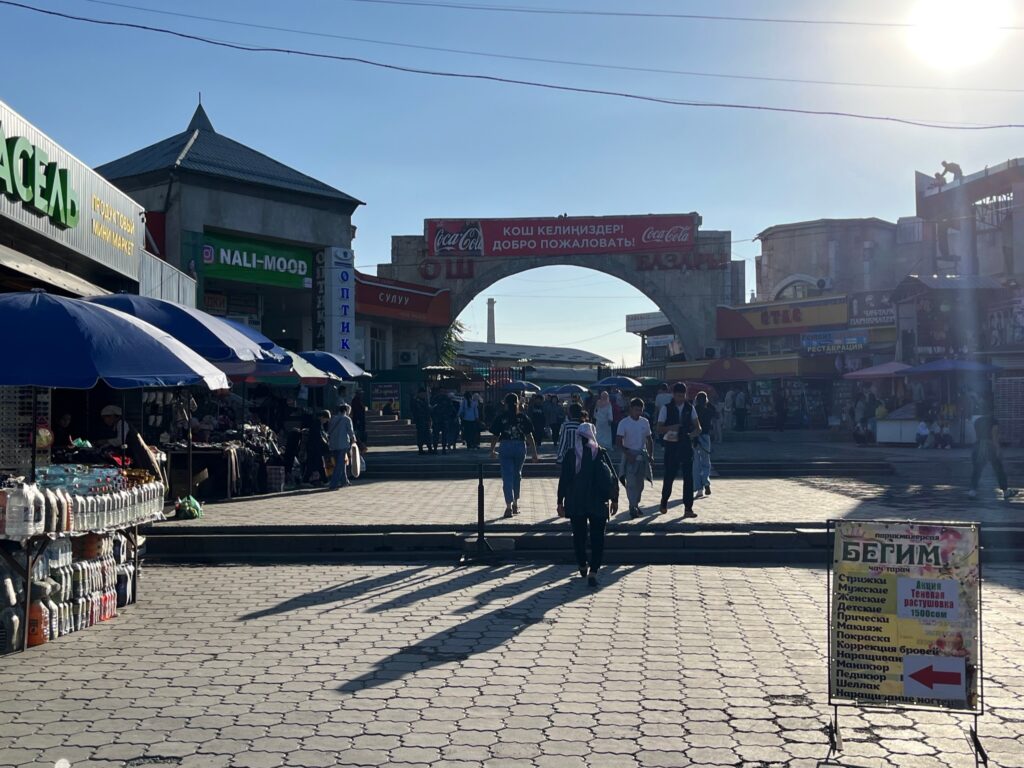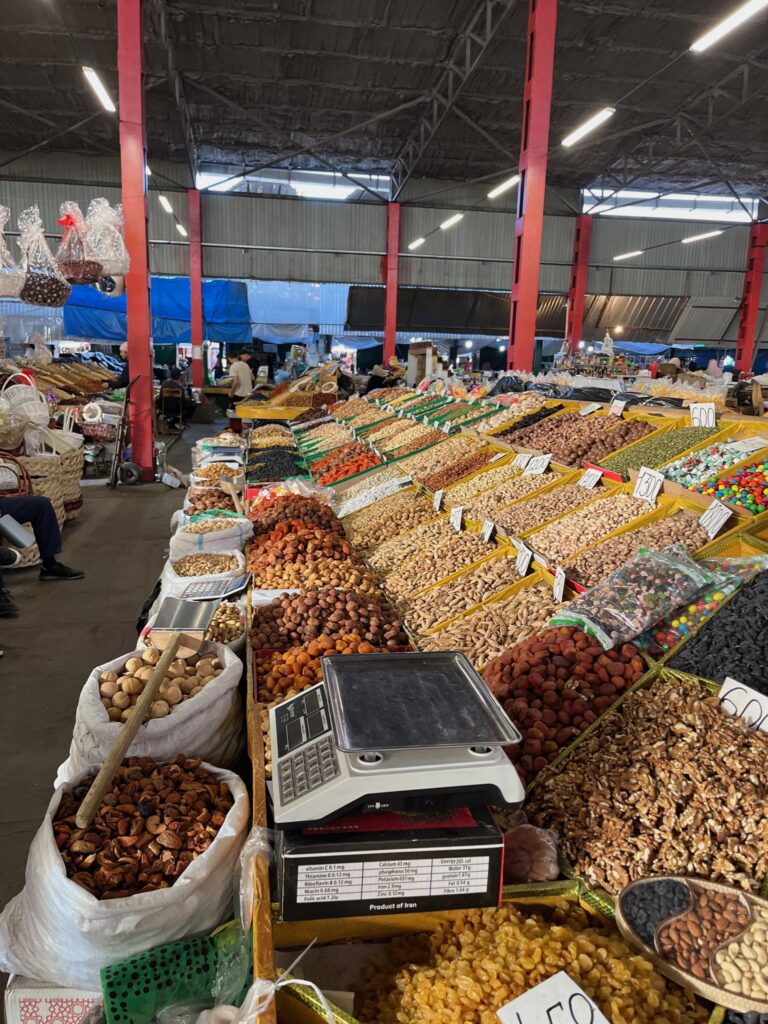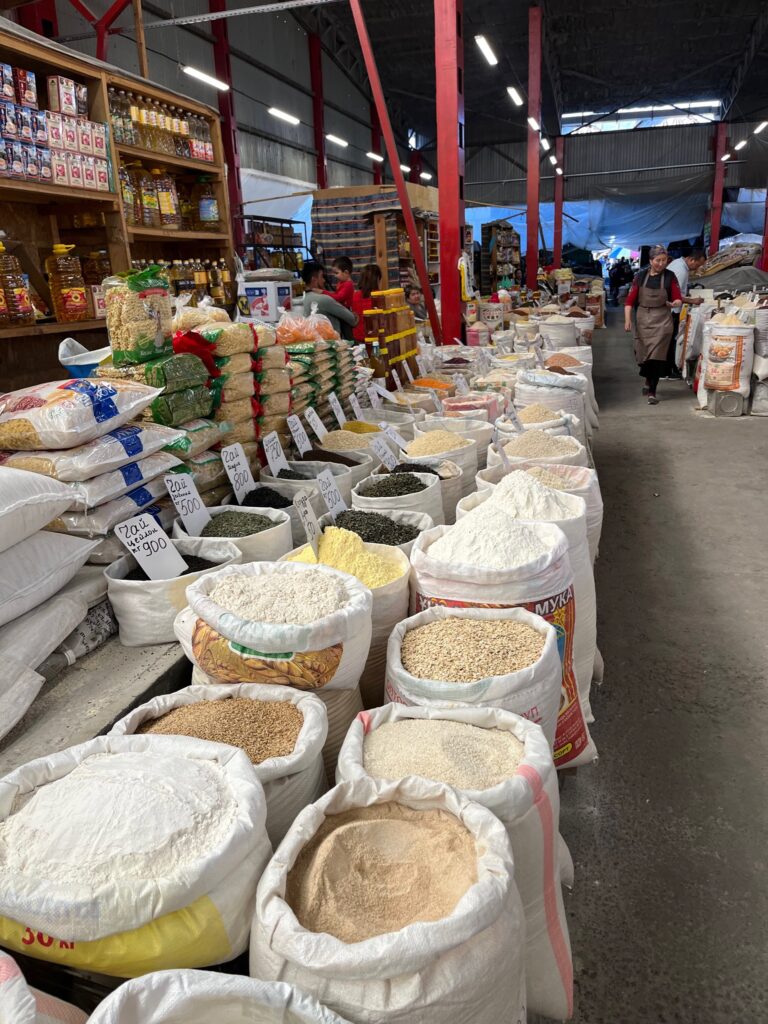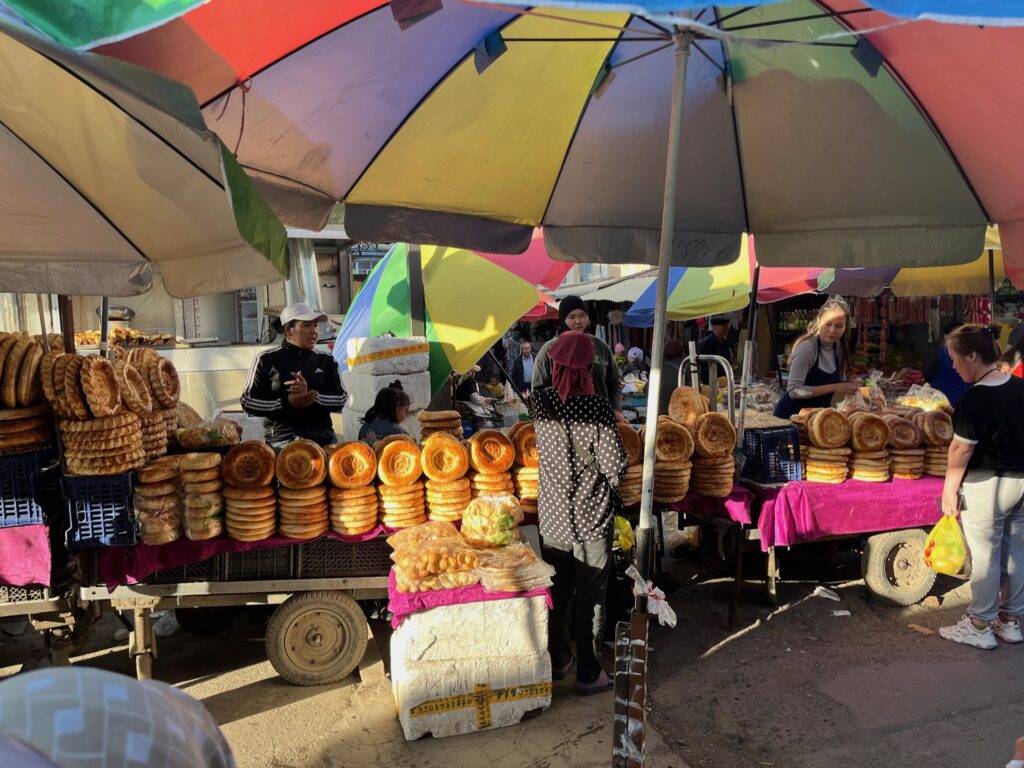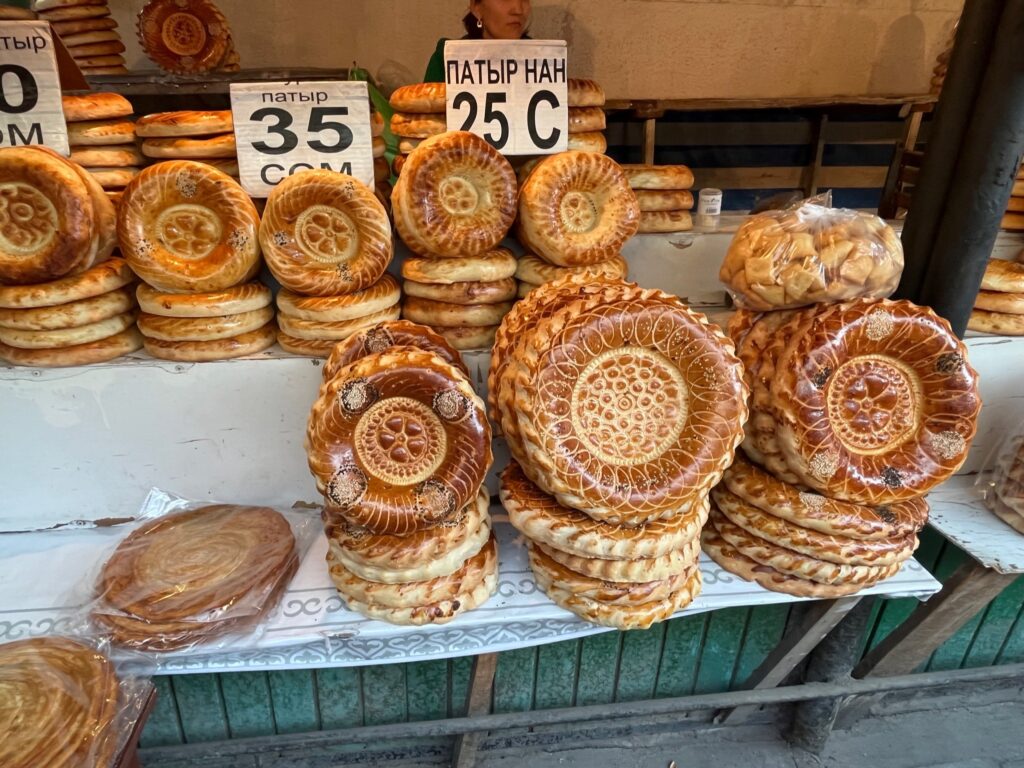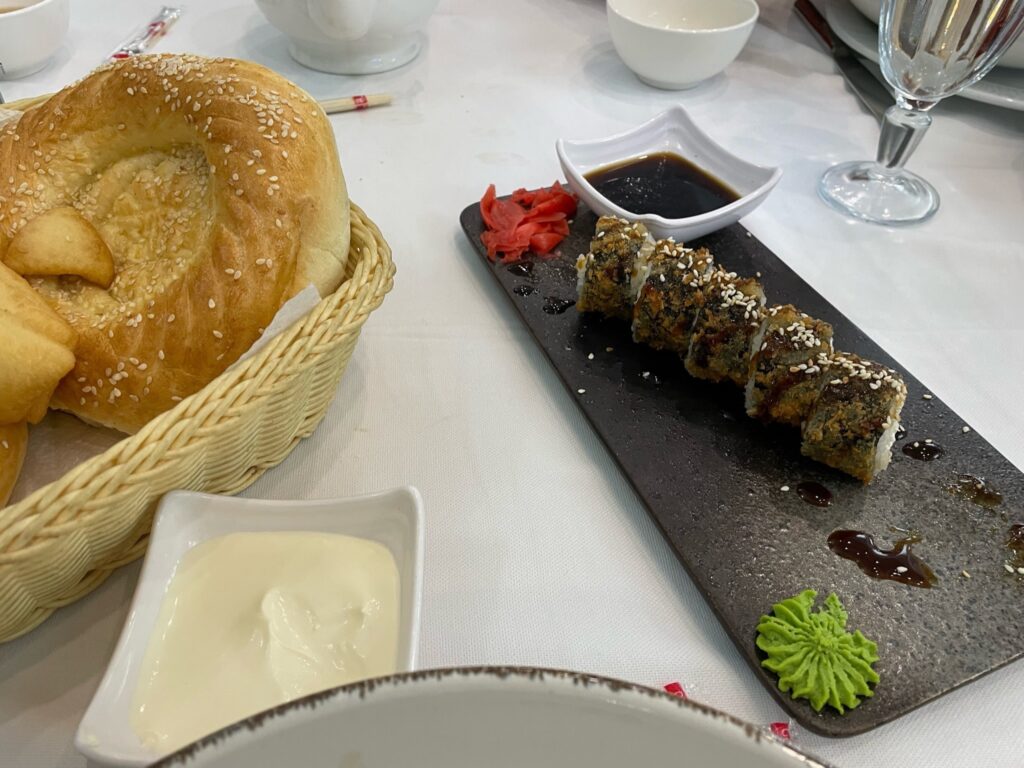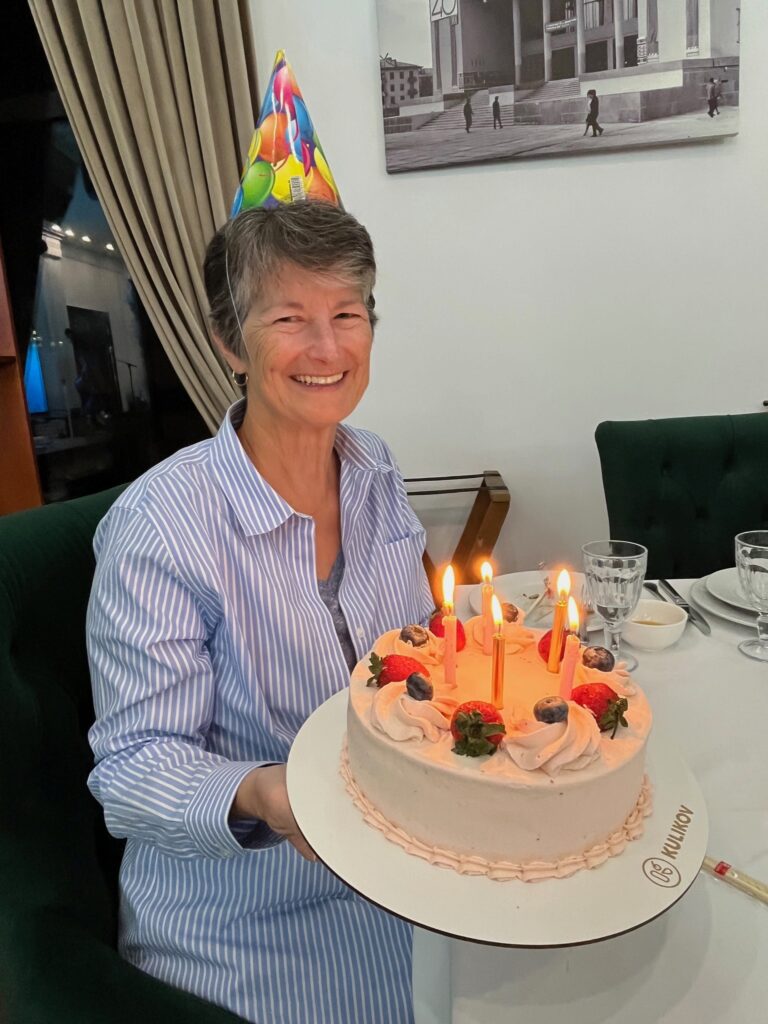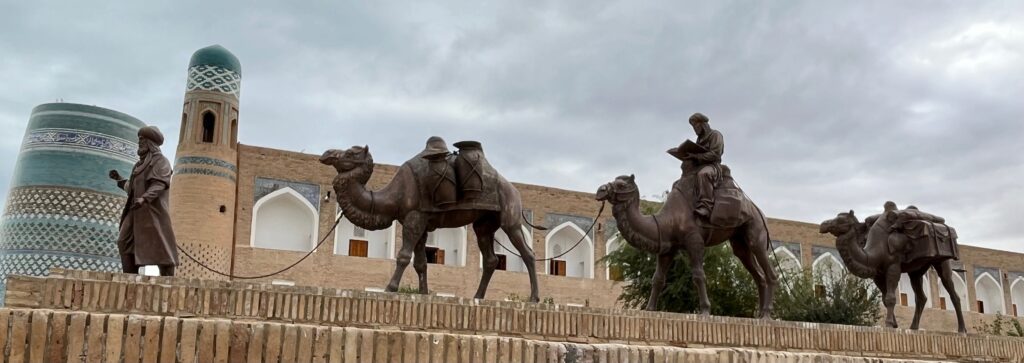
When exploring our 2023 travel destination, we noticed a gaping hole in our wall map that shows the countries to which we’ve traveled. Taking note of that fact, and after looking at multiple alternatives, we decided to travel to “the Stans” to discover an area and cultures with which we are generally unfamiliar. I also wanted to see some of the ancient Silk Road in person. In all honesty, we didn’t know what to expect. Would we be stepping back in time? Would we see an overwhelming amount of Soviet influence lingering since the breakup of the USSR in 1991? The purpose of this blog is tell you what we found. But first, a little context.
A Brief History of the Region
Having a sense of the history of this region helps explain some of its current culture. Of course, the diversity and size of the region makes it impossible to explain its history in a few paragraphs, but the following summary from Britannica provides a start.
“The human occupation of Central Asia dates back to the late Pleistocene Epoch, approximately 25,000 to 35,000 years ago, but the first identifiable human groups to live there were the Cimmerians and Scythians (1st millennium BCE) in the west and the Hsiung-nu people (from 200 BCE) in the east. In the 6th century CE the first Turkic people established an empire that lasted for two centuries and greatly influenced the region’s subsequent ethnic character. Another Turkic people, the Uighurs, rose to dominance in the 8th century, and their rule in turn gave way to that of the Khitans and then to the Karakhanids, a Turkic people closely related to the Uighurs. The region was gradually Islamized beginning in the 11th–12th century, a process that was virtually complete by the 15th century. The Mongols took over almost all of Central Asia in the 13th century, and their rule in the form of various independent khanates lasted until the conquests of Timur (Tamerlane) about 1400. Following the breakup of his dynasty, southern Central Asia became divided into several rival khanates that were ruled by his descendants. By the end of the 15th century all of these Timurid possessions had fallen into the hands of the Uzbek people. Russia’s conquest of the region began in the 17th century and continued until the last independent Uzbek khanates were annexed or made into protectorates in the 1870s. Soviet rule replaced that of the Russian tsars after the Russian Revolution of 1917, and thereafter the region was increasingly integrated into the Soviet system through a planned economy and improved communications. In the 1920s and ’30s the Soviet government created five Soviet socialist republics out of the region: the Kazakh S.S.R., the Uzbek S.S.R., the Kirgiz S.S.R., the Tajik S.S.R., and the Turkmen S.S.R. Under Soviet rule, southern Central Asia undertook the large-scale cultivation of cotton to supply the U.S.S.R.’s textile industry with raw material. When the Soviet Union collapsed, all five Central Asian Soviet socialist republics obtained their independence in 1991, becoming the sovereign and independent nations of Kazakhstan, Uzbekistan, Kyrgyzstan, Tajikistan, and Turkmenistan.”
The “Stans” Today
As you read through this blog entry, there are some important things to consider, including:
- As mentioned above, the countries we visited became independent states very abruptly in 1991 upon the dissolution of the Soviet Union. So, despite centuries of tribal and imperialism history, the modern independent governance of each country is only 32 years old.
- The average annual salary in the United States is approximately $74,700. The average annual salary of the four countries we visited is:
- $4,020 in Uzbekistan;
- $1,908 in Tajikistan;
- $7,800 in Kazakhstan; and,
- $3,348 in Kyrgyzstan.
- The estimated 2023 GDP per capita is set forth below. By comparison, the similar US GDP per capita is approximately $80,000.
- Uzbekistan: $2,563.
- Tajikistan: $1,277.
- Kazakhstan: $12,306.
- Kyrgyzstan: $1,736.
- The population of each country is as roughly as set forth below. Recognize in each case that the majority of the population is located in urban areas.
- Uzbekistan: 35 million over 173,351 square miles, yielding an average population density of 201 people per square mile.
- Tajikistan: 10 million over 55,039 square miles, yielding an average population density of 182 people per square mile.
- Kazakhstan: 19 million over 1.05 million square miles, yielding a population density of 18 people per square mile.
- Kyrgyzstan: 7 million over 77,201 square miles, yielding a population density of 91 people per square mile.
Our Itinerary
When choosing our itinerary, we examined recommendations from several tour operators to get a “feel” for the options and what we might expect. In the end, we selected Silk Road Treasure Tours, an operation run by Zulya Rajabova from a base in New Jersey. Zulya is a native Uzbek from Bukhara, where her extended family still lives, and from which they assist with the on-the-ground planning for the trip. We chose an itinerary very similar to that offered to her larger group tours, but opted to travel alone (i.e., not part of a larger group). A summary of our itinerary is provided below:
– September 12 – 14
Tashkent, Uzbekistan. Lodging: Tashkent Palace. 3 nights.
– September 14 – 16
Samarkand, Uzbekistan with 9/15 daytrip to Penjikent, Tajkistan..
Lodging: Grand Samarkand Superior Hotel. 2 nights.
– September 16 – 18
Bukhara, Uzbekistan. Lodging: Sasha & Son Boutique Hotel. 2 nights.
– September 18 – 20
Khiva, Uzekistan. Lodging: Asia Khiva Hotel. 2 nights,
– September 20/21
Tashkent, Uzbekistan following late night flight from Khiva.
Lodging: Tashkent Palace. 1 night.
– September 21 – 24
Almaty, Kazakstan following afternoon flight from Tashkent. Lodging: Rixos 5* Hotel. 3 nights.
– September 24
Bishkek, Kyrgyzstan. Lodging: Orion 5* Hotel. 1 night
– September 25
Issyk Kul, Kyrgyzstan. Lodging: Karven 4 Seasons. 1 night.
– September 26.
Bishkek, Kyrgyzstan. Lodging: Orion 5* Hotel. 1 night.
– September 27, 2023
Fly from FRU (Bishkek, Kyrgyzstan) to IST (Istanbul, Turkey).
Fly from IST to AMS (Amsterdam, Netherlands).
Lodging at Sheraton Amsterdam Airport Hotel. 1 night.
– September 28, 2023
Fly from AMS to home airport.
Itinerary Breakdown
Tashkent, Uzbekistan
We arrived in Tashkent in the middle of the night of September 11/12 and were promptly driven to the Tashkent Palace for the next three nights. The hotel is part of the Lotte chain of hotels, and was a very nice property in a good location for walking around to see some sites of interest. The hotel was well appointed and had an excellent breakfast selection. Our guide for the entire Uzbek portion of the trip, Mr. Bek, met us the next morning to provide an overview of the city, and to get us moving so as to assist with jet lag. We began with some Uzbekistan history while standing in front of the Alisher Navoiy Theater, built during the Soviet period for ballet and other arts.
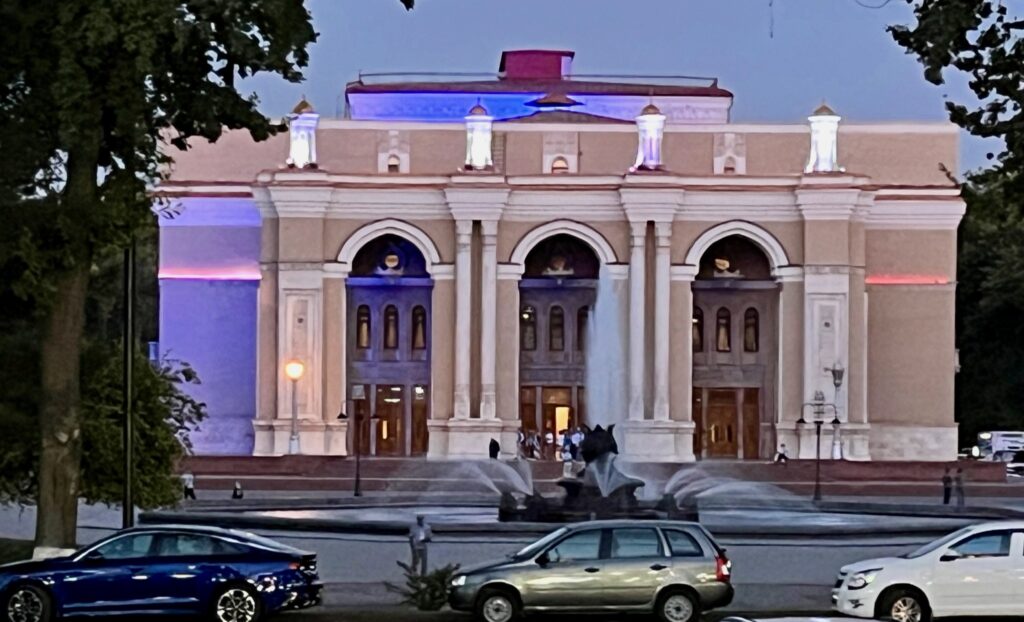
We then walked north along Mustafa Kemal Ataturk Street (past Florya Cafe) to a street market with several merchants selling various things including Soviet memorabilia, woodcrafts, clothing, and toys. We when walked through a park to the Mustakillik Maydoni metro station. We hopped on the metro and travelled to a metro station near Amir Temur Square, a tribute to Tamerlane from the 14th century. We toured the park, including getting a picture of the Tamerlane statue, as well as the Uzbekistan Hotel.
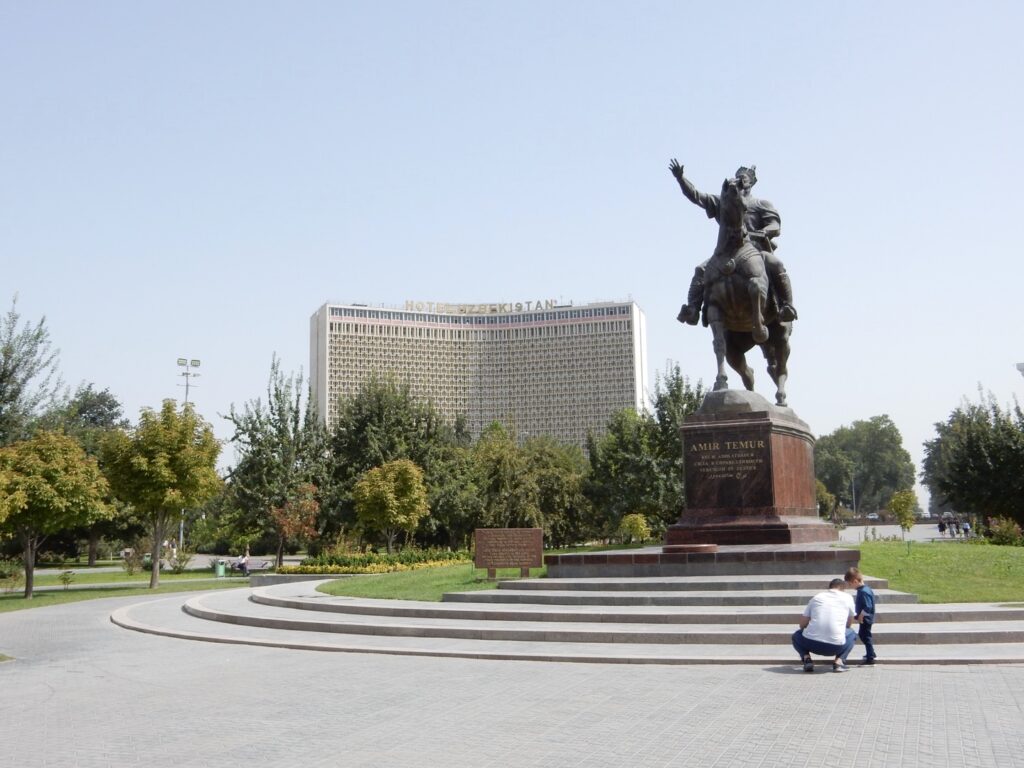
This hotel was apparently built during the Soviet era, as evidenced by its concrete, blocky appearance. We then walked back to the Florya Cafe where we enjoyed lunch. Our lunches consisted of a “mixed sandwich” (pepperoni and salami sandwich with tomatoes, cucumbers, lettuce and mayo) and Dolmas (Dolmades), bread, and tea. We then walked back to our hotel to rest for a while. Later in the afternoon we went for a walk through a neighboring park filled with trees and lined with restaurants and playgrounds for children to play in. We also explored the hotel to learn more about our restaurant choices for dinner.
The next day, September 13, we toured the following sites:
- Khasret Imam complex. This complex consists of the Khasret Imam Mosque built in just 4 months in 2007 at the instruction of President Karimov. Within the mosque the columns are made of sandalwood from India, dark green marble from Turkey, and the interior of the blue-tiled dome is decorated with genuine gold leaf.
- Abu Bakr Kaffal Shashi Shrine. The Kaffal Shashi mausoleum stands at the northwest corner of the Khasret Imam square. It commemorates the life of Abu Bakr Mohammed Kaffal Shashi, a native poet, linguist, polymath, and scholar who lived in the 10th century and traveled widely throughout the Islamic world.
- Muyi Mubarak Library. This building contains dozens of historical documents, including the world’s oldest Qu’ran. Unfortunately, we were not allowed to take a picture of the document.
- Sheik Tellya Mosque. This mosque, built in 1856, was formerly Tashkent’s main place of worship. The mosque has attractively carved pillars and painted ceilings, although not as ornate as the Khasret Imam Mosque that replaced it.
- Central Asia Pilaf Center. Plov (pilaf) is a common dish throughout Central Asia. Uzbeks in particular, however, have made it into a uniquely national obsession. This obsession is celebrated in full force at the Central Asian Pilaf Center in Tashkent. Typical plov consists of rice, carrots, and meat cooked together, but every corner of Uzbekistan makes its own version and claims to have the best one. Not only is plov an important source of nourishment for the Uzbeks, but it also represents hospitality, community, and identity; it’s not uncommon to see it served at weddings or festivals. At large gatherings, plov chefs, called osphaz, can prepare a giant meal for up to 1,000 people from a single cauldron (kazan). The menu at the Plov Center is simple; there’s plov, salad, and drinks. Customers get to choose how much rice, how much meat, and whether or not they’d like an egg or kazy(horse sausage, similar to Kazakh shuzhuk). Each batch is cooked in a giant, wood-fired kazan, then scooped onto customers’ plates in the cavernous dining hall.
- Chor-Su Bazaar. This bazaar, housed in a building designed by Vladimir Asimov, Sabrina Adylov, et al, as a late example of Soviet Modernism style. The building has a characteristic blue dome. The bazaar is the largest in Tashkent, and shows the expansive range of items available in the area, whether food or otherwise. It also puts on display the realities and diversity of local life in a major city in Tashkent. The bazaar is, as one writer puts it, as modern as it needs to be and as local as it should be, with the region’s legacy intertwined within all of it.
- The Crying Mother Monument. Fronted by an eternal flame, this monument was constructed in 1999 to honor the 400,000 Uzbek soldiers who died in WWII. The niches along its two wood column corridors enshrine the soldiers’ names.
- Abdul Kasim Medreseh. This complex, consisting of a madrasa, a mosque, and a khanaqah, was the site of the signing of a peace treaty in 1865 following the Russian capture of Tashkent. Following the October revolution of 1919, the building was shut down, and later was used by a Tashkent toy factory and fell into disrepair. It was renovated in the early 1980’s and inaugurated in 1987. Today, this Madrasah houses the Khurnamad Association for Craftsman, including painters, jewelers, wood engravers, and miniaturists practicing their skills.
On September 14, we started the day with a small breakfast at 6:30, checked out of the hotel, and were driven to the high-speed train station for our 2 hour and 20 minute journey to Samarkand. While on the train ride we passed through small farming communities, fields of vegetables, corn and cotton (a major agricultural good in Uzbekistan), and people going about their everyday lives by many means of transportation, including walking, biking, and riding a horse. In the fields we periodically saw cattle, horses, and the occasional donkey. The buildings along the route ranged from fairly new to old and in disrepair. This area is very flat, and quite arid.
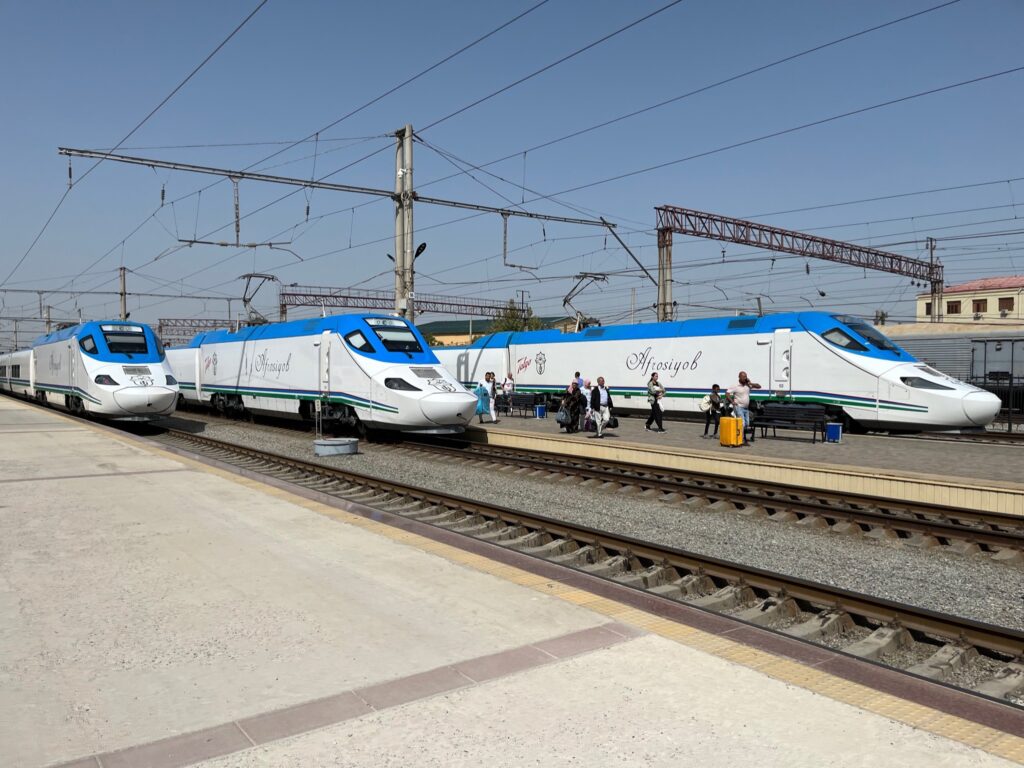
Samarkand, Uzbekistan
Upon arrival in Samarkand we spent our day visiting the following sites:
- Bumazhnaya Fabrika “Meros”. This tourist attraction demonstrated the art of making paper from Mulberry tree bark, oil for plov, and ceramics. All activities were powered only by water and involved several steps. The paper making was probably the most interesting in that it involved many steps and nuances that you wouldn’t normally think of (e.g., stripping the bark down to make it thin, soaking the bark in water for various amount of time at various stages of the process, pulverizing the pulp using a huge log and water-driven piston, and pressing out the water).

- Wine tasting at Khovrenko. The Khovrenko wine factory has been producing wines here since 1868. The winery grows grapes throughout Uzbekistan and has dozens of factories around the country. While wine is not greatly consumed in the region, the winery produces a handful of good quality wines often a blend of Georgian grapes, French grapes and Azerbaijanian grapes. In addition, the winery produces some sweet dessert wines, a couple of cognacs, and a port-like elixir. While enjoyable, I chose not to bring any bottles home.

- Uleg Bek observatory. The remains of Uleg Bek’s 15th century observatory is one of the great archaeological discoveries of the 20th century. Uleg Bek’s 30 meter quadrant, designed to observe star positions, was part of the three-story observatory built in the 1420s. All that currently remains is the instrument’s huge curved track, unearthed in 1908. This site was one of the highlights of the trip, and highlighted the contribution of Central Asia to math and science during the medieval period.
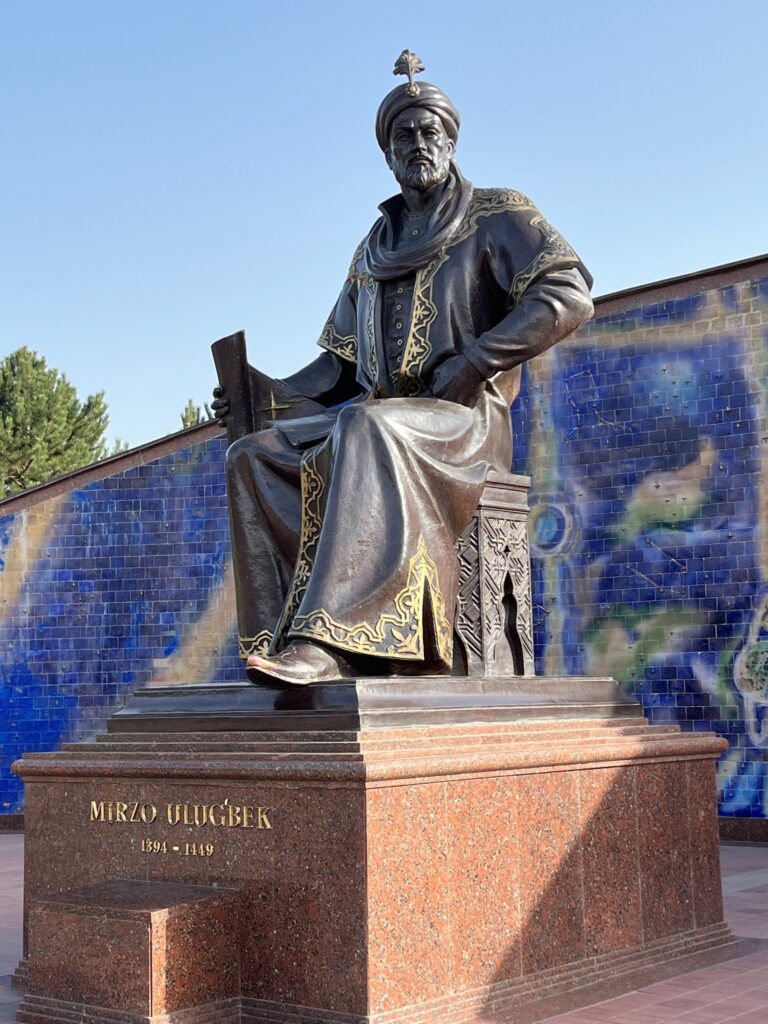
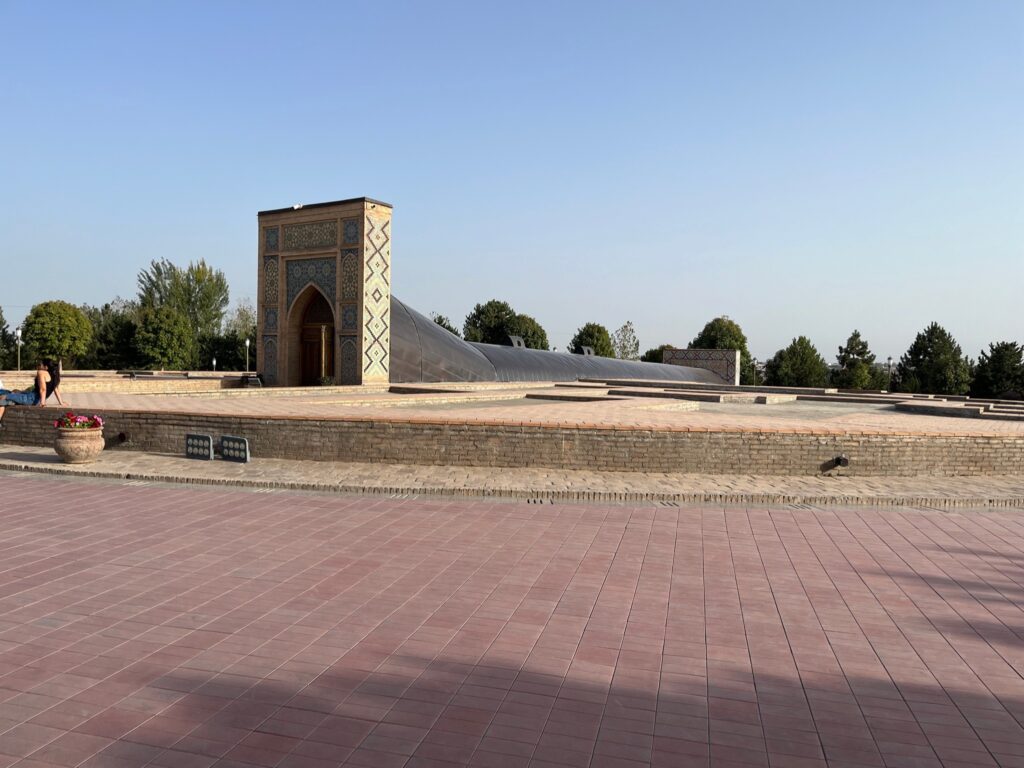
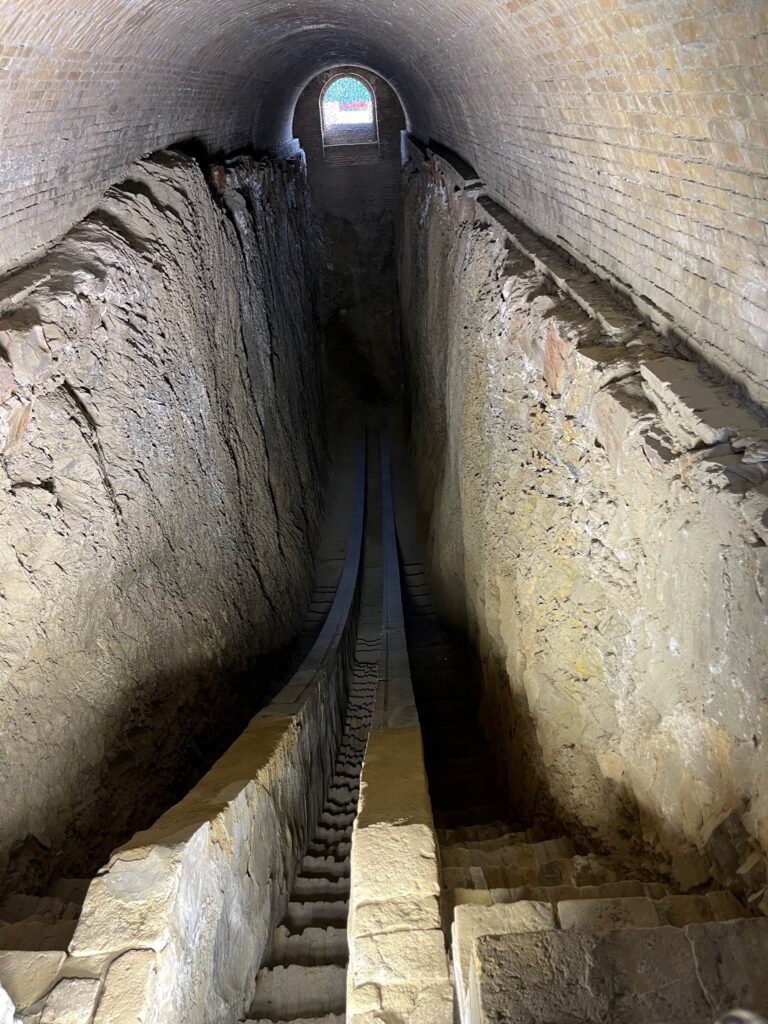
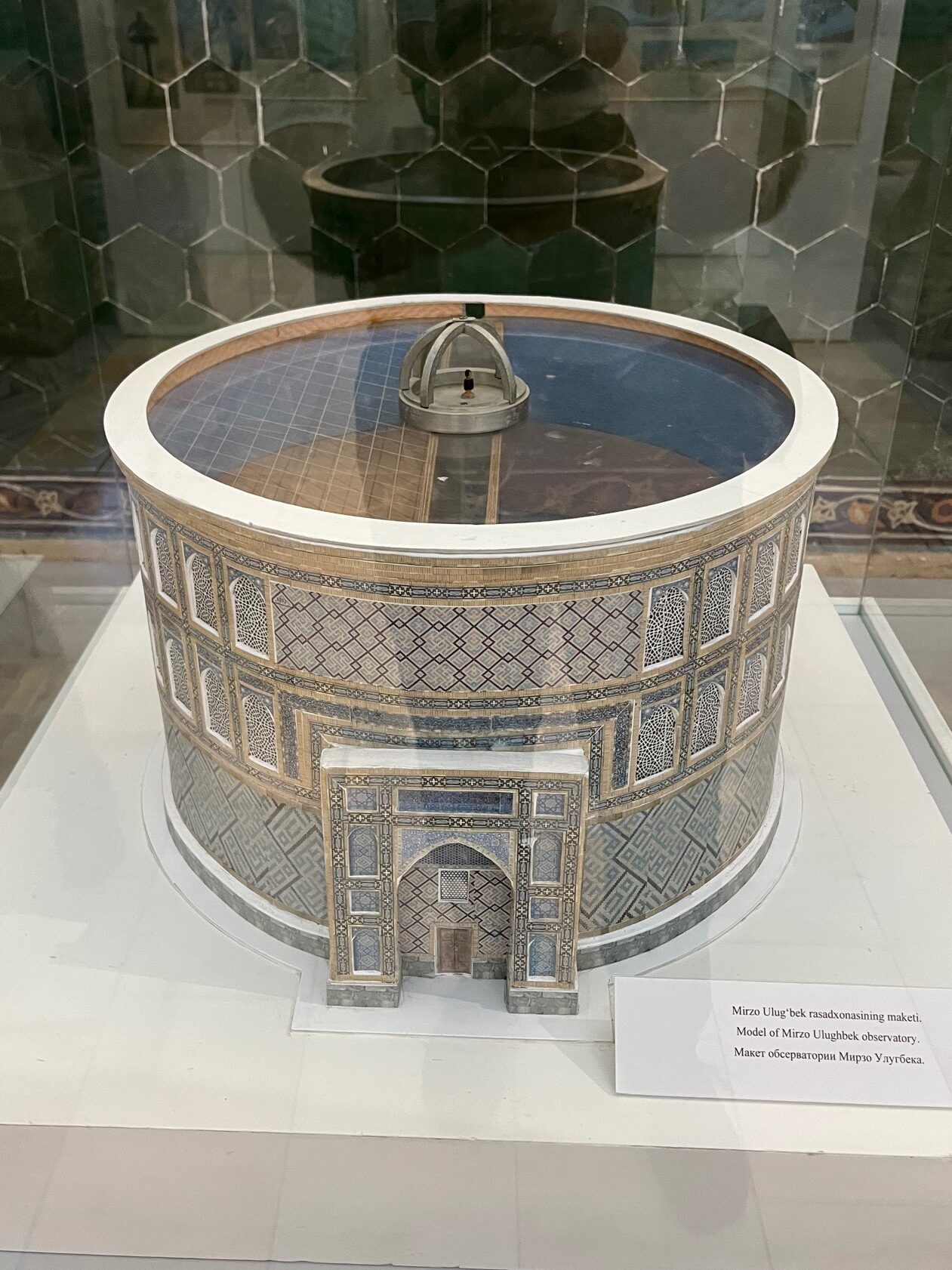
After our day’s touring, we enjoyed dinner at Samarkand Restaurant, a huge venue with one dining area with an Uzbek theme and a smaller one with a Russian theme (in addition to party rooms and individual dining suites).
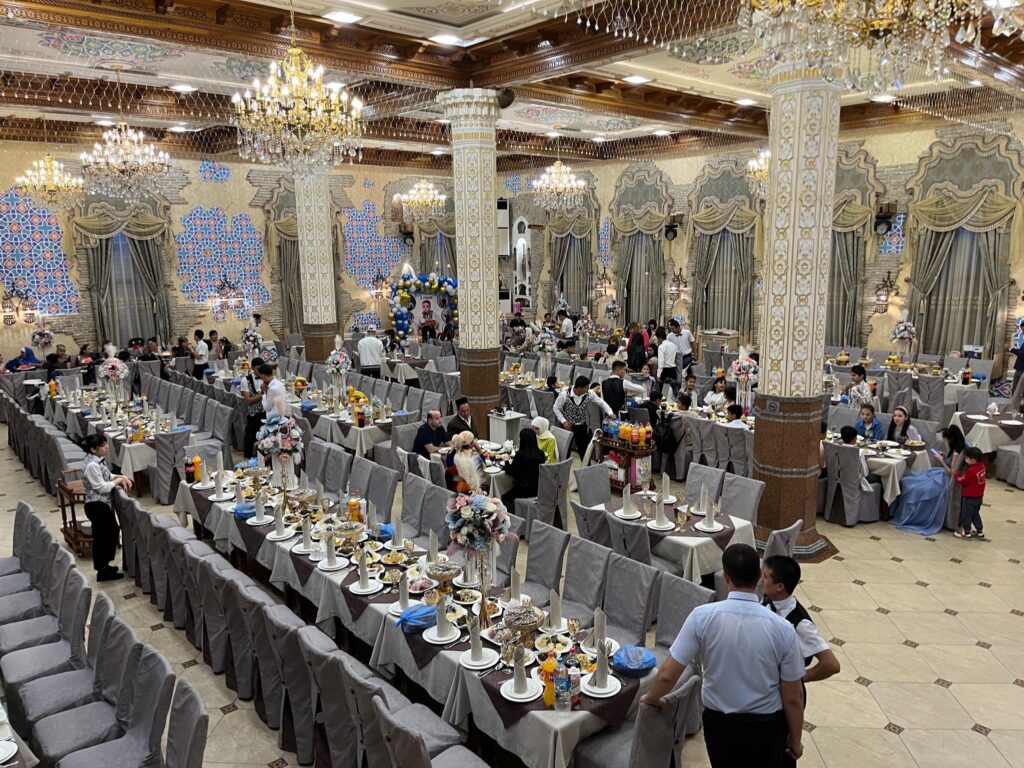
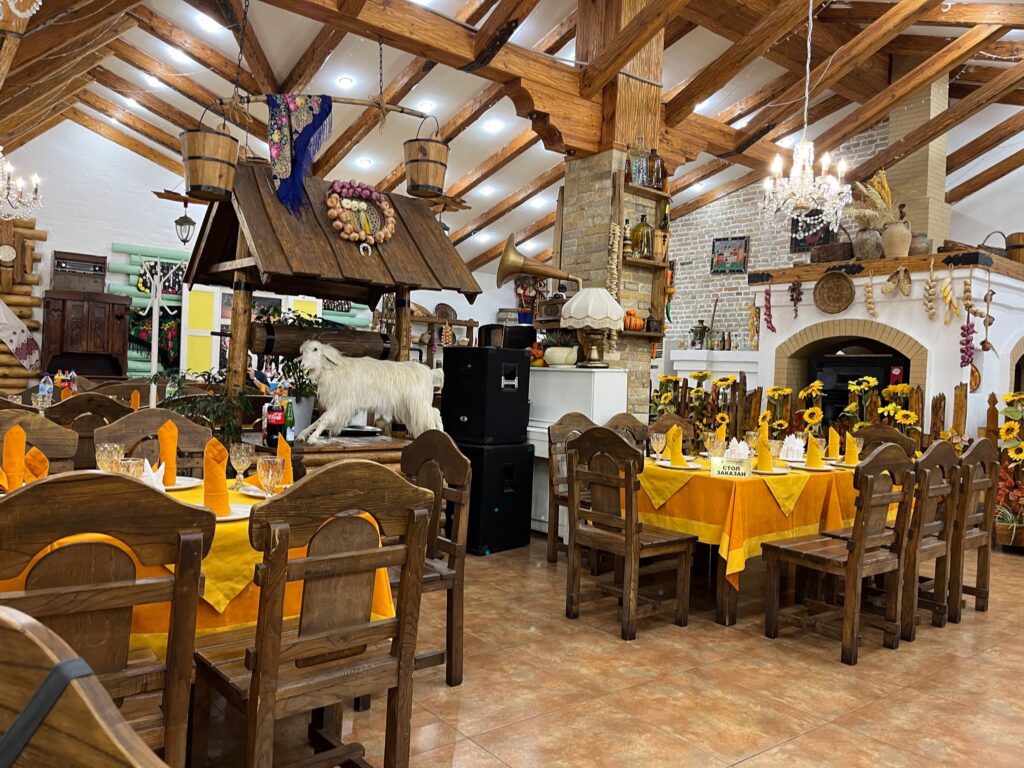
The establishment was brightly colored and loud with music and the festivities of parties going on throughout the venue (see the video below).
Our hotel while in Samarkand, the Grand Samarkand Superior Hotel, was a small boutique hotel with a very nice breakfast, and beautiful rooms.
More about Samarkand from Britannica:
“Samarqand is a city in east-central Uzbekistan that is one of the oldest cities of Central Asia. Known as Maracanda in the 4th century BCE, it was the capital of Sogdiana and was captured by Alexander the Great in 329 BCE. The city was later ruled by Central Asian Turks (6th century CE), the Arabs (8th century), the Samanids of Iran (9th–10th century), and various Turkic peoples (11th–13th century) before it was annexed by the Khwārezm-Shāh dynasty (early 13th century) and destroyed by the Mongol conqueror Genghis Khan (1220). After it revolted against its Mongol rulers (1365), Samarkand became the capital of the empire of Timur (Tamerlane), who made the city the most important economic and cultural centre in Central Asia. Samarkand was conquered by Uzbeks in 1500 and became part of the khanate of Bukhara. By the 18th century it had declined, and from the 1720s to the 1770s it was uninhabited. Only after it became a provincial capital of the Russian Empire (1887) and a railroad centre did it recover economically. It was briefly (1924–36) the capital of the Uzbek Soviet Socialist Republic. Samarkand today consists of an old city dating from medieval times and a new section built after the Russian conquest of the area in the 19th century.”
Day Trip to Tajikistan
The morning of September 15 started with breakfast in the hotel restaurant. We were then driven to the border of Uzbekistan/Tajikistan. To get into Tajikistan we had to leave our guide and driver behind at the Uzbekistan border, walk to a fence where we showed our passports to a guard, walk though passport control to get the stamp showing that we were leaving Uzbekistan, walk to a guard to let us into the Tajikistan passport control area, get our day-bags scanned, walk through passport control to get a stamp showing our entry into Tajikistan, walk to another guard and show him our passports to allow us to enter Tajikistan, and then meet our guide and driver on the Tajikistan side of the border. The distance from start to finish is just over 1/2 mile and is mostly open, which made us feel like we were part of a prisoner exchange! But, we made it through without incident and met our guide, Barbad, and our driver, Devashtich.
Our first decision was whether we wanted to drive to the Seven Lakes area, which would take about 4 hours total. Luckily we had a Toyota Prada (like a Land Rover) that was built for the trip, so we agreed it would be a great adventure. We started by driving through Penjikent, an ancient city on the Silk Road that was our ultimate destination for our day in Tajikistan. We drove for several miles southeast of Penjikent before turning south on a paved road. The paved road eventually turned to gravel, and then to rocks, and then to rocks on steep, narrow inclines. And, we’d only just begun our 4 hour journey.
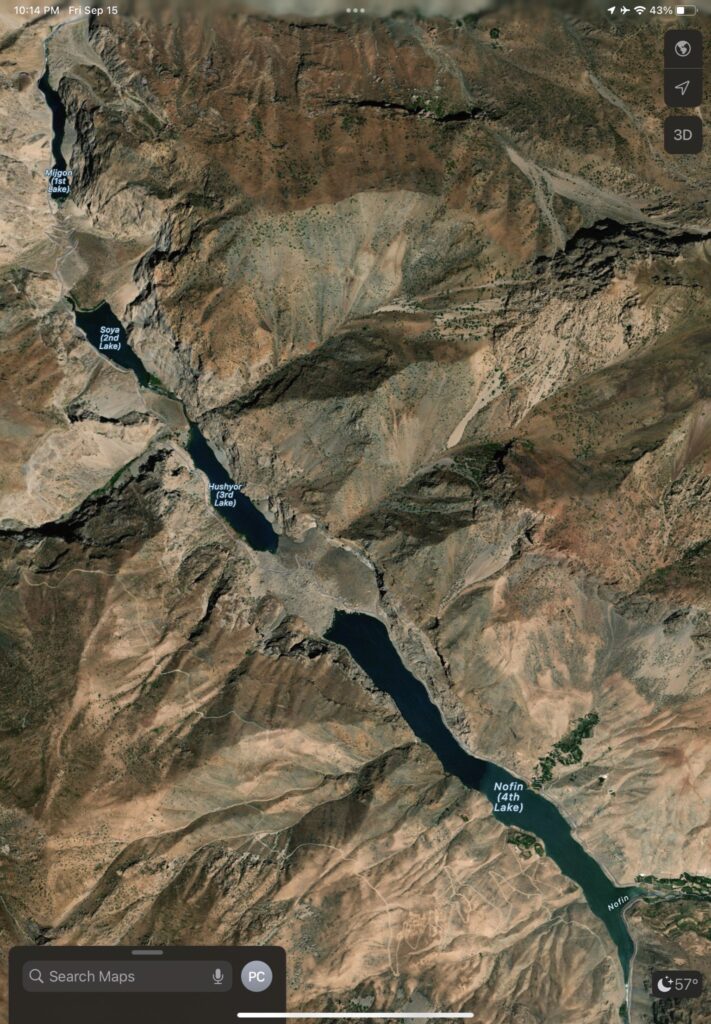
On our way we experienced very rough driving conditions, charming remote villages, gasoline put in our vehicle using a bucket and a funnel, darling children in school uniforms, many donkeys, goats pretending to be mountain goats (or at least wishing they were), a security check as we entered the area of a gold mine administered by the Chinese, and road repair which delayed our journey until an excavator laid out a new road for us using the bucket on this large piece of machinery.
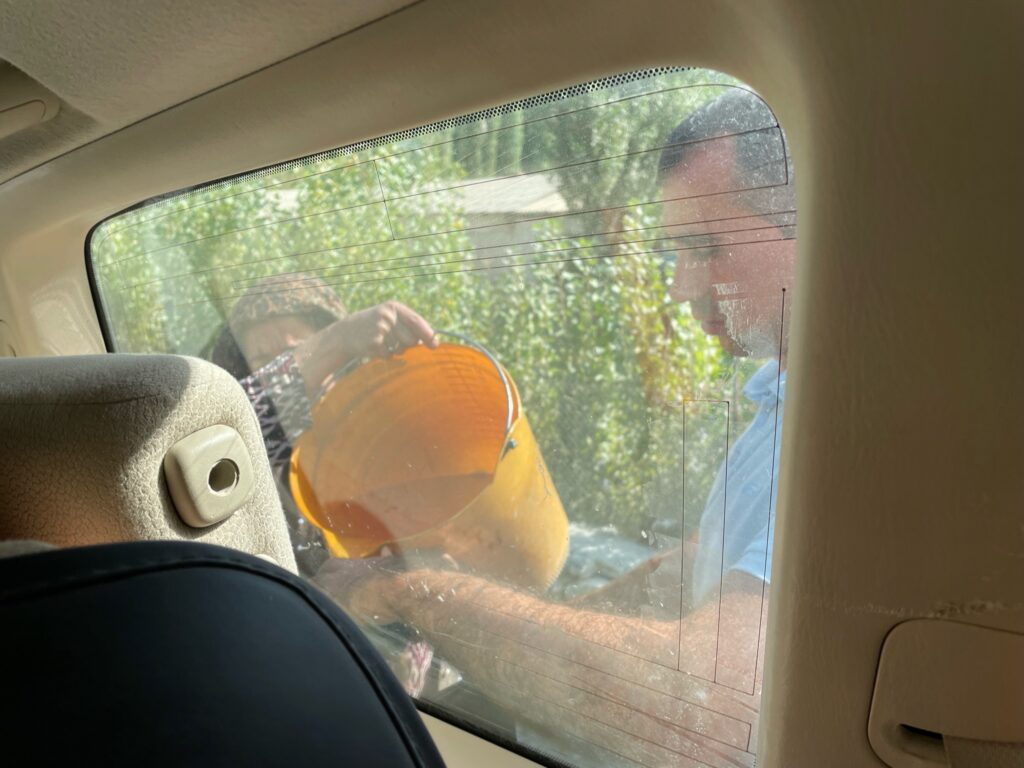
As to the lakes, they are found at the western edge of the Fan Mountains in the Shing Valley. The valley is known for its seven lakes, formed after an earthquake made a series of dams across the valley (or if you prefer, according to legend formed by seven beautiful but lovelorn daughters transforming into water to be at one with their tears).
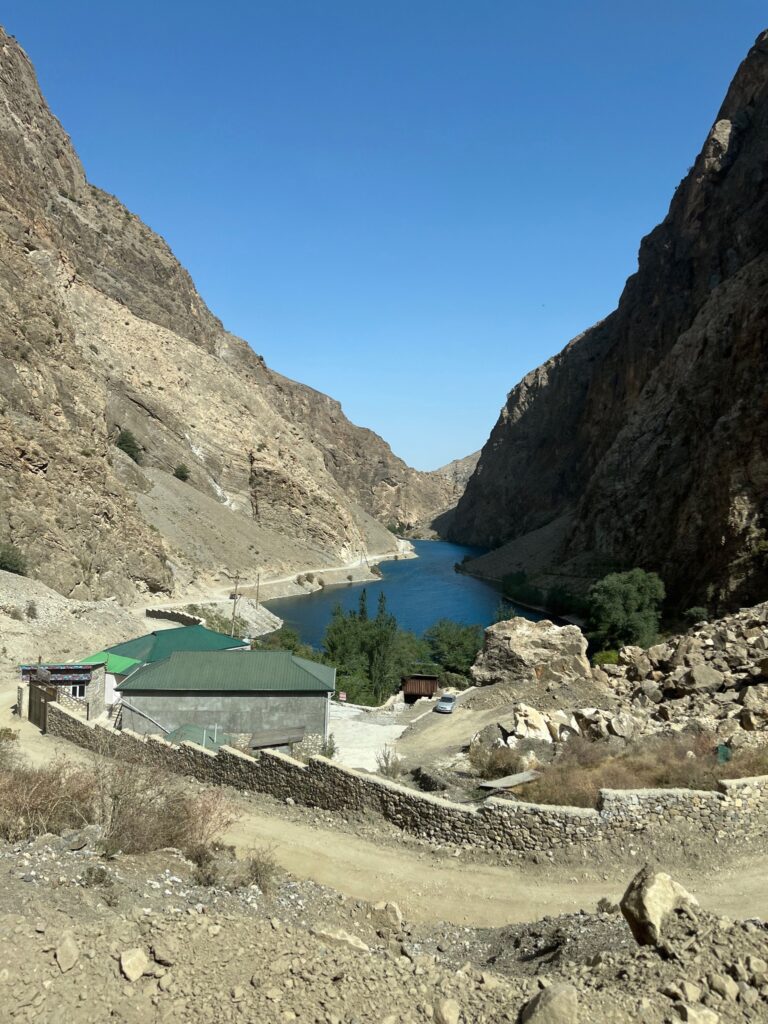
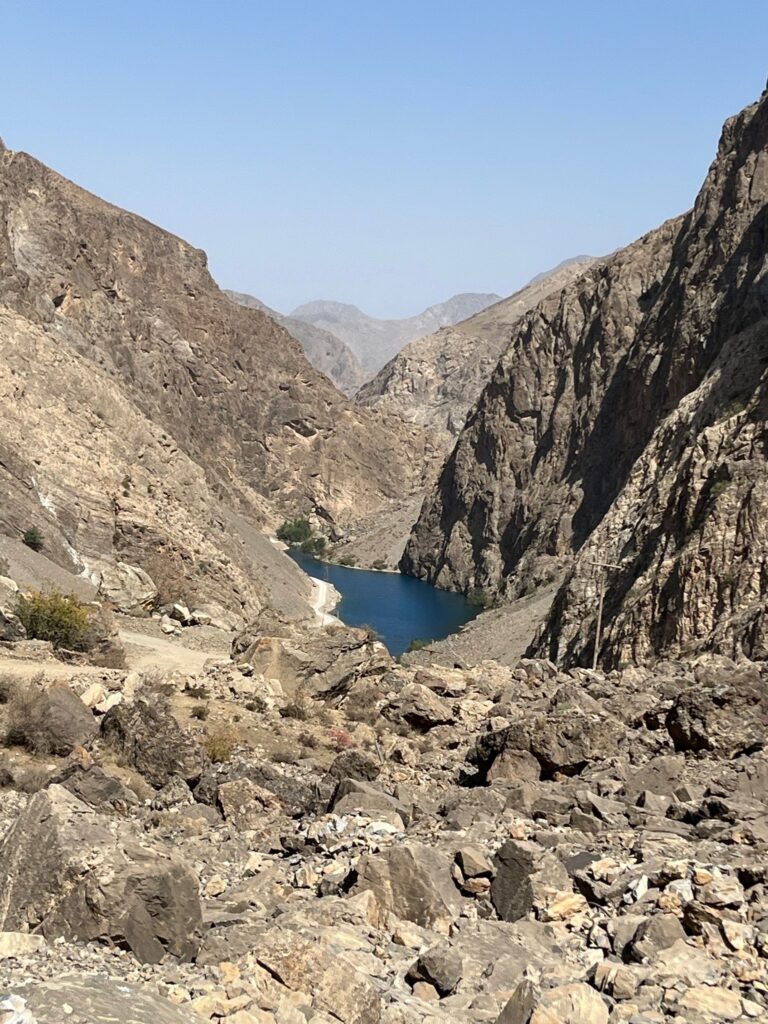
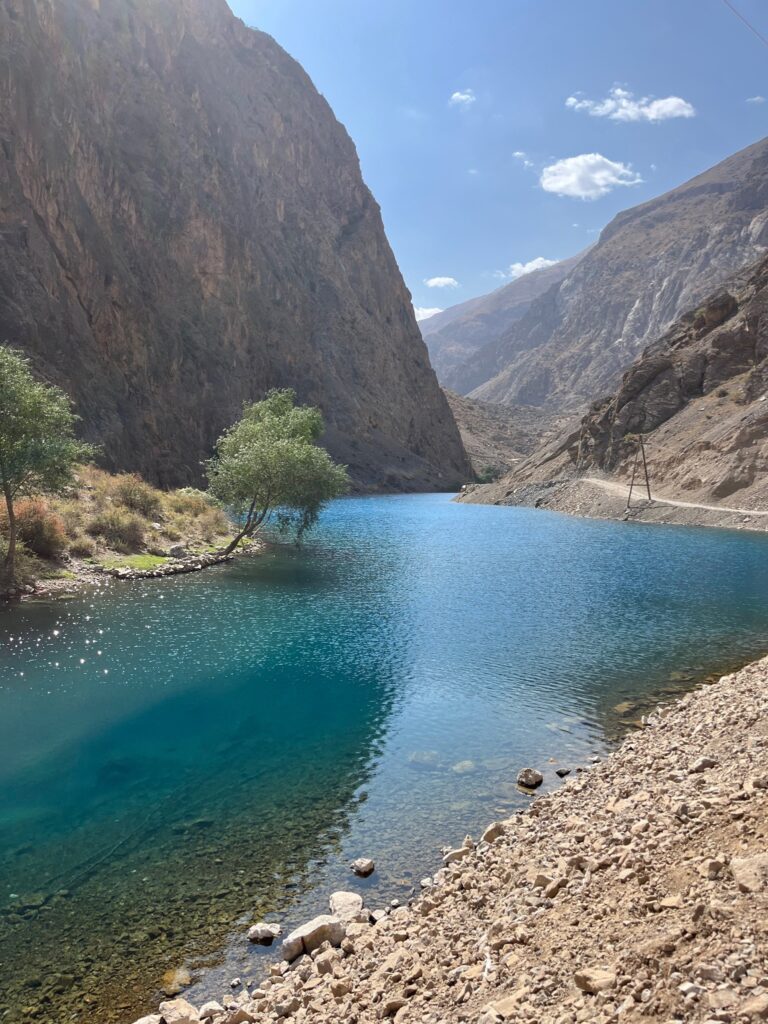
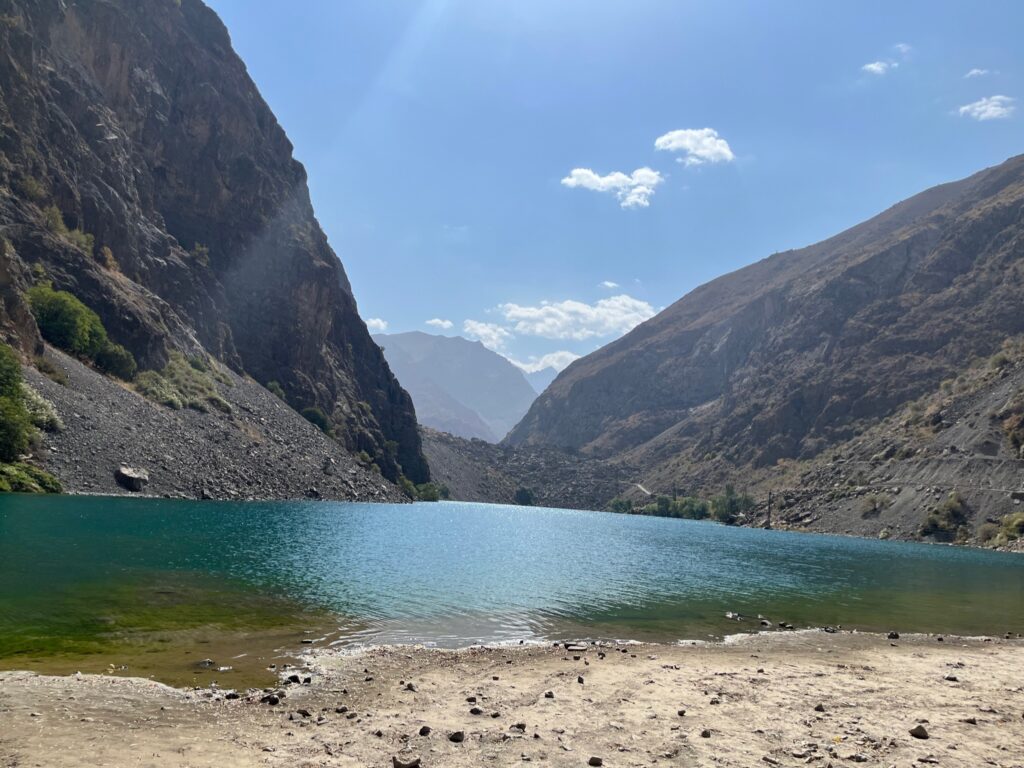
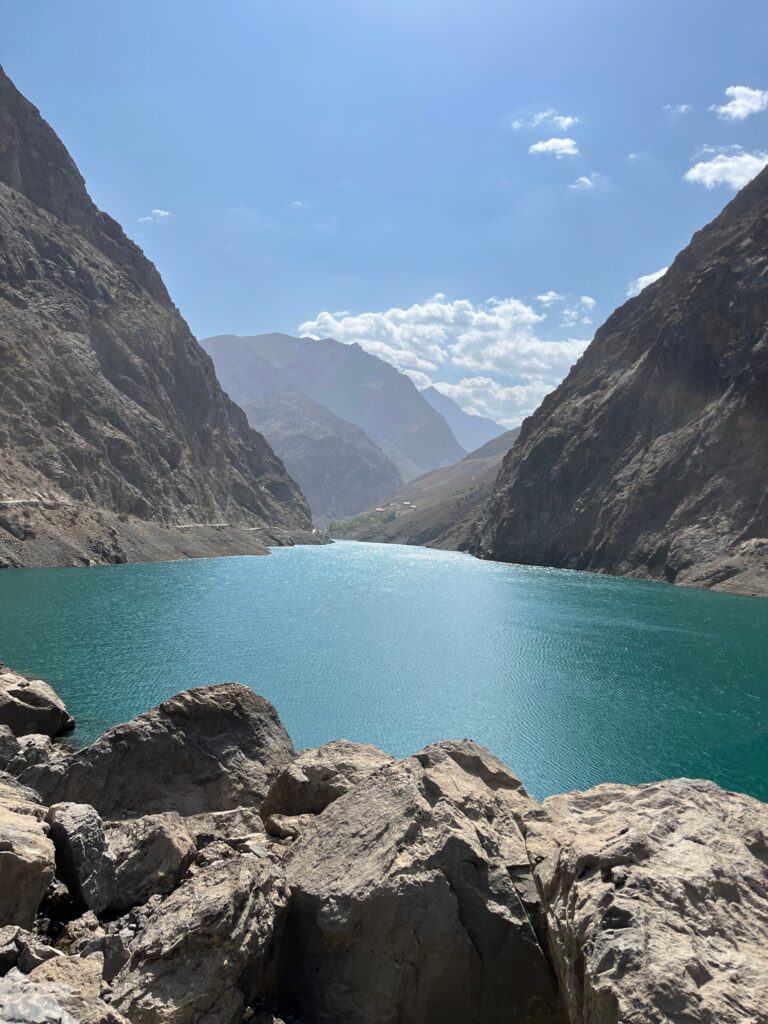
While were were able to get to only four of the seven lakes due to time limitations, their individual and collective beauty was breathtaking as each enjoyed a unique topography and color, due to the differing minerals running into each lake and the direction from which the light struck the water. After we finished taking pictures of all the lakes, we made our return journey to Penjikent, which did not seem to take as long as our journey to the fourth lake.
While in Penjikent we first toured the local bazaar. We then ate a wonderful plov lunch, accompanied by fresh fruit, bread, and a tomato salad, at the local tourist center.
We then drove to the remains of the ancient Penjikent city, which existed from the 5th to the 8th centuries CE. We wandered the site, marveling at the size of the city given its age, and enjoyed the view over the modern city of Penjikent.
More about the ancient city of Penjikent:
Founded over 2,500 years ago, the ancient city of Panjikent survived as a wealthy trading city in the Silk Road until the 8th century AD. The city, as told by historians, was inhabited by the Sogdian civilization who were skilled merchants and craftsmen. It is believed that at its peak, five to ten thousand people lived here. Evidence on site shows that merchants in Panjakent were in constant trade with India and China. The Sogdians were known for their excellent fur and fabrics. By exchanging luxury goods for silver articles, the city of Panjikent was able to develop a great level of wealth.
We next traveled to the Rudaki Historical Museum. We concluded our visit by stopping at the Sarazm Archaeological Site, a UNESCO World Heritage Site.
More about the ancient ruins at Sarazm:
Sarazm, which means “where the land begins”, is an archaeological site bearing testimony to the development of human settlements in Central Asia, from the 4th millennium BCE to the end of the 3rd millennium BCE. The ruins demonstrate the early development of proto-urbanization in this region. This centre of settlement, one of the oldest in Central Asia, is situated between a mountainous region suitable for cattle rearing by nomadic pastoralists, and a large valley conducive to the development of agriculture and irrigation by the first settled populations in the region. Sarazm also demonstrates the existence of commercial and cultural exchanges and trade relations with peoples over an extensive geographical area, extending from the steppes of Central Asia and Turkmenistan, to the Iranian plateau, the Indus valley and as far as the Indian Ocean.
We parted ways with Barbad and Devashtich and made our way back through the gauntlet that is the border between Uzbekistan and Tajikistan. This time, however, we didn’t have to scan our bags….
Back to Samarkand
After rejoining Bek and Temur (our driver), we returned to our hotel for a brief rest before dinner. At 7 p.m., we were picked up and taken to Hanzade for dinner. This beautifully decorated restaurant was loud with music and busy with people, including one table of 20+ women of various generations. As has been typical on this trip thus far, we had tea, bread, salad, and wonderful entrees including a shrimp/salmon skewer and the “Aphrodite” chicken salad. All were wonderful dishes. As we learned as the evening progressed, the women at the large table were there to celebrate the birthday of a member of their group. And celebrate they did! The music was turned up, the cake was brought out, the birthday song was sung, and the women danced in the middle of the restaurant for probably 15 minutes! It was a joyous celebration and you couldn’t help but smile as this group of women helped celebrate another year around the sun for a friend. After dinner we jumped in the car and drove to Gur-e-Amir Mausoleum and to Registan Square for the light show displayed on the medressas surrounding the square. We stopped at the monument to Islam Karimov, independent Uzbekistan’s first president, received a brief history of the Registan Square, and then settled in for the one-half hour show, which was pure fun. The music was loud and the synchronized lights a joy to watch!
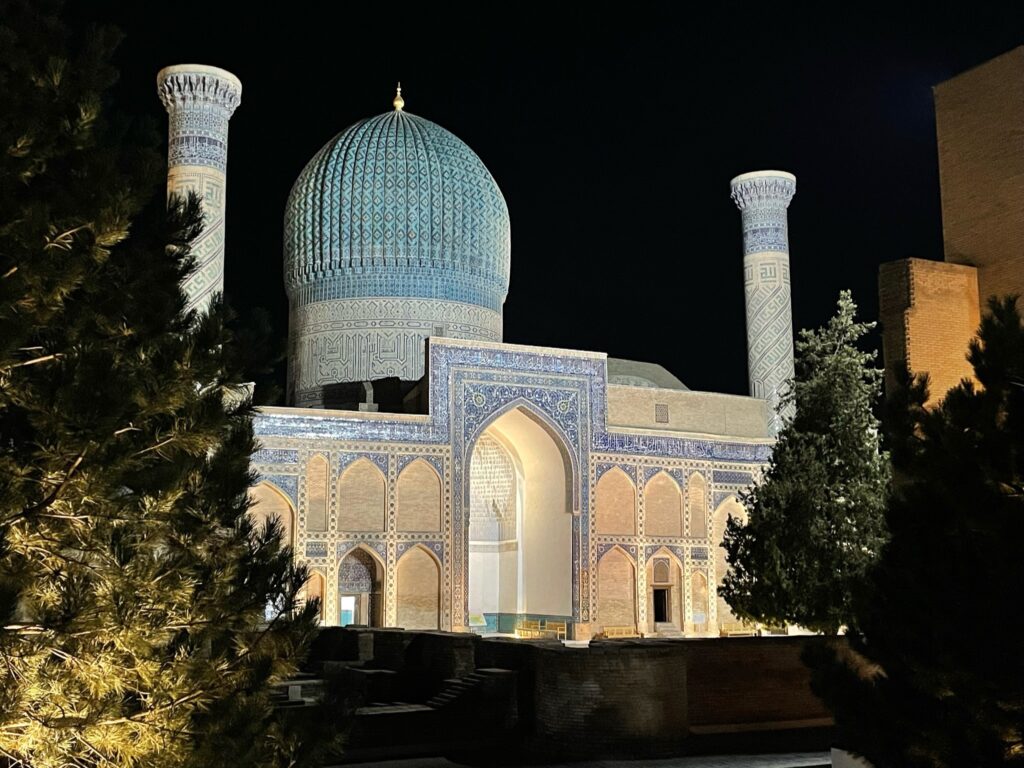
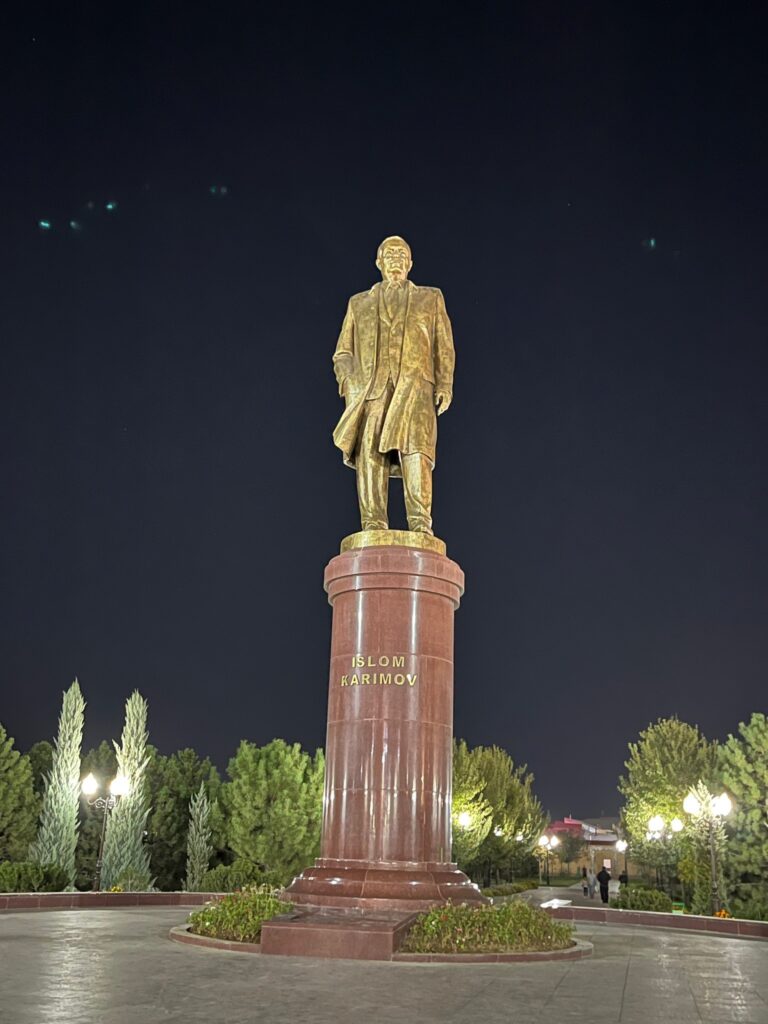
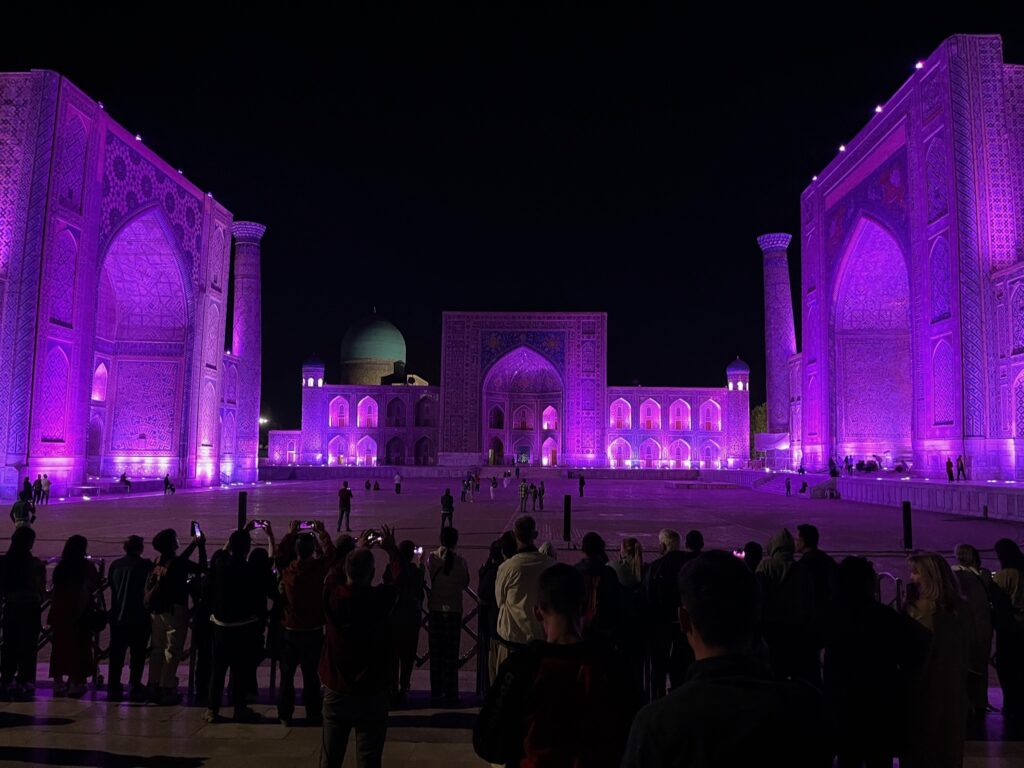
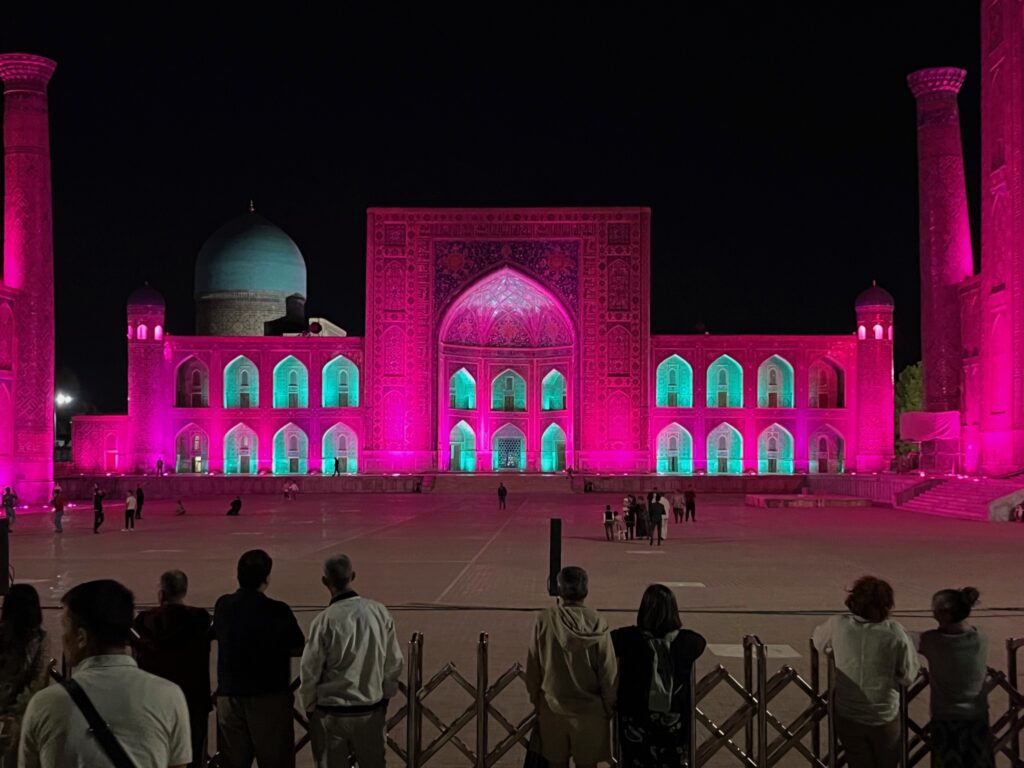
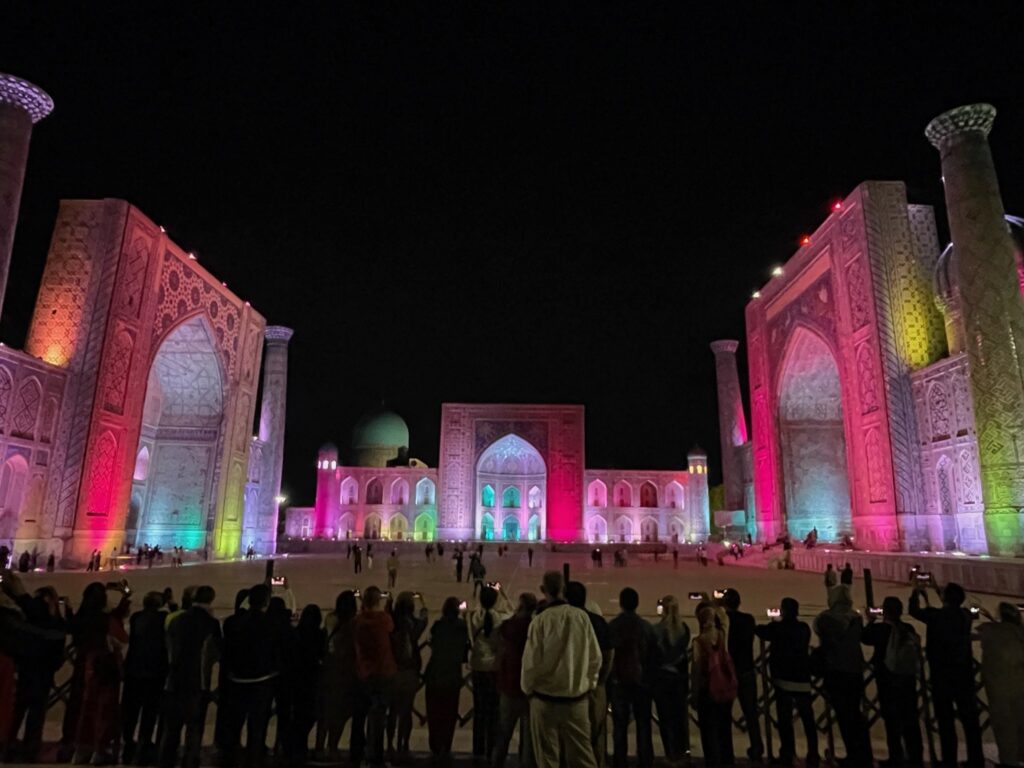
The next day, September 16, began with a daytime visit to each of the Gur-e-Amir Mausoleum and Registan Square.
About the Gur-e-Amir Mausoleum:
“The beautiful portal and trademark fluted azure dome of the Gur-e-Amir Mausoleum marks the final resting place of Timur (Tamerlane), along with two sons and two grandsons (including Ulugbek). It’s a surprisingly modest building, largely because Timur was never expecting to be buried here.
Timur had built a simple crypt for himself at Shakhrisabz, and had this one built in 1404 for his grandson and proposed heir, Mohammed Sultan, who had died the previous year. But the story goes that when Timur died unexpectedly of pneumonia in Kazakhstan (in the course of planning an expedition against the Chinese) in the winter of 1405, the passes back to Shakhrisabz were snowed in and he was interred here instead.
As with other Muslim mausoleums, the stones are just markers; the actual crypts are in a chamber beneath. In the centre is Timur’s stone, once a single block of dark-green jade. In 1740 the warlord Nadir Shah carried it off to Persia, where it was accidentally broken in two – from which time Nadir Shah is said to have had a run of very bad luck, including the near death of his son. At the urging of his religious advisers he returned the stone to Samarkand and, of course, his son recovered.
The plain marble marker to the left of Timur’s is that of Ulugbek; to the right is that of Mir Said Baraka, one of Timur’s spiritual advisors. In front lies Mohammed Sultan. The stones behind Timur’s mark the graves of his sons Shah Rukh (the father of Ulugbek) and Miran Shah. Behind these lies Sheikh Seyid Umar, the most revered of Timur’s teachers, said to be a descendant of the Prophet Mohammed. Timur ordered Gur-e-Amir built around Umar’s tomb.
The Soviet anthropologist Mikhail Gerasimov opened the crypts in 1941 and, among other things, confirmed that Timur was tall (1.7m) and lame in the right leg and right arm (from injuries suffered when he was 25) – and that Ulugbek died from being beheaded. According to every tour guide’s favourite anecdote, he found on Timur’s grave an inscription to the effect that ‘whoever opens this will be defeated by an enemy more fearsome than I’. The next day, 22 June, Hitler attacked the Soviet Union.”
– Lioy, Stephen; Kaminski, Anna; Mayhew, Bradley; Walker, Jenny. Lonely Planet Central Asia (Travel Guide) (pp. 605-606). Lonely Planet. Kindle Edition.
The Registan, “Sandy Place” in Tajik, was medieval Samarkand’s commercial center and was likely a wall-to-wall bazaar. The three medressas bordering the square are among the oldest preserved in Central Asia, any older having been destroyed by Chinggis (Genghis) Khan. The Uleg Bek Medressa on the western side is original, having been completed in 1420. Uleg Bek is said to have taught mathematics here. The stars on the portal reflect his love of astronomy. At the rear is a large mosque with a beautiful blue painted interior. The other two medressas are rough imitations by the Shaybanid Emir Yalangtush. The Ser Dor (Lion) Medressa on the eastern side was finished in 1636 and is decorated with roaring felines that look like tigers, but are meant to be lions. The lions, the deer they are chasing, and the Mongolian-faced, Zoroastrian-inspired suns rising from their backs are all unusual, flouting Islamic prohibitions against the depiction of live animals. In between is the Tilla-Kari (Gold-covered) Medressa, completed in 1660, with a pleasant, garden-like courtyard. The related mosque is intricately decorated with blue and gold to symbolize Samarkand’s wealth. The mosque’s ceiling is flat but its tapered design makes it look domed from the inside.
For lunch we ate at an outside cafe. The establishment was crowded, as seems to always be the case, but we quickly found a table in the shade of a tent. I ordered Montu, a boiled, meat filled wonton-type skin, while my wife ordered stuffed peppers in a broth. After lunch we visited the following sites:
- Bibi-Khanym Mosque. Once one of the Islamic world’s mosques, it pushed contemporary construction techniques to the limit, so much so that the dome started crumbling even before construction had finished. Legend says that Bibi-Khanym, Timur’s Chinese wife, ordered the mosque built as a surprise while he was away. The architect fell in love with her and refused to finish the project unless he could give her a kiss. The kiss left a mark and Timur, seeing it, executed the architect and decreed that women should, from that point forward, wear veils so as not to tempt other men. The interior courtyard contains an enormous marble Qu’ran stand, as well as two smaller mosques.
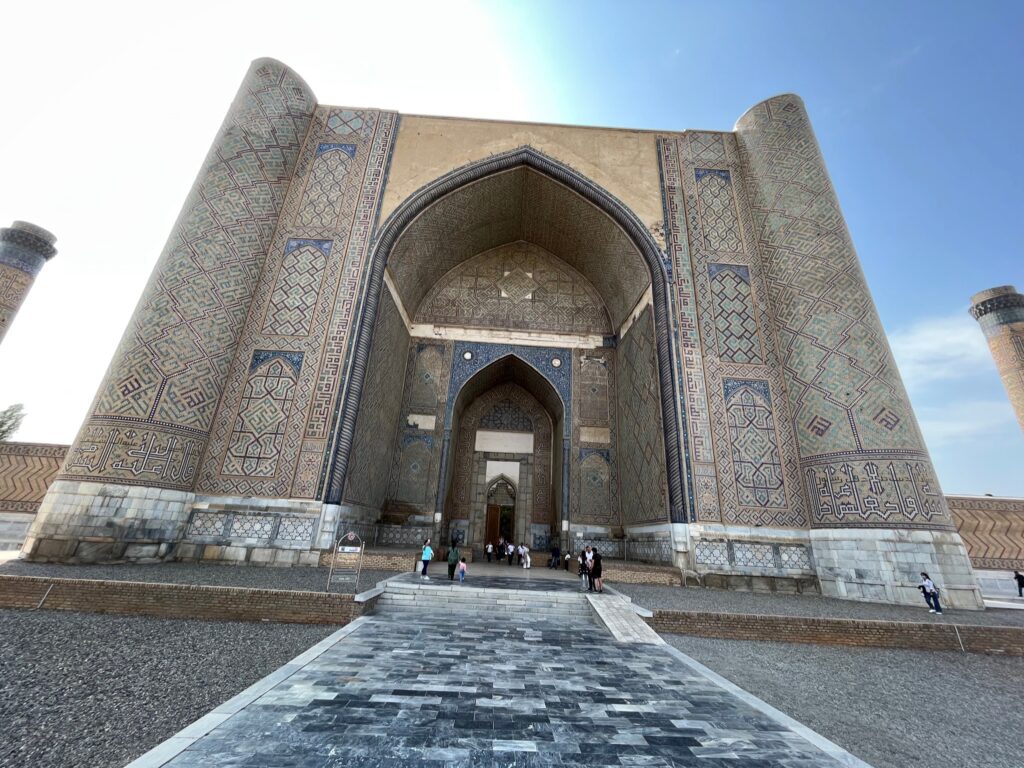
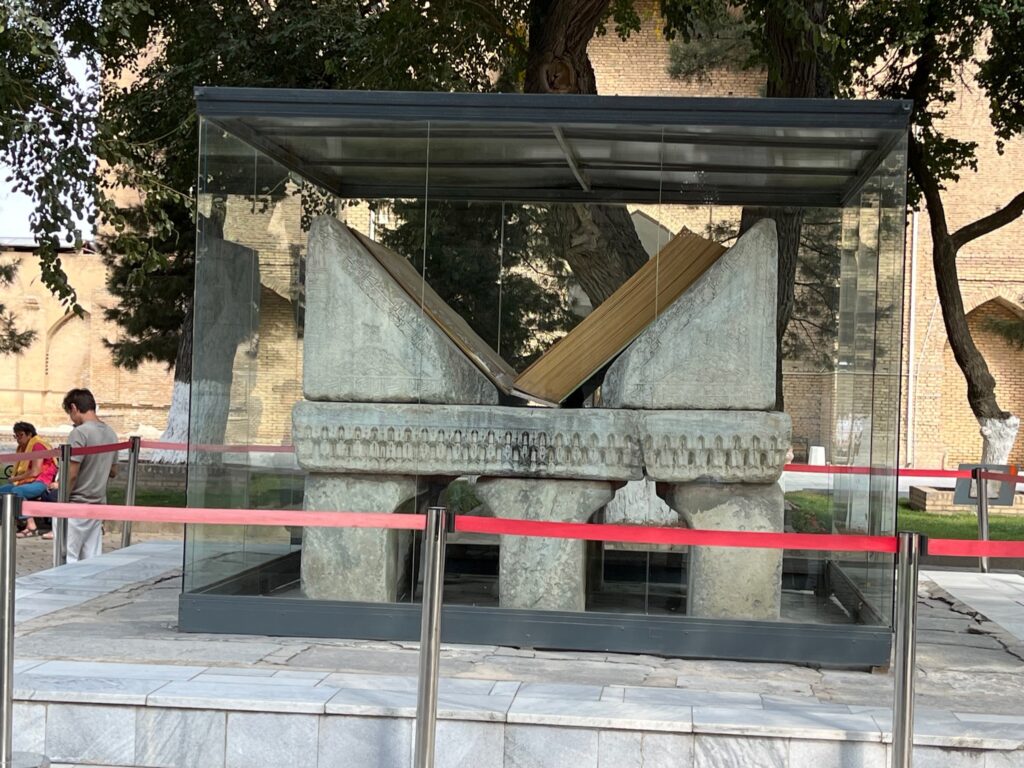
- Islam Karimov mausoleum. Samarkand is known for its medieval mosques and mausoleums, but there is also a rather recent edition – the Mausoleum of the First President of Uzbekistan, Islam Karimov. There are multiple quotes from the Qu’ran inscribed all around the mausoleum and the entrances. The complex was constructed after Karimov died from a stroke in 2016 during his 25th year as President, on his fourth seven-year term. Prior to presidency, he was the leader of the communist party in the Uzbek SSR. Besides the mausoleum, Samarkand also has a massive statue of him on the city’s center, just outside the UNESCO’s Registan (see photo above).
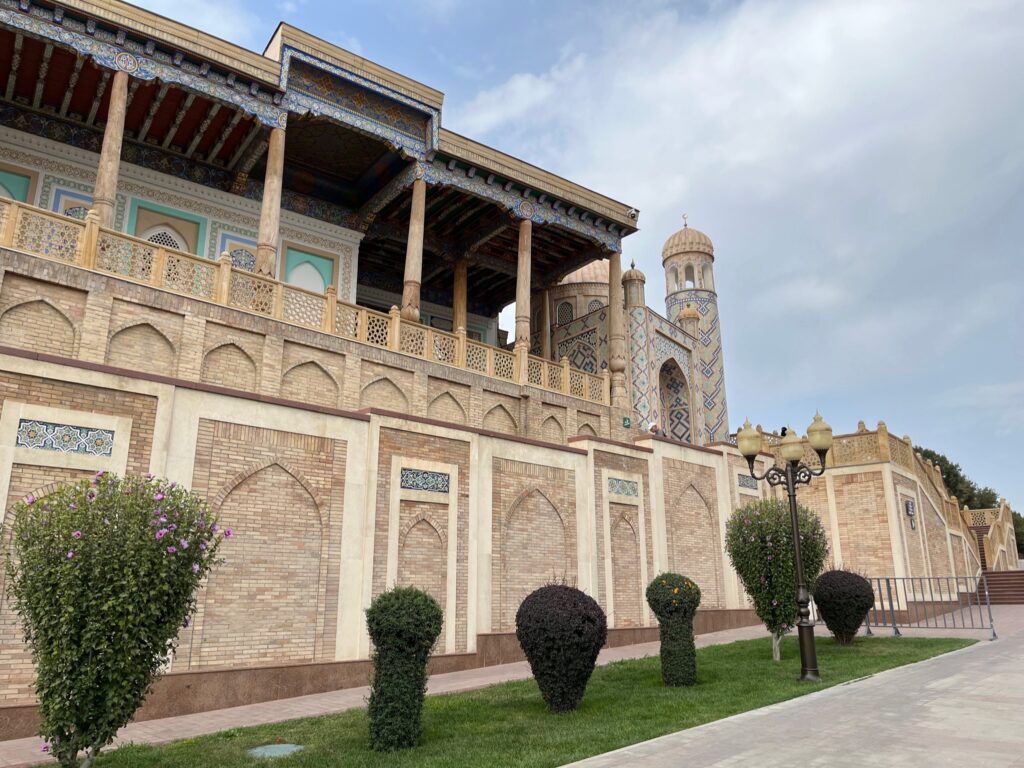
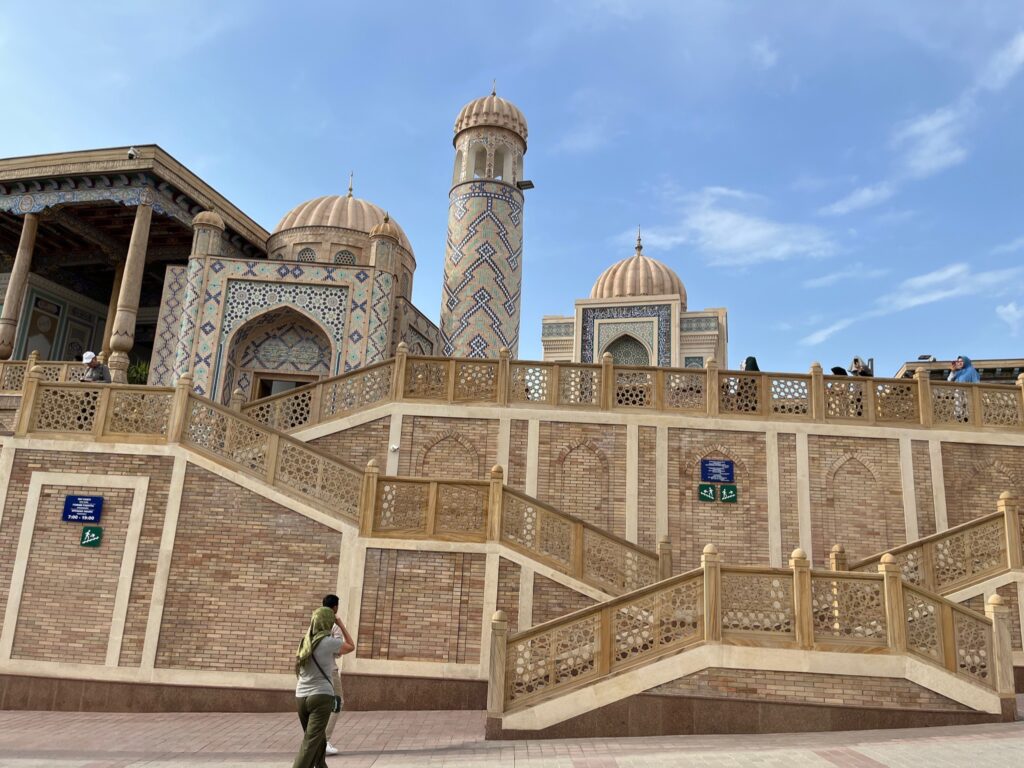
- Shahizinda Islamic Tomb. This site provides an avenue of mausoleums, containing some of the richest tile work in the Muslim world, some dating to the 14th and 15th centuries.. The name, which means “Tomb of the Living King,” refers to its original, innermost an holiest shrine, a complex of cool quiet rooms around what is probably the grave of Qusam ibn-Abbas, who is said to have brought Islam to the area in the 7th century. One of the most beautiful tombs is the Shodi Mulk Oko Mausoleum (1372), the resting place of a sister and niece of Timur. The exquisite majolica and terracotta work here was of such exceptional quality that it merited almost no restoration.
- Tomb of the Hebrew Prophet Daniel. This long, low structure is topped with five domes and contains an 18 meter long sarcophagus, it’s length due to the legend that Daniel’s body grows by one-half inch per year. As a result, the sarcophagus has been enlarged over the centuries. Daniel’s remains, which date from at least the 5th century BCE, were brought here by Timur from Susa, Iran, where another alleged tomb of Daniel can also be found.
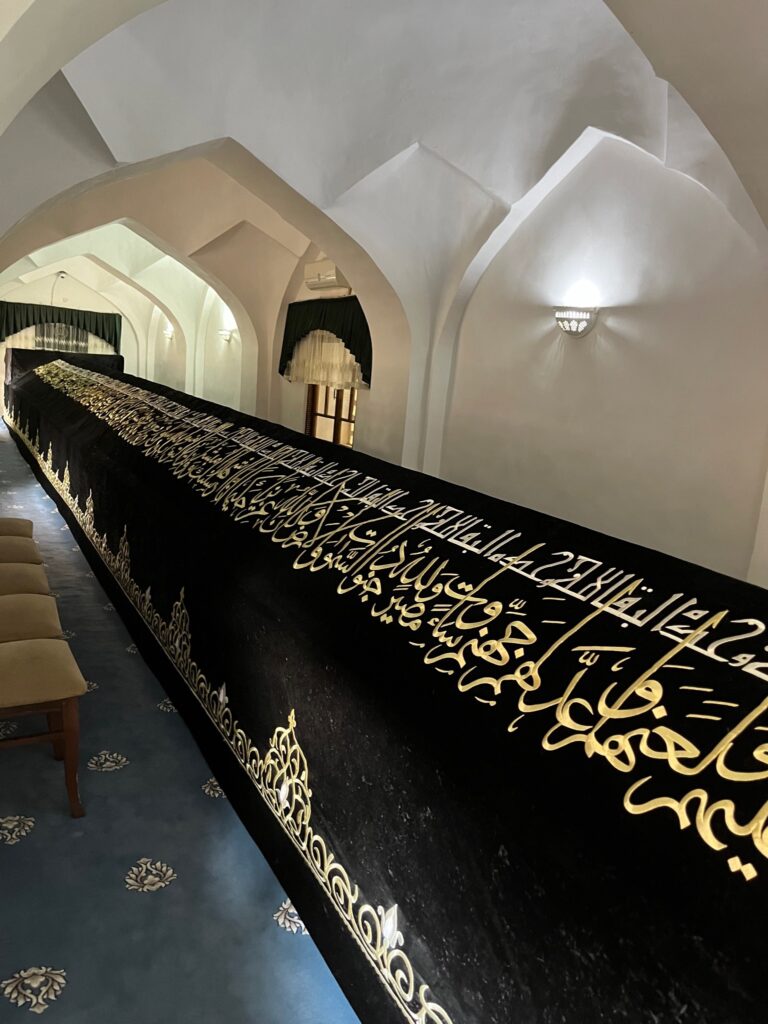
For dinner we ate, with Bek and Temur, at Karimbek Restaurant. For this meal we had so much food, including water, tea, a large basket of bread, two salads/appetizers, a bowl of soup, and three main courses. All for $22. The food and service were good, as was the atmosphere.
We then drove to the train station, where we waited about an hour to board our 9 p.m., 1-1/2 hour train ride to Bukhara. We arrived at our hotel, Sasha and Son, at about 11 p.m., cleaned up and went to bed. The Sasha and Son hotel is a small, apparently family run, hotel with a lot of charm Our room was very large, and uniquely decorated. It was one of my favorite places to stay in terms of being quaint and unlike any other option.
Bukhara, Uzbekistan
Our day today, September 17, began with a light breakfast, after which we began our exploring with a stop at the Samanid Mausoleum, the oldest Muslim monument and one of its most architecturally interesting. The structure was built in 905 for Ismail Samani, the founder of the Samanid dynasty, his father, and his grandson. It’s intricate terracotta brickwork disguises walls almost six feet thick, helping it largely survive restoration for 11 centuries.
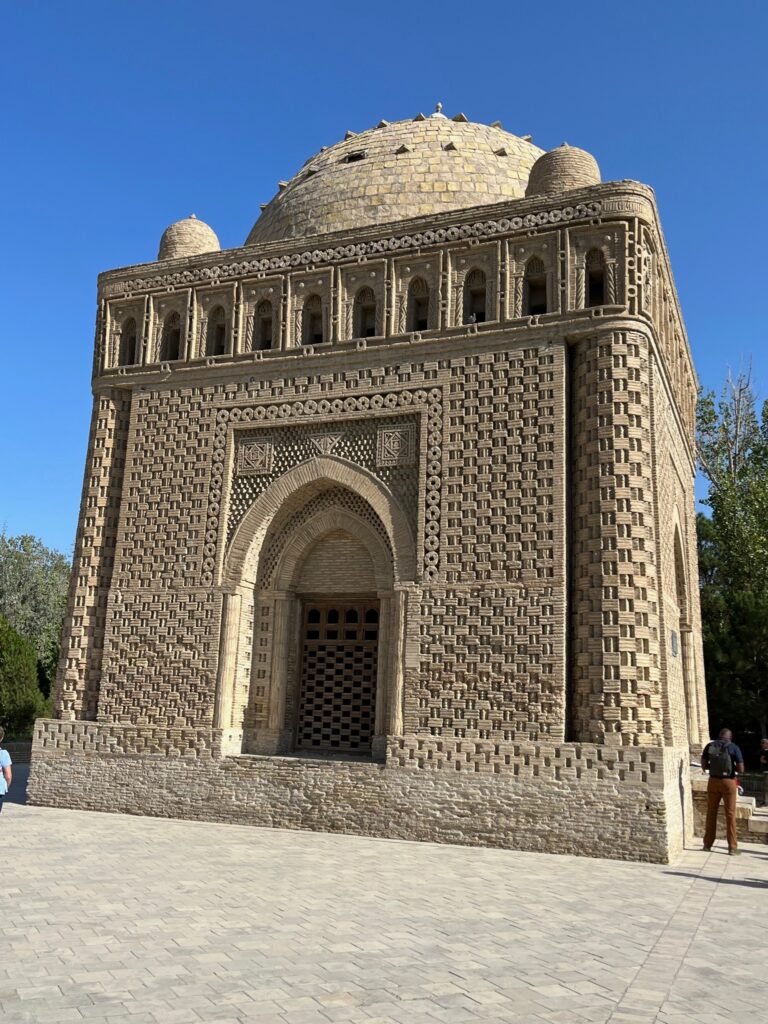
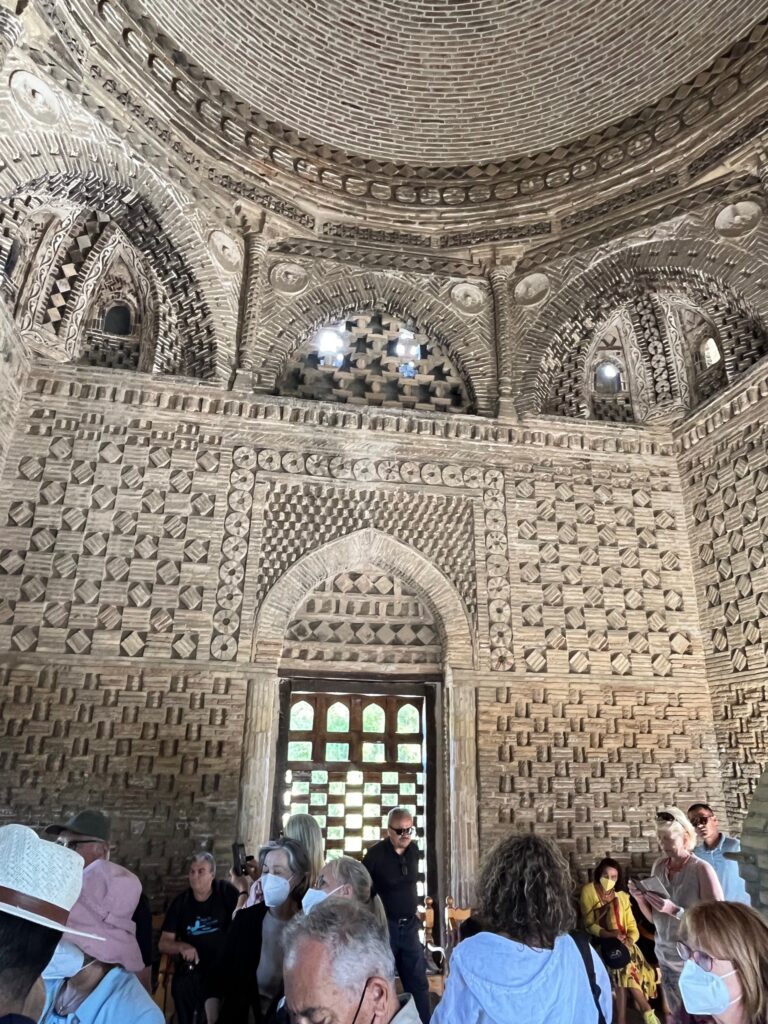
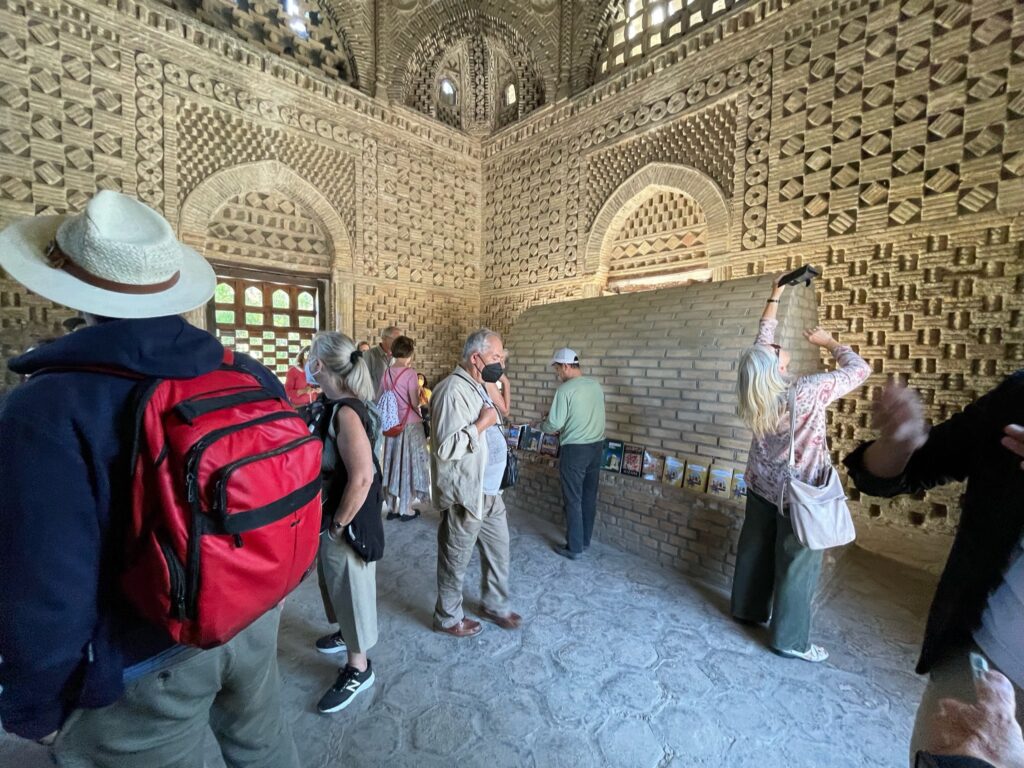
On our way from the mosque to the local bazaar, we walked past a remaining section of the wall that surrounded Bukhara in ancient times.
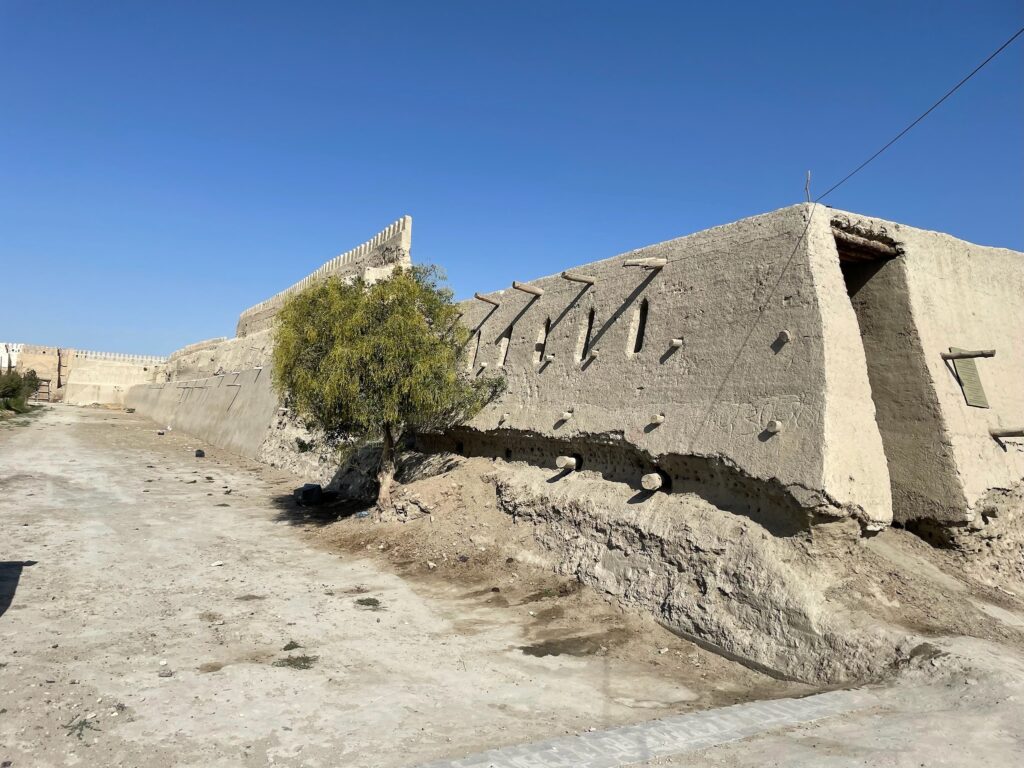
We then were off to tour the following sites:
- Chashma Mausoleum. The “Spring of Job” mausoleum dates from the 12th century. Legend has it that the prophet Job struck his staff on the ground here, causing a spring to appear whose water then cured him of his many boils and ulcers. Inside is a museum about water management in Bukhara (interesting given the competing interests for, and limited supply of, water in the region) and a tap where pilgrims drink from the spring. Just recall what happened to the Aral Sea and you’ll understand why this museum is interesting.
- Ark of Bukhara. The Ark is Bukhara’s oldest structure, occupied from the 5th century up until 1920 when it was bombed by the Red Army. It served for years as the residence of the emirs of Bukhara. While it’s about 80% ruins, some royal quarters remain serving as interesting museums. The oldest surviving part of the Ark is the vast Reception and Coronation Court. The last coronation to take place was Alim Khan’s in 1910. Other areas of note include open-air royal stables and a room for drums and musical instruments used during public spectacles in the square below.
Today we ate lunch at the house of the parents of our tour operator, Zulya Rajabova.
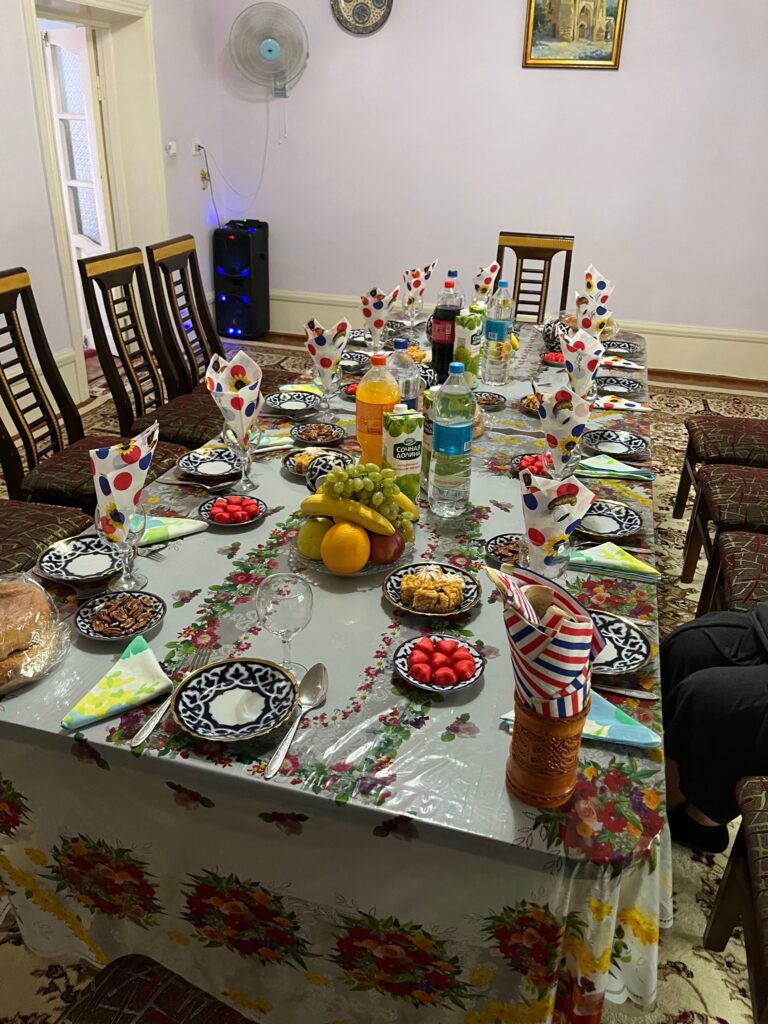
Zulya’s parents love to meet foreign travelers and are frequent hosts of her clients. In addition to plentiful, fabulous food prepared served by these wonderful hosts and other of Zulya’s relatives, we enjoyed dancing entertainment provided by one of Zulya’s nieces (age 7) and two of her nephews (ages 11 and 14). Following an exchange of gifts we returned to our vehicle to visit the Kalon Minaret and Mosque.
About the Kolan Minaret:
When it was built in 1127, the Kalon Minaret was probably the tallest building in Central Asia – kalon means ‘great’ in Tajik. It’s an incredible piece of work, 47 meters tall with 10 meter-deep foundations (including reeds stacked underneath in an early form of earthquake-proofing), and has stood for almost nine centuries. Chinggis (Genghis) Khan was so dumbfounded by it that he ordered it spared while his troops ransacked the rest of the city. The minaret is an architectural masterpiece. Its 14 ornamental bands, all different, include the first use of the glazed blue tiles that were to saturate Central Asia under the Timurids. Up and down the southern and eastern sides are faintly lighter patches, marking the restoration of damage caused by Soviet general Frunze’s artillery in 1920. At the foot of the minaret, on the site of an earlier mosque destroyed by Chinggis Khan, is the 16th-century congregational Kalon Mosque.
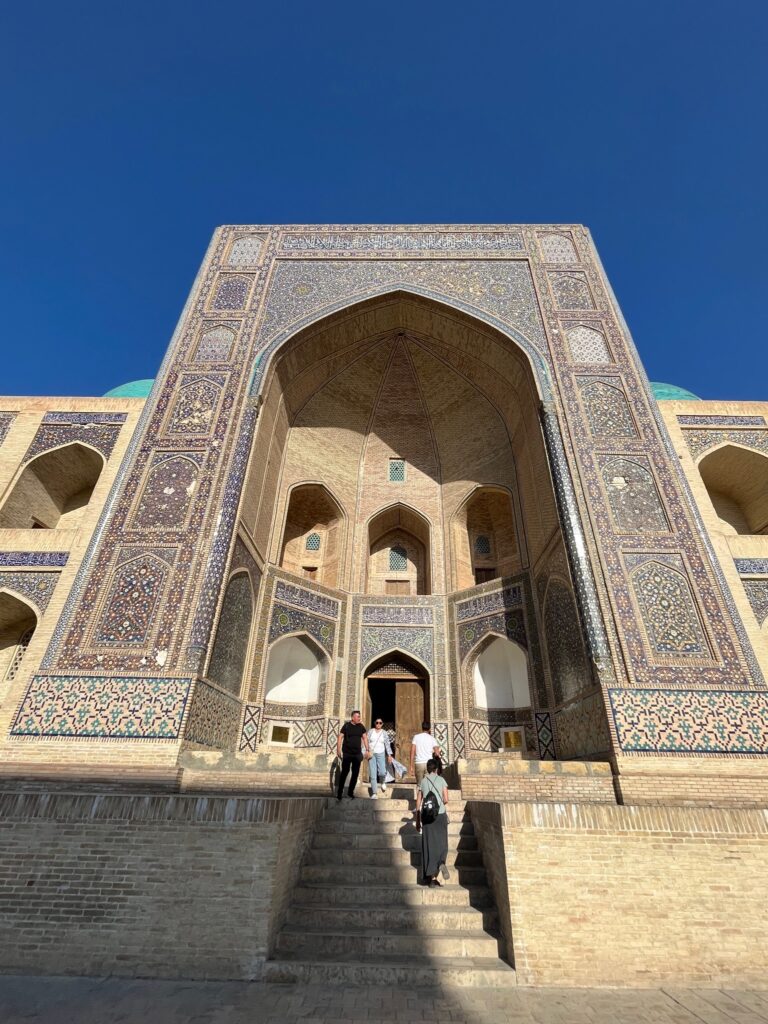
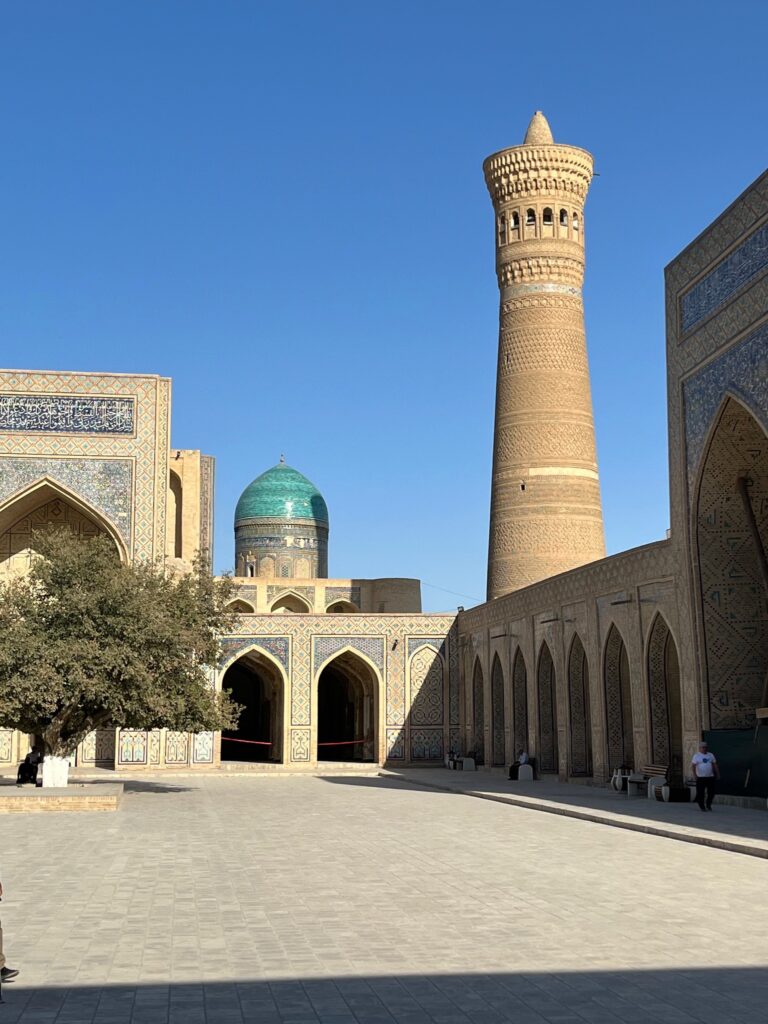
We then returned to our hotel to rest for a few minutes before walking to a nearby traditional folk dancing and fashion show at Nodir Devonbegi Madrasah.
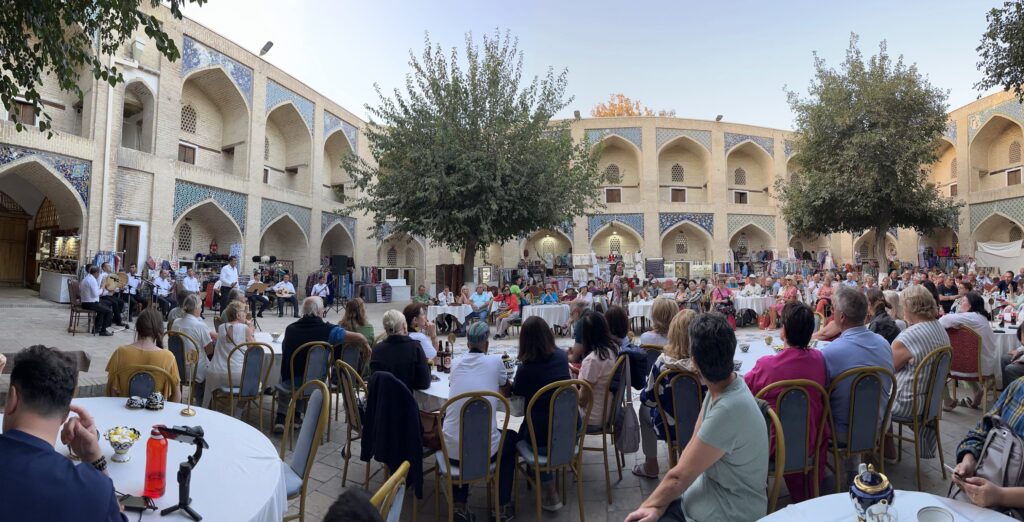
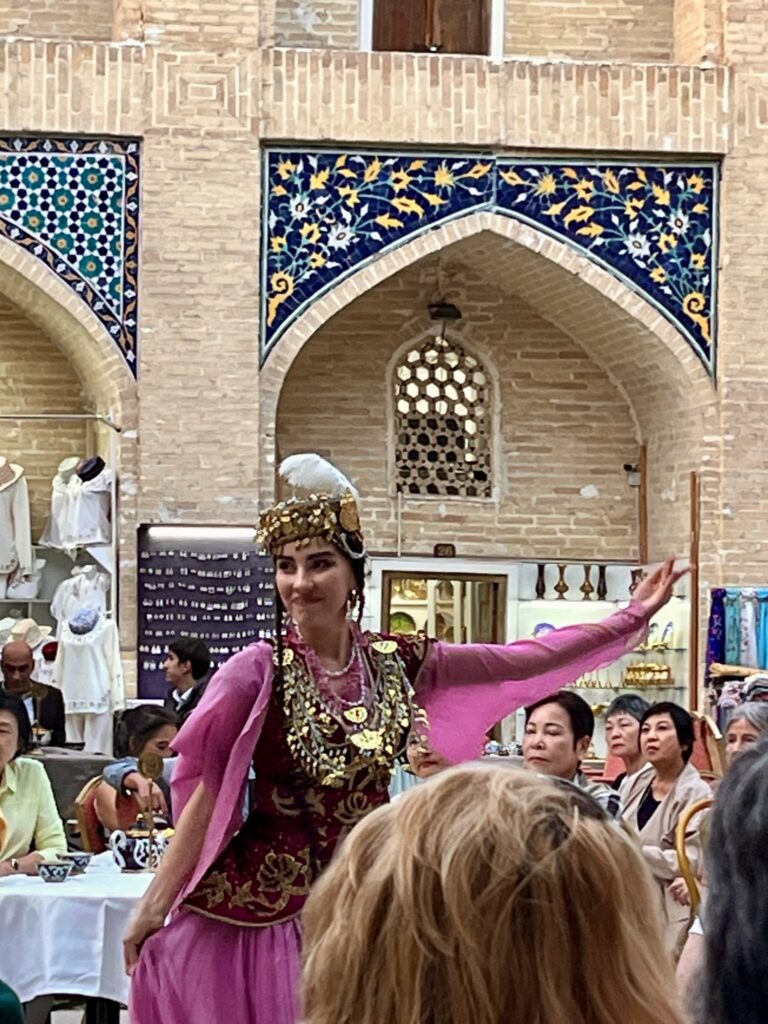
We then enjoyed dinner at Bella Italia where our meals consisted of spinach ravioli, Caesar Salad, and a 4-cheese pizza. There was bread too. So much bread!
Our September 18 began with a visit to Sitorai Moh Khossa, the summer palace. It is located 3.5 miles to the north of Bukhara and belonged to the last governing emir of Bukhara Said Alimkhan (1911-1920). The name of the palace means “stars meet the moon”. The three-building compound incorporates elements of both Russian and traditional Bukharan architecture. Highlights included peacocks, beautiful tile fireplaces, a turtle in the “Swimming pool”.
We then began our 6.5 hour drive through the desert to Khiva. Highlights of our journey included:
- Endless miles of sand.
- A natural gas pipeline under construction.
- Wild horses.
- An abandoned Soviet checkpoint on the highway.
- Some of the worst highway road conditions I’ve ever seen due to ongoing construction begun by the Germans 10 years ago and taken over in recent years by the Chinese. According to our guide, while the pace of construction has improved, the quality has suffered.
- Several restaurants or gas stations that were dilapidated, closed, or both, which led to great difficulty in finding a working toilet, particularly a western style toilet. In our effort to find such a toilet, over a span of probably one and one-half hours we:
- stopped at a restaurant that was closed (although Bek and I did receive bites from several small, but potent, mosquitos); a gas station that was closed, but whose caretaker told us we could use the restrooms but, since they had no water, we’d have to use a nearby water jug to flush the toilets (by the way, they were disgustingly dirty so went unused by us); and a restaurant that was open but that had only eastern style toilets.
- encountered a long line of vehicles that had been waiting at a railroad crossing for over an hour in anticipation of a train they had been told was imminent (the train arrived approximately 20 minutes after we arrived; it consisted of the engine only. See the photo below. Also, praise for our driver, Zafar, who adeptly positioned us towards the front of the long line of cars and trucks that had stopped for the train so we could get ahead of the trucks which would have seriously slowed our progress to Khiva. Also, because the roads from the bridge westward were so badly potholed, drivers were often driving on the wrong side of the road looking for the smoothest path. It was like bumper cars at the state fair, but without the bumping.
- stopped at yet another store that had only eastern toilets.
- drove 10 minutes or so down some very bumpy, dusty dirt roads to find a hotel that appeared on Google maps but did not, in fact, exist (when we asked a local where we could find the hotel, she simply told us there was no such building).
- located a “camping hotel” that finally allowed us to use a western style toilet within the hotel.
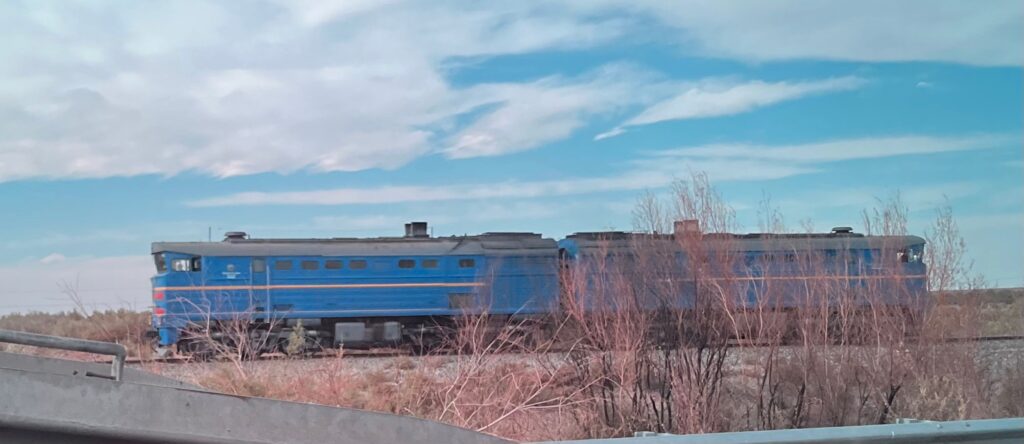
Khiva, Uzbekistan
We arrived at our hotel at approximately 6 p.m., filled the laundry sack with 20 items, and handed it to our receptionist. The laundry was done 2 hours later at a cost of approximately $13! The hotel is a beautiful complex. In this hotel we had a 2-room suite, which was not expected. The resort has a pool, a bar, restaurant, etc. The grounds were lovely with tiled walkways, lots of green space, and herbs and vegetables planted among the trees in the green space, presumably for the kitchen.
At 7 p.m. we walked into the old city of Khiva and ate at a restaurant called the “Terrassa Cafe and More.” The view from the resturant was spectacular! We each had the Dill Noodle dinner, a local dish. We then walked back to the hotel and, because my wife had been under the weather, she went promptly to bed. I stayed up to read about the sites in Khiva in preparation or the day ahead.
About Khiva, the museum under the sky, from TripAdvisor:
When you enter the 2,500-year-old city of Khiva you travel back in time to an earlier millenium – a land of caravanserais built to quench the thirst of travelling silk traders and madrassahs filled with young students studying the Koran. Khiva – the exotic and undiscovered masterpieces in the desert. Like an oasis in the sand, the city of Khiva is remarkably well kept – aquamarine tiles line the 800-year-old minarets and ancient stones pave the streets. Every corner you turn is another exotic angle. The Khan’s palace is a labyrinth of courtyards and hidden rooms and you’ll have the day to explore this enormous open-air museum.
This morning of September 19 we met Bek in the lobby at 10 a.m. and began our tour of Khiva. We began by walking along the outside of Itchan Kala. Our hotel is located just outside the south gate, so we walked around to the west gate so we could buy tickets for the various museums within the old city.
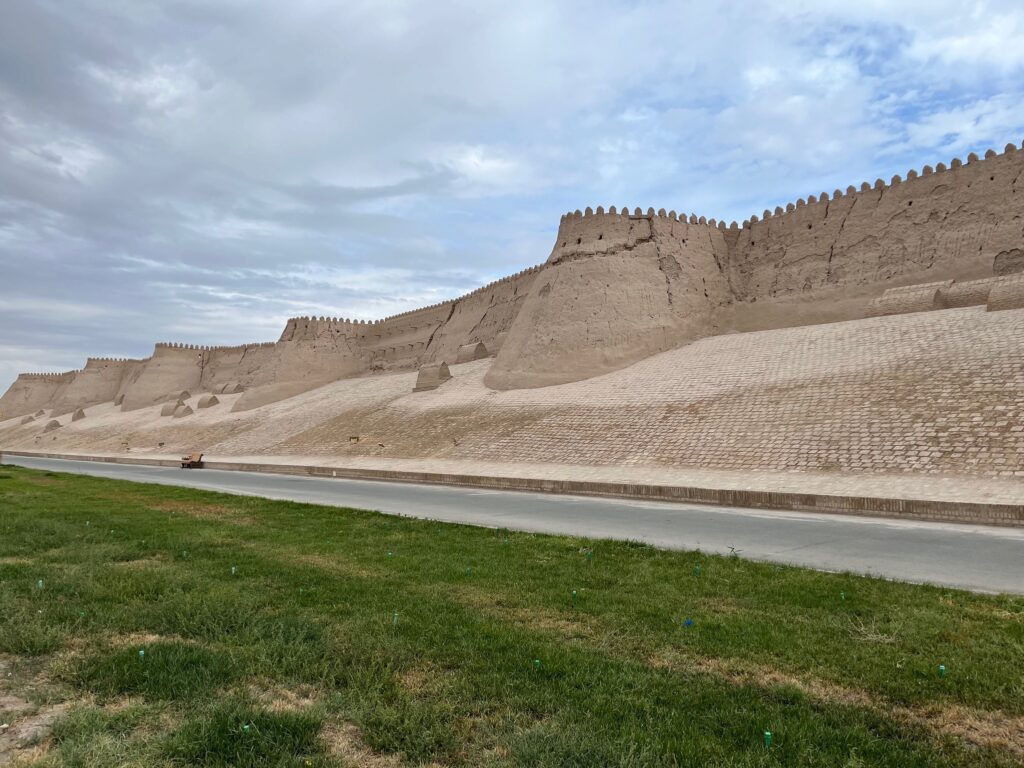
While in the city today we toured the following sites:
- Mohammed Amin Madrassa. This madrassa is currently occupied by, and run as, the Khiva Madrassah Hotel. The madrassah was built in 1851-1855 years and reconstructed in the year 2000. There are 40 rooms in the hotel, typically very small as they were the rooms used for teaching while the building functioned as a madrassah. It’s important to note that the rooms on the main floor are very dark as there are no windows and, hence, no natural light.
- Kalta Minor Minaret. This minaret was begun in 1851 by Mohammed Amin Khan who, according to legend, wanted to build a minaret so tall he could see all the way to Bukhara. Unfortunately, the khan died in 1855 leaving the minaret unfinished.
- Kunya Ark, an ancient fortress of Khiva, and one of the khan’s palaces in Itchan Kala. It was first built in the 12th century by Ok Shaykh Bobo, then expanded by the khans in the 17th century The khans’ harem, mint, stables, arsenal, barracks, mosque and jail were all here. The most interesting rooms in the palace include (1) the throne room, which included a raised, circular dais where the Royal Yurt would be constructed even though the khans were no longer nomadic, and (2) the watchtower, which provides a stellar view over the top of the city.
And now a bit of history for the area:
Muhammad Rahim Kahn II (1864 – 1910) was a philosopher and poet, popularly known under the pen name as Firuz. He became the first to introduce lithography to Central Asia in 1874. More than 20 madrases, mosques, and minarets were built in Khorezm under his leadership. In total, there were 126 madrases and 165 Korikhona (schools of Qu’ran readers). Most of the architectural monuments of the city were built during his reign.
- Juma Mosque, a 10th – 18th century mosque in Khiva, Uzbekistan. It is one of the principal monuments of Itchan Kala, the walled old city of Khiva, which is a World Heritage Site. It stands in the middle of Itchan Kala, on the road connecting the west gate (Ota darvoza) and the east gate (Polvon darvoza). The mosque was first documented in the 10th century, but it was rebuilt in 1788. It is a large one-story brick building with a flat roof, supported by 212 wooden columns in 17 rows. Its total size is 55 x 46 meters, and its minaret is 42 meters high
For dinner, we returned to Terrassa, the balcony from which we enjoyed a beautiful sunset.

We also had the opportunity to watch local residents bake bread using the community bread oven located below on the edge of the square adjacent to the restaurant. The process includes the placement of a circle of dough on a slightly mounded piece of leather (or cloth of some sort) with a glove attached to the back of it. The dough is then sprinkled with water, lowered into the oven, and slapped to the side of the oven and freed from the gloved, domed transfer vehicle. The bread bakes while clinging to the side of the oven until the person monitoring it decides it’s done. It is then pried off the side of the oven to make room for the next disk. This night the people baking must have been a neighborhood group or baking for a small business as they baked multiple batches of bread over the span of several hours. We then walked back to the hotel for the night.
On September 20, we began our day with a small breakfast at the hotel. Met Bek at 9 a.m. to tour a museum describing the first school in Khiva, built in 1940, that educated both boys and girls. We then visited the following sites:
- Said Islam Khodja Madrassa. The Islam Khodja complex stands to the southeast of the main east-west street in Khiva’s Ichan Kala (old city) and includes a madrasa and minaret. Although it was built fairly recently it was constructed according to traditional principles in exacting detail, and its level of craftsmanship is among the highest in the city. The site is named after Islam Khodja, the grand vizier (and also first cousin) of Muhammad Rahmi Bahadur II, the ruler of the Khanate of Khiva from 1864-1910. Islam Khodja was a modernizer who introduced new amenities to the city including a hospital, telegraph office, and non-parochial schools. Although he lived long enough to see the complex completed, he was stabbed to death in 1913.
- Pahlavon Mahmud Tomb and adjacent cemetary. Pahlavan Mahmud was an Iranian poet and wrestler who lived from 1247-1326. Also known as Puria-ye-Wali, Mahmud was lionized as the paragon of Iranian chivalry (javanmardi) and esteemed for his literary and athletic accomplishments. Although he was not strictly a religious figure, his tomb became a popular place of pilgrimage in both Khoy (in Iran) and Khiva (in Uzbekistan), both of which claimed Mahmud as their own.
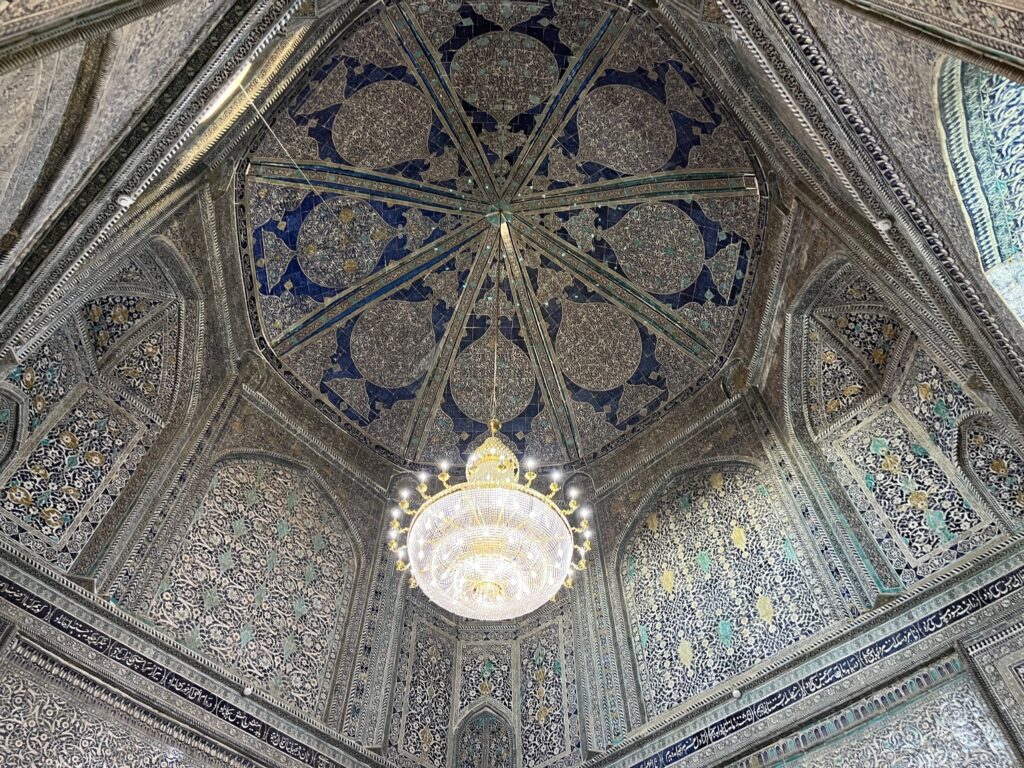
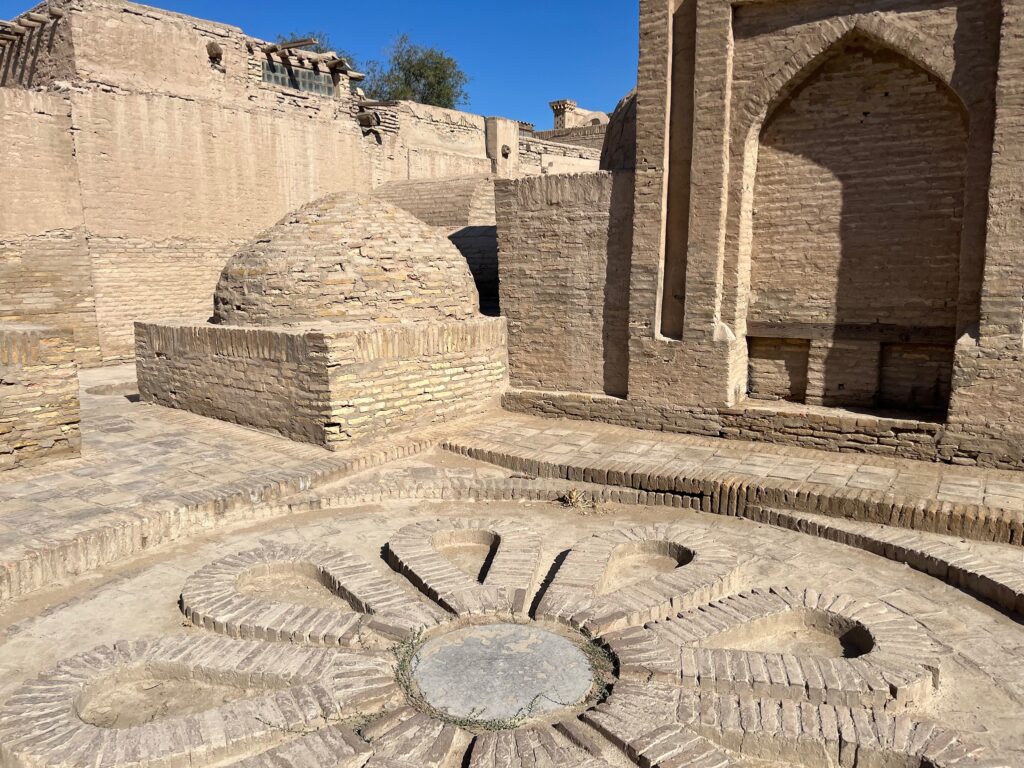
- Madrasah Shergazi Khan. It was built in the XVIII century, located in the centre of Ichan Kala. According to legend, madrasah was built by slaves for one year, captured by Shergazi-Khan during the attack of Khorasan and Meshhed. After the construction, Shergazi-Khan promised to free captives, but his promise wasn’t kept. As a result, infuriated prisoners killed Shergazi-khan in his own unfinished madrasah.
- Nurullabay Palace. The palace is located in Dishan-Kale – the outer city of Khiva and is famous for its magnificence, beauty and charm. The palace differs from other palaces built by other khans in different periods. During the reign of Muhammad Rahim Khan I, the old city (now Itchan Kala) was already crowded due to the large number of houses built there and it was impossible to build large palaces with gardens there. So, Muhammad Rahim Khan I ordered to build for his sons Mahmud-tyurya and Muhammad-tyurya country palaces “howli” (made of rammed clay blocks) to the west of the city (Itchan-Kala) walls.
- Besh Khovli Complex. Tash-Hovli — a palace complex in Khiva, the main palace of the Khivan khans. The palace was located in east part of Khiva built by Allakuli-hanom. Construction of the palace took about 8 years, from 1830 to 1838. The first built the residential quarter of a harem, then mekhmonkhon — the place for formal receptions, and the last — an arzkhona, the courtroom.
- Ayaz Kala in desert north of Urgench. The Khorezm Fortresses, or Elliq Qala in Uzbek, are a collection of more than 50 desert fortresses in Karakalpakstan and the Khorezm Region of Uzbekistan. They were built on the edge of the Kizilkum Desert at different points between the fourth century BCE and the seventh century CE as a means of protection from nomad raids. Ayaz Kala is an archeological site with three fortresses, the earliest of which dates from the 4th century BCE. The footprint of the best preserved fortress is huge, measuring 182×152 meters. Some of the remaining sections of wall are 10 meters high, with regularly spaced towers. There is a massive gateway, battlements with crenellated tops, ramparts, and the remains of vaulted ceilings.
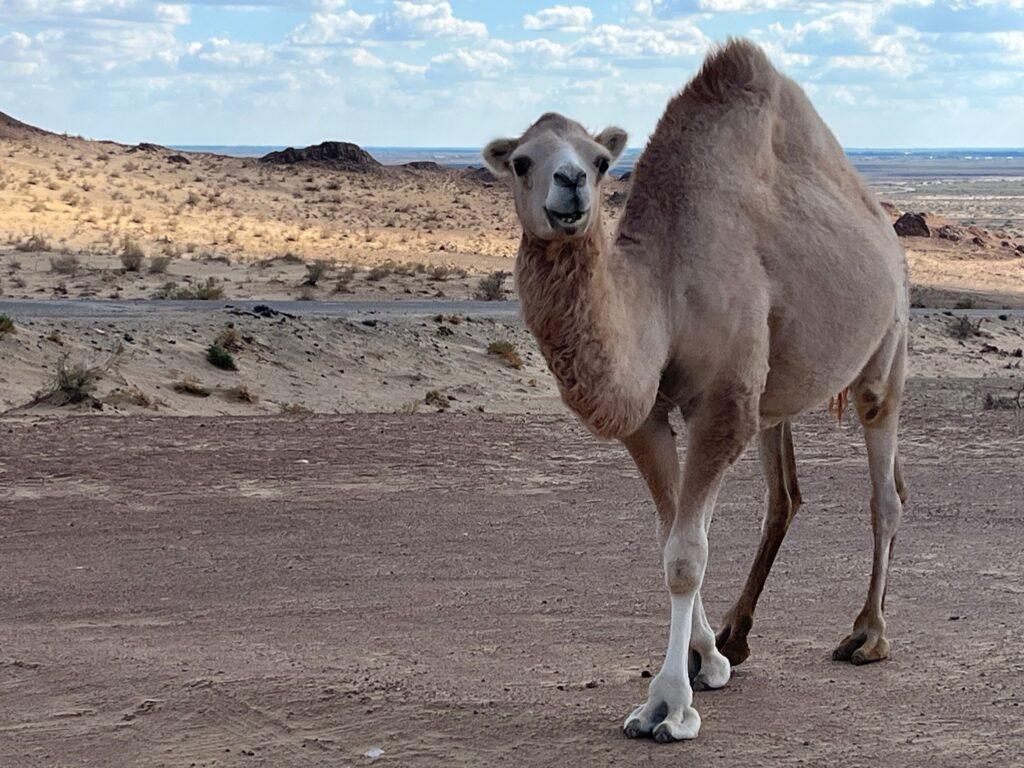
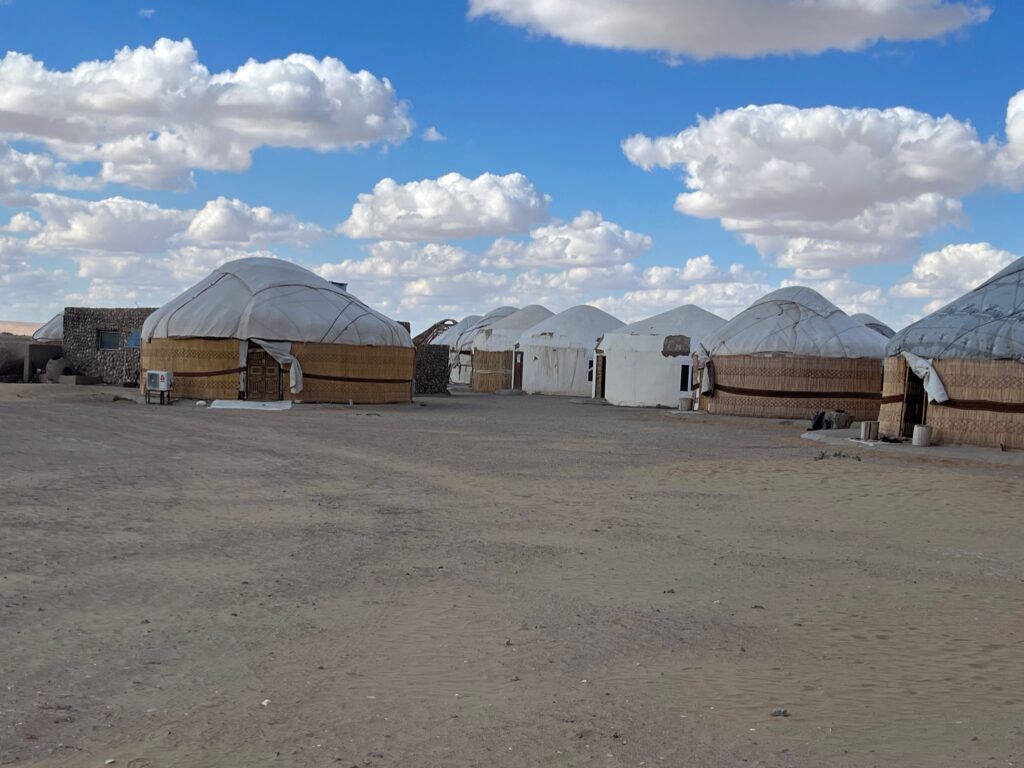
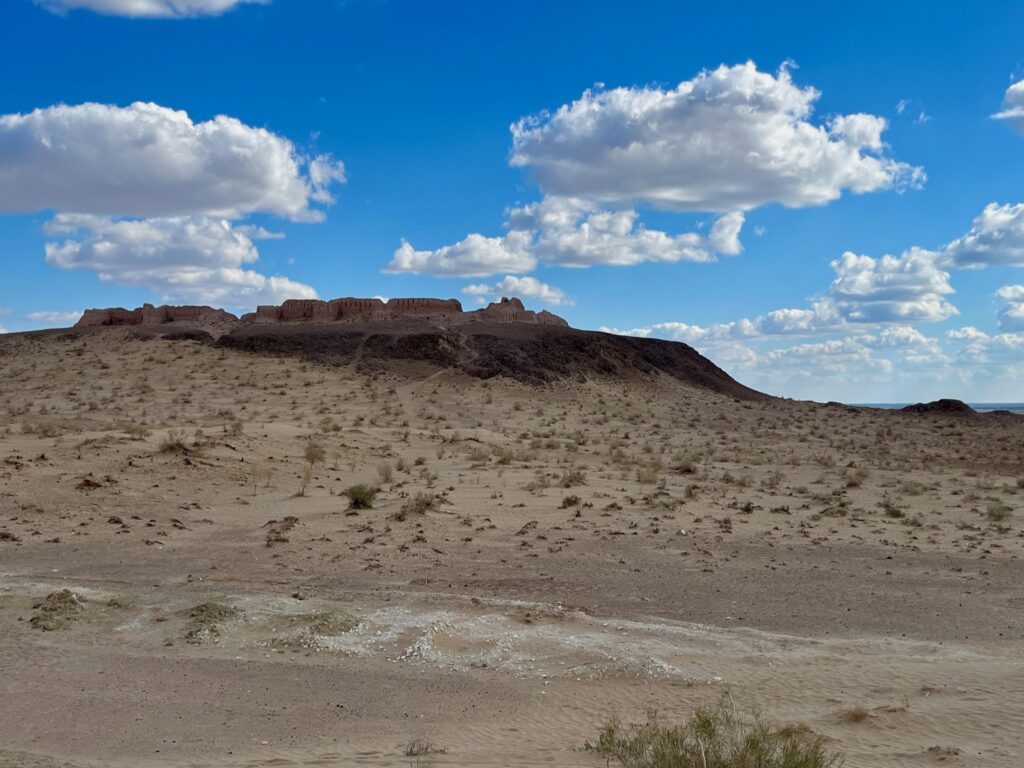
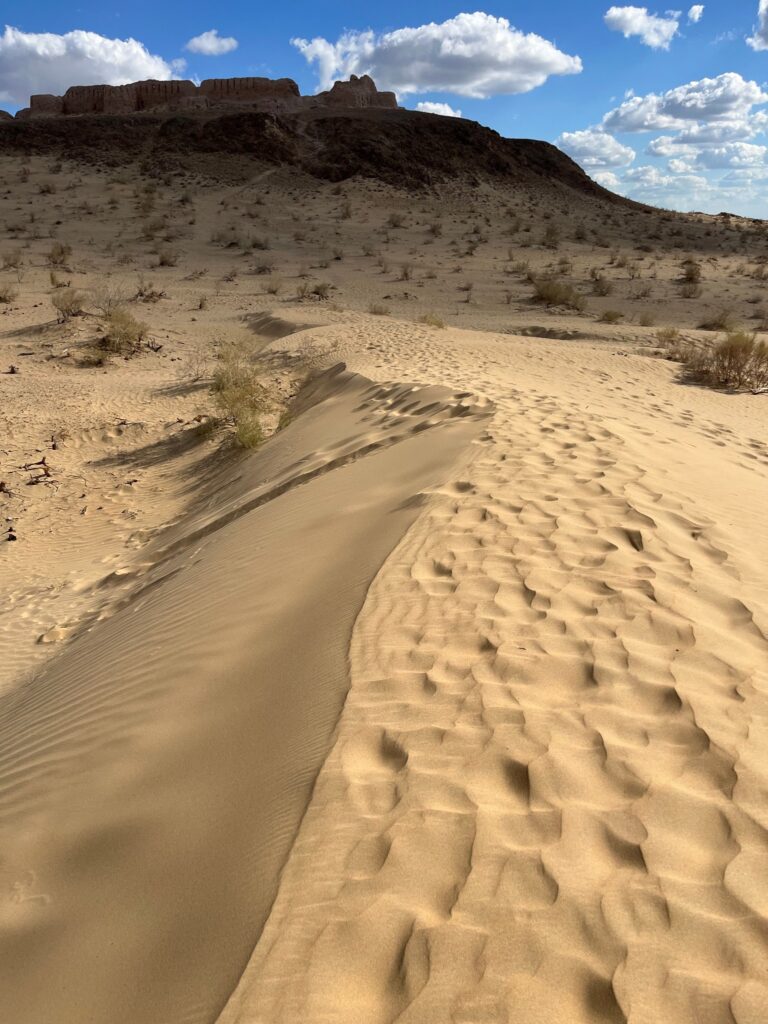
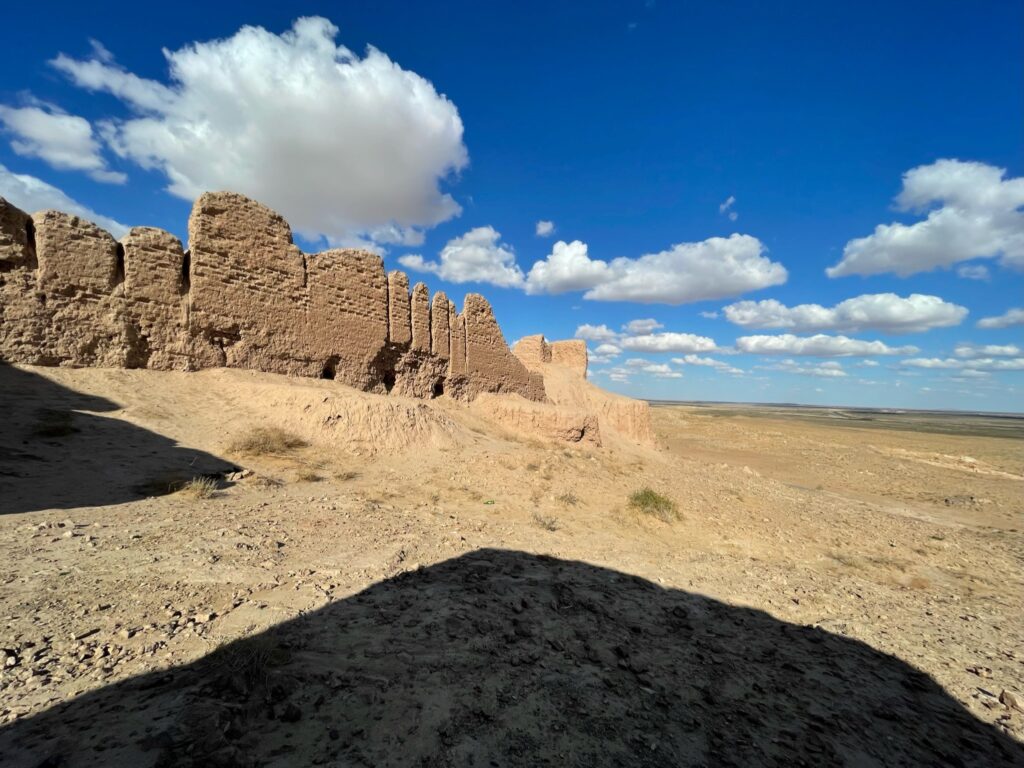
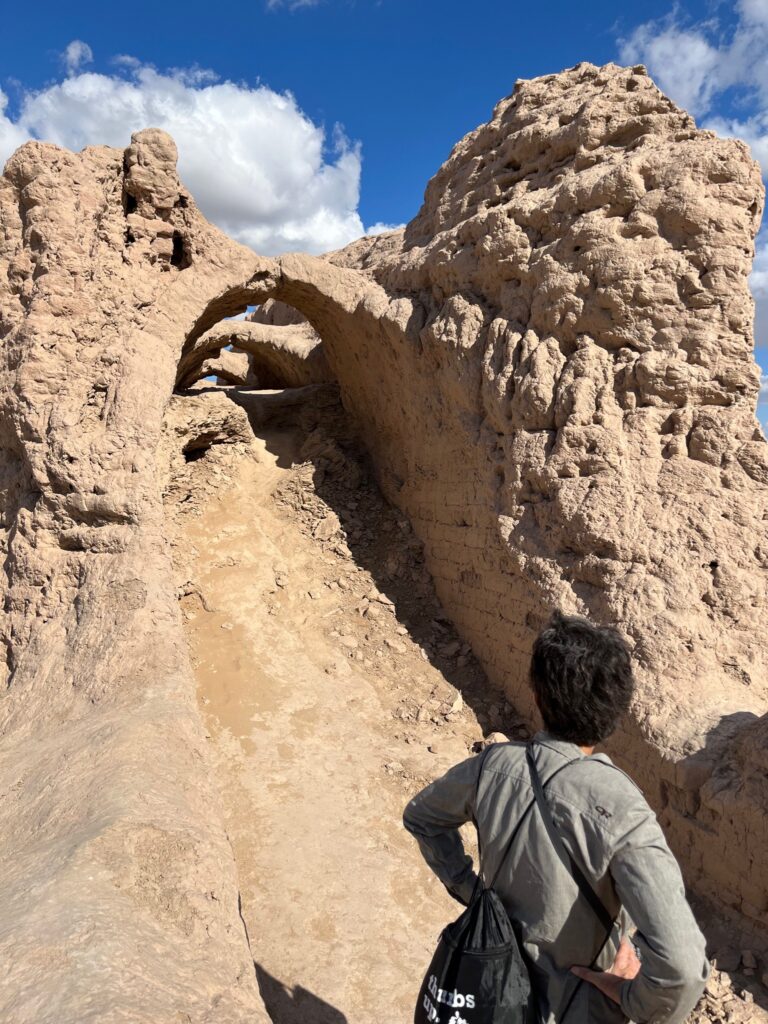
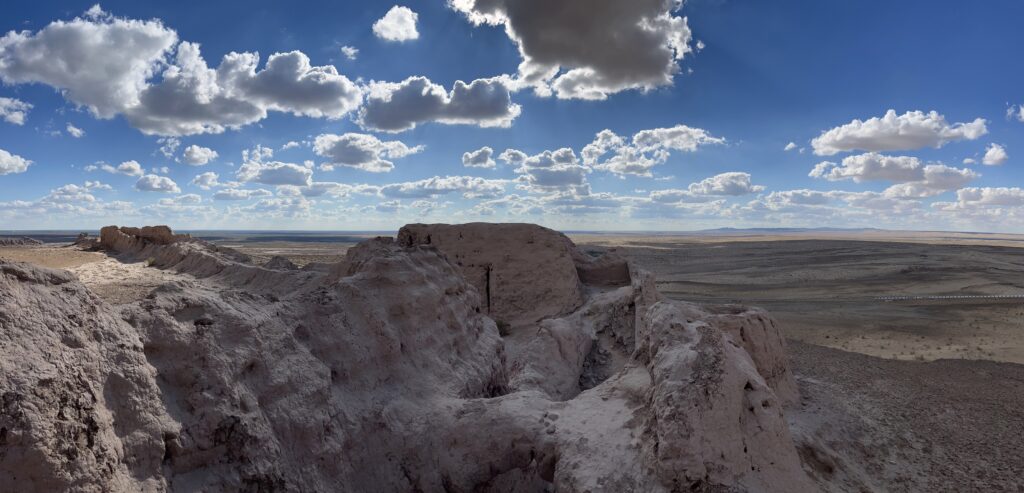
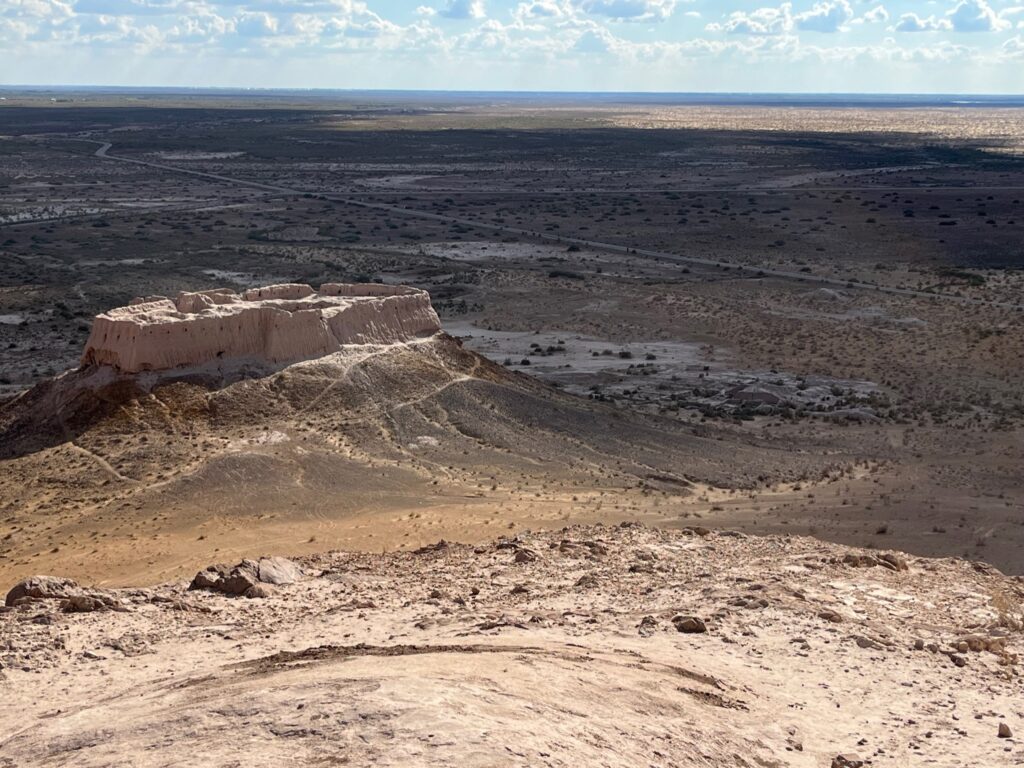
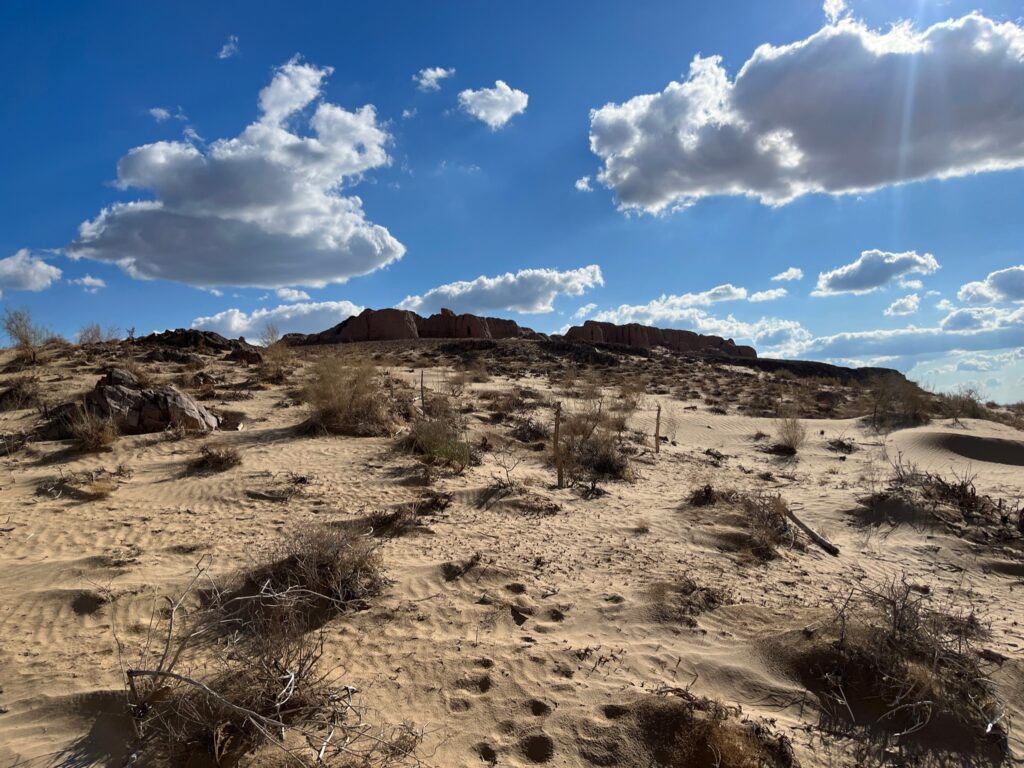
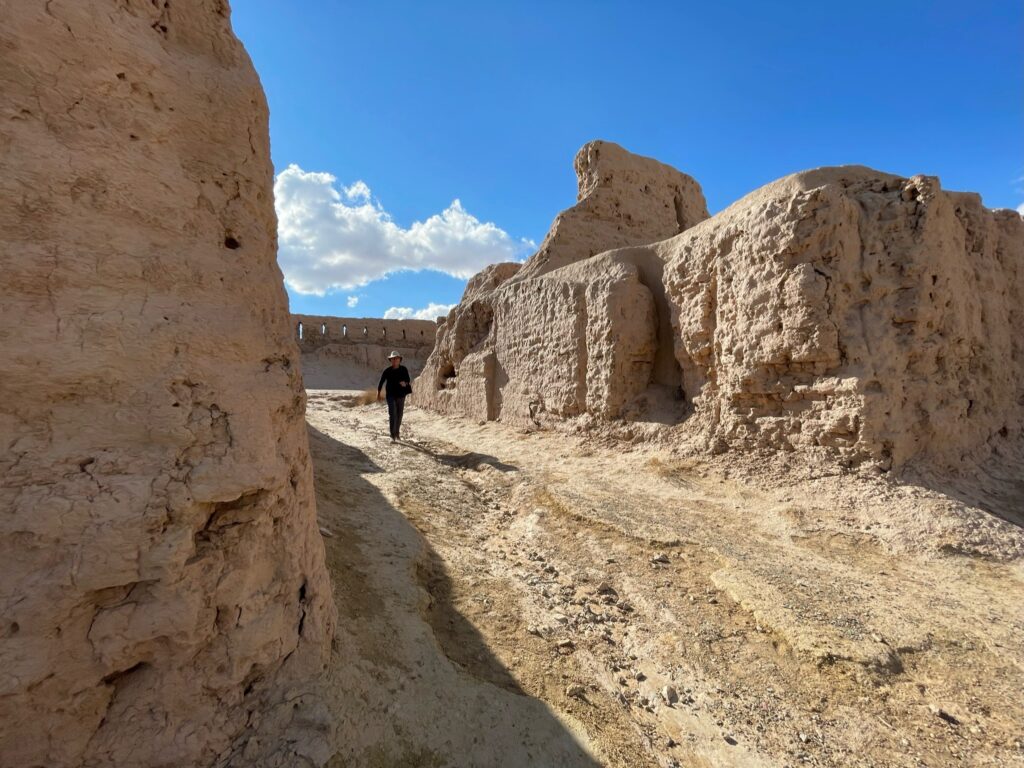
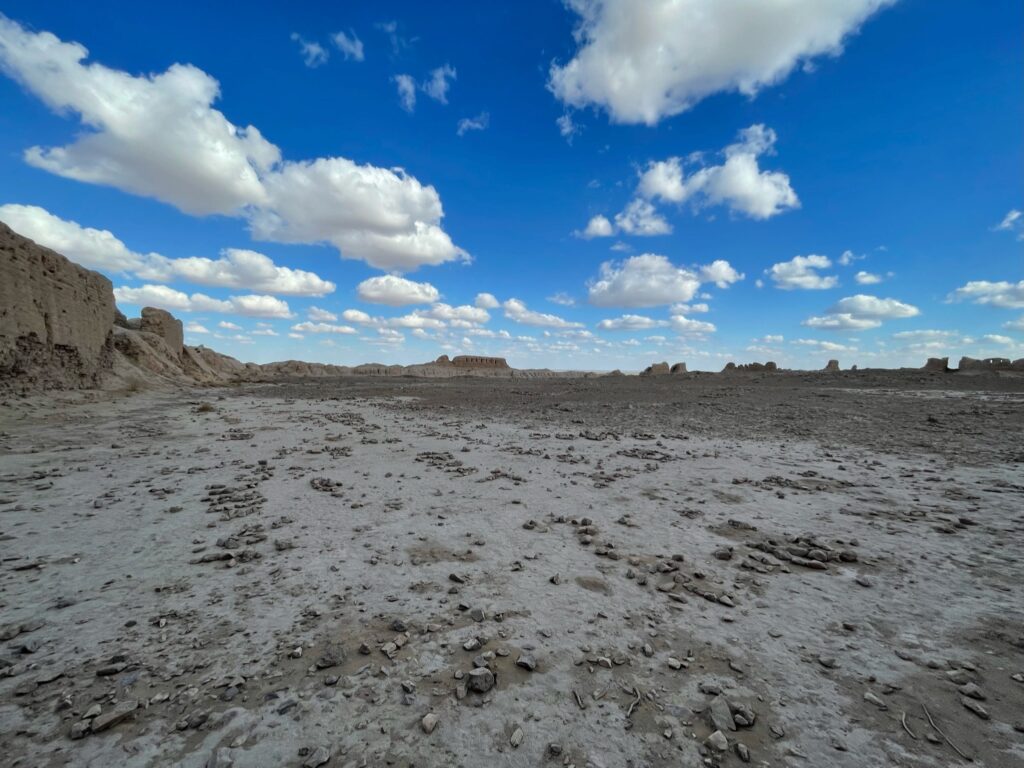
We were then taken to the airport in Urgench for our late night flight to Tashkent, arriving at approximately 1 a.m. on September 21. We were transferred in the late morning to the Tashkent Airport for our flight to Almaty, Kazakhstan for the next chapter in our journey.
Almaty, Kazakhstan
We were met at the Almaty airport by our guide, Alma, and our driver, Davlet. After checking in and cleaning up, we walked to the Navat Restaurant near our Rixos hotel.
As in Uzbekistan, more food was ordered than we could possibly eat.
First, a little bit about Kazakhstan:
The world’s ninth-biggest country is the most economically advanced of the ‘Stans’, thanks to its abundant reserves of oil and most other valuable minerals. This means generally better standards of accommodation, restaurants and transport than elsewhere in Central Asia. The biggest city, Almaty, is almost reminiscent of Europe with its leafy avenues, glossy shopping centers and hedonistic nightlife.
On September 22, I was under the weather and unable to participate in the tour. The remainder of the group, however, took in the following sites:
- Green Bazaar. This clean, organized, and colorful bazaar provides a broad array of tastes and smells from Asia. There are delineated sections for meats, bread, spices, herbs, vegetables, nuts, dried fruits, and more. The lamb heads and horse meat sections are a must-see.
- Central State Museum. Almaty’s best museum takes you through Kazakhstan’s history from Bronze Age burials and nomadic culture to WWII sacrifices, telecommunications and the transfer of the capital to Astana, with many beautiful artefacts on display. A large replica of the Golden Man (a national symbol of Kazakhstan; a 3rd- or 4th-century warrior whose gold-clad remains were uncovered in 1969) stands in the entrance hall. The museum also includes a traditional yurt showing the lodging used by the nomads in the area.
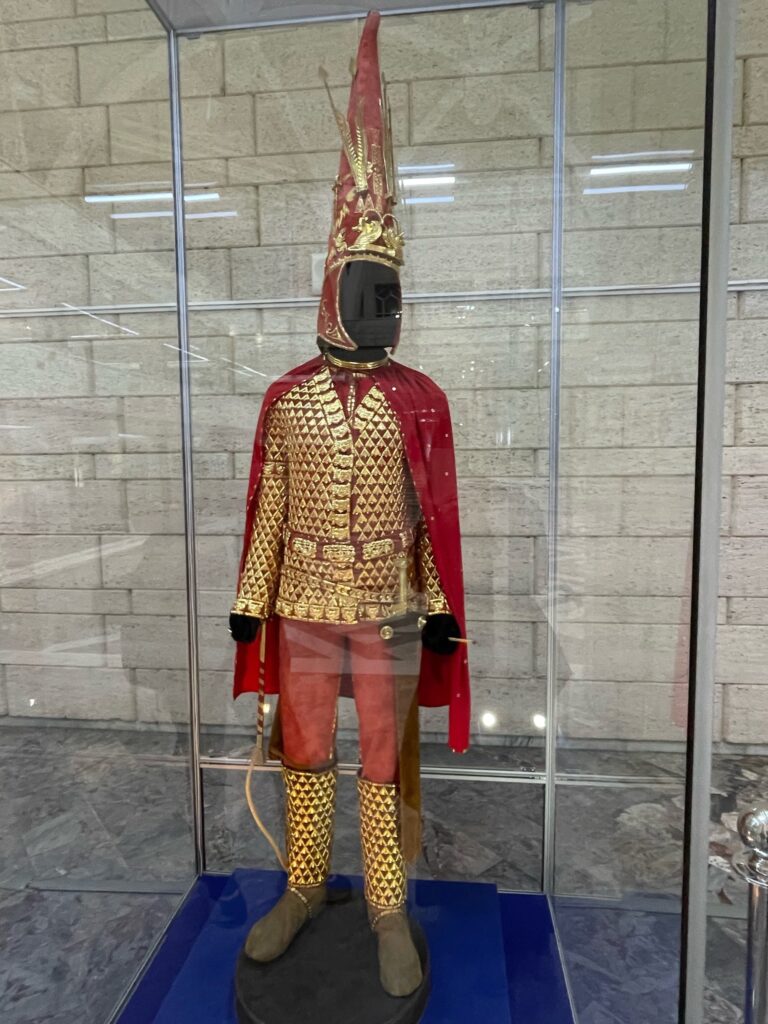
- Kök-Töbe Hill. This 1100 meter hill on the city’s south edge is crowned by a 372 meter-high TV tower visible from far and wide, and affords great views over the city and the mountains. Accessed by a cable car, the top of the hill provides an assortment of attractions, including a ropes course, a small zoo containing some beautiful birds, and an amusement park.
The adventurers then had dinner at Tyubetegika, a highly-rated restaurant known for its local cuisine. Thankfully, they brought some food back to the hotel so I could enjoy a meal as well.
On September 23, we began by driving south towards the Zailiyskiy Alatau mountains, which form the border between Kazakhstan and Kyrgyzstan. Within the mountain range is the Medeu Skating Rink and ski resort, which offers a great location to view the mountains, enjoy a scenic vista over the city of Almaty, and enjoy a cup of coffee, tea or hot chocolate. After riding the gondolas to the top of the ski resort, wandering around to take pictures, and playing in the snow, we returned to our vehicle and the city.
After a lunch of Dolmades and a sausage pita, we headed to Panfilov Park, named in honor of Kazakh soldiers who perished in various wars during the 20th century, including in World War II when they fought to defend Moscow. The park also holds the Ascension Cathedral, a beautiful Russian Orthodox Church made completely of wood and without nails.
We also visited the Museum of Folk Musical Instruments, which contained an impressive of historical instruments including mouth harps, violins, traditional Kazakh instruments such as wooden harps and horns, bagpipes, the lute-like two-stringed dombra and the viola-like kobyz. We next visited the Independence Monument, a stone column topped with a replica Golden Man standing on a winged snow leopard. Around its base are statues of a Kazakh family; behind is a semicircular wall of low-relief bronze sculptures depicting scenes from Kazakhstan’s history, from Golden Man times at the left end to President Nazarbayev at the right.
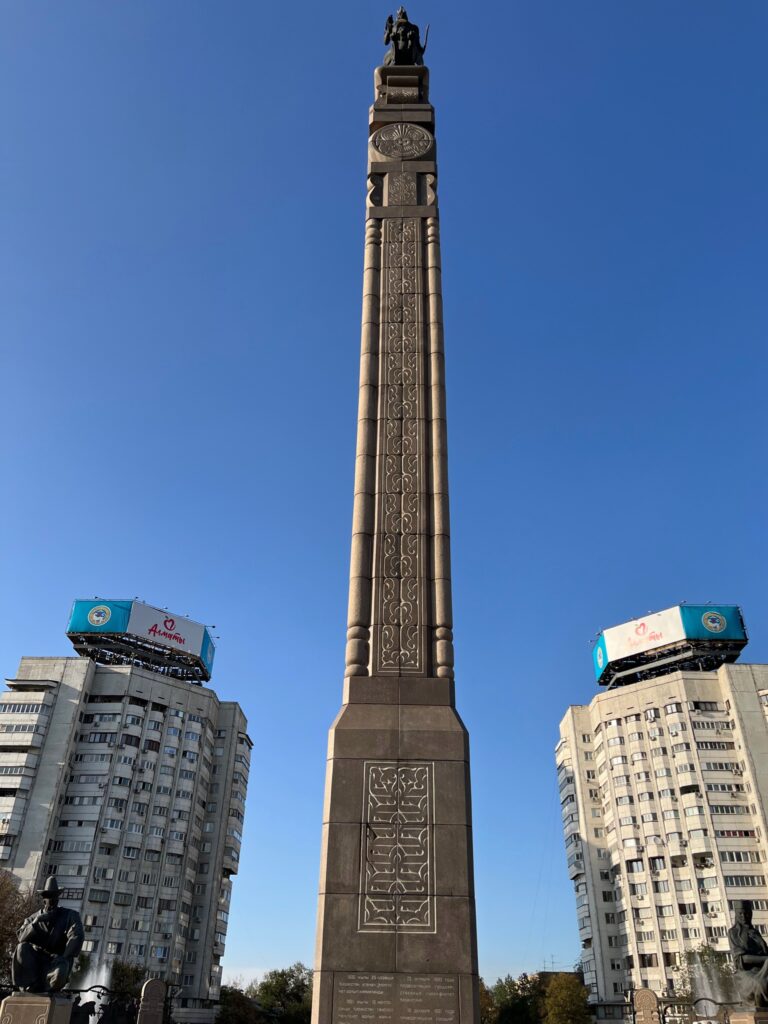
On September 24, we enjoyed a small breakfast at the hotel and began driving from Almaty to Bishkek, Kyrgyzstan. This involved taking our luggage and walking through passport control on both the Kazakhstan and Kyrgyzstan sides of the border, as well as Kyrgyzstan customs. In the meantime, our driver had to take the vehicle through the same process. We met up on the Kyrgyzstan side of the border and made our way to the city. We began our day’s tour with a stop at Victory Square, which features a dome-like structure with only three supports, meant to symbolize the supports of yurt. The structure sits above an eternal flame commemorating the 40th anniversary of the end of WWII.
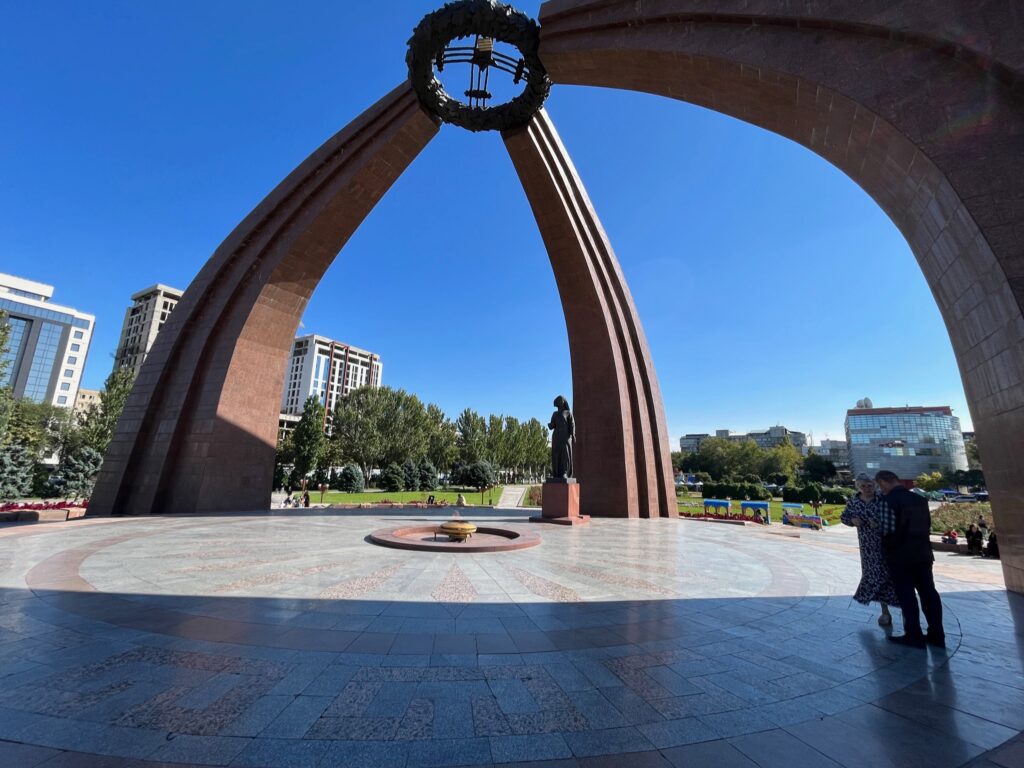
We then proceeded to Ala Too Square, which includes a triumphant statue of Айкол Манас (Mighty Manas). Bishkek’s nominal center has a photogenic quality – especially when slowly goose-stepping soldiers change the guard beside the soaring national flagpole.
Behind the guard’s station is the newly renovated National Historical Museum, which contains literally thousands of exhibits about the cultural heritage of the Kyrgyz people, whose sculptures and objects date from antiquity to the end of the 20th century.
Behind the museum is Bishkek’s statue of Lenin, recently moved from prominent Ala Too Square to its more remote, current location. We then checked into our hotel, had dinner, and retired for the night.
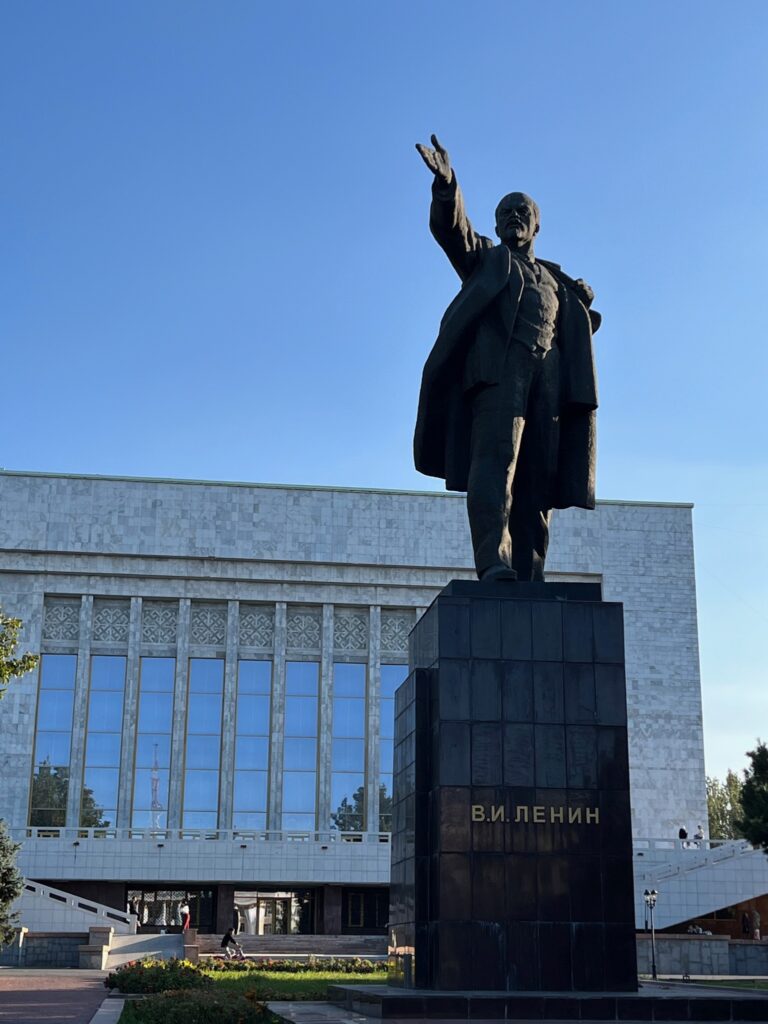
This morning, September 25, we packed up and headed towards Issyk Kul, the world’s second largest alpine lake (the largest is Lake Titicaca located in South America). The lake is approximately 108 miles long, 36 miles wide, and around 2,100 feet deep at its deepest point. Our destination, the Karven Four Seasons Resort, is a popular summer destination for both Kazakh and Russian vacationers. On the way, however, we first stopped at a UNESCO Heritage Site which includes the ruins of ancient Balasagun City, a medieval settlement founded in the early tenth century. The most noticeable structure at this site is the Burana Tower, a medieval minaret made of fired brick. It is considered to be the earliest surviving minaret in Central Asia. Followers of Islam, Syro-Nestorianism, and Buddhism lived in Balasagun, which was an important stop on the Silk Roads and a place of intercultural exchange.
After returning to our vehicle, we stopped for lunch at a small restaurant along the road paralleling Issyk Kul. We then continued on to our resort, checked in, and drove 15 – 20 minutes for a scheduled horse ride by the lake. While Paula decided not to embark on the ride, Davlet and I mounted our trusty steeds and followed the owner of the horses for a 1-hour ride. My horse, Erika, was a 9-year old filly, while Davlet’s was a 23-year old Nomad Games champion. Kyrgyzstan, by the way, is the resounding Nomad Games champion, a designation of which the residents are very proud.
We then returned to the resort and went for a walk. While simple by US standards, the resort is beautifully landscaped, has a beautiful waterfront, and a spectacular view of the mountains on the other side of the lake. After our walk we met our guide and driver for dinner at the resort restaurant. We were the only people in the restaurant, which supported our suspicion that we were two of very few guests at the resort. I suspect that was a consequence of the timing of our trip.
Today, September 26, we checked out of our resort and drove east until we reached the town of Grigoryevka, at which point we turned north into a national park (see map).
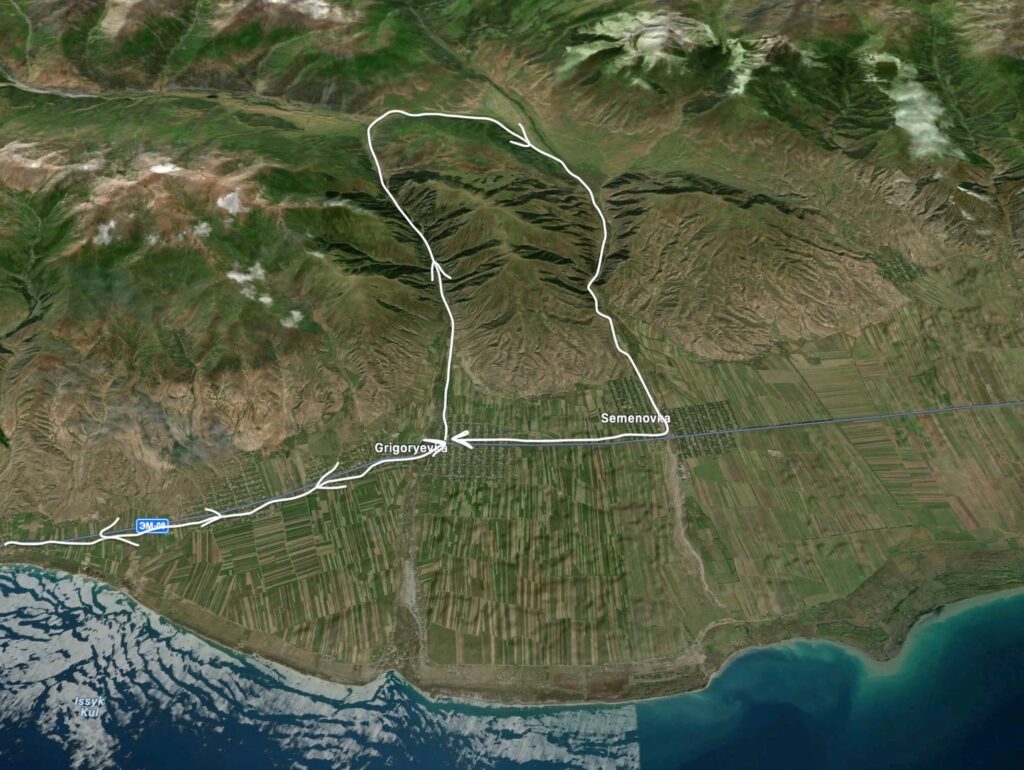
We drove through the beautiful gorge until it opened up into a pasture-like area, at which point we turned east.
After a few miles, we stopped for a demonstration of Golden Eagle hunting by a local hunter and two of his eagles. The female eagles are captured when they are young and trained for two years. For purposes of our demonstration, the eagle was taken a hundred yards away by one handler while the other carried a live rabbit to a site in an open area. Upon a signal, the eagle was released and the 2nd handler walked away from the rabbit. Within minutes, the eagle was on the rabbit and killing it through suffocation. Typically, the hunter would take the prey from the eagle, but today the eagle was allowed to enjoy the fruits of her labor.
We the returned to our vehicle and drove back to the highway while observing yaks, cows, donkeys, horses, goats, and sheep along the way.
After lunch, we headed back to Bishkek. Upon arrival in the city, we headed to the Osh Bazaar, the most central bazaar in Bishkek, to do some shopping for souvenirs.
We then returned to our hotel, cleaned up, and went to dinner with Alma and Davlet at Pishpek restaurant. In addition to enjoying a wonderful last dinner in Central Asia, Alma had arranged for a birthday cake for Paula to celebrate her birthday (the reason for the trip, after all). We had a fun evening celebrating time with our new friends, and returned to the hotel for our last night in Kyrgyzstan.
Today, September 27, we left early for the airport and bade goodbye to Davlet and
Alma. Our flights to Istanbul was uneventful, although we had to literally run through the new, very large airport to get to our connecting flight. The flight to Amsterdam was also uneventful, although our flight from Amsterdam to Minneapolis on September 28 was canceled, resulting an additional day in Amsterdam. In any event, we finally made it home at 8 p.m. on Friday, September 29, after 24 days on the road.
Recommended Books
- “Lonely Planet Central Asia (Travel Guide), Kindle Edition“, by Stephen Lioy, Anna Kaminski, Bradley Mayhew, and Jenny Walker. Thanks to this guide in particular as it helped tremendously with some of the descriptions herein.
- “The Great Game: The Struggle for Empire in Central Asia” by Peter Hopkirk.
- “The Empire of the Steppes: A History of Central Asia” by Rene Grousset.
In addition to the books recommended above, let me also recommend AbeBooks, a website where you can find high quality used books at significantly reduced prices.
Trip Statistics
Number of countries visited: 5
Number of flights: 11
Number of hotels: 9
Time zone difference: 10/11 hours, depending on location.
Other Interesting Observations
- There are many, many different spellings for the names of people and places (e.g., Uleg Bek, Ulegbbek, and Uleg-Bek). While I’ve tried to be consistent throughout this blog, they were times where I chose to leave a variant as it was within a summary from an external source. My apologies for any confusion this may cause.
- The further we moved from urban centers, eastern-style toilets became more prominent.
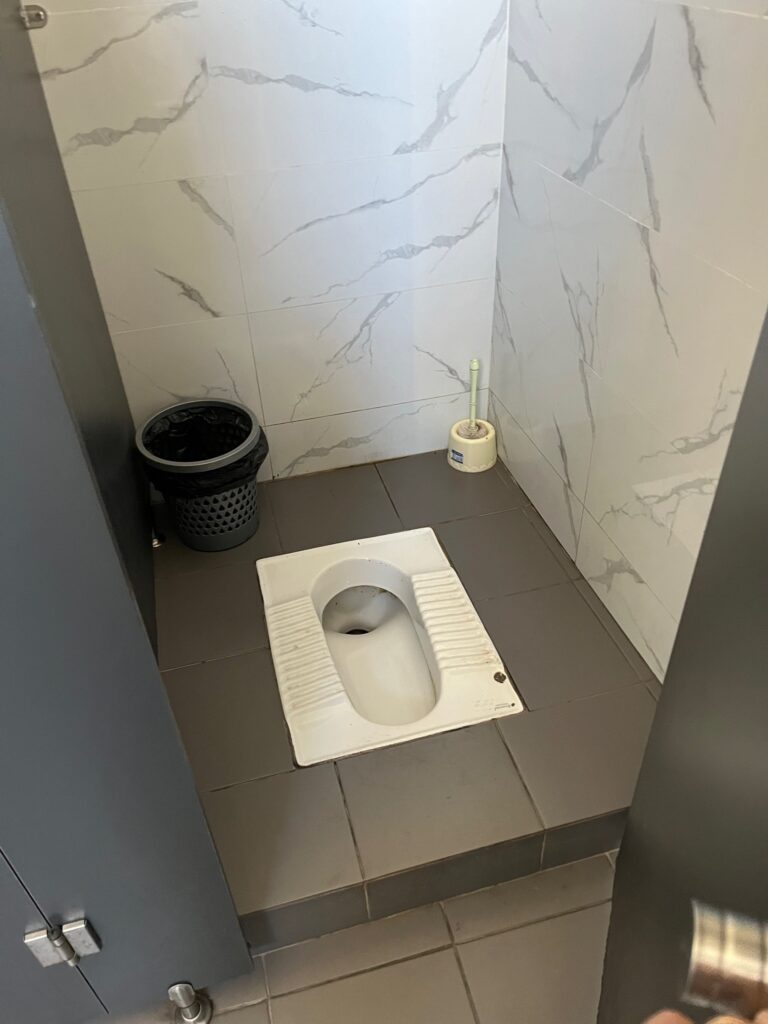
- The vast majority of the population in the Stans are Muslim, although the extent to which the faith is followed varies by location and individual.
- Tea and bread was served at every meal. And, every meal was huge! Ensuring guests are satisfied at meals appears to be a big part of hospitality in Central Asia.
- Bottled water was highly recommended for consumption as the tap water could invoke “Temur’s Revenge” (Gary’s name for traveller’s diarrhea in Central Asia, AKA “Montezuma’s Revenge” in Mexico).
- The traffic in the urban areas was very, very heavy. I shudder to think how much time we spent at stop lights in Tashkent, Samarkand, Almaty, and Bishkek. I would not, under any circumstances, rent a car in any of these cities.
- Despite several warnings about being prepared to be stopped by the police, it never occurred for us, and the “police presence” seemed lighter than we expected.
And, Because We All Like Food….
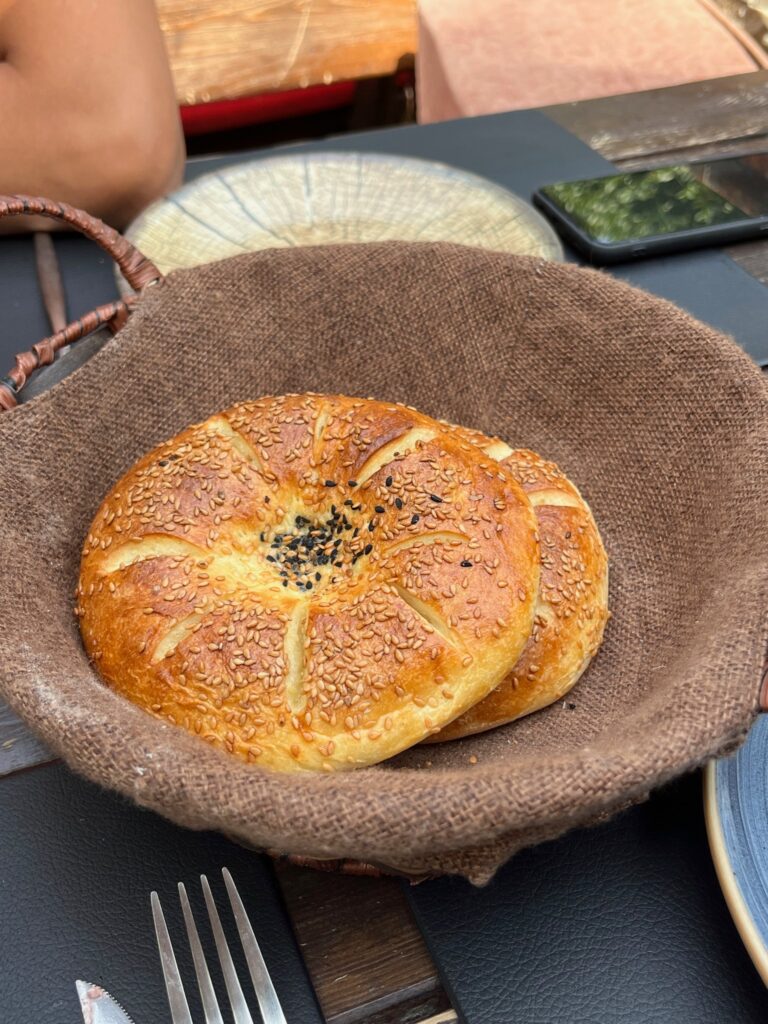
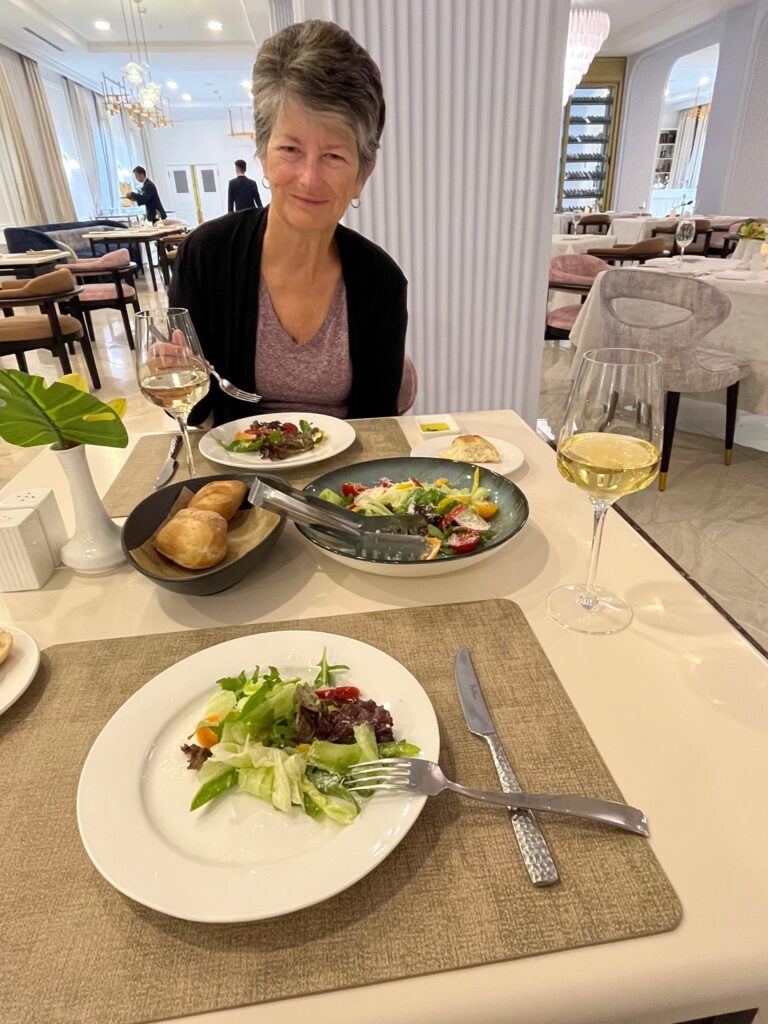
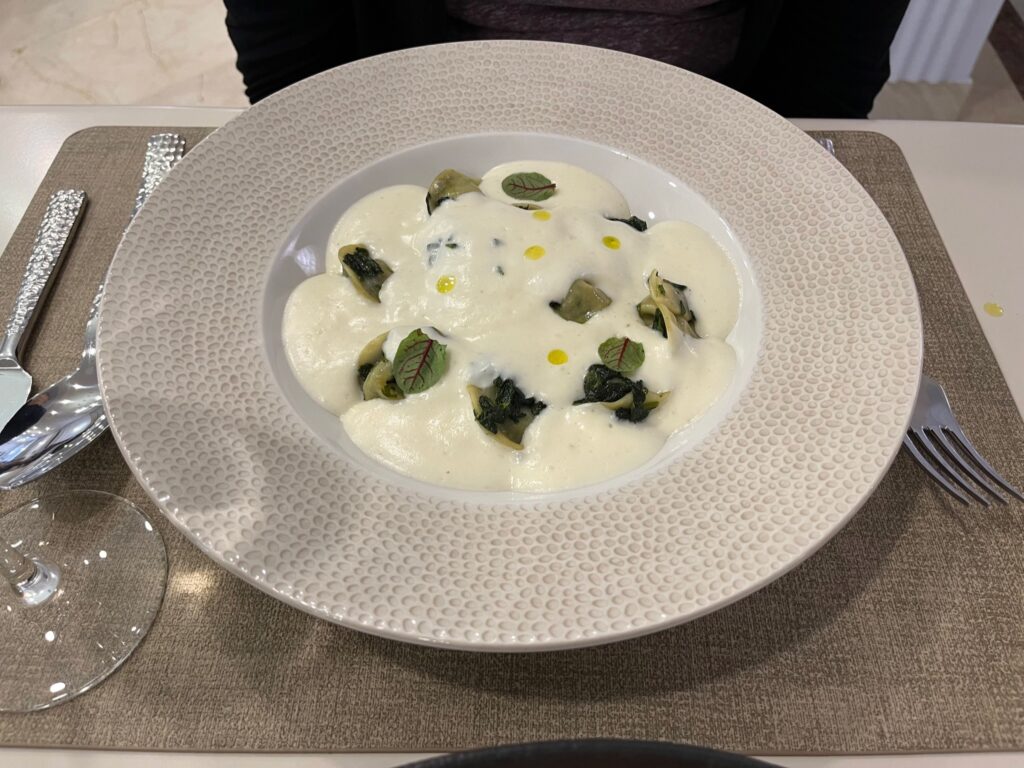
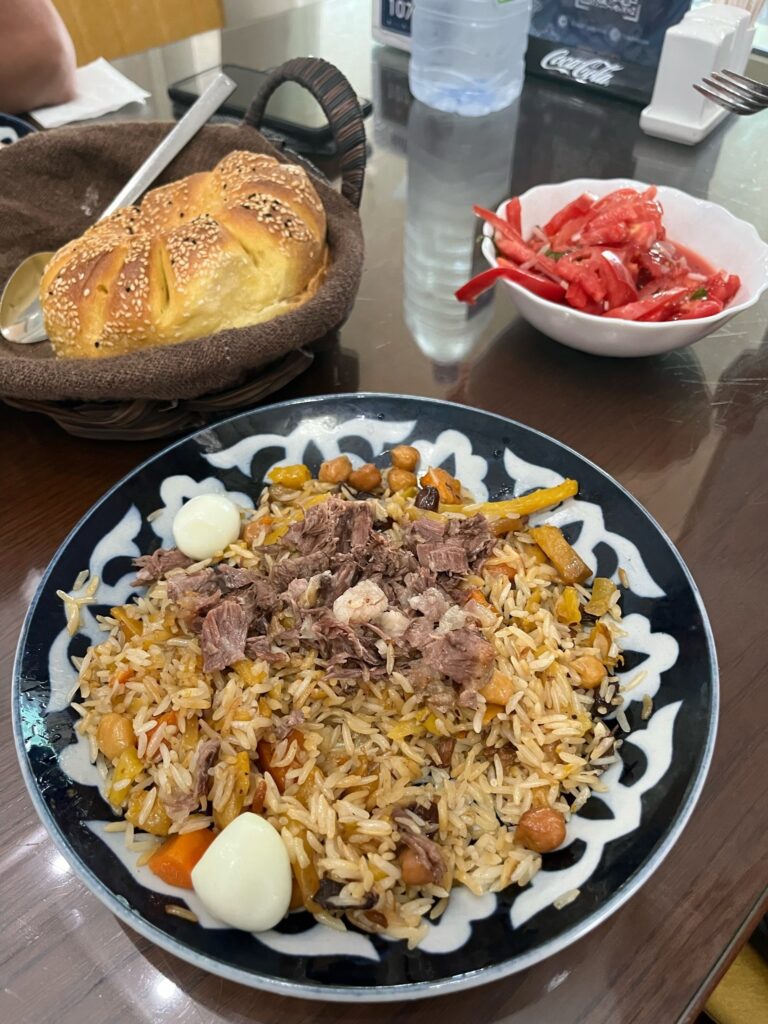
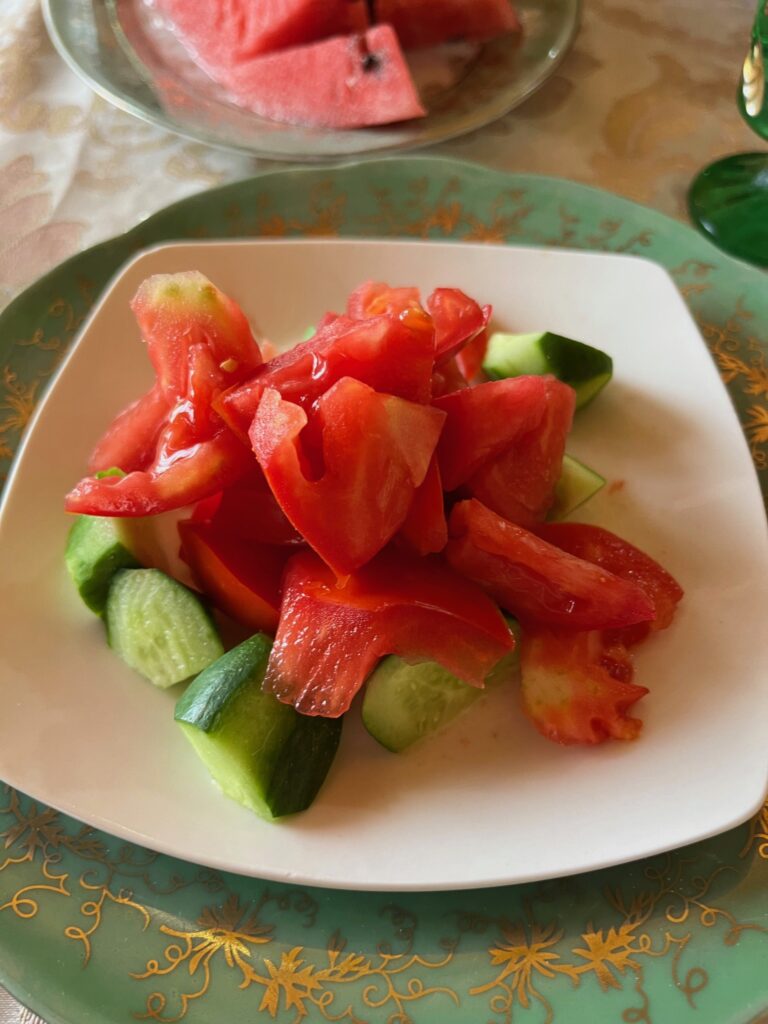
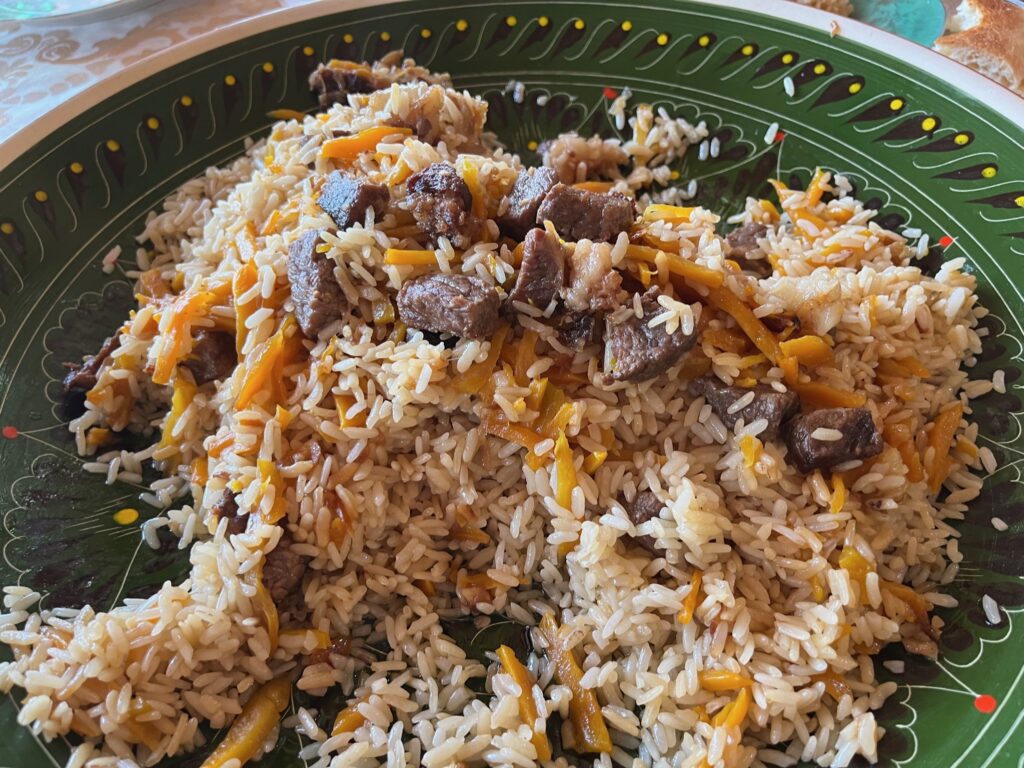
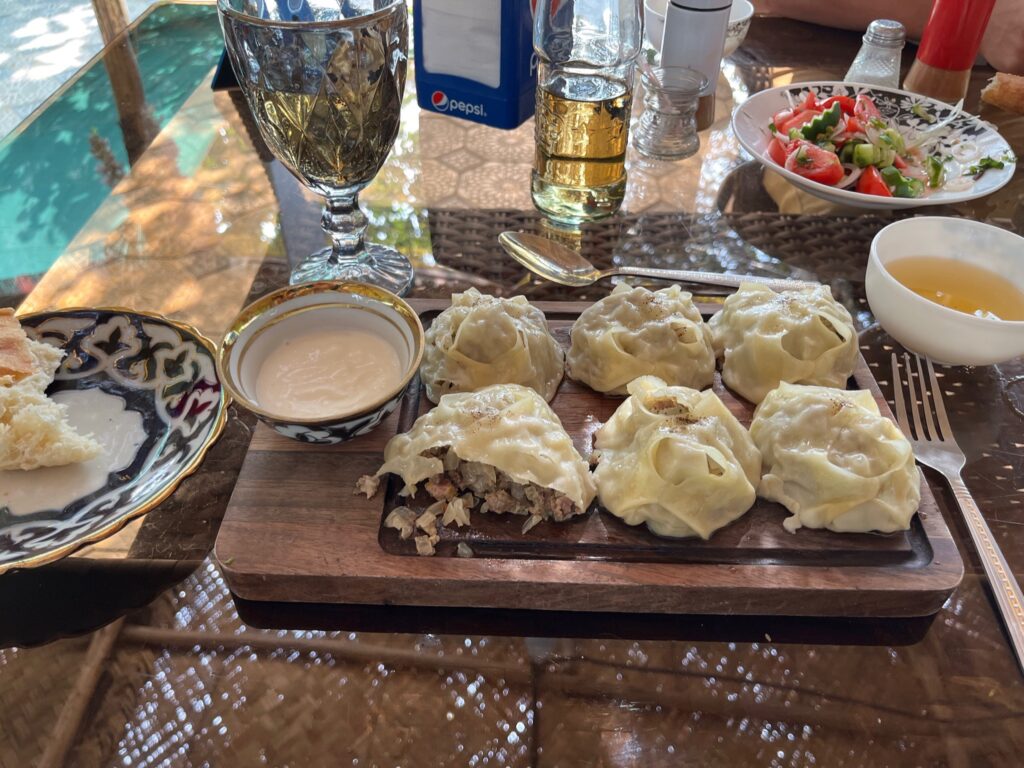
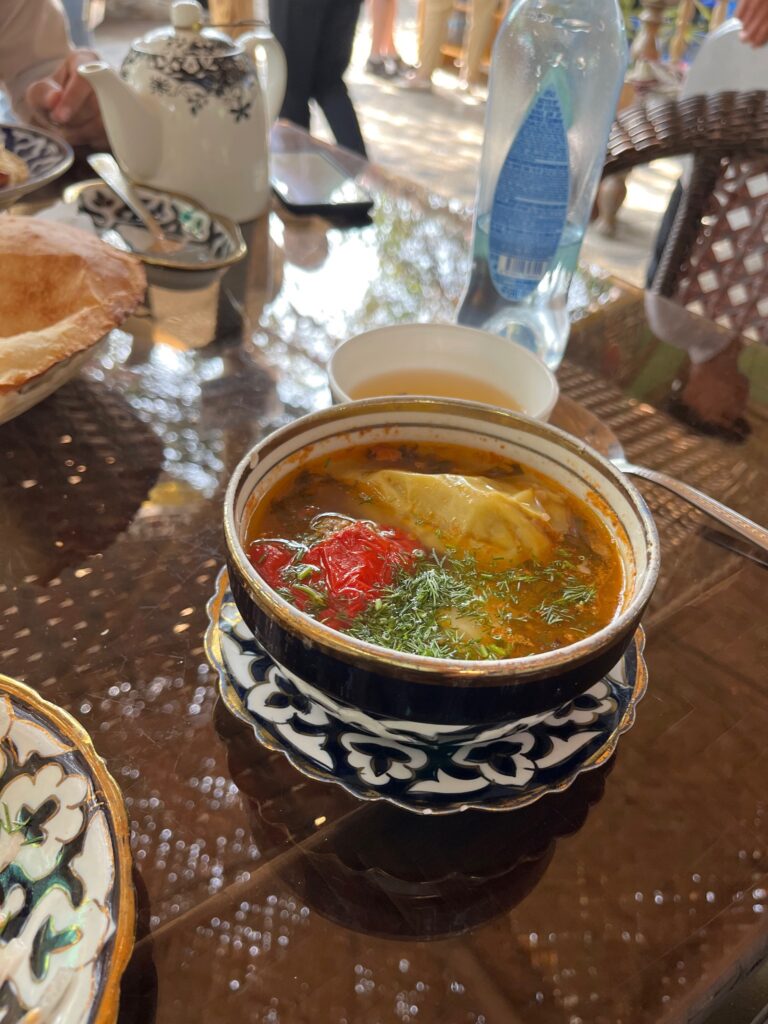
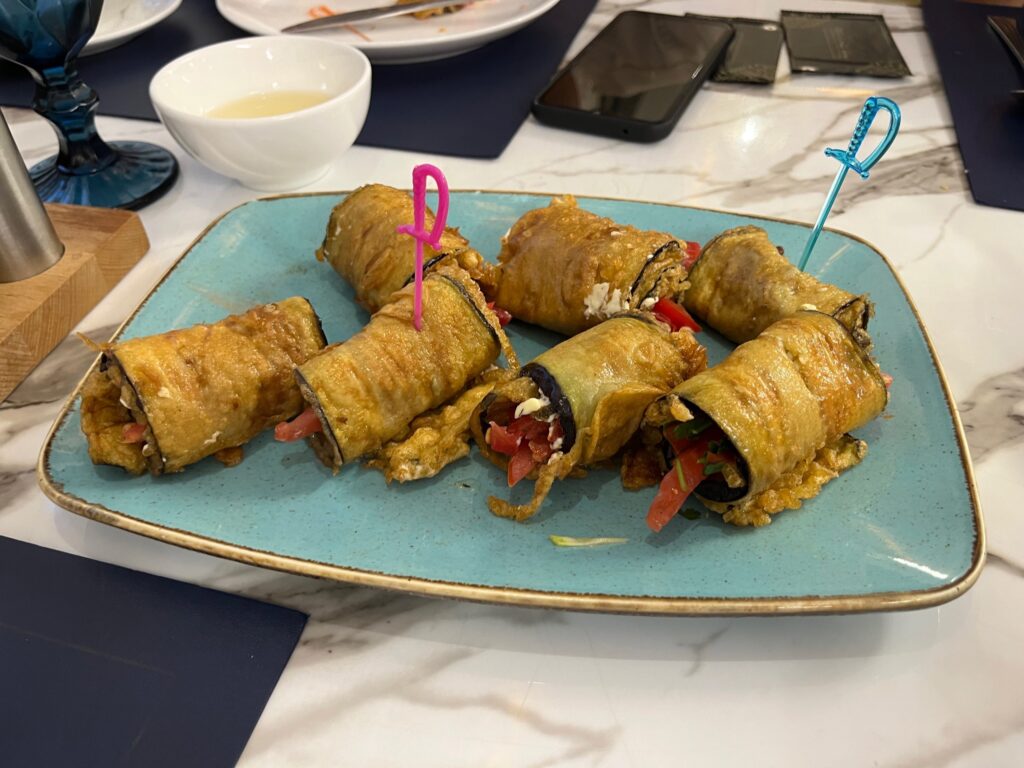
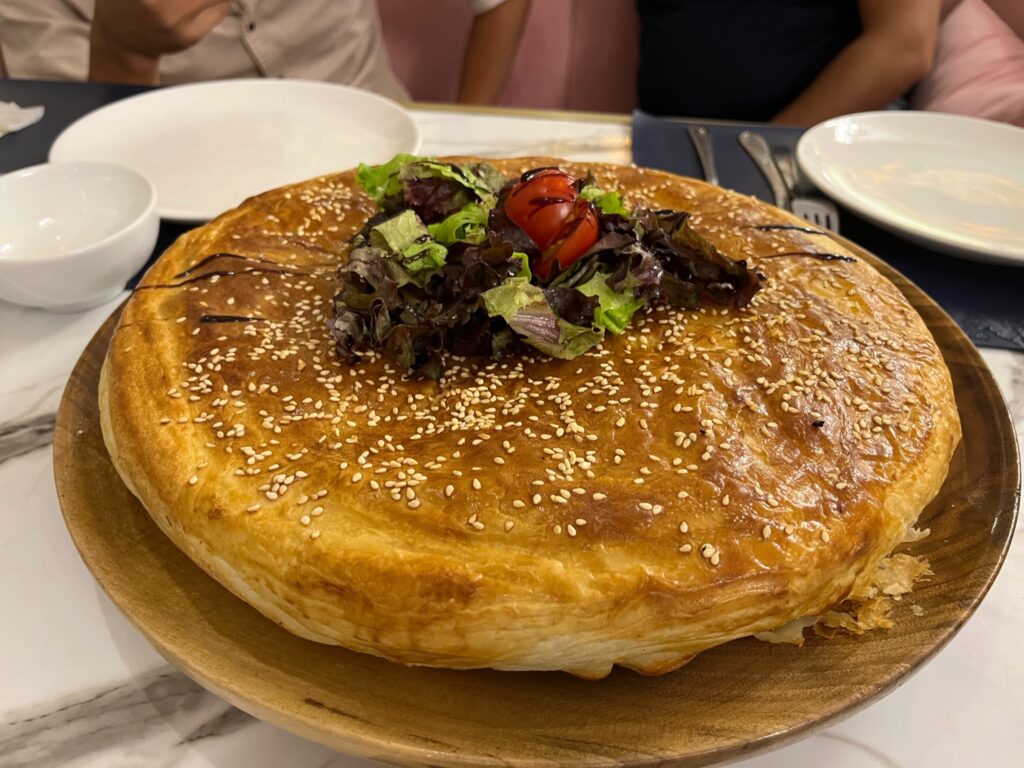
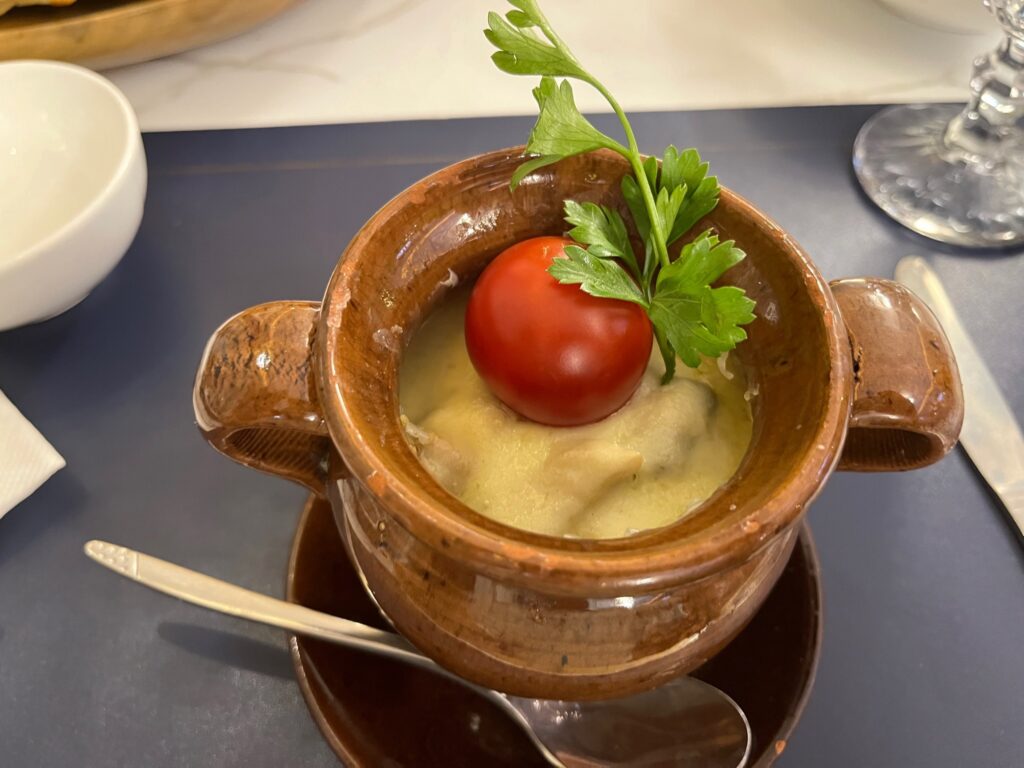

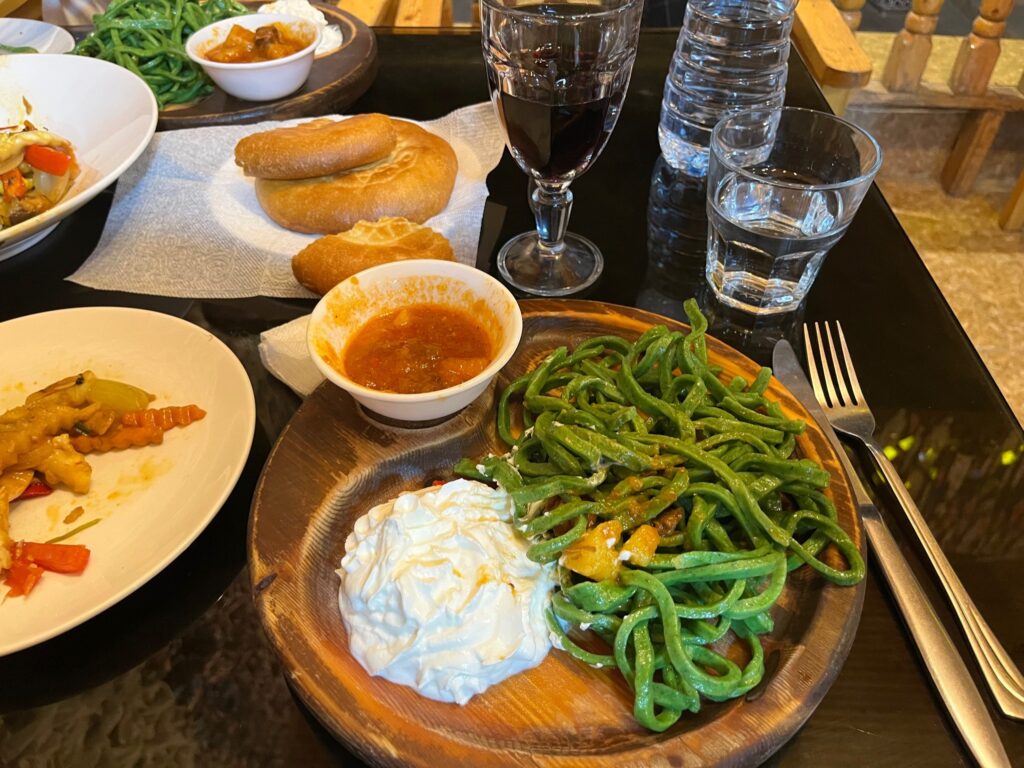

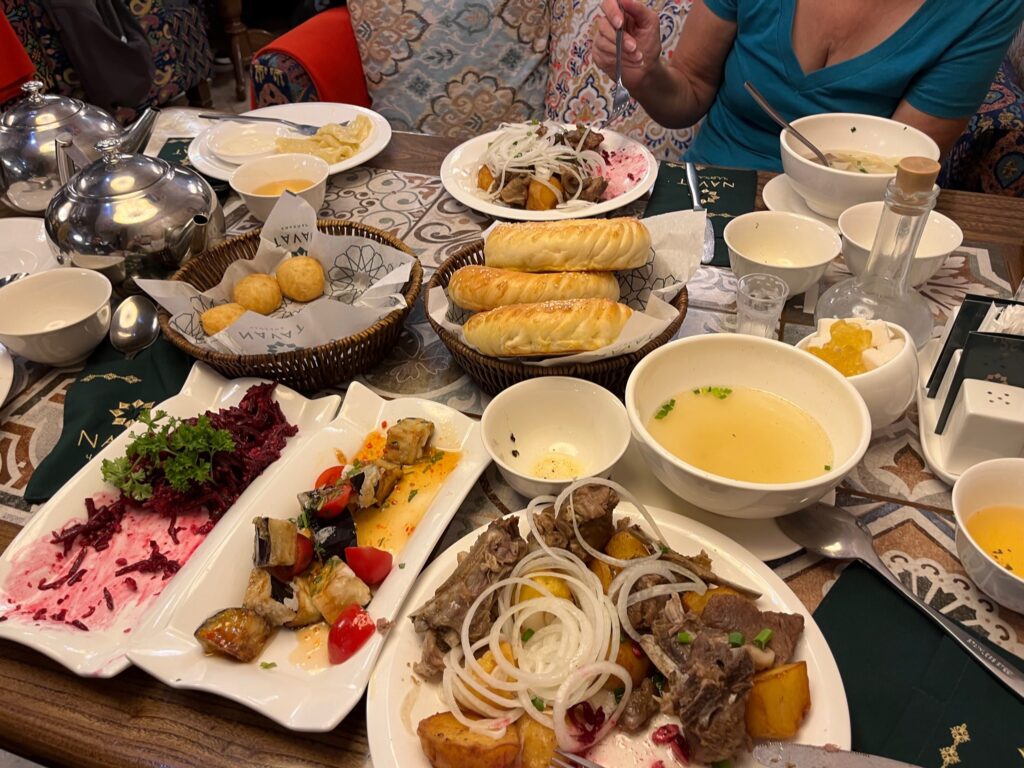
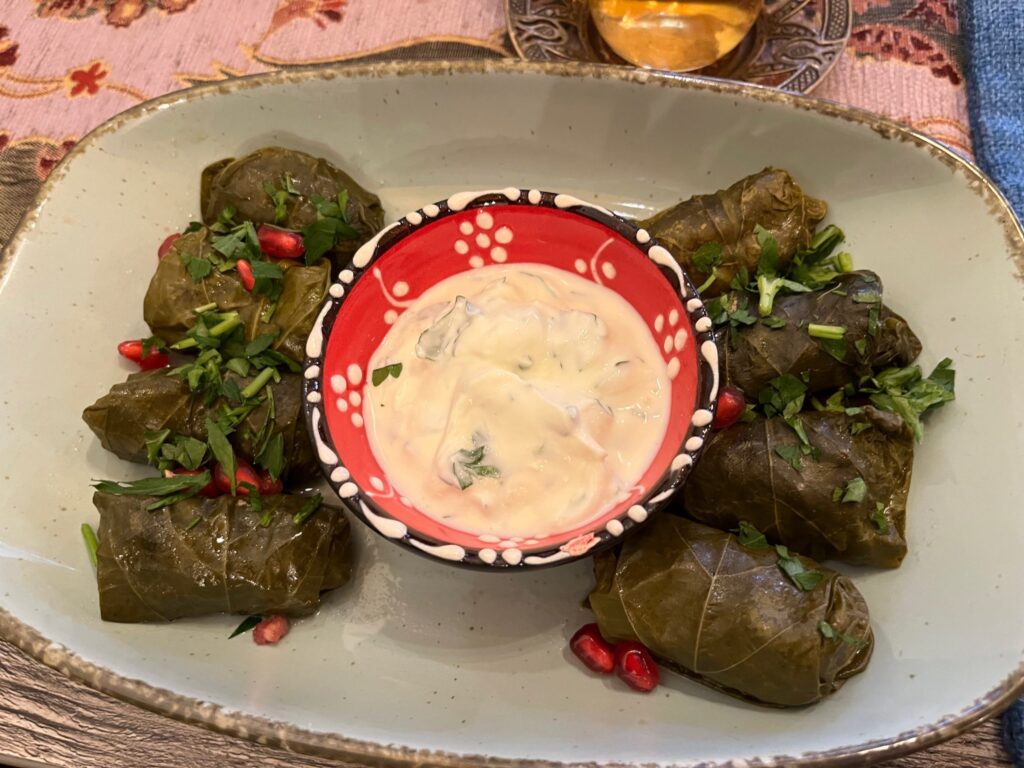
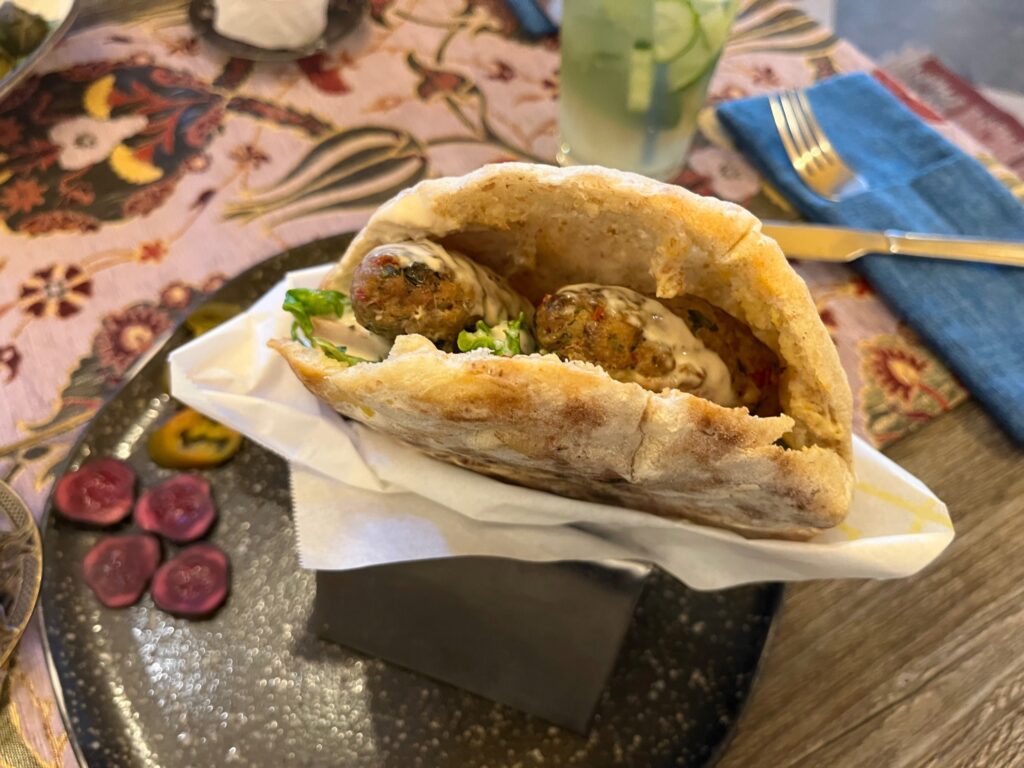
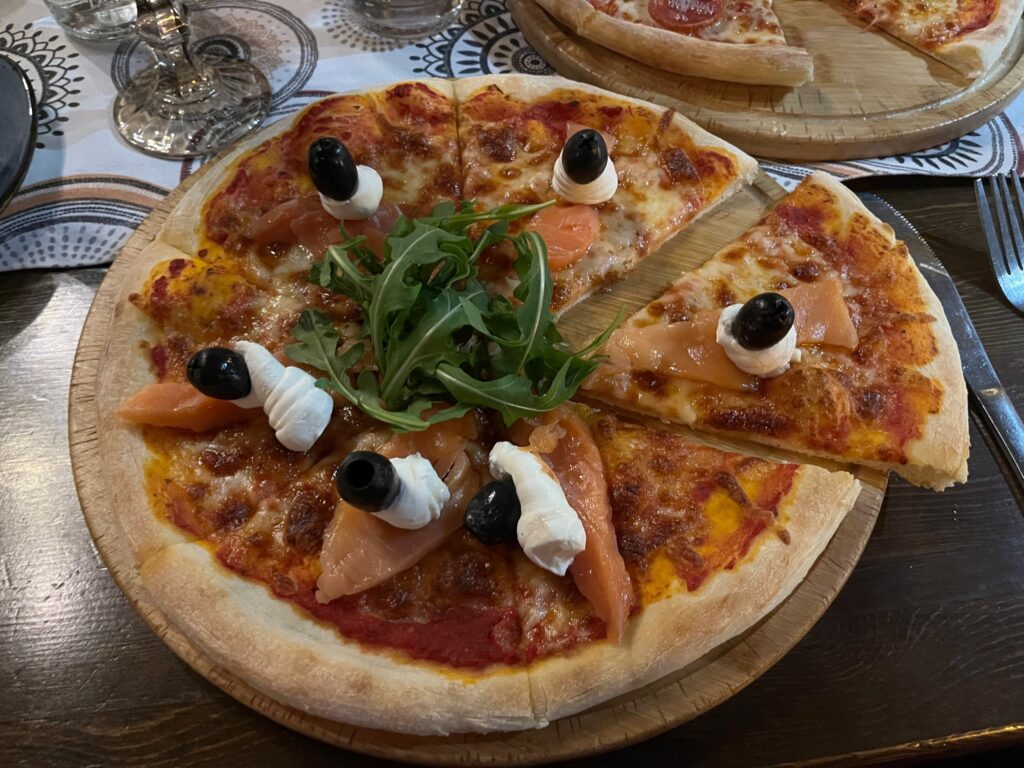
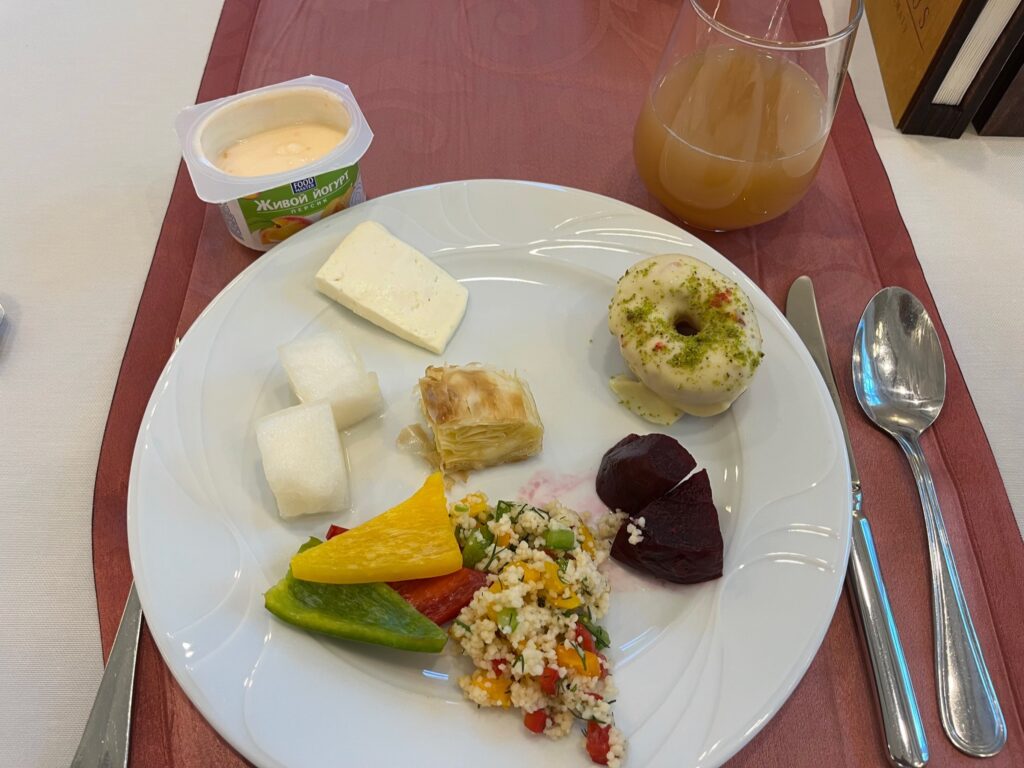
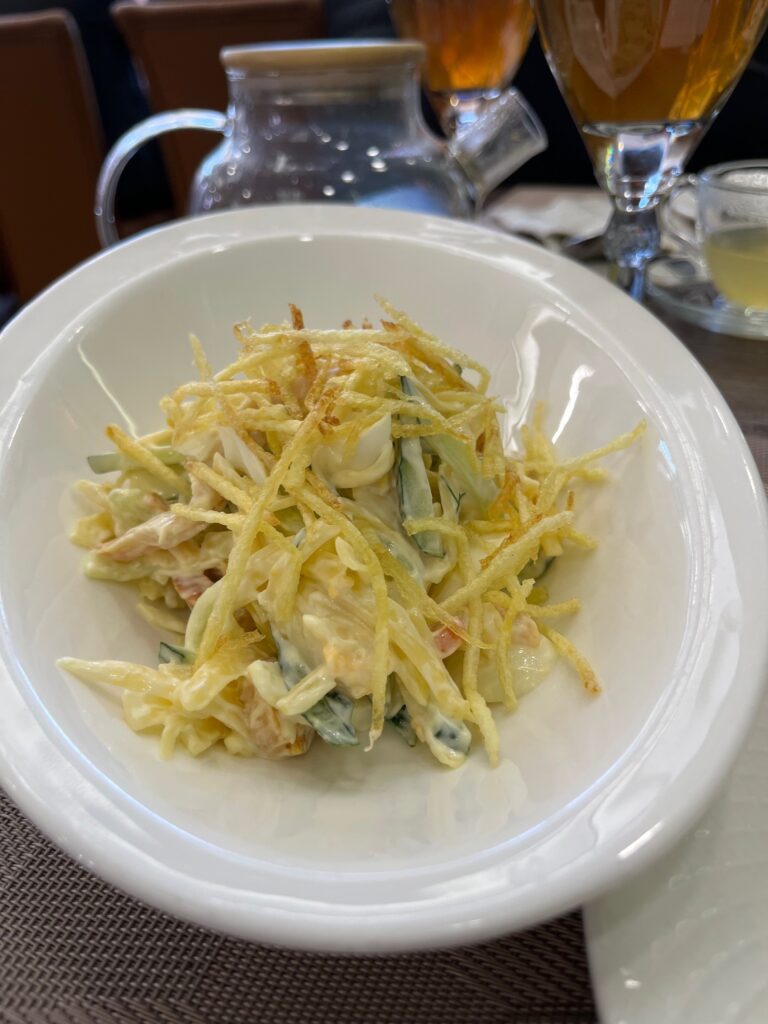
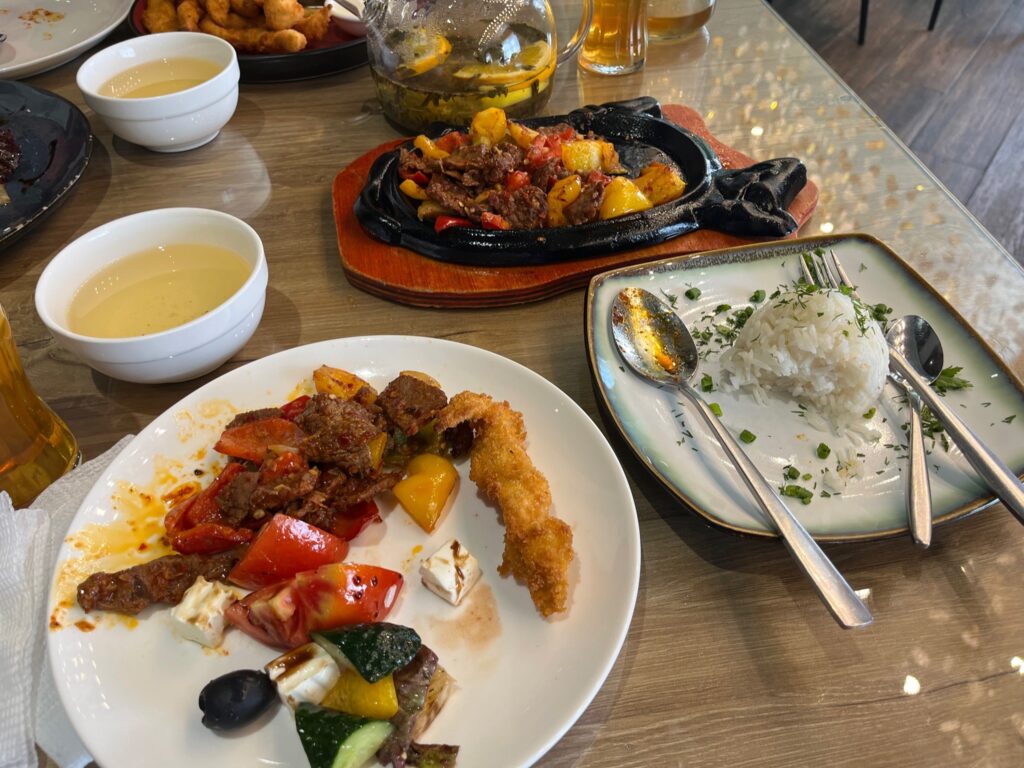
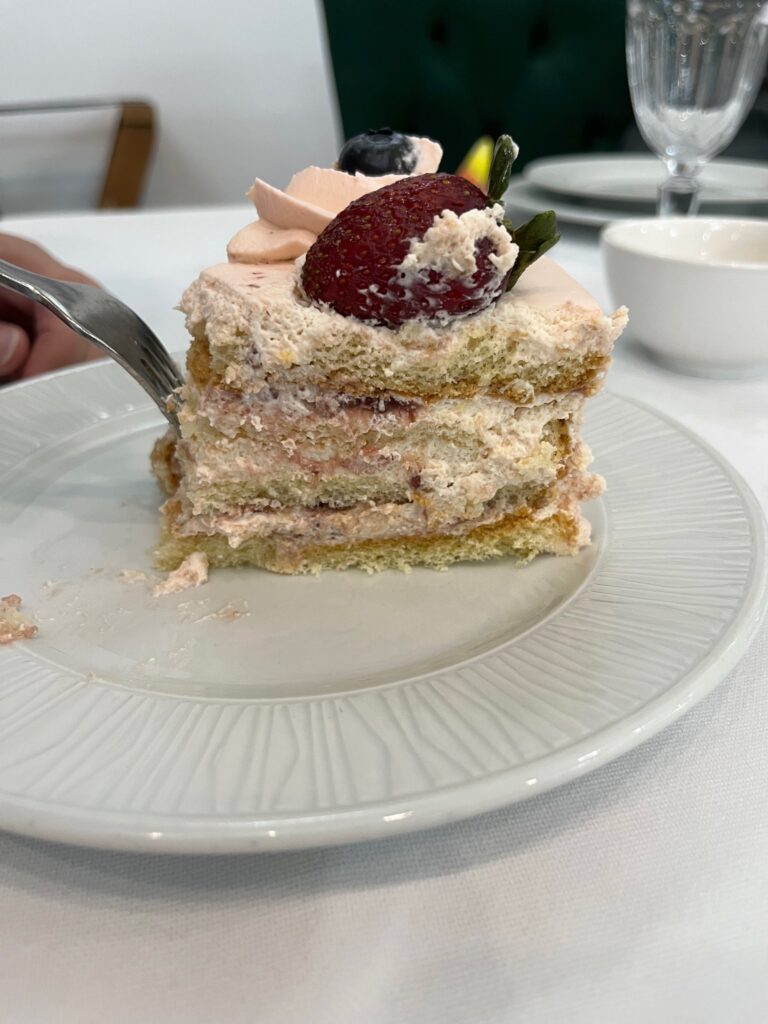
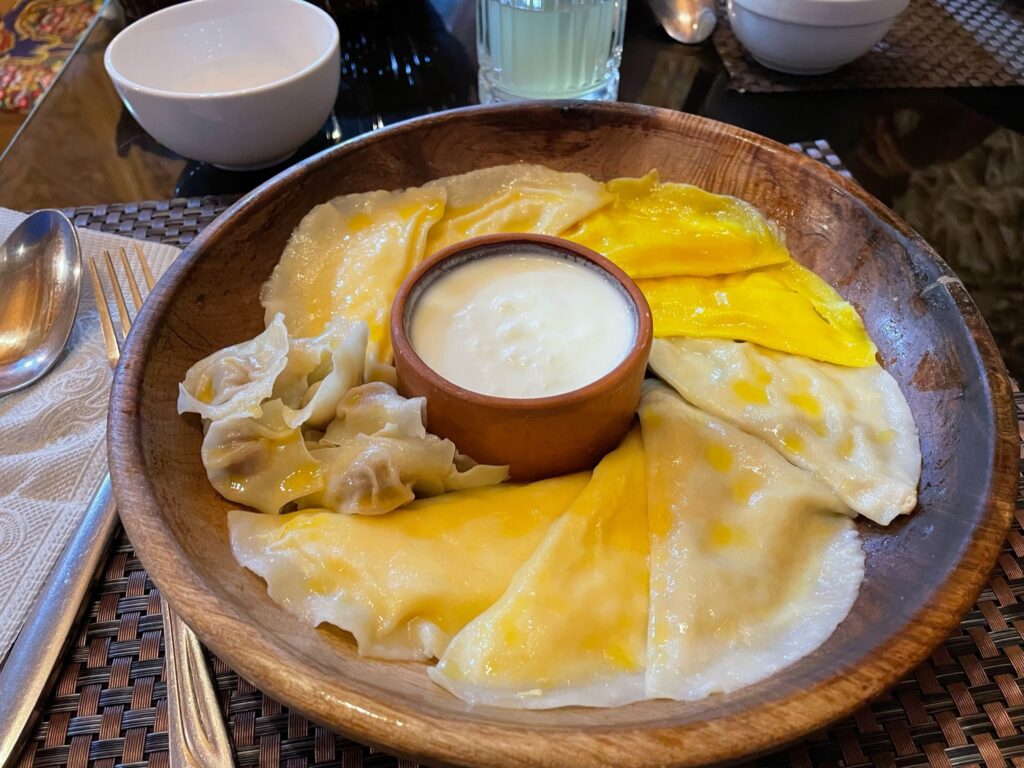
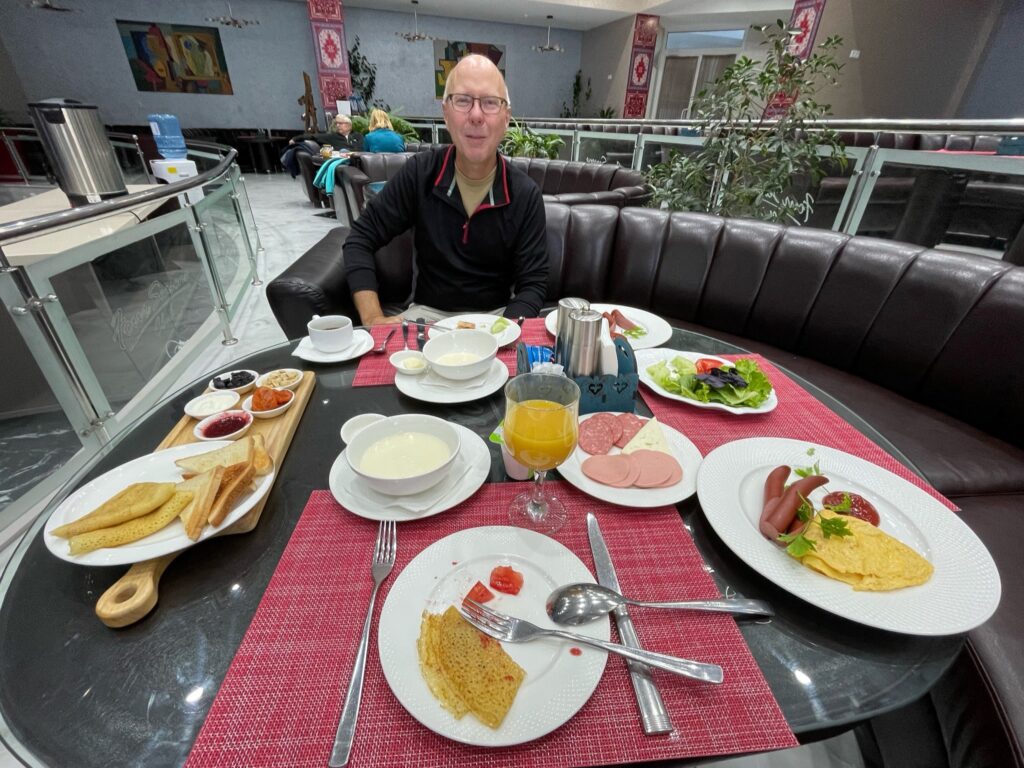
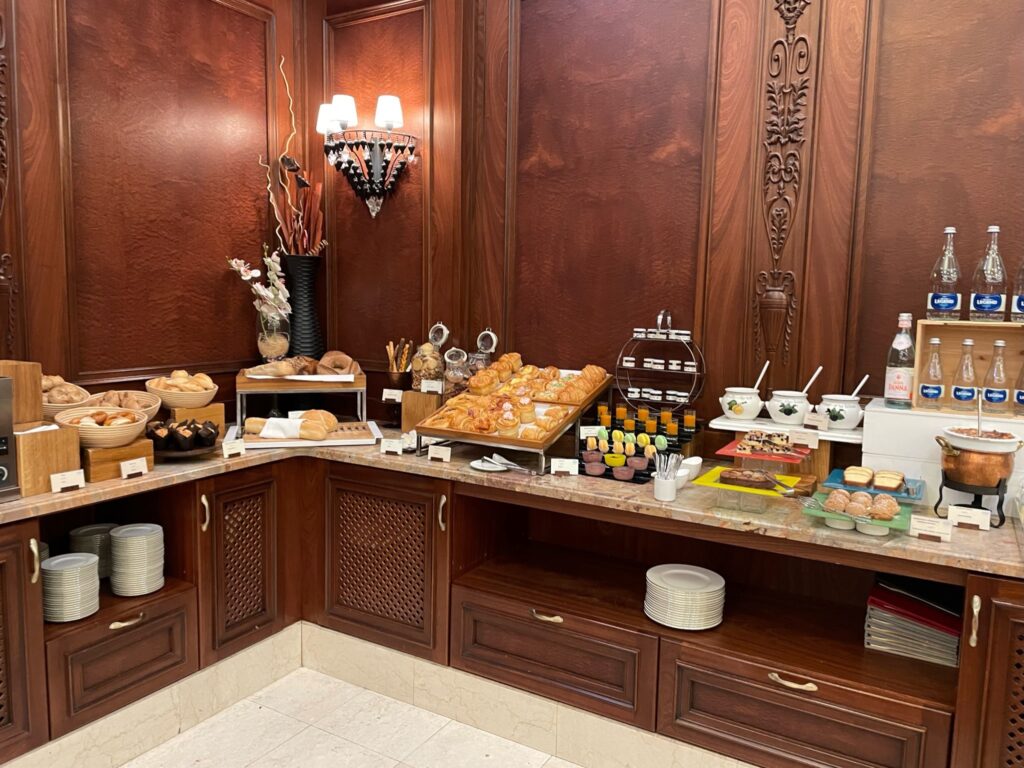

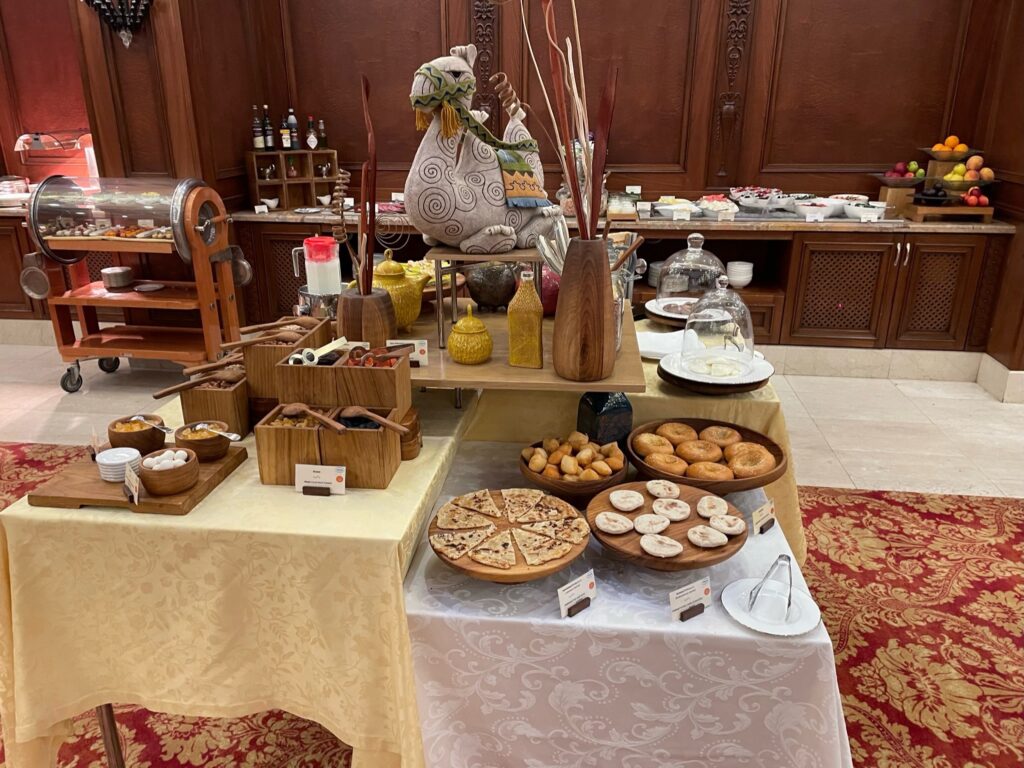
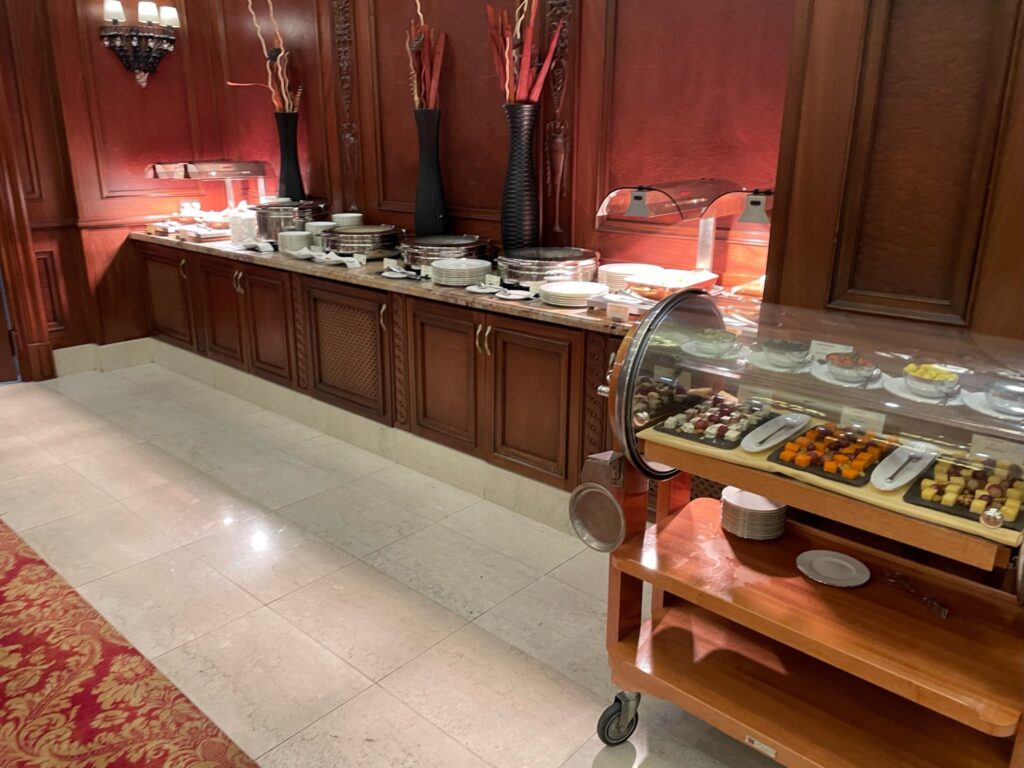
In Closing, My Thanks
My thanks to all the various travel guides and contributors to the multitude of websites that address the various facets of Central Asia. I have borrowed from their research and summaries to make this private blog as interesting as possible through descriptions and historical context. And, thank you for reading this blog. If you’ve made it this far, I am truly impressed by your dedication!
